Why the Tour du Mont Blanc is the ultimate mountain hike

Nov 9, 2023 • 6 min read
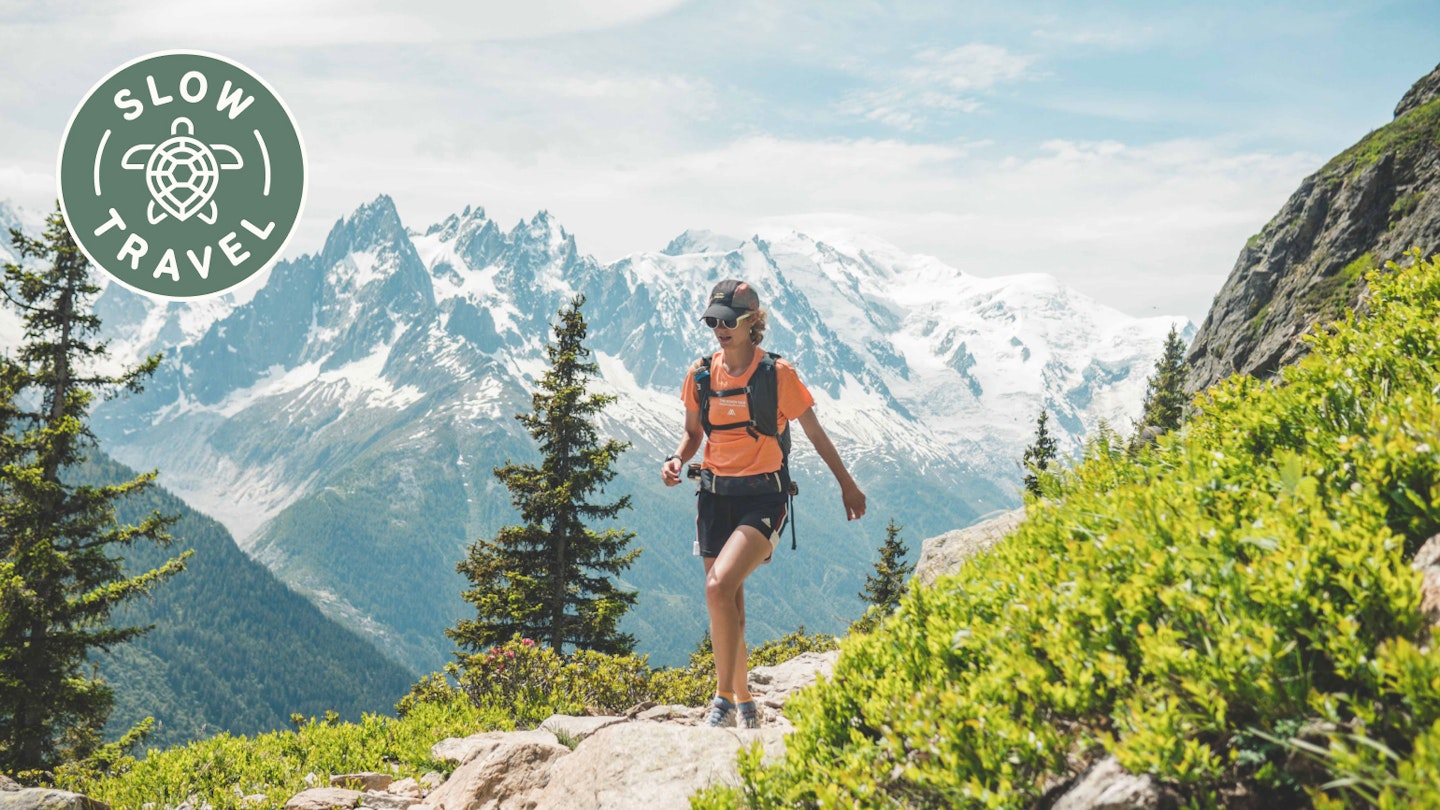
Few multiday mountain hikes rival the Tour du Mont Blanc © Quentin Boehm
If you’ve got one European long-distance hike on your bucket list, it’s probably the Tour du Mont Blanc. It was on mine, too.
Views over sparkling glaciers, Alpine prairies and lots (and lots!) of cheese await anyone who embarks on this border-crossing trek. Circling the largest peak in the Alps , Mont Blanc, the trail covers 170km (105 miles), climbs more than 10,000m (32,800ft) in cumulative altitude, and weaves through three Alpine countries: France , Italy and Switzerland . Typically, the route begins and ends in Les Houches, France, and follows a counterclockwise loop around the mountain range.
Every dream feels far away – until we start to break down what we need to do to achieve it. Here’s what it takes to hike or run the Tour du Mont Blanc.
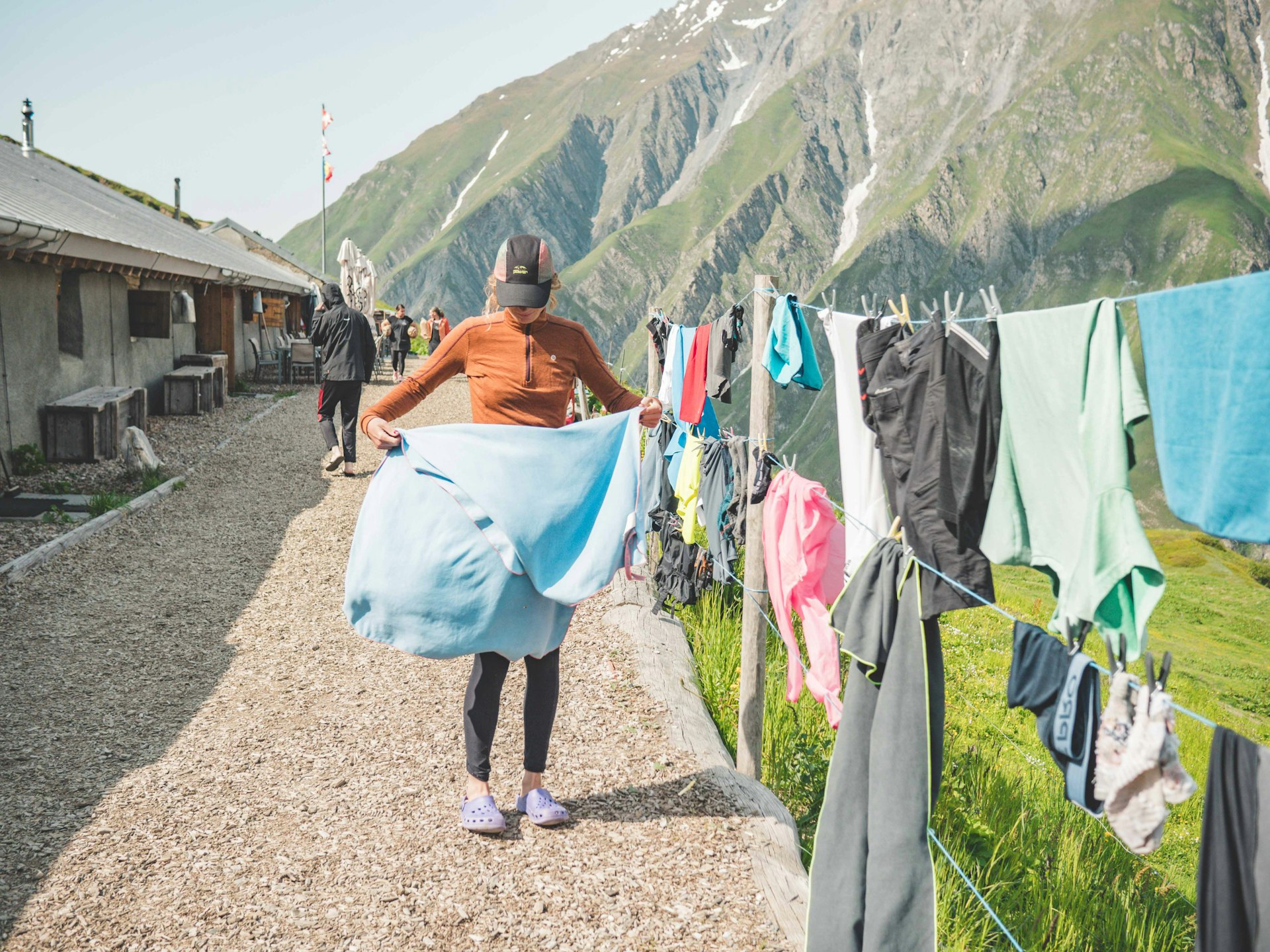

How I prepared for the Tour du Mont Blanc
Don’t laugh at the folks who’ve sawed off the handle of their toothbrush to save on weight. Many of the climbs along the Tour du Mont Blanc are arduous, and every gram really does count.
My first question as I prepared my bag was, Where would I sleep? Opting for camping would make the trek feel really wild, let me spend more time in nature and give a bit more flexibility about where and when I’d arrive each night. On the flip side, this would mean my home would be on my back (like a turtle), and heavy enough to reduce my walking speed significantly.
The other option was to sleep in refuges , or mountain huts. Refuges can range from rows of bunk beds to rooms that are almost luxurious – yet what they all offer in common is a dry place, sheltered from the elements. Plus (with rare exceptions), the dinners are delicious. Staying in refuges means no need to pack any camping or cooking gear, freeing up a lot of room in your backpack.
Each refuge has its own culture and way of working, says Céline Mila, the gardienne (caretaker) of Refuge des Prés in the Contamines Valley. “Usually that means taking off your shoes before entering, and taking your trash away with you. The best way to get oriented at the refuge is by coming to see us when you arrive – it’s our job to share the mountain culture with you.”
For my 2023 Tour du Mont Blanc, I decided to stay in refuges the whole way.
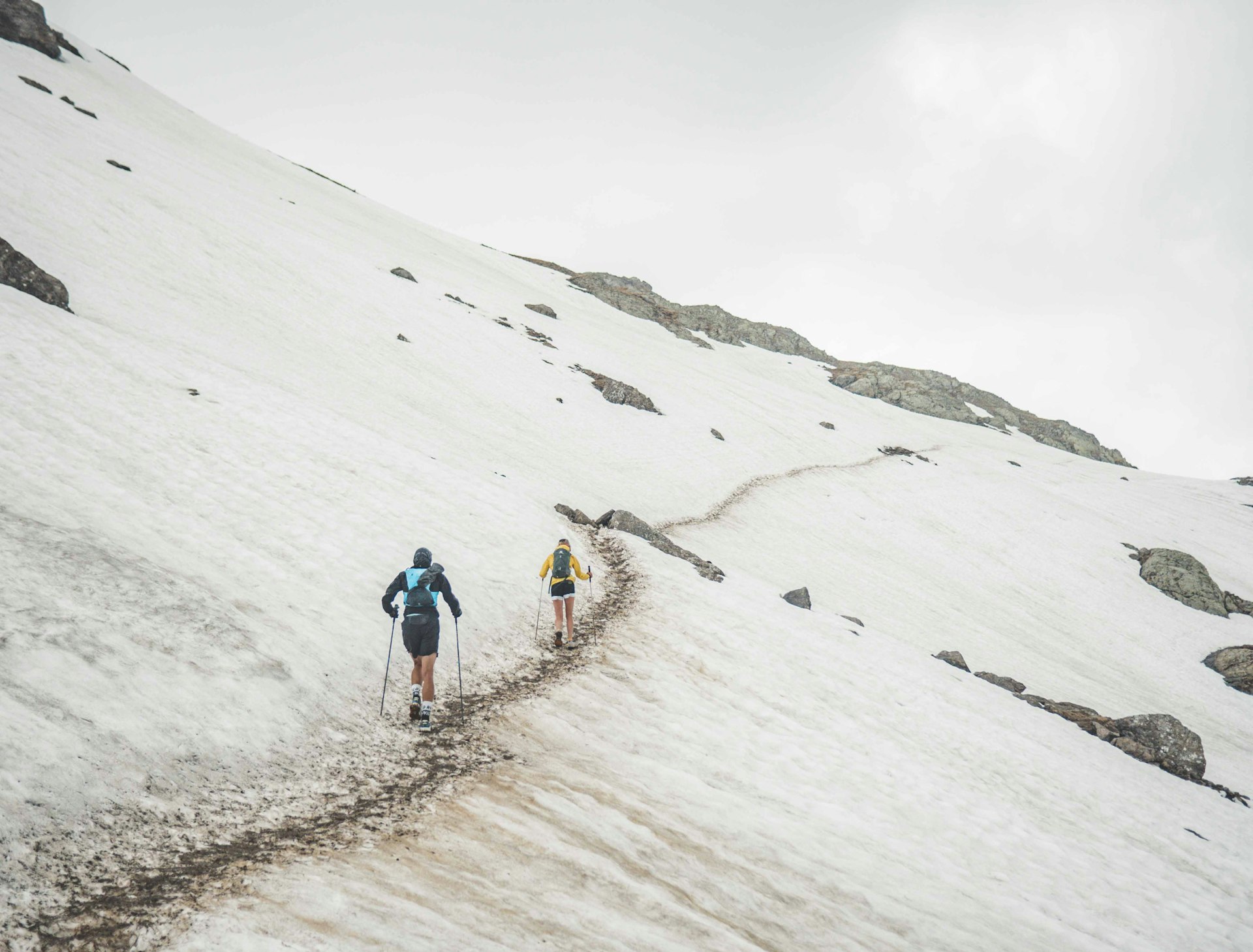
What is the best time to do the Tour du Mont Blanc?
To beat the crowds, I decided to run the tour in mid-June. Even at the onset of summer, there was still quite a bit of snow above 1800m (5900ft), and many hikers brought along small snow chains to keep from slipping. I loved the extra challenge of the snow and the cooler daytime temperatures. July and August are the busiest months for the route, when the trail can sometimes feel like a highway. By September, things slow down again – but the huts also start to close up for the winter. While weather in the mountains can vary each year, usually July and August have the highest number of stable, rain-free days.
How long does the Tour du Mont Blanc take? And what do you eat along the route?
Hikers typically complete the loop in between seven and 10 days, and the fastest trail runners complete the journey in a staggering 20 hours. Regular trail runners tend to take things a bit slower, between three and four days.
Since I was running the loop in four days, I packed only the barest essentials so as not to weigh myself down: a pair of leggings and a long-sleeve shirt to sleep in, a thin fleece for the mornings, a light raincoat, a pair of light gloves, a change of socks, my toothbrush, sunscreen, sunglasses and a headlamp. Plus, I wanted to eat as much local food as possible: crozets (cheesy pasta) in France, pizza in Italy and croûtes (a cheesy bread melt) in Switzerland.
Dinners were included in my demi-pension , or half-board. For lunch, I usually ordered the refuge ’s picnic to eat along the way. While they’re nothing fancy, the sandwiches or even just bread, smoked meat and cheese always hit the spot.
Alix Noblat , an ultra-trail runner and specialist in nutrition in endurance sports, once told me to eat every half hour – before my stomach starts rumbling. So I always keep a snack on me, like protein bars or Snickers. Anything that can give me an energy boost is always in my pack.
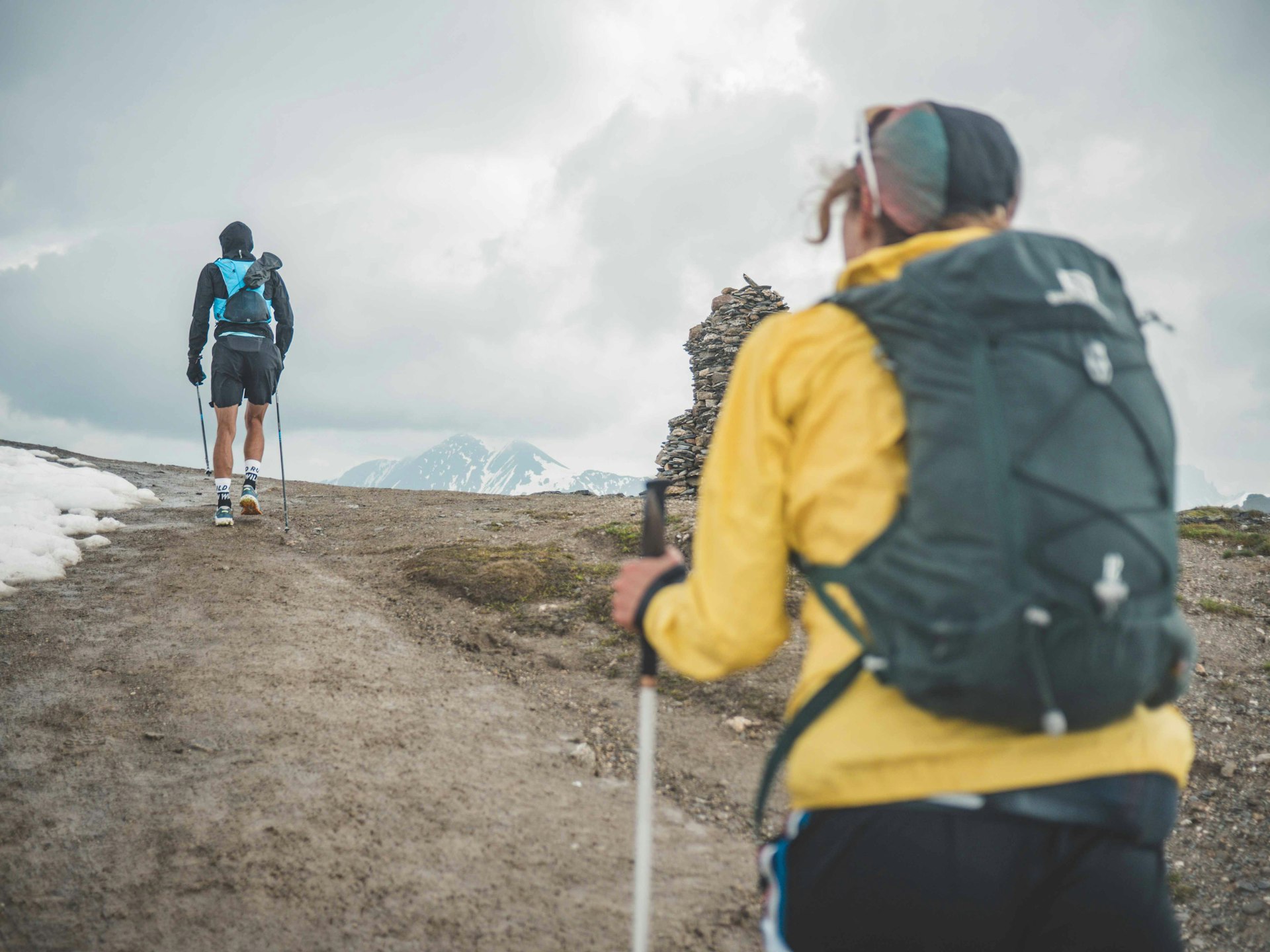
The highs and lows of the Tour du Mont Blanc
After a few days on the trail, your sense of time and distance changes. Hikers will no longer measure their day by kilometers or hours traveled – but rather by the cols , or mountain passes, that they’ve reached. The most famous ones are:
- The Col du Bonhomme, which connects the lush Contamines Nature Reserve with the Alpine pastures of the Beaufortaine.
- The Col de la Seigne, at the border between France and Italy, with a spectacular view of Mont Blanc, Aiguille du Peuteurey, Dent du Géan and the treacherous Grandes Jorasses.
- The Col Grand Ferret, at the end of the remote Val Ferret, which brings a long, steep climb – and a descent on the other (Swiss) side that’s rolling and blissful.
- The Col de la Balme, overlooking Chamonix valley, which brings hikers back into France for the final few legs before the finish.
And don’t forget the valleys. The TBM passes through winter-sports hubs like Chamonix and Courmayeur , as well as through smaller Alpine valleys. A standout valley is the Val Ferret: the trail runs high above the lush green pastures on the valley floor, giving a splendid view of the mineral rock faces of the range on the other side. Plus, the Rifugio Walter Bonatti ’s cappuccinos are the best you’ll find anywhere above 2000m (6500ft).
Do you need to be in great shape to hike the Tour du Mont Blanc?
You should physically prepare for the hike, yes. Getting in shape for the TMB is a question of cardio training and foot preparation. Hikers should be fit enough to cover their desired distance each day, of course. But don’t forget to prepare your feet to avoid blisters: break in hiking shoes before the first day of the hike, and bring along anti-chafing cream if you’re worried you might have rubs.
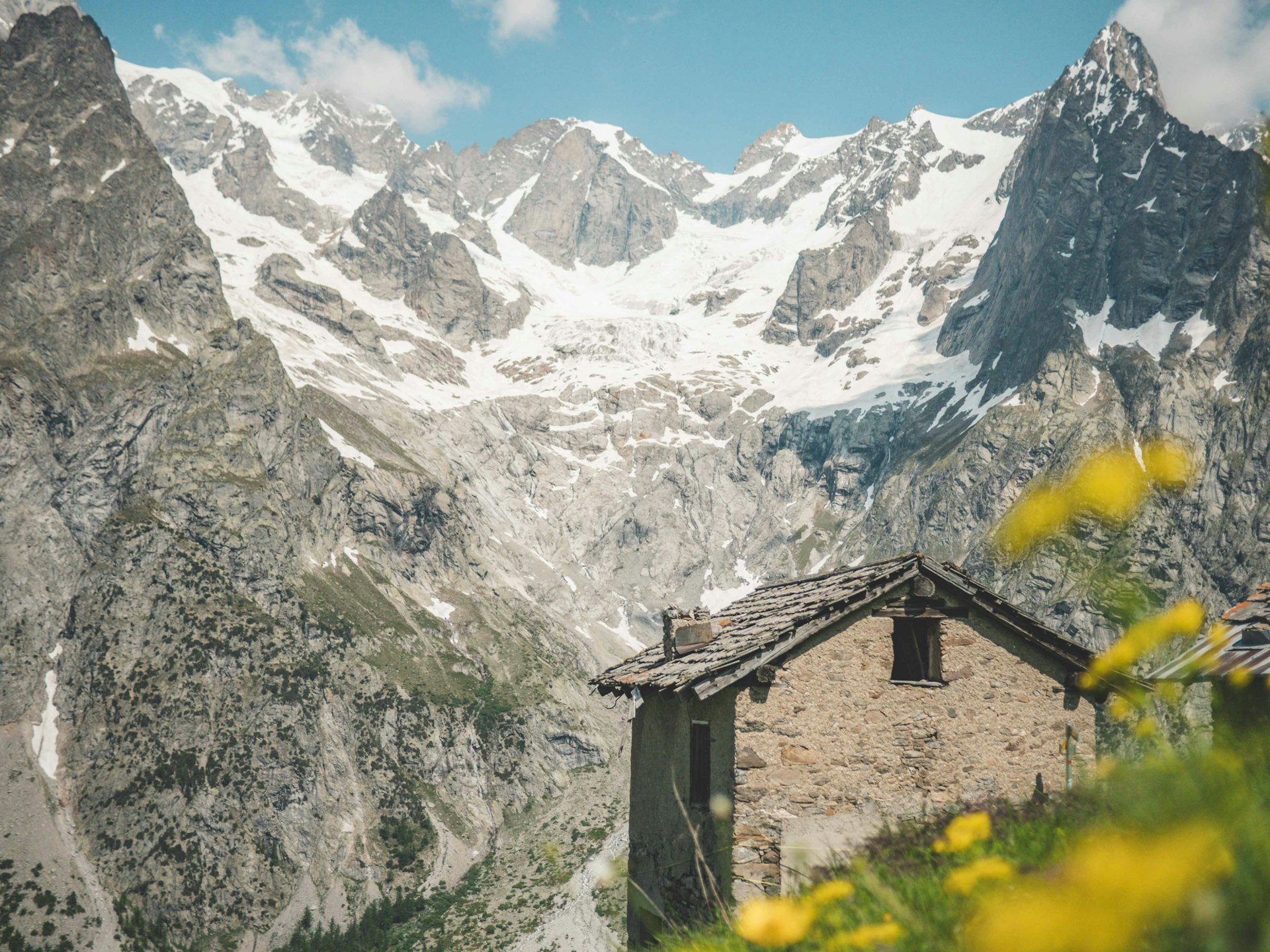
Ready to make it happen?
This is a trek you should book early – at least two months out – to find secure space at the refuges . Yet it can be planned at the last minute for those who prefer camping. Autour du Mont Blanc is an easy-to-use website that helps plan daily stages. You can also reserve huts here.
The views…the food…the marmots! The Tour du Mont Blanc delivers at every step.
Explore related stories
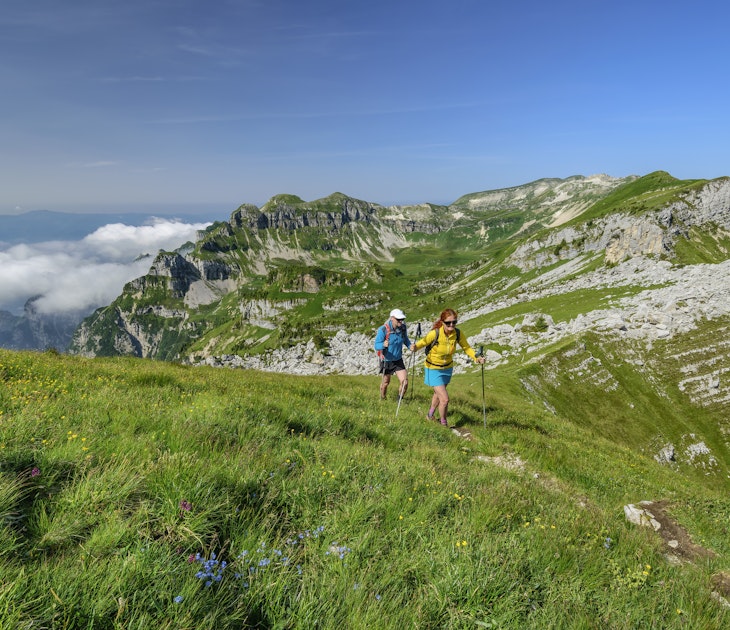
Mar 14, 2024 • 16 min read
Experience some of Europe's best wildlife, nature and landscapes this summer at these national parks.
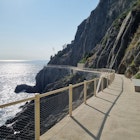
Jul 27, 2023 • 2 min read
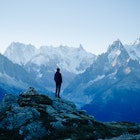
May 20, 2023 • 8 min read
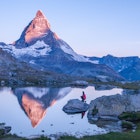
Dec 1, 2022 • 11 min read
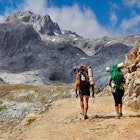
Jul 17, 2022 • 6 min read

Jul 13, 2022 • 8 min read
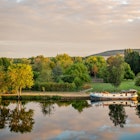
Jun 29, 2022 • 5 min read
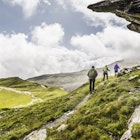
May 24, 2022 • 2 min read
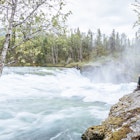
Mar 14, 2022 • 7 min read

Jan 31, 2022 • 6 min read
- Mont Blanc Tunnel closed from 2 Sept to 16 Dec 2024
- Skier 25, dies on Aiguille Verte after 500 meter fall
- Magic Mont-Blanc, from Thursday 11 to Sunday 14 April 2024
- In Chamonix, which ski resorts are open for spring skiing?
- Refuge Grands Mulets opens 4 April 2024 and conditions for ski ascent of Mont Blanc
At the foot of Mont Blanc (4808m or 15,770ft), the highest mountain in western Europe, Chamonix's alpine town atmosphere

The resort of Chamonix has three 5 star hotels, eleven 4 star hotels, twenty two 3 star hotels, thirteen 2 star hotels

TransferFix, we help you find your Chamonix transfer

Opening Dates 2024

Since 1934, Snell Sports has been the largest mountain shop in the Chamonix Valley.

Compare & Book Online with Chamonix.net
Tour du mont blanc hiking - routes, maps and itineraries.
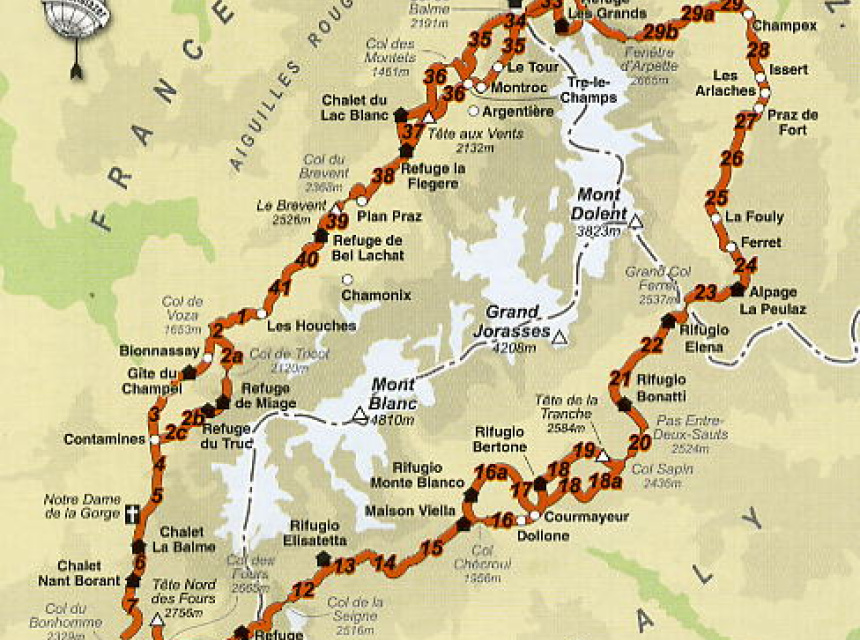
The Tour du Mont Blanc is a 170 km trek that encompasses the whole of the Mont Blanc Massif; with nearly 10 000m of cumulative descent and ascent it is usually completed in a number of days.
The TMB has a variety of accommodations along its way (hotels and mountain huts with possibility for vehicle support) that allow you to really enjoy the scenery, take lots of photos and walk each day with just a light pack.
Alternatively, the TMB can be done completely self-sufficiently: you carry all your own food and camping gear. This gives you a better sense of freedom and the ability to go where you please whenever you want.
Tour of Mont Blanc General Information
Mont Blanc Tour mountain huts are open, in general, from mid-June until the first or second week in September. It is advisable to reserve a bed, particularly in the high season of mid July to mid August.
Early in the season is the quietest and most beautiful, but beware of old snow on the higher paths which could be icy and dangerous and would make an ice axe essential.
For additional safety or to just show you the way you could hire an Independent Trek Leader .
Wildlife on the Tour du Mont Blanc
Have a look at the Chamonix.net nature, faune and flora page for more information on wildlife you might encounter on the Tour of Mont Blanc. Chamois, deer, eagles and a range of beautiful alpine flowers can all be seen and photographed.
Tour du Mont Blanc Maps, Kit List and Equipment
Lightweight boots and shorts are sufficient as long as there are warm clothes in your backpack. Waterproofs are essential and trekking poles useful. Here are some of the best mountain equipment shops in Chamonix .
Do not forget sunglasses, skin and lip protection. Always carry drinking water and check the Chamonix weather forecast before starting your journey.
Maps for the Tour of Mont Blanc:
Tour of Mont Blanc - Route Descriptions
You have plenty of options: from 4 day sportive hikes to leisurely 12 day cultural experiences; there is not only one way to do the Tour of Mont Blanc. Here are a couple of different suggestions which may help you make up your mind on your particular style.
- You can go on your own with your own GPS track (book here online) , or benefit from a mountain leaders ' experience
- You can carry your own gear or hike with a light pack with vehicle support (book here online)
- You can sleep and eat in the refuges or carry a tent (book here online)
Here is a list of contact information for the various mountain huts .
4 day trip: Not quite racing - but fast enough: For the hardcore hiker
This itinerary follows pretty much in the footsteps of the Ultra Trail race (which varies slightly from year to year). This is for very fit hikers and is done with only a light day pack, eating and sleeping in huts and is basically the run/walking version of the Tour du Mont Blanc. The times noted are for fit spandex-wearing (not obligatory!) hikers.
7 day trip: Hiking the Tour of Mont Blanc - hiker
Start with the previously mentioned itinerary and break up the days a bit depending on where you would like to spend the night.
For people who carry their own gear, plan on a 7 day trip.
9 to 11 day trip: Taking the time to look at the scenery
Of course if you really do have time, you can expand the experience. Here's an example of a slower pace, with time to veer a little off the path. This is described as an 11 day trip, but it would be really easy to knock off the first and last days as those days are dedicated to trekking in the Chamonix Valley.

At the end of August, each year, the trails around the Mont Blanc get really busy for one of the most amazing competitions ever organized - The Ultra Trail du Mont Blanc - so keep this in mind when planning your hike of the Tour du Mont Blanc.
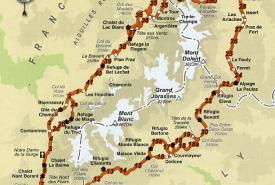
Social Networks

Latest News

How to Hike The Tour Du Mont Blanc In 7 Days: Fastpacking Guide
By: Author Robyn Robledo
Posted on Last updated: April 7, 2024

The Tour du Mont Blanc is honestly one of the most incredible hikes we’ve ever experienced.
That’s saying something since we’ve done some incredible hikes in Alaska, the Rockies, the Cascades, Glacier National Park, Yosemite, New Zealand, and Hawaii, just to name a few.
What makes this experience so unique and incredible in comparison to other hikes around the world is the combination of easy access to refugees, going in and out of towns and cities, and the stunning beauty of all the snow-capped mountains and glaciers.
When I first started planning the Tour du Mont Blanc, it was overwhelming, to say the least, and it was hard to find the right information to help me plan my itinerary, especially when it came to camping. In our blog, Planning a Tour du Mont Blanc, I’ve included everything you need to know about getting to Mont Blanc, how long it is, how many stages, safety, and so much more.
If you don’t know much about the Tour du Mont Blanc, it might help to read the Planning Guide first (blog coming soon) to orient yourself and then use this to help you plan .
But, if you are just looking for some inspiration, want to find out how you can hike this incredible trail in only 7 days, or want to hear our story of how epic the Tour du Mont Blanc was then please, read on. And for pure inspiration, you’ll want to check out Our 35 Favorite Photos From The TMB.
Hiking the TMB was certainly a life changing experience for me.
For starters, it was way more strenuous than I expected, and like always, I tend to bite off more than I can chew. This meant that we ended up combining stages, which made it even more exhausting. That’s not to say I’d do it differently. I just want you to make sure you plan accordingly.
I’ve broken up my account of our hiking experience with tips and recommendations for those planning on trying to fast-track this wonderful trek.
If I skipped something or left any stone unturned or questions unanswered, please, ask us in the comments section below. I want to ensure you can have the best possible experience hiking the Tour du Mont Blanc.
I found it interesting that while hiking the Tour du Mont Blanc, so few people knew what a travel blog was. While I guess originally blogging was a means of journaling your experience along your travels, in the past few years it has turned into a highly detailed description of travel and thus I want you to know that this blog here that you’re reading is meant to help you have the best possible travel experience possible.
I’m not here to talk about my story, I’m using my story to help you have an epic Tour du Mont Blanc trip. Let’s get started!
Just a heads up , I will be using the abbreviation TMB on this blog occasionally. It’s kinda self-explanatory but TMB stands for Tour du Mont Blanc.
Also, if you don’t have time to read this whole blog (or even if you just want to save this blog for later), you can save any one of the photos on this blog to your Pinterest boards . All you got to do is click the Pin it button in the corner of each image (if you’re on a mobile device, click on the photo first then the Pin it button will appear.)
Day 1 on the Tour du Mont Blanc: Le Brévent to Refuge de la Balme
Trail stats.
- Total miles/kilometers hiked: 10 mi/6 km
- Total elevation gain: 800m/2600ft
- Total elevation loss: 1500m/4900ft
- Stages covered: Half of Stage 11, bypass Stage 1, partial Stage 2
Hiking Times + Distances
- Brévent to Refuge de Bellachat: 1 hour
- Refuge de Bellachat to Les Houches train station: 2 hours and 45 minutes
- Public Transport from Les Houches to Notre Dame de la Gorge
- Notre Dame de la Gorge to Refuge Nant Borrant: 40 minutes
- Refuge Nant Borrant to Refuge de la Balme: 50 minutes
Chamonix Mont Blanc
We chose to begin our TMB journey at the summit of Le Brévent.
Traditionally you would start and finish the TMB in Les Houches so that you get the most dramatic views of Mont Blanc for the grand finale, stage 11.
View this post on Instagram A post shared by Adventure Travel Family (@nomadswithapurpose) on Oct 3, 2019 at 5:41pm PDT
The weather forecast was predicting overcast with a chance of rain for the day we’d be finishing the TMB projected and the day we woke up to start the Tour, the weather was clear and too gorgeous to pass up. We decided to take the good weather when we could get it so we could guarantee amazing views on the iconic 11th stage.
In addition, we happened to be in Chamonix at the same time as the UTMB (the Ultra Tour Du Mont Blanc race). The race follows the very same TMB route hikers follow so it can get crowded on the trail. We were beginning our trek two days before the big race started and we wanted to get out ahead of the runners if that makes sense.

After grabbing pastries and a cafe in town, plus some snacks for the way, we walked north out of the town center to the cable car.
The price to ride the cable car to Brévent one way was €25 for adults and €20 for kids under 15.
I was a bit reluctant to pay so much and contemplated just hiking up to Brévent but was so very happy that I spent the money as it is an extremely steep ascent and would have trashed our legs for the descent from Brévent to Les Houches that we were about to do.

Taking the cable car up provides you with amazing views and it’s super easy to find the gondola from the center of Chamonix. Just follow the signs.
Taking the cable car up is a two-part ordeal. The first part is a gondola ride to Plan Praz, which is at 2000 meters. From here you get off the gondola and follow the signs with the picture of the cable car that in the winter, takes you to the black diamond runs in the resort. It’s very simple.
There is a cafe here if you want to grab a coffee while taking in the views or you can wait to get panoramic views from the smaller cafe at the summit of Le Brévent after the second cable car ride.

The cable car ride from Plan Praz to Brévent was interesting as it is a larger car that fits 30 + people standing in it and takes you all up together to Brévent at 2525 meters. It was exhilarating!
After you take in the views, which do tend to be clouded in from this high of altitude, it’s time to start the hike down to Les Houches. Remember, if you choose to do this the traditional way, this will be your final push of the tour and it is steep, so leave a little in the legs for this part.
Le Brévent to Refuge de Bellachat – Stage 11

The first section of the trail was rocky but a gradual decline. You’re above the treeline here and get incredible views of not only Mont Blanc but also the mountain ranges far in the distance.

The views at Refuge de Bellachat are some of the best on the entire tour. If it fits into your itinerary, I highly recommend staying here. It was a little too early in our day to stop and eat here, but like all the refuges along the way, it did serve coffee, drinks, and food. There are toilets here but only for paying customers.

Refuge de Bellachat to Les Houches – Stage 11
Just a bit after leaving the refuge the trail gets steep. Very steep.
There isn’t a lot of exposure so fear of heights isn’t a huge worry but the amount of single-leg squats you feel like you are doing is hard. Our legs were shaking most of the way down, which is rare for us.
Hiking sticks would probably be a good idea if you have any past knee issues. Keep in mind, that the trail remains steep pretty much the entire way down to Les Houches.

20 minutes after leaving the refuge, the trail winds into the forest and provides a nice respite from the intense sun rays. Eventually, you arrive at a fence and follow along the outskirts of it until you reach the entrance to the Zoo, Merlet.
After Merlet, we followed the yellow TMB signs left, winding down the Zoo’s access road until eventually turning left on the TMB trail about 30 min down the road again.
According to the book, when you get to the zoo, there is a road to the right that puts you on the TMB trail right away, however, we didn’t see it, and walking the road for a while was a nice break for our feet. There were also picnic tables on the road where we walked that provided a nice place to rest and eat.
The trail puts you out right at the train station and if this is the end of your trek as a traditional Stage 11, it’s super easy to hop on the train back to Chamonix. If you choose to fast back as we did, you may want to hop on the train here to skip Stage 1.
Les Houches to Les Contamines – Skipping Stage 1
Since stage 1 of the TMB, which goes from Les Houches to Les Contamines, isn’t as gorgeous as the other stages, we decided to skip it, but mostly because we wanted to get ahead of the UTMB runners who would be starting their race the next night, which meant we needed to get to Les Contamines so we could enjoy beautiful stage 3 without crazy crowds.
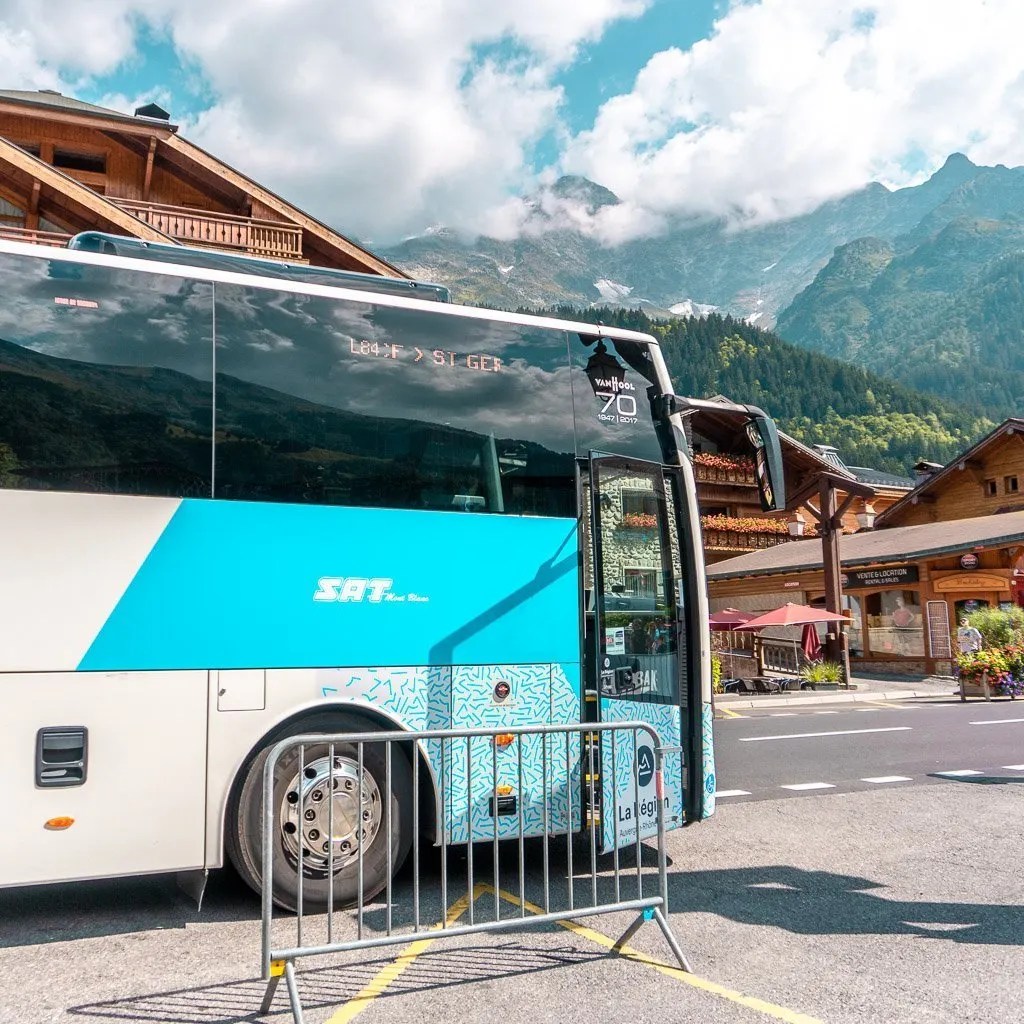
I don’t necessarily recommend skipping stage 1 but we did because we weren’t going to be able to take the alternate/high route.
The traditional path of Stage 1 involves a lot of road walking and didn’t seem worth it for us since doing Stage 1 would set us back a day.
Plus, there is a variant to Stage 1 that takes you up higher and closer to the glaciers but isn’t recommended early in the season or with inclement weather. There was a chance of thunderstorms that afternoon so we chose to take it easy and ride the train/bus to Contamines.
Train and Bus Passes
The Carte d’Hôte pass allows you to ride any bus or train between Servoz and Vallorcine.
We received one of these passes for free from staying at Camping Des Arroles. I’m pretty sure all of the campgrounds in Chamonix provide these, some hotels also offer them free of charge, or you can get one for 2 euros from the tourist office in Chamonix.
The train runs about every hour, click here for the full schedule. We took the train west to Saint Gervais where we then hopped on Bus 84 to Les Contamines. This bus is not included in the Carte d’Hôte pass and tickets were €5.50 per person. It was a very nice bus ride in an air-conditioned tour bus and the incredible views along the way made what little guilt I had for skipping a section of the TMB quickly disappear as I stared out the oversized windows at the rolling green French countryside.
Les Contamines
The tourist office in Les Contamines has outlets to charge your phone and free WiFi which was nice.

We also picked up food for our dinner (we weren’t eating dinner at the refuges since we were camping) at the small grocery store across from the tourist office in Les Contimines: a baguette, arugula, salami, and butter to make sandwiches for dinner as well as a yogurt and a pastries each for dessert, plus a chocolate croissant for breakfast the next morning.

There is a bigger grocery store in town and plenty of restaurants to eat at. I highly recommend the ice cream (glacée) at the bakery directly across the street from the tourist office.
Les Contamines to Notre Dame de la Gorge – Free Shuttle
We chose to skip the first 45 minutes of hiking stage 2 since it’s mostly near the road and while the scenery is pleasant, it was nice to just cut out this section of town. There is a free shuttle bus that takes you from the tourist office in Les Contamines to Notre Dame de la Gorge, a beautiful church in the middle of rolling green countryside. There is food here and the church is worth taking a peak inside of.
Notre Dame de la Gorge to Refuge de la Balme – Begin Stage 2
Leaving Notre Dame de la Gorge the trail immediately begins to climb and doesn’t let up to Refuge de la Balme, where we chose to camp that night.

It doesn’t let up until the next refuge, Refuge de la Croix du Bonhomme and if I had started earlier, not combined stages, or wasn’t camping, I would recommend staying at Refuge du Bonhomme mainly so that you don’t have to start with such an intense climb the next morning when you leave Refuge de la Balme.

We were camping though and not only was the camping free at Refuge de la Balme, but the views were some of the best and reminded me a lot of being in the Dolomites.
Eating at the Refuges
Since we were not guests at the refuges (we were tent camping, remember) we were able to order drinks at Chalet Refuge de la Balme but not dinner.

If we had needed dinner, Refuge Nant Borrant looked like you could just walk in and order but for Refuge de la Balme, we would’ve had to call ahead to request dinner since they only make enough food for the people paying half board.
According to people I asked on the trail, they said the food wasn’t very good at Refuge de la Balme anyway. Refuge Nant Borrant supposedly has incredible food but while it’s location is quaint and lovely, the views at the refuge and 2 nearby camping areas aren’t the best.

Having camped at the stunning camping area at Refuge de la Balme, we got coffee at Refuge du Balme the next morning but I do not recommend it. The coffee was horrible, and overpriced, and we had to wait until the guests were served before getting a cup of coffee which put us on the trail much later than I had hoped.
Overall Tips for Day 1
To fastback-like we did, take the cable car from Chamonix to Brévent, hike down to Les Houches, hop on the train from Les Houches to Saint Gervais, and then a bus from Saint Gervais to Les Contamines.
Total public transport costs per person are about 33 euros per person
Use the free shuttle (picks up right in front of the Tourism Office) to go from Les Contamines to Notre Dame de la Gorge.
If you time the trains and buses perfectly, it is possible to get to Refuge de la Croix du Bonhomme within a day but you’d have to hustle and if you aren’t camping, I’ve heard that Refuge de la Croix du Bonhomme is pretty bad.
Day 2: Refuge de la Balme to Refuge Elisabetta via Variante Route
- Total miles/kilometers hiked: 19.5 km/12 mi
- Total elevation gain: 1400 m/4600 ft
- Total elevation loss: 1000 m/3300 ft
- Stages covered: Stage 2 w/ Col de Fours Variant + Stage 3
- Refuge de la Balme to Col du Bonhomme: 1 hour and 30 minutes
- Col du Bonhomme to Col de la Croix: 40 minutes
- Col de la Croix to Col des Fours: 1 hour and 15 minutes,
- Col des Fours to Refuge des Mottets: 3 hours,
- Refuge des Mottets to Col de la Seigne: 1 hour and 15 minutes,
- Col de la Seigne to Refugio Elisabetta: 1 hour and 15 minutes
Refuge de la Balme to Col de la Croix – Stage 2 Ascent
We left Refuge de la Balme at 8 a.m. on the dot with a dozen or so fellow hikers on our tail which pushed our pace quite a bit. It’s a fairly steep and consistent climb from Refuge de la Balme to Col du Bonhomme and quite a shock to start your morning with such hard exertion. Little did we know that that was just going to be a warm-up for us.

From here the signs point you left and it’s another 40 minutes of easier climbing to get to the Col de la Croix. The views are nice in this section and a good warm-up for the spectacular views that are coming ahead.

Col de la Croix to Refuge des Mottets – Col de Fours Stage 2/3 Variant
When you reach Col de la Croix you are also at the Refuge de la Croix du Bonhomme. If you are contemplating staying here these are the things I’d consider.
- Sometimes it’s not safe to take the Col de Fours variante which is what I’m going to explain in a minute.
- This alternate route does provide a nice view of Mont Blanc and Aiguille des Glaciers, but there are way better views ahead in my opinion and you get to see the Aiguille des Glaciers for a long time from Mottets to Col de la Seigne.
- The descent down from Col de Fours to Refuge des Mottets is steep. Doing such a steep descent on back-to-back days destroyed Gabi’s knees and so if you go this way, don’t forget hiking sticks.
- Your odds of having clearer weather are much better earlier in the day so if you want to do this variant, then starting from Refuge de la Croix might be a smarter option.
Another thing to keep in mind is that you can skip the Col de Fours variant and hike downhill to Les Chapieux and then catch a bus from Le Chapieux to Ville des Glaciers (which is only a 30-minute hike from Mottets) or directly to Mottets parking lot. It’s cheap and runs often throughout the day in July and August.
Since the weather was so clear, we chose to skip Chapieux and took the variant which was another 30 minutes of steep climbing, but the views of Aguilles de Glaciers and Mont Blanc made it quite worth the over 2.5 hours of climbing we had just done.

The TMB guidebook and signs mention that it’s a 20-minute detour to get to the Tete Fours, a summit to the left, but it didn’t look worth it to me. We had already climbed so much and had great views from the Col de Fours.
If you were only walking to Mottets from here and it’s a clear day, then it may be worth the extra push to Tete Fours.

Now, the rough part. The descent down from Col de Fours is brutal. It’s a very steep descent that takes 2 and a half hours. You do get nice views of the glaciers which is wonderful but you spend most of the time watching where your next footstep will be.

The bottom of the descent puts you at a car park with toilets. Use them if you aren’t planning on stopping at Mottets (which would be almost a sin since the food at Mottets is so delicious) since the toilets there are only for paying customers.

Getting to Mottets requires a 30-minute climb that is fairly gradual but still quite hard, especially after the five-and-a-half hours we’d already walked that day.
Refuge des Mottets
I had in my mind that Mottets was going to be a mediocre pit stop for us and was completely wrong. It’s in a gorgeous location sitting below glaciers and waterfalls and looks down into the valley heading toward Chapieux. We stopped and had lunch here and the food was amazing.

We were under the impression from other blogs we read that you could camp at Mottets however it’s not a suitable place to make camp before sunset. The people that run the refuge probably don’t mind if you set up camp late in the day up just past the refuge out of sight from the guests BUT there is a sign that says no camping on the refuge property.
Since it was early in the day we decided to push on but doing so was definitely biting off more than we should’ve chewed as the next 4 hours of hiking is grueling.
Refuge des Mottets to Col de la Seigne – Stage 3 Ascent
Hiking from Mottets to Col de la Seigne is steep even with fresh legs, but we had already climbed up 1500 feet and down the same so this climb of over 2000 feet hurt.

When we started the weather was clear, but as it got closer to the top the storm clouds began condensing over the mountain peaks and the occasional boom of thunder kept up our tempo so that we’d get over the Col before the storm.
Luckily the clouds seemed happy to stay attached to the highest peaks and as we summited Col de la Seigne an hour and a half after leaving Mottets, we were greeted with great views of Val Veni in the distance.

Col de la Seigne to Rifugio Elisabetta – Stage 3 Descent
After capturing pictures of the views, we began another demanding descent that was not quite as steep as the one earlier that day but still significantly challenging, especially because our legs were beat up from an already long day of hiking.

Each step sent waves of pain to our knees, calves, and very tender feet and so it took us almost an hour and a half to get to Refugio Elisabetta.
I knew ahead of time that Elisabetta was located in a beautiful location but when we rounded the last corner and saw the three-story rocky exterior of the hut surrounded by two enormous glaciers with braided waterfalls running off of them, we were so awestruck I thought we were dreaming.

Italy in general doesn’t allow wild camping unless you are above 3,000 meters and you’re making camp at sunset. Of course, if you are camping on private land and have consent from the owner it is allowed.
For the entire descent from Col de la Seigne, all I had been thinking about was I hoped Elisabetta would let us camp outside their Refugio . But when I saw how beautiful the views were here at the refuge, all I could think of on the five minutes of steep climbing up the road to get to the refuge was “ Please have 3 beds for us .”
Of course, manifestation works and sure enough within 30 minutes we were showered and sitting down at a large table with wine, bruschetta, risotto, meat, veggies, potatoes, and a creamy tiramisu dessert.

What started as a gorgeous day with views under Dolomite-like spires of rock and a bad cup of coffee, turned into an athletic feat the two girls and I will forever be proud of, crossing two 2500 meter (8200 ft) cols, gaining a total of 1800 meters (5900 ft), and losing 1100 meters (3600 ft), all while experiencing culinary treats and epic views of glaciers, waterfalls, and the most textured and jagged peaks you can imagine.
As the day quickly came to an end I remember thinking, Did all that just happen? But the pain in our lower legs reminded us of our accomplishments as we hobbled to the bathroom to brush our teeth and go to bed.
Overall Tips for Day 2
Going from Refuge de la Balme to Refugio Elisabetta is hard but doable. It ended up taking us from 8 a.m. to 6 p.m. with a 30-minute rest at Col de Fours and an hour lunch at Mottets, but the rest of the time was pretty steady hiking.
If you choose to go the Chapieux side, you may want to double-check if the bus is running to cut off some time, especially since you really won’t miss much by skipping that section from Chapieux to Mottets.
Staying at either Mottets or Elisabetta is a great choice and while the food at both was incredible, if you are tight on time or Elisabetta is full, Lac Combal is 30 minutes further and is also stunning. It’s supposedly a more iconic refuge experience and some prefer it over Elisabetta since it can be really crowded at Elisabetta in peak season. Staying at Lac Combal would also put you closer to starting tomorrow’s climb.
Day 3: Refuge Elisabetta to Courmayeur/Val Ferret
- Total miles/kilometers hiked: 18km/11mi (13km/8mi if you get on the gondola at Plan Checrouit)
- Total elevation gain: 450m/1500ft
- Total elevation loss: 1600m/5200ft
- Stages covered: Stage 4
Hiking Times
- Refugio Elisabetta to Mount Favre Spur: 3 hours and 30 minutes
- Mount Favre Spur to Courmayeur: 2 hours and 50 minutes
Rifugio Elisabetta to Mount Favre Spur – Stage 4 Ascent
Day 3 started out as a glorious morning and from the refuge, you could see a line of UTMB runners coming down the hillside looking like a trail of ants. It was exciting to see and motivated us to get back on the trail (after 3 shots of espresso of course).

Staying at Elisabetta was comfortable with fluffy down comforters, good strong coffee, and a light breakfast of bread, cookies, and jams.
We left the Refugio feeling rested and ready for an easy day of hiking, or so we thought.

As you leave Elisabetta, prepare yourself for the most stunning section of the Tour du Mont Blanc
While the entire Tour du Mont Blanc is stunning, especially on stages 10 and 11, I find the Italian side from Rifugio Elisabetta to Rifugio Elena to be the most unique and spectacular section of hiking I’ve ever experienced.

The road from Elisabetta winds down for 25 minutes or so to a valley where our path then merges with the UTMB. It stayed flat for another 25 minutes before arriving at a fork. (Also, this is where Lac Combal Refugio is if you need a place to stay).

Now, normally the alternate route is the high route however, in this case, the classic TMB route takes the high road whereas the “alternate” stays left in the river valley.
If you go left/straight and opt for the bad weather route, you have the option to hop on a bus in La Visaille an hour of hiking later. This bus can pick you up and take you to Courmayeur.
The traditional route, however, goes right up a narrow trail and here you will get some of the best views of your life.

We chose to go right and I highly recommend you do too unless the weather is bad and in that case, take the low road.
Today was the day that the UTMB runners had finally caught up to us (they started about 12 hours ago in Chamonix) and as we followed the continuous line of runners up the hill for an hour-and-a-half climb, we were greeted with picture-perfect views of the glaciers across the valley for almost our entire day.

While this is not a difficult climb up to Mont Favre Spur, the downhill section from Mont Favre Spur to Col Chécrouit took us a long time (slower than the Cicerone guide pace) with our weary legs and aching joints.
If your legs are well-trained or well-rested, you will find this section quite pleasant.
Seeing the glaciers from so many angles might also have slowed our pace as we spent a lot of time stopping to try and capture the textures and gorgeous shades of colors of rock and ice.

Mount Favre Spur to Courmayeur – Stage 4 Descent
When you reach Col Chécrouit there’s a refuge here where you could eat and then continue another hour and a half down a steep trail through mostly forest to arrive at Courmayeur.

If the cable cars are running, I highly recommend skipping this section and taking the ride into town. It will cost €15 but is worth what it will save your knees and shins from not having to go down such a steep grade.
Optional: At Col Chécrouit you also have the option of going left around the north face of Mont Chétif.
When you reach the bottom and get off the gondola, walk down all the steps to get to street level, then cross the street that you see on your right and head north (to the left) across the bridge where you will see the TMB sign and continue under the highway and up one flight of stairs.

It’s a 10-minute walk that will bring you to the tourism office and main bus stop. It’s also where I started messing up our itinerary.

Fatigue had set in and we were beginning to feel the effects of pushing so hard multiple days in a row. By the time we arrived in Courmayeur, it was siesta time and all I could think of was how badly I needed a siesta. Not much was open for us to refuel our bodies with and grocery stores were closed so we couldn’t restock. Luckily the campground we were headed to was supposed to have a restaurant so we left Courmayeur in hopes of some rest…turned out the restaurant was no longer open 🙁
Overall Tips for Day 3
I’d cut off the downhill section from Col Chécrouit but note that the cable car only runs until 5:30 p.m.
If you are camping, see our Camping the TMB blog for details on your camping options nearby since there are no campgrounds in the town of Courmayeur.
If you are trying to fastpack the TMB you have a big dilemma.
Your dilemma is whether to skip Courmayeur to experience Bonatti or try to get to Bonatti and skip Courmayeur. As you’ll see in the next section, Bonatti is amazing and I wouldn’t skip it.
From Courmayeur, you can get to Refugio Bonatti in about 3 hours by getting a bus ticket to the Ferret Valley and getting off close to Camping Grandes Jorasses. Then you walk the road a few more minutes and will see the familiar yellow trail signs that will point you toward La Leche and then onto Bonatti.
Going this way still gives you impressive views of Mont Blanc and the Jorasses but in less time than hiking straight from Courmayeur.
You can even cut more time off by riding the bus further to Lavachey and then taking the trail straight up to Bonatti, but I’d only do this as a last resort in bad weather since the views from the upper trail on the way to Bonatti are fantastic. Although, the views from Bonatti too are some of the best you’ll ever see.
Day 4: Val Ferret to Refugio Bonatti
- Total miles/kilometers hiked: 8km/5mi
- Total elevation gain: 300m/1000ft
- Total elevation loss: 100m/300ft
- Stages covered: Stage 5 (with a modified start)
- Campground to Main TMB Trail: 1 hour
- Main TMB Trail Junction to Rifugio Bonatti: 1 hour
Val Ferret to Main TMB Trail Junction – Alternate Route
Back to how we fastpacked the TMB…We left the campground at 7 a.m. and within 5 minutes arrived at a river with the familiar yellow trail signs pointing us to La Leche.
Several roads are branching left and right but when in doubt, just stay on the main center road. In less than 20 minutes you’ll see a much smaller trail on the left side of the road. That’s the one you want . There’s a small sign on a rock pillar that says 30 min to La Leche. It took us closer to 45 minutes but that’s because we had clear views of Mont Blanc the entire way up and were constantly stopping to take pictures and admire the scenery.
La Leche is just an on old abandoned building, not too exciting, but marks the way and confirms that you are on the right trail.
Main TMB Trail Junction to Rifugio Bonatti – Stage 5
About 15 minutes later our trail merged with the main TMB trail and from here it’s an hour and fifteen to Rifugio Bonatti.

It was wonderful being on a mostly flat trail that weaves in and out of the forest along the hillside while staring at the walls of rock and ice across the Ferret Valley.

The only hard part that day was the 5-minute steep climb to Bonatti, but the views and food were worth the tiny effort.
Rifugio Bonatti
We had heard great things about Refugio Bonatti both in terms of location and food. It was all true. The location trumps all the others we’ve been to, even Elisabetta because it faces a huge glacial cirque.

There is a large grassy area in front with picnic tables but we used the space to spread out and do some Yoga for Hikers . This was our halfway point and we were hoping to do some major recovering in the next 22 hours before we hiked again.
Since we did spend the entire day here it was fun to watch all the other hikers come and go. This is the busiest hut I’d seen and since it’s only a four-hour hike from Courmayeur, it gets a lot of day hikers in addition to the hikers doing the TMB.
Eating at Rifugio Bonatti
Let’s start with the coffee. One of the best parts about Italian rifugios is the espresso. Oh my! The espresso foam on the top is just amazing and I can’t get enough of it.
Then there’s the pastries. We arrived at the Refugio at 10 a.m. on an empty stomach and started by snacking on their homemade biscuits, which were just shortbread cookies– but some of the best I’ve ever had–along with a few shots of amazing espresso.

For lunch, we split the homemade chocolate cake topped with walnuts and a blueberry shortbread cake because even though the antipasto salad was better than any I’ve ever seen—prosciutto, apples, and cheese on a bed of spring mix lettuces—the cakes looked like something we couldn’t get again and so we gobbled that up and washed it down with a glass of house red wine, all making for a perfect way to chill out while staring at the glaciers.
Then came dinnertime which started with a nice salad and bread followed by a vegetable and bean soup. Next, the main course was a spinach frittata with mashed potatoes and a side of sautéed eggplant, and a slice of brie cheese.

This was all washed down with a simple, yet delicious, dessert of yogurt, apples, and granola. It was a nice finish to a big meal and while many people were grabbing their stomachs and throwing in the towel from being overly full, I was finally just full . It felt like a perfect amount of food for me.
Reservations at Bonatti
We had reserved Rifugio Bonatti a week in advance when we saw rain in the forecast (even though it ended up never raining on us the entire time we hiked), and while it was a great place to stay, it ended up throwing off our timing a little bit and made us lose a day on the trail.
That being said, if you had to pick only one refuge to stay at on the whole Tour du Mont Blanc, Bonatti is the one to stay at.
Bonatti is family run and quaint but also delivers a high-end experience with 5 star service, beds, amenities, and a great mountain community.
As far as reservations, Refugio Bonatti is a large refuge and we probably could’ve found a bed there even without reservations since it was later in the season. Even though we only booked our beds a week in advance, we had to modify our reservation twice and they were able to change our dates easily.

If you don’t want to miss this Refugio, then I’d say to reserve it ahead of time especially if you hike in July or August.
Other Tips on Rifugio Bonatti
The dorm-style room that we slept in here was different than the semi-private room we had at Elisabetta but like Elisabetta, it was a fairly comfy bed with actual sheets and a warm down comforter (and I happened to get lucky and get the bed by the window that looked out at Mont Blanc).

I had the best night’s sleep that I had had since arriving in Europe and woke up the next morning ready to charge.
- The cost for half board was 55 euros and included dinner, a bed in the dormitory for the night, breakfast, a hot shower, and tea to take with you.
- You can pay 75 euros for half board if you’d like a private or semi-private room.
- They don’t take credit cards so make sure to have cash.
- You don’t pay until after dinner, since alcohol isn’t included in the cost, and then you pay for everything when you are done “relaxing” for the evening.
- They say in the confirmation email that you are required to have a sleeping sheet bag or rent one for 3 euros but that didn’t seem the case as I didn’t have one nor did anyone else in my dorm room.
- When you enter the refuge they ask you to take off your hiking shoes and either wear your flip flops/sandals or they have Crocs available for you to wear.
- You can make your reservation online here and they are usually very quick to respond.
Overall Tips for Day 4
If you are trying to fastpack the TMB and you want to experience Bonatti, then skip Courmayeur and either start your stage 4 early in the morning so you have time to get to Bonatti on the main trail, which is about 4 hours after Courmayeur or hop on a bus to cut off some of this time. Or…
If you are trying to fastpack the TMB and you want to experience a night in Courmayeur, then combine stage 5 with stage 6 either by getting an early start since it will be about a 10-hour day of hiking, or shortening it quite a bit by busing to the end of Val Ferret and then rejoining the trail. You can also cut almost an hour off by getting a bus from Ferret to La Fouly in Switzerland.
Day 5: Refugio Bonatti to Champex
- Total miles/kilometers hiked: 29km/18mi
- Total elevation gain: 900m/3000ft
- Total elevation loss: 1900m/6200ft
- Stages covered: Stage 6 and partial Stage 7
- Rifugio Bonatti to Rifugio Elena: 2 hours and 15 minutes
- Rifugio Elena to Ferret: 3 hours
- Ferret to La Fouly: 30 minutes
- La Fouly to Praz-de-Fort: 3 hours and 30 minutes
Rifugio Bonatti to Rifugio Elena – Stage 6
We really had no intention of “fastpacking” the TMB when we were leaving Bonatti.
We wanted to take the alt stage 8 AKA high route to cross Fenettre d’Arpette on a sunny day since it is so high and steep. The best weather in the forecast was for the following day (day 6) so that meant we would need to squeeze two stages together on day 5.
The first part of stage 6 started with great weather and a good pace but by the time we got to Rifugio Elena, the fog was so thick and the wind so strong that we had to take a quick break inside the refuge.

Be warned that stage 6 may not seem like it has much elevation gain based on the elevation profile in the Cicerone guidebook, but it’s still a solid amount of climbing.
You have to descend a small hillside to the base of the valley before you start your climb up to the Grand Col Ferret.
We stepped into Refugio Elena and were so glad we did. We warm up with coffee, a slice of blueberry pie, and the best hot chocolate we’ve ever tasted before attacking the only pass on the day, Grand Col Ferret.
Rifugio Elena
Refugio Elena seemed like a nice alternative to Refugio Bonatti. The pie wasn’t quite as amazing as the pastries we had at Bonatti but the atmosphere was nice and if we could have seen the entire mountain and glaciers across from the Refugio, I’m sure we would’ve been impressed however, the clouds were obstructing the view.

Rifugio Elena to La Fouly – Grand Col Ferret
Getting over Grand Col Ferret was harder than I expected. The climb was steep leaving Elena and the trail was busy.
We cleared the col in the fog so no views but we were thankful for a mellow descent into Switzerland. Really! The trail from Grand Col Ferret to Alpage de la Peule is so heavenly after the crazy steep trails we had hiked down on day two that I remember just being so happy and feeling like we were hiking through Scotland or Ireland since the vegetation changes significantly when you cross the col into Switzerland.
Alpage de la Peule is small but if you decide to stay a night in Courmayeur and want to get a full day of hiking in the next day, then stopping at Refugio Bonatti or Elena might make for too short of days. There’s not a lot to Alpage de la Peule but it would be a good place to rest and eat for the night.
When we left Alpage de la Peule we chose to stay on the road to hike down to Ferret. We were tired and it was easier on our sore feet. You could opt for the trail but the views aren’t much different.
Upon arriving in Ferret, the plan was to hop on the bus to Champex so we’d be rested for the next day since it was going to be a tough one.

But when we got to Ferret, I didn’t understand the bus schedule at first so we decided to walk another 45 min to La Fouly. The buses were also way pricier than I expected so I thought if we hopped not the bus from La Fouly it’d be cheaper.
I have this tendency to make rash decisions and wing things. Sometimes it works out great and other times it doesn’t. In retrospect, we should’ve waited for the bus because this stretch from Ferret to La Fouly was underwhelming, as will be the stretch from La Fouly to Praz de Fort I’ll soon discover.
We thought we’d get food in La Fouly and then get on the bus but when we got to town the grocery store was closed for siesta. In fact, everything seemed closed for the siesta. I was kind of shocked at how dead asleep the entire town felt.

We had just seen the bus pass on the road heading toward Ferret and figured we’d wait because it should be turning around at Ferret and heading back our way. But after waiting for a half hour I finally took the time to decipher the bus schedule and realized the bus too takes a siesta and wouldn’t be coming back for two more hours😩
We should’ve walked over to the campground and either set up our tents and called it a day or at least lay on the grass and stretched but no, our overzealous egos got all excited about hiking more and so we took off into the forest starting stage 7.
La Fouly to Champex – Begin Stage 7
Stage 7 is basically “The Flat Part of the TMB Through Switzerland “
Stage 7 is in theory an easy day. The thing is, an easy day on the TMB is still a pretty challenging day. It looks like it’s mostly flat and downhill. But there were a few short uphill sections that were calf burners and if you do the entire stage 7, the climb from Praz de Fort to Champex looked steep.
Easy if you do just stage 7 but not easy if you combine it with another stage.

Two hours after leaving La Fouly, we couldn’t go any further. We hobbled into Praz de Fort and we’re overcome with joy and gratitude when the one restaurant in town was open.
If you are planning on camping the TMB, make sure to read that blog because we would’ve ended up in a huge bind if this one restaurant hadn’t been open.

We ordered two pizzas to eat right then and six sandwiches to go which ended up saving us big time in the day to come.
From Praz de Fort it was easy to grab the bus since it was back to running once per hour in the evening.
We made it up to Champex right before nightfall with just enough time to snap a couple of pics by the lake and get our tent set up.

Champex is a pleasant Swiss town and somewhere I would’ve liked to spend a day. If you choose not to fastpack the TMB, you should consider spending a day here. We met a wonderful couple who spend half their year living here and the other half in Phoenix, Arizona– talk about 2 extremes!!!
Overall Tips for Day 5
If you are fast packing, skip all of stage 7 but make sure you know the bus schedule ahead time so you can make it to Champex before the grocery stores close.
Champex is a much nicer area to rest in than Ferret or La Fouly in my opinion and having some time to rest your legs here before Stage 8 is highly recommended.
Day 6: Champex to Col de Balme
- Total miles/kilometers hiked: 20km/13mi
- Total elevation gain: 1800m/5900ft
- Total elevation loss: 1300m/4200ft
- Stages covered: Alternate Stage 8 and alternate Stage 9
Hiking Times:
- Champex to Fenêtre d’Arpette: 3 hours
- Fenêtre d’Arpette to Chalet du Glacier: 2 hours and 30 minutes
- Chalet du Glacier to Refuge Les Grandes: 1 hour and 15 minutes
- Refuge Les Grandes to Col de Balme: 1 hour and 30 minutes
Champex is a small town and it was only a 5-minute walk from the campground to a delicious bakery that, in addition to having wonderful pastries and bread, offers a breakfast buffet that may be the best deal in Switzerland. For 12 SF you get all-you-can-eat bread with butter and jam, an assortment of cheeses, and deli-style meats. (I’m not sure if coffee is included in that.)
We are not big breakfast eaters so we just grabbed our coffee and pastries and a loaf of bread for later and began the variant (or alternative) to stage 8.
Champex to Fenêtre d’Arpette – Alt Stage 8 Ascent
The alternative stage 8 takes you up and over Fenêtre d’Arpette, the highest point on the TMB (along with Col des Fours). You gain and then lose on this route over 3500 feet, but the descent brings you quite close to the Trient Glacier.

The first 2 hours of this climb aren’t too bad, but then the last hour you are doing so many high steps. In some ways, this was a nice break for our calves but it was hard on the glutes and quads and all the big steps keep pushing your heart rate to 90% max exertion.

We chose this alternative thinking that the views were going to be outrageous but in my opinion, compared to the Val Veni and Val Ferret views, they were just mediocre.
You can see far off into the distance and you do get pretty good views of the Trient glacier, however, if you do alternate stage 9, which I highly recommend, you get just as good views without the torture that comes next for us.

Fenêtre d’Arpette to Chalet du Glacier – Alt Stage 8 Descent
The ascent is hard but feels good plus, there was a bit of scrambling over boulders which I loved. The descent however, was torture.

It’s super steep and there was a lot of scree (loose rock) that made your footing less stable. Luckily, there wasn’t much exposure so the worry was just in slipping, not falling to your death.
The other negative was that this is also a main stage of the Haute Route and so, while we were descending, the trail was very crowded with people climbing up and many places where you’d have to stop and wait for people to pass because the trail just isn’t wide enough for two.

This section beat up our knees quite a bit and I’d recommend just sticking with the regular stage 8 if you have any knee issues or if the weather isn’t great. However, if you love bragging rights, then this is your type of hike.
At the bottom of the climb, you get to Chalet du Glacier, which is a small restaurant and a great place to sit and eat some food before either finishing your day in Trient, Col de la Forclaz or Le Peuty or doing the insane like we did and tackle the alternate to stage 9 on the same day.

Water at Chalet du Glacier
This was our first time on the entire TMB to have to filter water. If we had just been going on to Trient we probably could’ve got by for the one-hour hike with just beer and soda from the Chalet. But since we were going to be climbing again, we busted out our GoFlow Gravity Bag and filtered some water from the river.
Chalet du Glacier to Col de Balme – Alt Stage 9
The next stage was nice. We might have bit off a little more than we can chew, but it wasn’t too big of a bite.
The times in the Cicerone guidebook book were pretty spot on and so it was an hour-and-a-half climb up to Refuge Les Grandes from Chalet du Glacier where we sat and had a wonderful convo with a local who was manning the refuge for the weekend.
The views and ambiance here were so rad because you felt like you had discovered a hidden gem and had it all to yourself pretty much. I highly recommend this route .

The goal for the evening of day 6 was to get to Col de Balme and while it didn’t require crossing any more passes, because from here you just skirt the side of the mountains for a few kilometers, after already doing the oh-so challenging appetite, this was a bit long and required more effort than we hoped (but what else is new on the TMB).

Thankfully we were rewarded with one of the best nights on the trail.
We walked into Refuge Col de Balme and the owner instantly made us feel welcome. Because it was such a calm and clear night, we wild camped near the refuge and had the most incredible views of Mont Blanc and the surrounding mountains.

Normally the owner recommends trekkers go down a bit from the refuge just because of the weather.
The best part of the day was the delicious dinner we had at the refuge. This was our first time eating croute and it was better than anything I’d eaten so far on the TMB.

After finishing off our amazing dinner with the best cheesecake I’ve ever had, we retreated to the peace and solitude of our lone tent perched high on the col overlooking Mont Blanc and Chamonix Valley to the west and Trient to the east.

This was one of the most memorable nights of my life. The night sky was so clear and there were so few lights from here that I have never seen the Milky Way so creamy in my life (and I’ve camped in a lot of places). The density of stars just blew me away and my girls may never forgive me for not waking them up at 2 a.m. to soak it in.
But this peace and gratitude I felt that night is probably the reason I ended up kinda screwing up our next day by making a few bad decisions, which meant that instead of ending our TMB on a high note, we end up limping into Chamonix on the seventh day at 9 p.m. with feelings of frustration.
Overall Tips for Day 6
The most direct way to fastback these two stages is by doing the alternate route for both stages.
Go over the Fenêtre d’ Arpette and at Chalet du Glacier, cross the bridge to climb to Refuge Les Grandes. OR you can choose to save the knees and take the traditional route from Champex to Col de la Forclaz and then come around to Chalet du Glacier from the opposite direction before heading up to Refuge Les Grandes.
Time wise the latter (the classic stage 8 route) may be faster even though the distance is a few kilometers longer. Doing the Fenêtre d’ Arpette can be slow and tedious while the regular stage 8 has way less elevation gain or loss so you can keep a faster pace.
Day 7: Col de Balme to Chamonix
- Total miles/kilometers hiked: 20km/12.5mi
- Total elevation gain: 1000m/3300ft
- Total elevation loss: 2100m/6900ft
- Stages covered: Stage 10 with a detour to Lac Blanc
- Col de Balme to L’Aiguillette des Posettes: 2 hours
- L’Aiguillette des Posettes to Tre-le-Champ: 1 hour and 45 minutes
- Tre-le-Champ to Lac Blanc: 2 hours and 45 minutes
Col de Balme to L’Aiguillette des Posettes – Begin Stage 10
We woke to a clear sky and the sunrise was simply incredible. The utter silence and complete stillness of the valley below was an experience we will never forget.

We took our time packing up and drinking our coffee that morning, probably more because we loved the vibe and views up at the Refugio than because we were exhausted from two days of intense hiking, but let’s be honest, we had to be pretty worn out at this point.

I’m sure the cortisol pumping through my body from the stroke factor made me not notice how tired I was, but, just like the previous days, we threw our packs on our backs, excited to be on the trail again.
I think we might’ve started on the wrong trail though.

Somehow we ended up summiting L’Aiguillette des Posettes from the wrong side and got a bit confused. It wasn’t a big deal, but probably set us back in time by 20 minutes or so. We thought we’d be camping at Lac Blanc that night so we didn’t worry about it.
It’s funny how much your expectation plays a role in your experience and I expected the day to be somewhat easy so I didn’t think much about how fast we were hiking or feel like there was a need to rush. In retrospect, we should’ve been on the trail earlier and paid more attention to the signs.
L’Aiguillette des Posettes to Tré-Le-Champ – Climbing and Ladders
The descent down to Tré-Le-Champ from Aiguilette was, you guessed it, harder than expected but not as bad as coming off the Arpette the previous day.

When you hit the road you see the trail that starts stage 10 and will take you to Flégère and Lac Blanc if you wish so I was tempted to just push on and get to Lac Blanc as quickly as possible but we only had a loaf of bread with us and I knew I should play it safe and stop for lunch just in case Lac Blanc doesn’t have food.
It was a good call because for one, the food at the restaurant we went to was really good and two, we ended up getting to Lac Blanc after they stopped serving lunch so we didn’t get to eat again that day.
We played it safe and walked down the road for about 5 minutes to this restaurant that serves many many hikers along the TMB.
The food really is incredible and it’s worth the detour if you have time.

After sitting to enjoy our meal for an hour, we put on our packs and I distinctly remember looking at my girls and saying, “I need a nap.” Which is a huge rarity for me. I never nap.
But we pushed on anyway because that’s just what we do.
We hiked back up the road and began the steep climb to Aiguillette d’Argentière. It was fun walking past all the rock climbers and by the time we reached the ladders, I felt invigorated again.
The ladders aren’t as scary as they sound but if you have any fear of heights, you should just take the alternative via Col de Montets.

If you are concerned about the ladders, my friend Mags at Family Freestylers has a great article about the difficulty of the ladders that you can read here .
With the fun behind us, we looked up the mountain and saw Refuge Lac Blanc which we were planning on finishing our day. But we looked up?! For some reason, I thought that when we finished the climb to Tête aux Vents it would be a flat trail to Lac Blanc. I never really considered that it might be another grueling hour of climbing to get there.
I had nothing left.

I remember trying to appreciate the pain in every step, knowing how much I was going to miss this journey soon.
In addition, we had so much good luck along the way that I made the error of assuming what was will always be. But our luck had run out.
A half-hour before you arrive at Lac Blanc, you reach Lacs de Chésery. It was more crowded here than I expected and we ran into fellow hikers that we had met at Bonatti who said we should stop here and enjoy these lakes because they are prettier than Lac Blanc.

I thought about listening to their advice and even thought that it might be good to just set up camp here and then hike up to check out Lac Blanc but FOMO and hunger got the best of me.
We had read on other people’s blogs on camping the TMB and I thought we’d be able to camp at Lac Blanc. The view was supposed to be incredible there and I wanted to get to the refuge as fast as possible to make sure we’d be able to get food because we only had that loaf of bread left from two days ago (yummy!).
After 30 minutes of painful climbing, we arrive at the refuge only for the owner to tell me she’s done serving lunch, has no beds available for the night, and can’t camp there.

She does offer to include us for dinner but at 25 euros per person, I was reluctant and the thought of sitting down to dinner with a bunch of strangers who would be nice and clean from their hot shower made me uncomfortable seeing as we hadn’t showered since Bonatti, three nights ago.
It’s almost 6 pm and I’m beaten. I just want to be done. I needed food, rest, and a hot shower. In retrospect, I should’ve paid for dinner and not cared how smelly I was.
It’s going to replay in my mind for so long.
Why didn’t I just pay for the dinner, get over myself for being stinky, and then hike back down to the Chésery lakes, and enjoy one more night on the trail ?
Forgiveness is hard, especially forgiving yourself.
Instead, I looked at Google Maps and it says 2 hours walking time to get to the closest town of Les Bois, which is right next to Chamonix. I look at the girls and say Can we just be done? They reluctantly “agree” but moreover they just succumbed to my pleas to finish right now because they just want to make me happy. And so, we set off to complete the TMB in 7 days.

Lac Blanc to Chamonix – Partial Stage 10 and Le Flegere Alternative Descent
The first mistake was taking the most direct route to Flégère via a trail that was marked closed. It was being repaired and while we saw others take this route and the path wasn’t that bad, I did step on a loose wooden board that caused me to fall, almost cartwheeling off the side of the mountain. Luckily, I wasn’t hurt, but it was a bad start to an even worse finish.
When you get to Flégère you can go left more towards Les Tines or slightly to the right toward Chamonix and Les Bois. Normally the cable car is running and this would be the easiest option if you were fastpacking the TMB.

But this year the cable car was being repaired and so we had to hike off the mountain. To our surprise, the entire trail network near Flégère was closed and since night was falling we thought we should play it safe and stay on the road.
I have never seen a road this steep in my life.
I’m not sure how vehicles make their way up and down this road because even with 4wd and a low gear, I’d be afraid of losing control and ending up in the trees.
We practically scooted down on our butts for the 20 switchbacks in the first 2 kilometers. Google Maps was finally wrong.
It took us 3 painful hours to get down the mountains and another hour to hike to the campground.
The only positive to this horrendous evening of hiking was the absolutely beautiful sunset that graced Chamonix Valley. The whole mountains were glowing and even in our frustrated stupor, we couldn’t help but stand there awestricken.

By 10 p.m. nothing was open and while the kind man at the campground reception offered us a can of ravioli, I was way too tired to eat cold noodles. We went to bed hungry and feeling defeated.
I know we missed out that night on what would’ve been the second most memorable night of my life.
We woke up though in good spirits and laughed it off. We may have messed up on our last day, but the sum total of the experience was perfect.
In fact, after showering and packing everything back into our packs, we walked to the train station to go get coffee and chocolate croissants in Chamonix planning out next year’s backpacking trip.
Will it be the Alta Via or the Haute route?
Stay tuned…
Overall Tips for Day 7
Basically don’t do what we did.
First of all, you should absolutely just ride the gondola down from Charamillon and Le Tour then walk the last bit to Tré-Le-Champ.
The views from L’Aiguillette des Posettes aren’t much different than the trail Col de Balme and our legs would’ve felt so much better on stage 11 if we had skipped that section.
Second, reserve Lac Blanc if you are planning on doing a long day of hiking and want to stay there for the night because there are not any other food options along stage 11 until you get to Brévent or Refuge de Bellachat, and if you get there late they might not be open or they will be only serving food for their guests staying the night.
Lac Blanc was very beautiful and is rightfully known as one of the most scenic spots on the Tour du Mont Blanc. On a clear day, you get views of the jagged mountains towering above the crystal-clear lake. So with that, I will say that it is worth the detour to come here .
If you’re camping just know that you’ll actually have to make camp at Lacs de Chésery and then go up and explore Lac Blanc. I probably would recommend calling in advance and paying to be a part of dinner unless you somehow have your own supply of food for the night.
For non-campers or if even campers, I highly recommend staying at the refuge. This refuge just re-opened after being closed for 2 years and supposedly it’s a quaint but nice refuge with solid food.
Thanks for reading and I honestly hope this helped you with planning your TMB trip! I hesitated to even share this post because I know it’s a little rambly but all the mistakes I made on our trek were because there wasn’t enough information on the internet for me to know ahead of time. My goal is to help you learn from my mistakes 🙂
If you haven’t already, be sure to check out related Tour du Mont Blanc blogs below!
Tour du mont blanc resources.
- 35 Photos to Inspire You to Hike The Tour du Mont Blanc
- Where to Stay in Chamonix, France
- Ultimate Tour du Mont Blanc Pack List
- The Ultimate Planning Guide to the Tour du Mont Blanc (coming soon)
- Tour du Mont Blanc Camping Guide (Coming soon)
- The Best Stages on the Tour du Mont Blanc (Coming soon)
Don’t forget to share this or Pin it!

Hey! We're glad you found us! You may want to also join us on Instagram and follow our travels. .
Notify me of follow-up comments by email.
Notify me of new posts by email.
This site uses Akismet to reduce spam. Learn how your comment data is processed .
Tuesday 31st of January 2023
Loving this blog, thank you for writing it. I am helping my twin sons research their TMB trip and had a few questions. They are both strong long distance runners (both compete in college and run 60+ miles a week) and their coach suggested running on average 10 miles a day then hiking the rest of that days miles to the next town. I am having a hard time finding a time frame to use that will help me book places to stay. Meaning, they are unsure how to break the trip up. They don't want to race it and want to enjoy the beauty but also would enjoy the run and for sure do not want to take a guided tour. Any advice would be welcome.
Friday 10th of February 2023
@Nan, Did you look at our other blog Tour Du Mont Self Guided? It has the days/times broken down. We did it in 7 days and didn't have to run at all and I wouldn't consider us fast hikers. It was pretty easy to just put in a long day of hiking and still enjoy the views. For example, we'd get up and hike from 9-1, stop to enjoy lunch, and then hike again from 2-6. There was that one day in Switzerland where we go to town during siesta so we hiked on and it ended up being a really long day and had to catch a bus to the campground and the last day we should've stopped to camp at the lake instead of hiking all the way back into town, but other than that, our other days weren't that hard.
Saturday 9th of July 2022
Thanks so much for the info, super helpful and cant wait to put it to use when tackling the Mont Blanc Trail !
- Performance
- Strava Updates
- English (US)
- Español de América
- Português do Brasil
Get Started
Chamonix, France - 45.9237° N, 6.8694° E
How to Hike the Tour du Mont Blanc
, by Charlie Boscoe

Every year, the Tour du Mont Blanc attracts hikers and trail runners from around the world. This 112 mile / 180 km loop of Mont Blanc, Europe's highest mountain, involves nearly 6.2 miles / 10 km of ascent and descent, runs through three countries (France, Italy and Switzerland), and crosses six major cols along the way. It is also the trip of a lifetime, as Charlie Boscoe explains.
There are higher peaks out there, and every other major mountain range on the planet is more remote, but the mountains of the Alps are steeped in history like nowhere else. The fact that the Alps are so accessible has been a double-edged sword—it's made them less secluded, but it's also enabled people to experience them in ways that are impossible anywhere else.
Cable cars, huts, and roads up even the most improbable valleys mean that climbers can push limits, and hikers can access terrain and see views they couldn't even contemplate in more remote ranges.

Name a famous mountaineer, hiker, or adventurer, and they will have spent time in the Alps, almost certainly in the Mont Blanc region. The mountains of the Alps' highest and most famous range are littered with faces, ridges, and features named after legendary figures, whether it's Bonatti, Croz, Cassin, or Whillans, and even modern-day mountain heroes like Ueli Steck and Kilian Jornet have left their marks on the area.
The Mont Blanc Massif is undoubtedly the most storied mountain range on Earth, and history alone would make trekking around it a "must-do," but the fact that it ranks as one of the most beautiful spots (mountainous or otherwise) anywhere in the world only makes it more desirable. The jagged rock spires of the Mont Blanc range are utterly spectacular, especially when set next to tumbling glaciers and huge, impossibly long ridgelines, and hiking beneath them should be on the bucket list of any mountain lover.
RELATED: "10 of the Best Multi-Day Hikes in the Alps"

The Tour du Mont Blanc (TMB) goes all the way around the Mont Blanc Massif and, being a loop, can be started and finished anywhere. Most people who complete the hike base themselves out Chamonix, the most famous mountain town on the planet, and, with its plethora of gear shops, hotels, and restaurants, an ideal launching pad for an adventure. If you've never visited Chamonix before, then taking a few days to immerse yourself in its culture is recommended - indulge your mountain geekiness and spend some time seeking out the history that has made the town so celebrated.
TRY FATMAP TODAY: Did you know that Strava Subscribers now get FREE access to FATMAP Explore
The TMB can be done in either direction, but anti-clockwise is the more popular option. In my humble opinion (having done it a dozen times), going clockwise is better because that way, you go "against the flow" of hikers, can spend long periods of the day in relative solitude, and only pass other hikers in the middle of the day as you cross paths with the "anti-clockwisers." Reentering the Chamonix Valley from the south at the end of the trip is slightly less spectacular than coming in from the north, but you'd have to be picky to care!
Whether you go with the flow or against it, the TMB is all about views. One of the wonderful elements of the trip is that you see the same mountains for much of the route, but from different angles. From Chamonix, Mont Blanc is a rounded glaciated dome, but when you cross the Col de le Seigne between Les Chapieux and Courmayeur, you'll see a completely different, steeper, and more intimidating side of the mountain. The Grandes Jorasses, on the other hand, look impossibly unbreachable from the Chamonix side...and only slightly less so from the Courmayeur side! Other famous peaks under which you'll pass include Les Drus, the Aiguille Noire de Peuterey, Mont Dolent, and the Dent du Géant.

The route is lined with amenities, from luxury hotels to tiny mountain huts and everything in between. Whether you want to camp, stay in 4-star accommodation, or sleep in some of the famous alpine refuges, you can easily organise a trip to fit your preferences. Your choice of accommodation will have an impact on how long the TMB takes you, as will the amount of assistance you choose to use. If you take every cable car available and ride buses along the Vals Veni and Ferret, either side of Courmayeur, you could easily get the trip done in 6 days, but the purists out there will need to allow 10. Choose your level of comfort and ethical purism and plan accordingly!
DID YOU READ? "The 25 Best Long Distance Hikes in the World"
Luckily for those seeking a fast and efficient trip, the trail on the TMB is obvious all the way and easy to follow. There are several variations to the trail (most notably the choice of whether to take the high route over the Col de la Fenêtre or the lower Bovine route to reach Champex-Lac), but with the amount of traffic the trails get and the ample signposting - it's hard to go too wrong. The wonderfully straightforward hiking means that you can get on with enjoying the views without too much navigational stress.

As well as easy navigation, ample amenities, and epic views every day on the trail, the TMB also has good weather going for it. Bad weather certainly isn't unheard of in the alpine summer (particularly in June), but if you're on trail for 10 days, you'd be unlucky if you got more than a couple of rainy days. The weather is good far more often than it's terrible, so you're in with a good shot of blue sky on most days. As a general rule, the weather improves as summer goes by, so June has the most rainy days, September the least. Going in September has the added advantage that the trail will be quiet, but if you push it too late into the month, then cold temperatures (and maybe even some snow high up) are possible. Going late enough in the season to get stable weather but not so late that it gets cold is a tough needle to thread! My recommendation is to do the TMB over the first couple of weeks of September, but I offer zero guarantees that you'll get perfect weather!
Related Tags
More stories.

The Ten Essentials For Every Outdoor Adventure
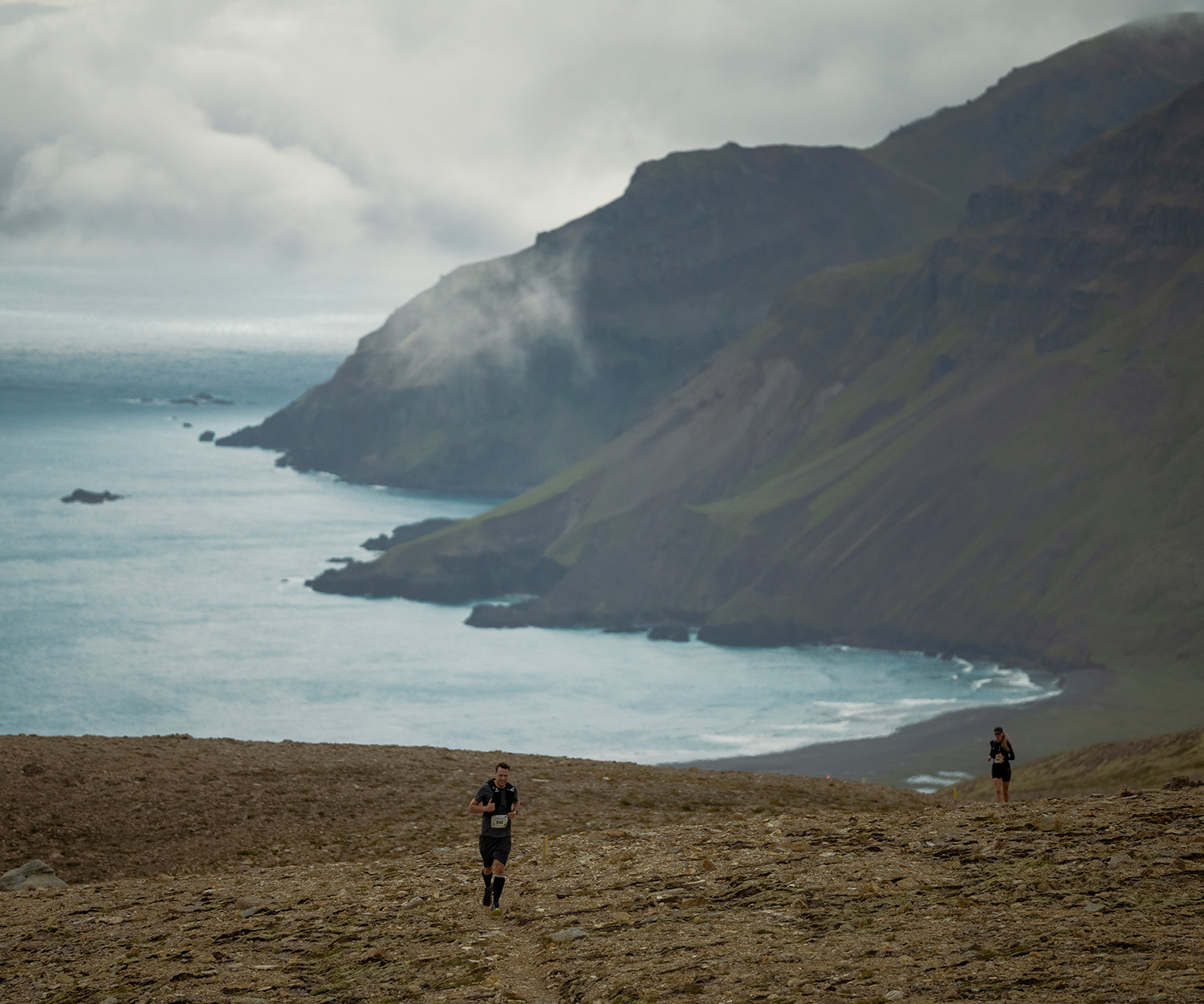
Trail Running
Running Among Giants: Exploring Iceland’s Trail Running Scene
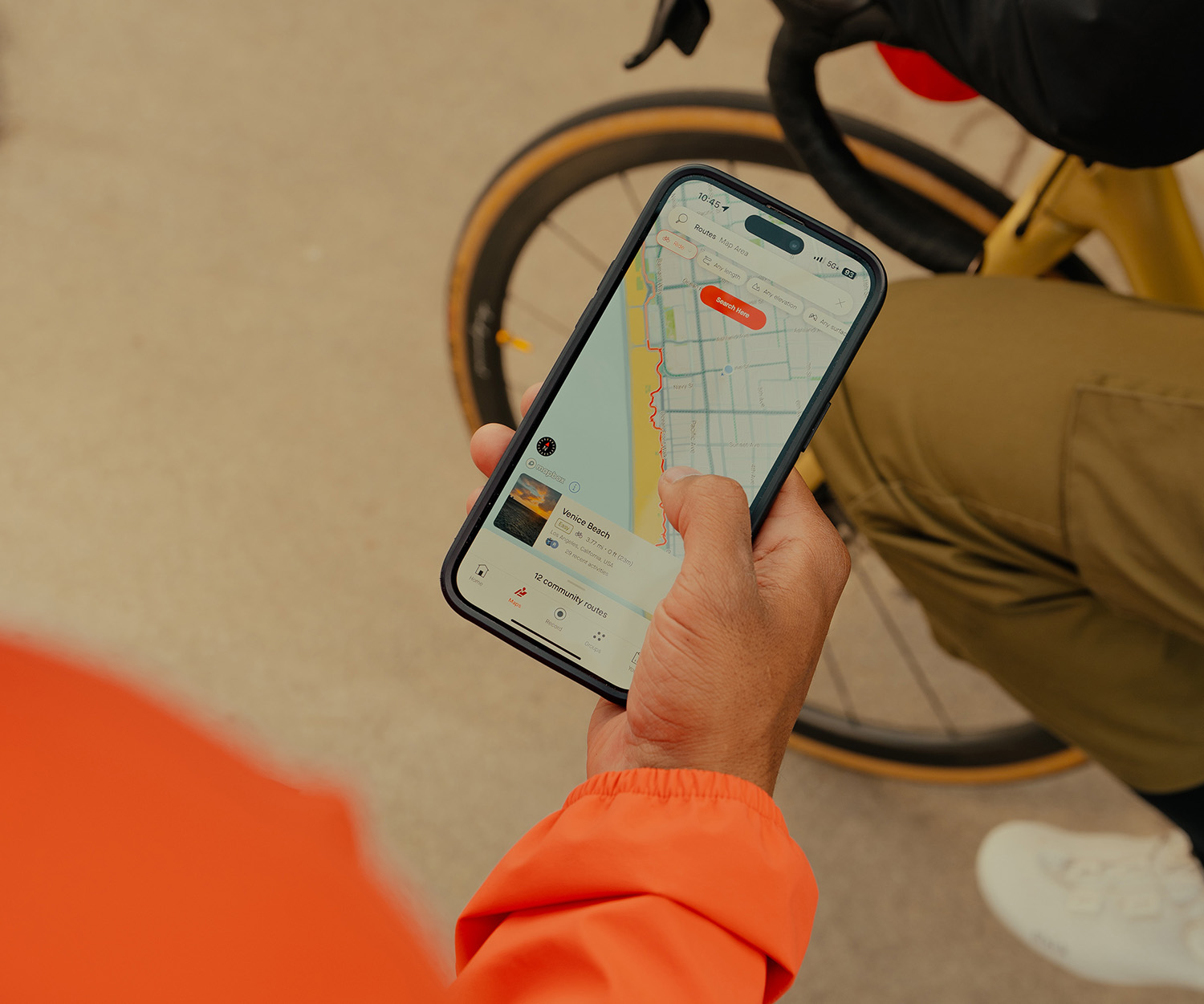
Multi-Sport
Strava Routes and Heatmap: Find New Places to Go
- Where to stay – Chamonix
- Geneva Airport to Chamonix
- Itineraries
- Tour du Mont Blanc Refuges
- Refuges ebook

Planning – the first steps

If you’re planning to trek the Tour du Mont Blanc by yourself, with no guide, then this is where to start to plan your TMB adventure. If you’re unsure whether to trek independently self guided, with a tour group or pay for a self guided package, read my Self Guided v Guided post .
Planning your route isn’t as easy as it first looks, unless of course you aim to follow the standard 11 day full circuit itinerary which is laid out for you in all the guide books. Simple.
The 11 day circuit is pretty full on – trekking between 7-9, perhaps even 10 hours a day over terrain that cumulatively equates to the height of Everest! If you’re match fit and have the time then this is the perfect option, perhaps just adding a day in Courmayeur as a rest day and a couple in Chamonix for start/finish days.
If you’re planning to alter the standard 11 day itinerary because of various factors, the planning gets a little more tricky. Perhaps you don’t have two weeks to dedicate to the trail. You might only have a week and want to walk the most scenic stages. Perhaps you don’t want to be on the trail for so long every day, you want to take it slower and absorb the mountains instead of having to slog it out each day. Perhaps you’re worried about your fitness or are hiking with kids, or you’re hiking in your golden years? All these scenarios require you to alter the standard 11 day itinerary and that my friend means a bit more work.
You can, of course, just book your refuges online at the official TMB site . It’s easy to do. You can choose your starting point, the direction you want to hike in and then choose each refuge to build your itinerary. It gives you the approximate length of time for each refuge from your start point, you select your first refuge and then you can choose your next stage, which will take you onto the next set of accommodations/refuges you can book for that step (with the approximate times from where you stayed the previous night).
However, the pitfall of the online system is that some of the refuges aren’t on it so you can’t book your entire circuit in one fell swoop (unless you’re planning on travelling the lower Val Ferret route on the Italian side which we would only suggest in bad weather).
Rifugio Bonatti – the infamous high mountain refuge on the Italian side is private and so is not on the online system. Others such as the most incredibly placed Refuge Lac Blanc are on the system but you can’t book via the online system – you need to contact the refuge directly. There are a number of excellent refuges that are not on the online system so this needs to be considered when trying to make your bookings – know which are private and know that you’ll need to contact them direct – this takes more time to email and get a response back. Some of these private refuges are beginning to build online reservation systems on their websites which is going to make reserving beds a lot easier. Refuge Col de Balme has already done this however it’s not taking reservations bizarrely until March and the word on the street is that Refuge Lac Blanc is currently building theirs to launch January 2024 – watch this space …..
Regardless if you’re hiking the tour self guided independently, and even if you use the online booking system, you’ll still need to piece together your accommodation like a giant puzzle.

Here are our top suggestions to help you plan your own self guided TMB adventure:
1. Get your head around the trail
Read as much as you can, early on, before you even want to think about booking the refuges.
Buy a couple of the guidebooks. Kev Reynold’s Trekking the Tour du Mont Blanc is the most longstanding and popular guidebook, although we love the detailed maps in Trailblazer’s Tour du Mont Blanc by Jim Mathorpe.
There’s also a new guidebook Tour du Mont Blanc by Kingsley Jones released recently which we’re reviewing right now.
If budget isn’t an issue, consider buying a 3D relief map of the Massif du Mont Blanc area to put up in your home while you plan the trail. They cost around €40 online and are invaluable for understanding the elevation aspects of the trail and are, of course, fantastic souvenirs once you’ve completed this epic trail.
2. Decide how long you want to hike each day
You need to think about how long you want to be hiking on the trail each day. Is your aim to complete it in the fastest possible time, or do you want to relax, take in the incredible scenery and enjoy your walking holiday?
How fit are you? What might take some hikers 7 hours to complete, may take 9 hours for others. Expect to be on the trail between 7-9 hours a day if you’re hiking one stage per day which means you’ll be setting off 7.30-8.00h and arriving between 16-17h.
Don’t just look at the kilometres involved in each stage. More seriously you need to take into account the elevation gain (and loss) each day. Always expect it to take longer than you anticipate – sometimes by two hours!
The most common feedback from trekkers after they’ve completed the trail, after raving about the sheer beauty and how incredible it was (!) was that they underestimated the elevation !
I now recommend that you buy a copy of the map by Kingsley Jones in your planning stages – it has a very useful elevation map of the entire 170km trail with very accurate timings for a walker, a trekker, a fast packer and a trail runner. Not only does this map gives you a reality check on the elevations of each day, it also enables you to calculate to a good degree how long each stage will take you.
One way to try to calculate how far you are able to hike each day is to measure your pace. Try timing yourself on a sample hike similar to one of the stages on the Tour du Mont Blanc. Easy if you’ve got some mountains near you. Not so easy if not.
Once you have the Kingsley Jones map you can however time yourself on the first day or two between particular timing points and you’ll get a good idea of whether you’re on his walker or hiker pace. From there you can easily calculate what time you should arrive at the refuge each night for the rest of the trail.
If you want to shorten some of the days on the trail, or skip some sections by taking public transport, there are some great options on my itineraries page .

3. Research the refuges
Decide what kind of TMB experience you want to have when it comes to your accommodation. Are you happy to stay in high altitude huts in rough and ready conditions or do you want a few more home comforts? And know that not all huts were created equal.
The standard of hut when it comes to quality, comfort & welcome varies wildly on the tour. You can still have a high altitude hut experience without it being, well, disappointing. You just need to know which refuges to book!
With this in mind a little research goes a long way and it will affect your daily schedule because you know you want to stay in refuge X,Y and Z but definitely not B.
Our post, Tour du Mont Blanc Refuges – the good, the bad and the ugly will help you identify which refuges to avoid and which to snap up. For much more information on the refuges I’ve now written an 87 page TMB Refuges Ebook which details 24 of the refuges and accommodation on the trail with interior refuge photos, what the rooms look like, what food you can expect as well a full guide on how to book the refuges.

Tour du Mont Blanc Huts – the good, the bad & the ugly
Do yourself a favour and book your Tour du Mont Blanc huts early –…

5 unmissable refuges on the Tour du Mont Blanc
All refuges were not created equal. Make sure not to miss out on one…

Dorm or private room? Your guide to which refuges offer what accommodation
This post will help you decide which TMB refuge accommodation to book, particularly if…
4. Consider public transport options
Unless you’re a TMB purist who would never dream of skipping a stage, know that there are some good reliable transport options on the Tour du Mont Blanc for those of you who might want to drop a section here and there to make the hike shorter, or who just want a back up in case of tiredness.
Perhaps you only want to hike the raw, rugged jagged sections where the landscape is wild and the cols high. In this case if you’re looking to shorten the hike, you might miss some of the Swiss sections with their more serene countryside. Think rolling hills and charming hamlets.
Perhaps you just want back up in case of bad weather – and this is a real possibility so take heed. It is always good to know what plan B is.
5. Acclimatising – days before the hike
Think about your arrival day. Most will arrive into Geneva airport, many from long haul flights. You’ll be tired and your body weary.
Many of you may be coming from sea level so to hit Chamonix which lies at 1035m elevation in itself and then hitting the trail, even the next day might be a lot for your body to take.
If you’re following the traditional anti-clockwise tour then Stage 1 isn’t too much of a of a slog elevation wise, especially if you take the Bellevue cable car up! The highest point on the first day is Col de Voza at 1653m or if you’re thinking of taking the alternative route (only in good weather) the Col de Tricot’s lofty heights top at 1478m).
However, if you’re not too fussed about following the traditional route then consider basing yourself in Chamonix for a couple of days to acclimatise and do a couple of ‘training hikes’ which could actually be on the Tour du Mont Blanc route anyway. For example Stage 10 (Tré-le-Champ – La Flégère) and Stage 11 (La Flégère – Les Houches) can be accessed directly from the Chamonix Valley and you could hike these stages as day hikes with just a light day pack and stay in a Chamonix hotel with all it’s comforts before hitting the main trail.

Further Reading...

Trekking the Tour du Mont Blanc in June – early season

Water stops on the TMB

The Tour du Mont Blanc’s 11 stages
Hi Mags, Do you have any information on booking for Cabane du Combal? Ingrid had emailed me nack in early October telling me the website would open on 1/11 however there is some problem with the synchronising of the website so it is still closed for bookings. I have been checking coninually since 1/11 Thanks for any info you may have Vivienne
tourdumontblanchike
Hi Vivienne Cabane Combal is now open online for reservations. They’ve solved the issue.
Leave a Reply Cancel Reply
Save my name, email, and website in this browser for the next time I comment.
This site uses Akismet to reduce spam. Learn how your comment data is processed .
Tour du Mont Blanc Stage 7
Responsible hiking, tour du mont blanc hike, privacy overview.
- Plan Your Trip
- Espace Diamant
- Espace Killy
- Grand Domaine
- Grand Massif
- Megeve / Evasion Mont Blanc
- Mont Blanc / Chamonix
- Outside the Alps
- Portes du Soleil
The Tour du Mont Blanc hike: everything you need to know
Photo by Ana Frantz
The Tour du Mont Blanc (literally meaning “around Mont Blanc”) is a world-renowned, 170 km hiking trail in the French Alps, passing through France, Switzerland and Italy.
Split into 11 stages, the tour starts and ends in Les Houches in the Chamonix Valley. However, unlike many other mountaineering challenges in the area, it requires little to no climbing skills.
In this post, we cover everything you need to know about the Tour du Mont Blanc, from its history to the best time to go, as well as details of the routes, where to stay and top tips.
Read on to discover everything you need to know about this mountain hike…
The history of the Tour du Mont Blanc
There is a long and rich history behind the Tour du Mont Blanc hike. First attempted by “Horace Benedict de Saussure” in 1767, the trail was walked by Roman soldiers and Celtic tribes who used the “Col Du Bonhomme” as a trade route, as well as shepherds who would move their herds between the valleys.
The Tour du Mont Blanc hike: key details
The Tour du Mont Blanc hike can only be completed in summer, from mid-June until the end of September. If you’re thinking of cutting certain stages, the public transport options (cable cars and shuttle buses) only run in July and August.
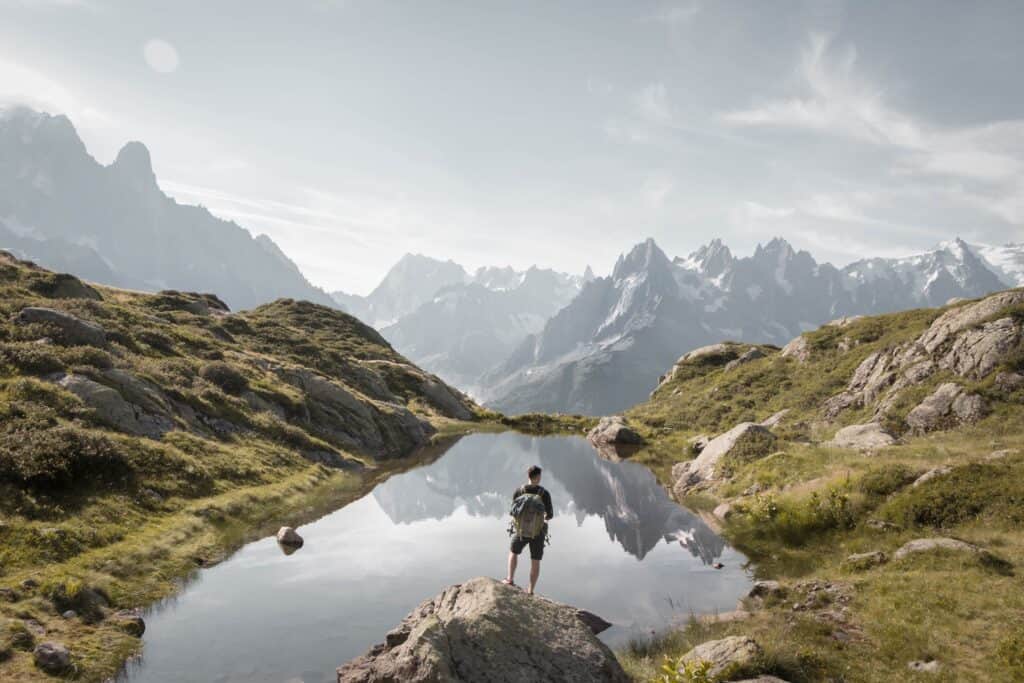
What to pack
It goes without saying, you need to be incredibly stringent when it comes to packing – you will thank yourself later!
Pack as light as you possibly can and omit any luxuries you can live without. Before departing on your adventure, make sure you test all of your gear out thoroughly to see if it’s comfortable and can withstand the requirements.
If you struggle to narrow it down to the essentials, then you may want to look at organising luggage transfers to make things easier.
Here’s an idea of what to take with you on the Tour du Mont Blanc hike:
- Backpack : The type of backpack you need depends on whether or not you plan on camping or staying in mountain refuges. If you’re camping, you’ll need a backpack with a 50-60 litre capacity, for the latter you’ll need a 25-30 litre backpack. Ensure your bag has chest and hip straps to spread the load, plus a waterproof cover. Kids will need to carry their own small backpacks with all the same features.
- Clothing : Layers are absolutely essential. You need to be able to adjust and adapt according to the conditions on any given day. Include a variety of lightweight, synthetic layers which will dry quickly if you get wet plus a fleece , waterproof jacket / trousers , a couple of pairs of hiking shorts and approximately 3 technical t-shirts.
- Socks: 4-5 pairs of socks
- Boots: Do not scrimp on your boots, invest in a high-quality pair and wear them in thoroughly before you head off. We’d recommend heading to an outdoor sports store where professionals can advise you on the best model for your needs and the shape of your feet.
- Comfy shoes: Some flip-flops or lightweight slippers for your overnight stays will be a welcome relief.
- Trekking poles: Even if you’re used to hiking without them, poles will be essential for this trip. Take a look at these top-recommended makes and modes .
- Hiking crampons: You may not think these are a necessity when hiking in summer, but high altitudes mean snow and ice patches even in July. Discover some top picks here .
- Sleeping bag liner: For hygiene and comfort reasons, many refuges will require you to have a sleeping bag liner for your stay.
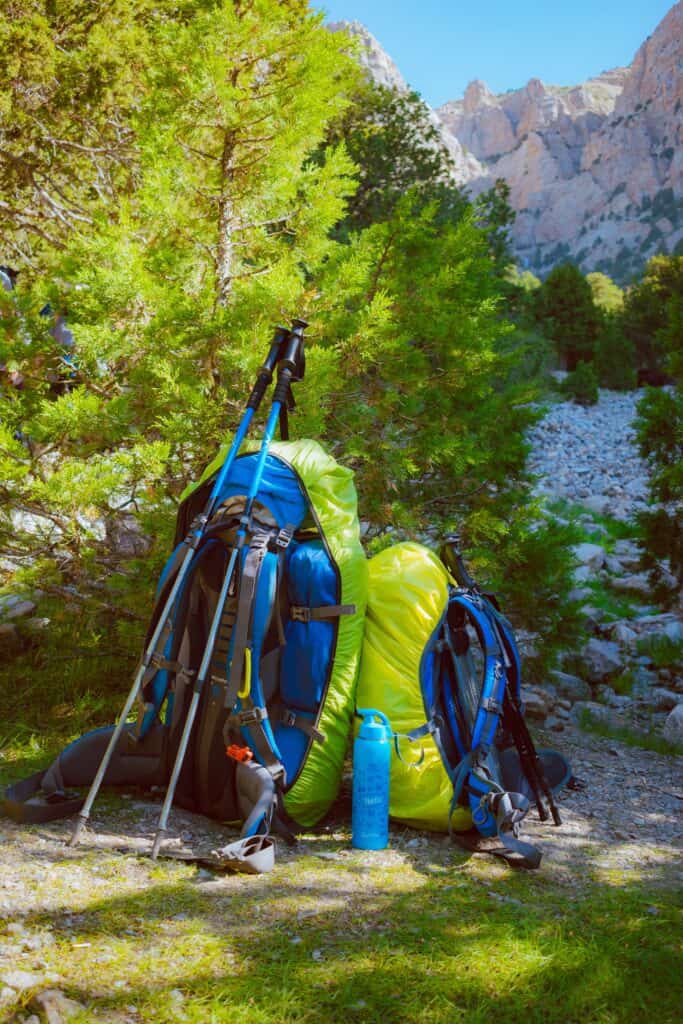
The overall mountain hike is 170 km/105 miles long and split into several stages which pass through 7 valleys. There are a number of variants that you can choose to take, and you can choose from a guided or self-guided tour.
In this post, we’ve gone with a route that has 11 stages. Each stage averages approximately 13-20 km in length and takes around 7-9 hours a day.
With the route we outline in this post, most hikers will complete a stage per day, with more advanced trekkers doing it even more quickly. However, some may choose another route, going at a more leisurely pace which can take up to 14 days to complete the entire tour.
Do bear in mind though, that although the tour is open to all, it is a challenging expedition.
There are a number of access points including Les Contamines (France), Courmayeur (Italy) or Champex-Lac (Switzerland). So if you want, you can choose to hike sections of the route if you don’t have the time to complete it in full.
Most people choose to navigate the trail anti-clockwise . This is so you can enjoy maximum views of Mont Blanc along the way. But, because this is the most popular route, it can get busier than going clockwise.
For those who don’t have time to hike the whole tour in one go, or are doing it with kids, splitting it in two can be a good option. You can do this by completing the Les Houches to Courmayeur section one summer and then returning to Courmayeur the following summer to hike back to Les Houches and conclude the circuit.
Below we’ve listed the details of each stage. To jump to a certain stage, click on the links below:
Stage 1: Les Houches – Les Contamines
📈 Elevation: 646 m
📉 Descent: 6333 m
🥾 Distance: 16 km
💪 Difficulty: Moderately difficult
🛏️ Accommodation: Refuge de Bellachat , Refuge de Miage or Auberge du Truc , Refuge de Nant Borrant
Stage 1 of the hike kicks off in Les Houches. From there, you will pass through Bionassay and into Les Contamines.
If you choose to do the first part of the trail on foot, you’ll be thrown in at the deep end, with a 600 m climb up to the Col du Voza . There, you can marvel at the views of the Dome du Gouter and Aiguille de Bionassay . However, if you’d prefer a gentler start, then opt to take the Bellevue cable car up to preserve your energy.
For another variation, take the route through the Col du Tricot to experience even more magnificent views. However, this route is a challenge and is home to rougher terrain, so should not be attempted in bad weather.
You can also skip this stage altogether and begin from Les Contamines, which you can access by bus or taxi from Chamonix. This is a good option if you want to shorten your overall hike. Alternatively, Les Contamines is just over 1 hour by car from Geneva airport, so if you’re travelling from further afield, you could begin your trip from there directly.
Stage 2: Les Contamines – Les Chapieux
📈 Elevation: 1316 m
📉 Descent: 929 m
🥾 Distance: 18 km
💪 Difficulty: Moderate
🛏️ Accommodation: Refuge de la Nova , Chambres du Soleil , Refuge des Prés
The second stage is a challenging one, with an elevation of 1316 m over Col du Bonhomme and Col du Croix du Bonhomme.
Due to the altitude, there are some snowy patches even into summer, so make sure to pack the correct gear, especially if hiking early in the season.
Alternatively, you can cross the Col des Fours and head straight down the (very steep and potentially icy) descent directly to Ville des Glaciers and stop at Refuge des Mottets . This will save time on stage 3, but this route is not recommended for beginners or leisurely hikers.
Stage 3: Les Chapieux – Rifugio Elisabetta (Italy)
📈 Elevation: 1004 m
📉 Descent: 258 m
🥾 Distance: 15 km
💪 Difficulty: Easy – moderate
🛏️ Accommodation : Rifugio Elisabetta
The Col de la Seigne marks the beginning of the Italian portion of the trail at stage 3. Here, you will have the option of taking a shuttle bus from Les Chapieux to Ville des Glaciers to cut approximately 1 hour off your route.
The Col de la Seigne climb is gradual, however, by this stage, it can feel challenging as the past two days begin to catch up with you. But on the plus side, you’ll be rewarded with a cultural treat at La Casermetta Museum!
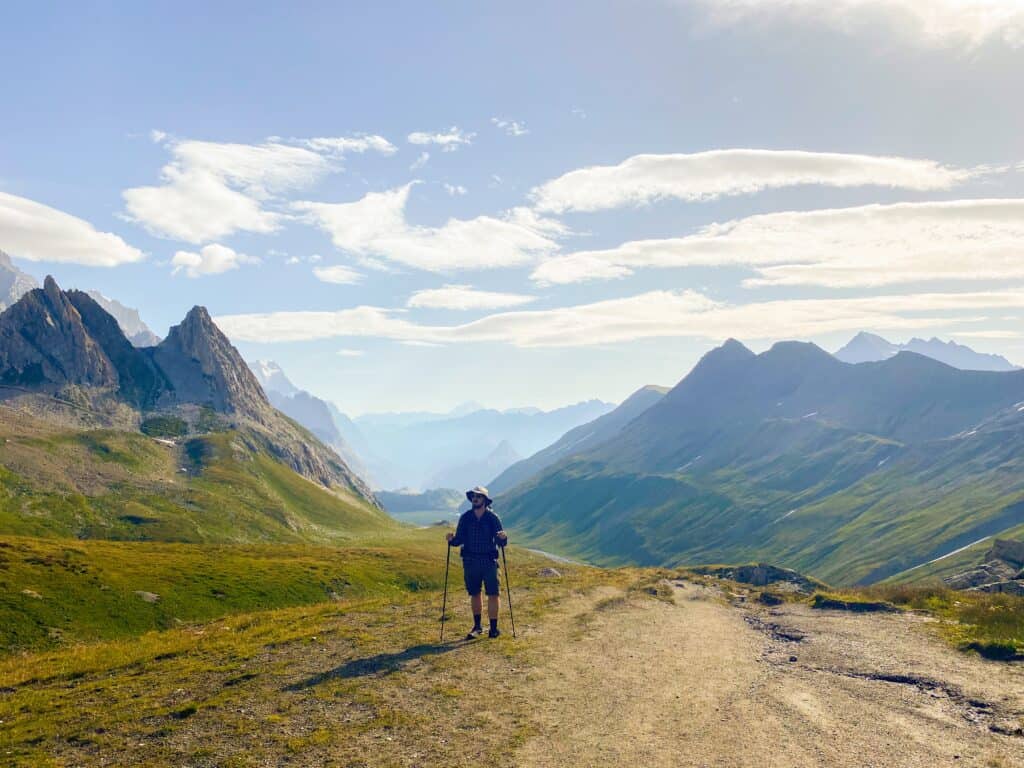
Stage 4: Refugio Elisabetta – Courmayeur
📈 Elevation: 460 m
📉 Descent: 1560 m
🛏️ Accommodation : Cabane du Combal , Hotel Chalet Val Ferret , Hotel Funivia , Gite le Randonneur du Mont Blanc
Stage 4 demands less elevation than stage 3, but by this time, you will be feeling the effects of your hike, so don’t forget to pace yourself.
Expect a steep descent from Refugio Elisabetta down into the Val Veny and onto Lac Combal. From there, you’ll climb up to L’Arpe Vielle Superior , onto Mont Favre , before reaching Col Chécrouit and descending into Dolonne and finally reaching Courmayeur .
If you want to cut out the last bit, in peak season you can take the chairlift from Col Chécrouit to Dolonne. Alternatively, you can catch the bus from La Visaille to Courmayeur to make things a bit easier.
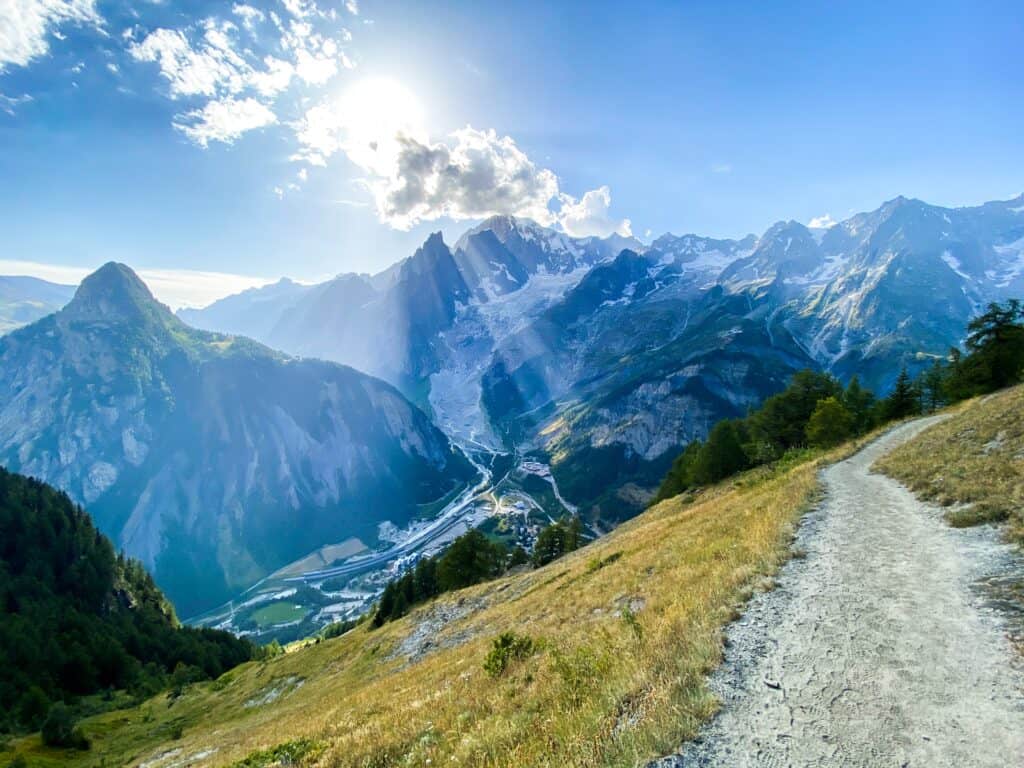
Stage 5: Courmayeur – Rifugio Bonatti
📈 Elevation: 860 m
📉 Descent: 101 m
🥾 Distance: 12 km
🛏️ Accommodation : Rifugio Bonatti
Throughout this stage, you can enjoy a climb through the woods before taking a quick break at the Refuge Bertone . From there, you’ll traverse the side of the Mont de la Saxe and eventually reach Rifugio Bonatti .
Again, if you’re in need of a shortcut, you can take a bus from the Place Le Monte Bianco to the Bivio Refugio Bonatti bus stop. However, you will still need to hike for 1 hour up to the refuge – so don’t get too comfortable!
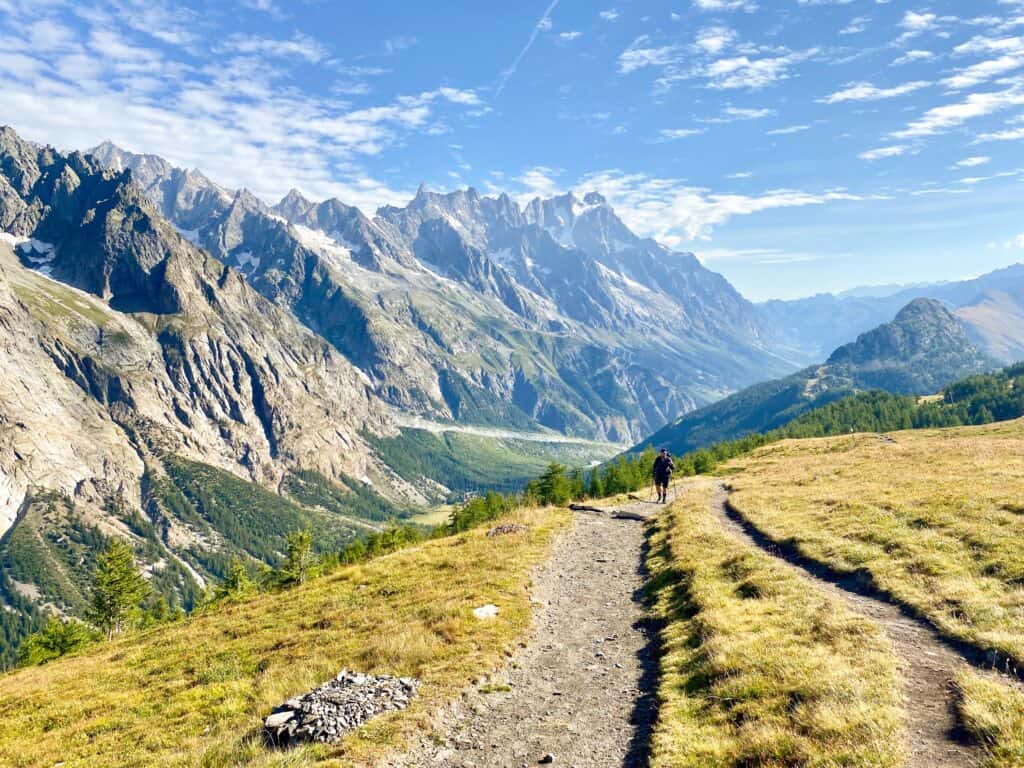
Stage 6: Rifugio Bonatti – La Fouly (Switzerland)
📈 Elevation: 895 m
📉 Descent: 1410 m
🥾 Distance: 20 km
💪 Difficulty: Moderatey difficult due to length
🛏️ Accommodation : Rifugio Elena , Gîte de la Léchère , Auberge des Glaciers , Gîte de La Fouly , Chalet ‘Le Dolent’ , Hotel du Col de Fenêtre , Hôtel Edelweiss , Maya-Joie
It’s time to head into Italy! And the gentle nature of this leg of the tour is a welcome relief after the tougher foregoing days.
You’ll make your way up the grand Col Ferret , before descending into Val Ferret and onto La Fouly, where there are a number of places to stay.
Stage 7: La Fouly – Champex-Lac
📈 Elevation: 420 m
📉 Descent: 565 m
🛏️ Accommodation : Auberge Gîte Bon Abri , Relais d’Arpette , Chalet La Grange
Stage 7 is another fairly undemanding stage of the Tour du Mont Blanc. From La Fouly, you can enjoy a pleasant stretch through forest and meadows before a final push uphill to Champex-Lac . Some may choose to take the bus to Champex-Lac instead from Ferret or La Fouly to save time and money.
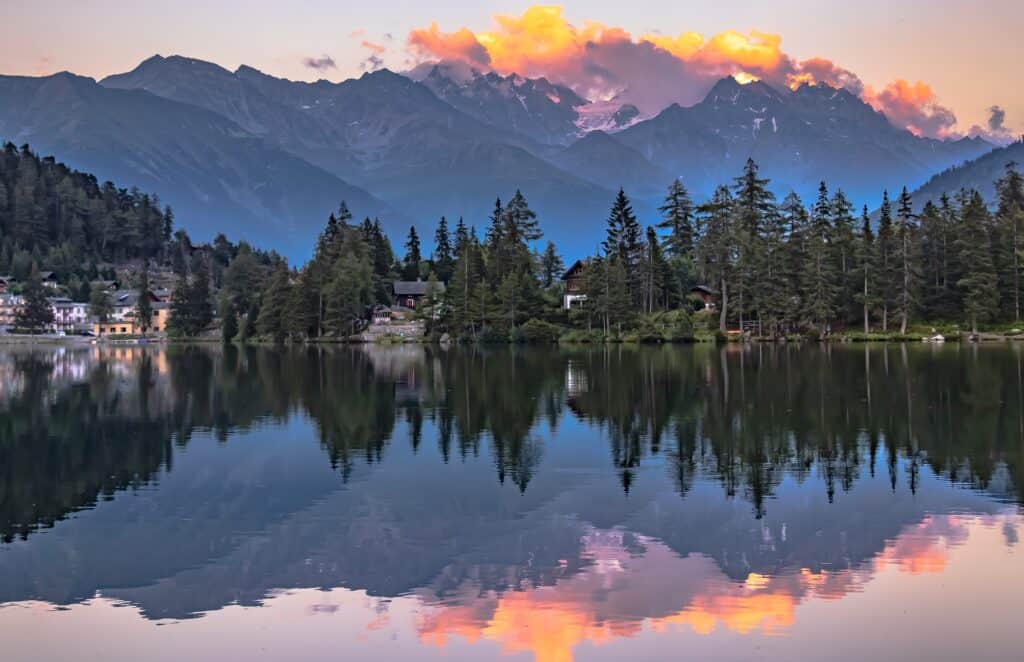
Stage 8: Champex-Lac – Col de la Forclaz – Trient
🥾 Distance: 16 km to Col du Forclaz, 18 km to Trient
💪 Difficulty: Difficult
🛏️ Accommodation : Auberge Mont-Blanc , Hôtel du Col de la Forclaz , Refuge Le Peuty , La Grande Ourse
Take in the views of the stunning Canadian-style lake in Champex-Lac before making your way through green pastures and meadows and passing picture-perfect Swiss chalets.
However, although there’s no col, the climb from Plan de l’Au buvette (1330 m) to Alp Bovine (1987 m) is extremely challenging. Once you reach Alp Bovine , you’ll have a further 53 m ascent before a well-deserved descent through woodland to the top of the Col de la Forclaz.
From here, you can choose to either catch the bus, saving yourself 1 hour more hiking, or continue by foot onto Trient.
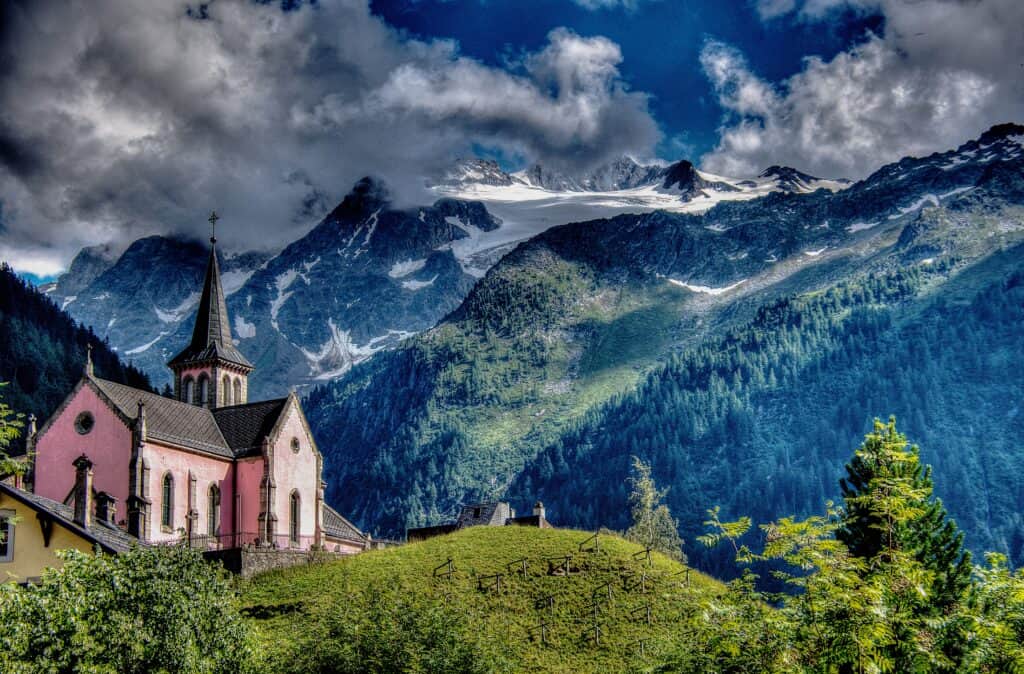
Stage 9: Trient – Tré-le-Champ (France)
📈 Elevation: 1137 m
📉 Descent: 1077 m
🥾 Distance: 14.3 km
🛏️ Accommodation : Auberge la Boerne
Having completed the Swiss phase of the hike, this stage brings you back into France via the Col de Balme. This is a moderately difficult portion of the hike, however the stunning views of the Chamonix Valley will be worth the challenge.
If you want a wider choice of accommodation, you may be better off heading onto Les Frasserands or Argentiere where there’s a bit more going on.
Stage 10: Tré-le-Champ – Flégère
📈 Elevation: 1043 m
📉 Descent: 495 m
🥾 Distance: 8.6 km
🛏️ Accommodation : Refuge de La Flégère
With the home stretch in sight, the penultimate section of the Tour du Mont Blanc hike is an unforgettable one.
Adventurous hikers will love navigating their way up the metal ladders, platforms and steps that aid this rocky stage up to the Tête aux Vents (2132 m). From here, marvel at the stunning Alpine views prior to continuing on to Flégère via the higher trail which brings you to Lac Chesery (camping permitted) and onto Lac Blanc (camping not permitted).
Bear in mind, Lac Blanc will likely be busy up until 3-4 pm as this is a particularly popular hotspot for day-hikers in summer.
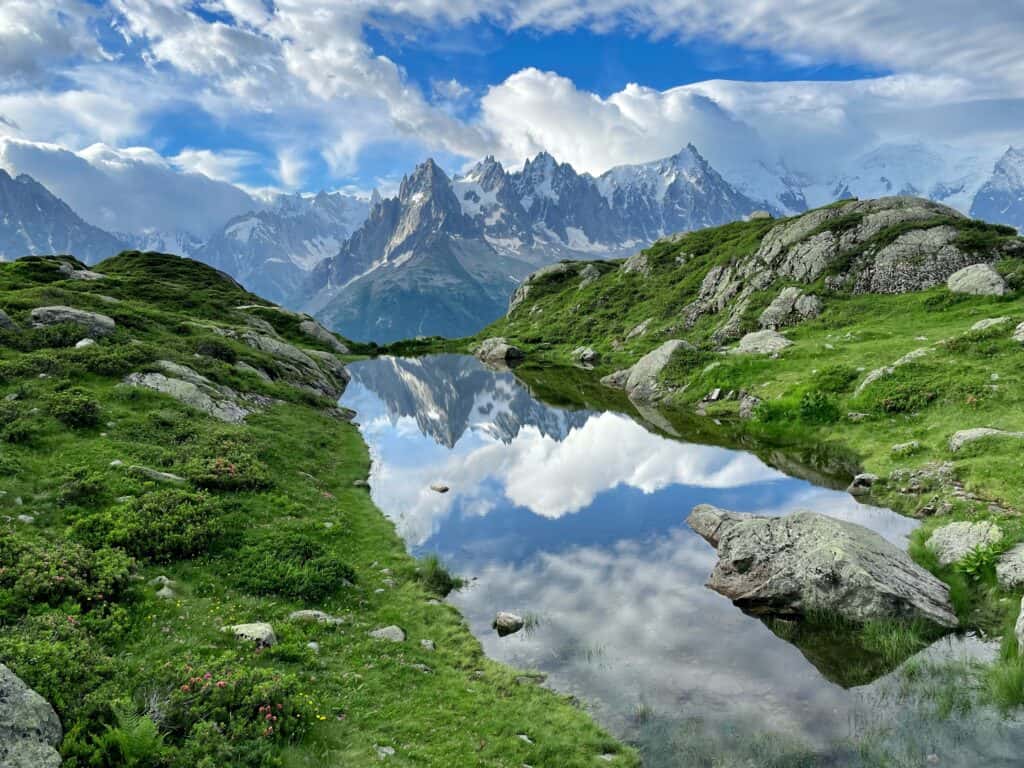
Stage 11: Flégère – Les Houches
📈 Elevation: 772 m
📉 Descent: 1546 m
🥾 Distance: 17 km
Finally, we come to the end of the tour! The considerable descent of the final stage will certainly make you glad to see the finish line. However, the remarkable views of Mont Blanc from the “balcon sud” will make it worth your while.
When you get to Brévent , you have two options: take the cable car to the summit or set your mind to the last ascent, which will take you between 1-2 hours.
Before reaching your journey’s end, you’ll need to descend some rough terrain on your way back to Les Houches – but just think of the sense of achievement once you get there!
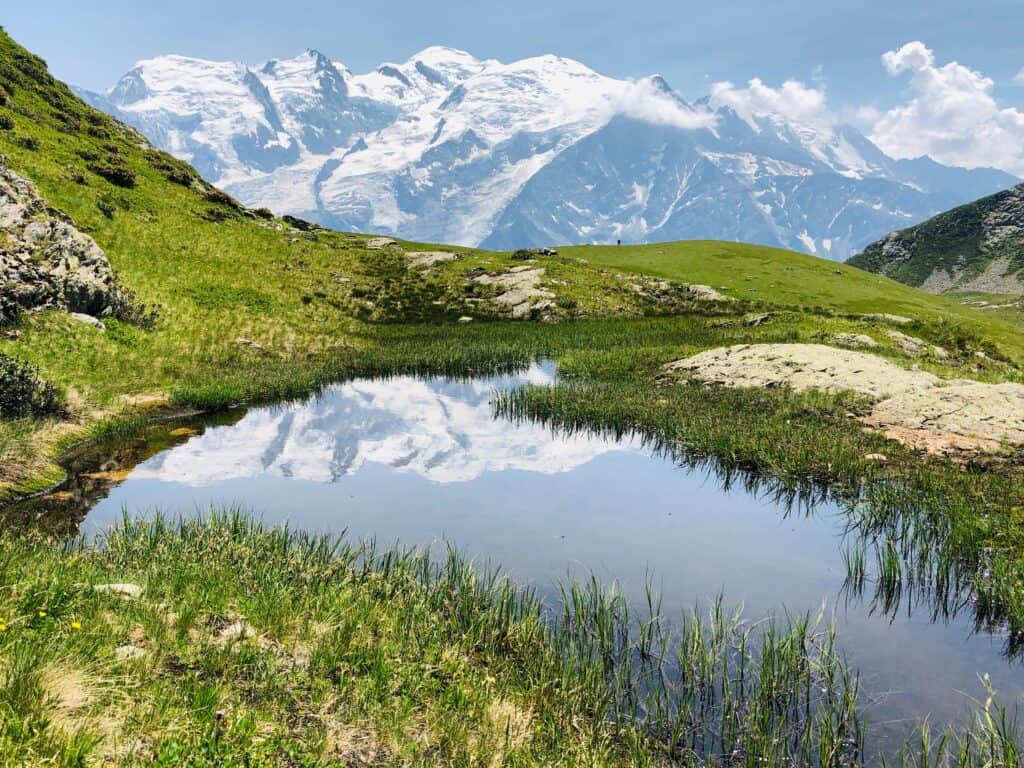
Wildlife spotting
The French Alps are a hot spot for a rich variety of wildlife and summer is the perfect time to spot them! Keep your eyes peeled along the way and you may be lucky enough to spot some of the following:
- Golden eagle
- Bearded vultures
Have a look at our post on summer animals in the Alps to find out more about each species.
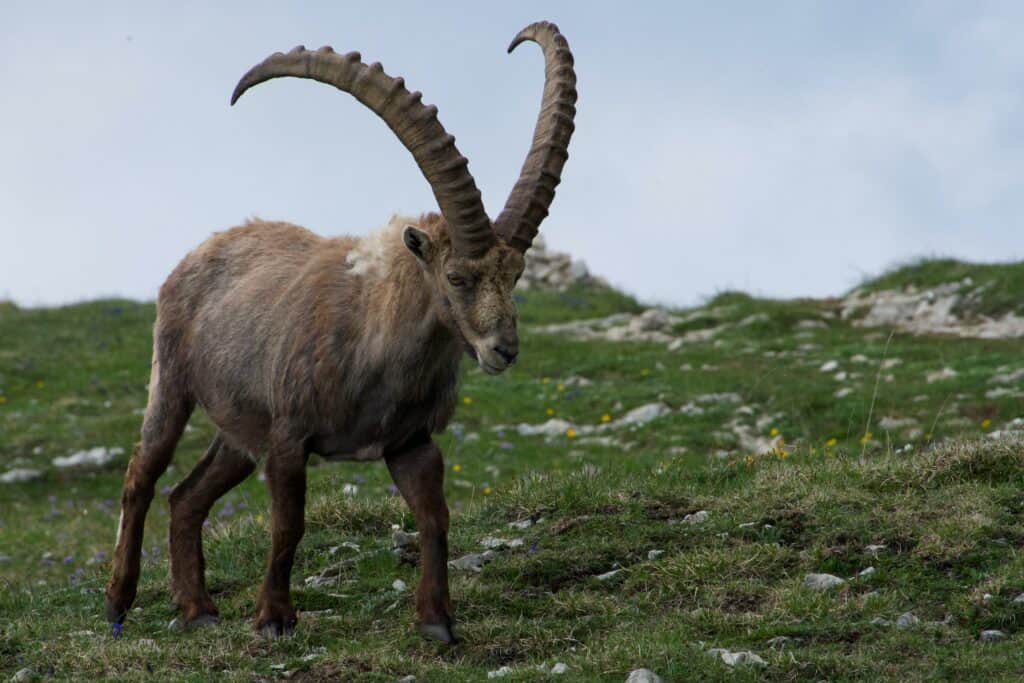
The Tour du Mont Blanc is one of the top-rated mountain hikes in France. If you’re an avid hiker and you have the time and resources to do it, you should definitely give it a go! You’ll be able to test your limits, take in some breathtaking views and maybe even spot some mountain wildlife along the way.
We hope you found this introductory guide helpful. However, this topic is extensive, so there’s plenty more reading to be had! Here are some more resources you may find interesting about The Tour du Mon Blanc and hiking in France:
- Tour du Mont Blanc website
- Bookatrekking.com (guided and self-guided tours)
- A guide to refuges along the Tour du Mont Blanc
- Walking holidays in the Alps: our favourite walks
- 5 reasons to visit the Alps in June
- 5 reasons to visit the Alps in July
Further Reading...
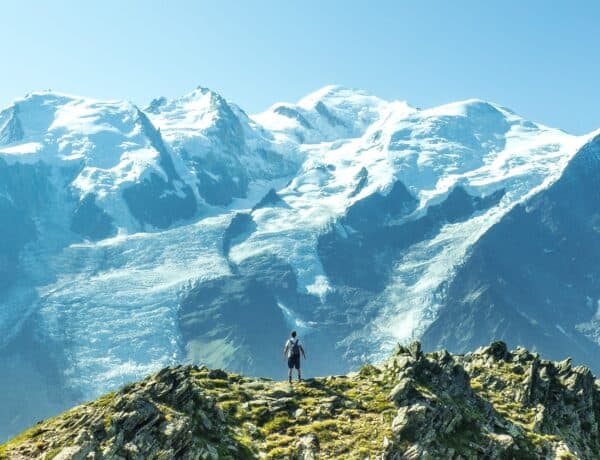
Best Hiking Routes in Chamonix
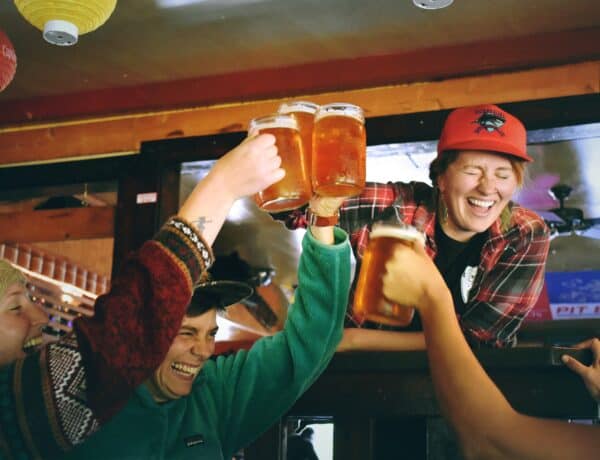
Where to find the best après-ski in Chamonix
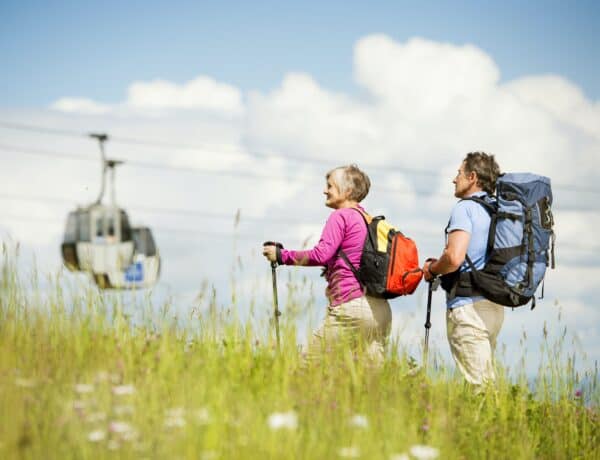
7 Spring hikes around La Giettaz
Adding a sauna or steam room to your rental chalet in the alps, 7 reasons to invest in the grand massif, subscribe to our newsletter.
Be the first to hear about beautiful new properties and exclusive offers


Hiking the Tour du Mont Blanc: An Overview Guide
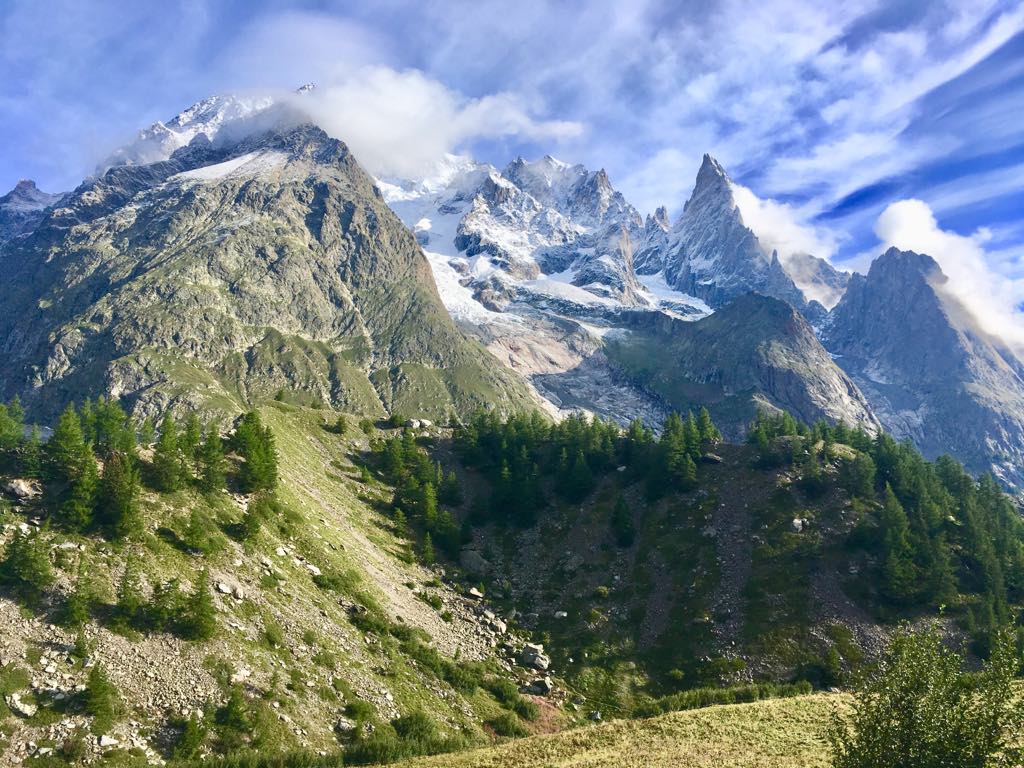
Top tips and recommendations to hiking the Tour du Mont Blanc
[Updated April 2020]
This post contains affiliate links for which Expedition Wildlife may receive a commission (where applicable) at no additional cost to you.
Tour du Mont Blanc Statistics
Distance Total: 105 miles (170 kilometers).
Total Elevation Gain : 8,900 meters (29,200 feet).
Total Elevation Loss : 9,100 meters (29,855 feet).
Duration : 11 days .
Physical Difficulty Level : High – the consistent elevation gain and loss requires hikers to be in good physical shape prior to the trek.
Mental Difficulty Level : Low – well-marked trails, ample food and lodging availability, and lack of isolation on the trail give hikers a better peace of mind.
Gear Necessity : Good hiking shoes and trekking poles will be your most cherished pieces of gear on the TMB. Acquire sturdy layers, especially a high quality rain coat and rain pants.
Recommended Guides: Cicerone’s T rekking the Tour of Mont Blanc by Kev Reynolds is an essential, step-by-step guide to the trail. *This is our recommended guide to take with you on the trail!!*
The Tour du Mont Blanc website , montourdumontblanc.com has information about all of the refuges and their contact information and availability. The Tour du Mont Blanc Facebook page is a great place to ask others about their experiences and recommendations for the trail as well as keep up with trail conditions and news as you prepare for your journey around Mont Blanc.
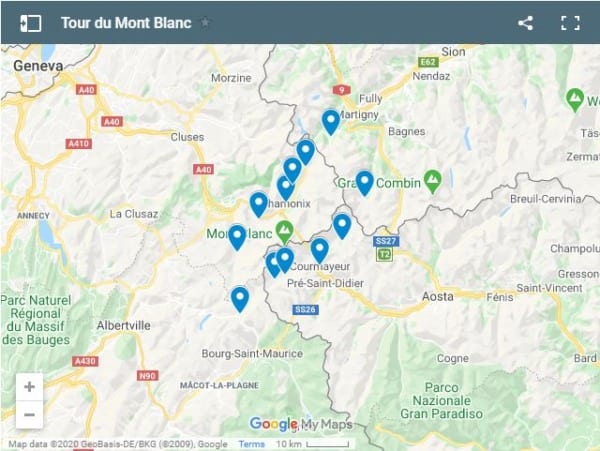
Click the Google Maps image to see all the stages listed on this trek.
About Mont Blanc and the Tour
About the tmb: a quick look.
The Tour du Mont Blanc (aka the “TMB”) traverses the alpine environment surrounding the stunning and imposing Mont Blanc. It leads through three countries: France, Italy, and Switzerland.
This famous trek has been listed as one of the top long-distance treks in the world time and time again, and for good reason.
The elevation gain and loss are what make this trek more challenging, but overall the path is well-worn, well-marked, and wide enough that serious safety issues largely aren’t a concern.
Distinctive yellow diamonds with “TMB” inscribed in the center and red-and-white blaze marks are your hiking route markers. Note that some of these markers look like street signs, with a red and white blaze, and a direction towards a specific location. Because of this, knowing the main points along your hiking route will come in handy throughout the day.
You’ll walk through sweet towns, into remote mountain passes, through cow and sheep paddocks, along beautiful streams, and so much more. If you love hiking, this is definitely a trek for you!
About the Mont Blanc: A Quick Look
Mont Blanc is the symbol of the Alps, stretching high above the valley and imposing over everything in its wake.
The Mont Blanc, meaning “white mountain” after its year-round white peaks and glaciers, stands at 15,771 feet (4,807 meters) and is the tallest mountain in the Alps and Europe , outside of those found in Russia. Quite literally during this trek, you will ascend and descend the equivalent of about 8 mountains , so the elevation gain and loss throughout the trek is no joke!
The Mont Blanc had been circumnavigated through its adjoining valleys and mountains by people for centuries. It wasn’t until 1786 that two men, Jacques Balmat and Dr. Michel Paccard, summited the beast.
While you won’t summit the Mont Blanc on this trek (summiting is for those with mountaineering experience, a permit, and (usually) a guide), you’ll certainly experience everything this beautiful region and its people have to offer.
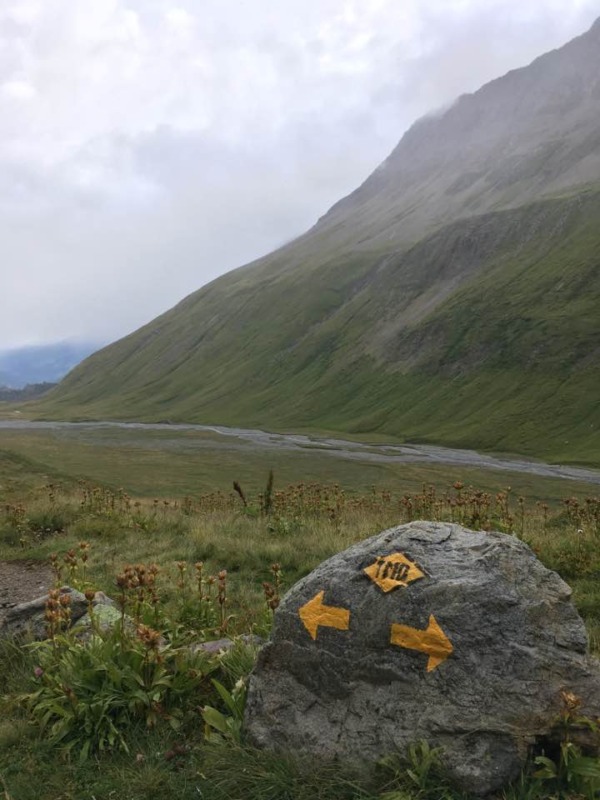
Follow the yellow diamonds labeled “TMB” for “Tour du Mont Blanc,” or the red-and-white blaze paint, as your route throughout the duration of the trek. Photo by Christa Rolls
Hiking the Tour du Mont Blanc: An Overview
The Tour du Mont Blanc was a shock to my system after hiking the wilderness trails of Washington State.
This is a hut-to-hut hike
Most people “hut-hike,” or hike from hut (or hotel) to hut. Tent camping is limited along most sections of the TMB, including in the Vallee de l’Arve, the Vallee des Galciers, and in the Swiss and Italian valleys along the route.
The TMB is very popular
The trail will be busy – and I mean BUSY, especially in summertime. If you’re looking for more solitude, you won’t find wilderness or alone-time here. However, the experiences with your fellow hikers and the sights you will see make this a once-in-a-lifetime experience.
Directionality matters
The most common direction of travel is counterclockwise . This affords hikers the best views of the surrounding valleys as you come over the handful of passes from the west. However, it is, of course, possible to hike clockwise and go against the flow of traffic.
Chamonix is the popular starting point
Most people use Chamonix as their home base. It is a resort and mountain-side town famous for its association with the Mont Blanc.
The tramway that takes visitors halfway up the mountain to the Nid D’Aigle for the Mont Blanc views is popular among day visitors. The Tour du Mont Blanc trail itself, however, officially starts in Les Houches, a quick bus ride outside of Chamonix.
Weather can change quickly in the mountains
If the weather looks bad, DON’T opt for the high routes along the trail, such as through the Col de Tricot to Refuge de Miage.
Of course, if you choose to stay at this refuge and others along high routes, this will prove more difficult to avoid. The route is very exposed and can be dangerous in inclement weather.
On the first day, we ended up taking the low route through Bionnassay because thunder and lightning shrouded the mountains the entire day of our hike. Don’t worry, you’ll still have a beautiful hike on the low routes!
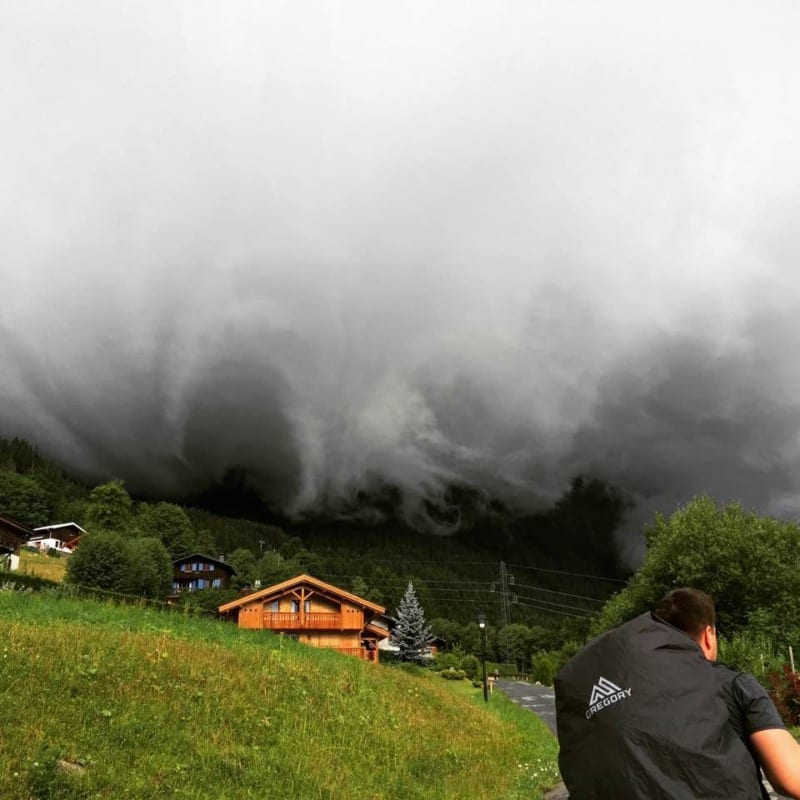
Dark thunderclouds shroud the mountains over Les Houches on day one of our trek. Photo by Christa Rolls
When to Go/Best Season to Hike the TMB
Late June to Late September i s the typical time frame for hiking the TMB . This is entirely dependent on snow leftover from the previous season and winter weather that comes into the mountains in the autumn.
The high season is July and August, largely because of the more reliable weather and because this is the prime vacation period for most European countries.
The weather is very unpredictable in the mountains and can change extremely quickly. Keep this in mind as you plan your trip.
The Refuges, gites, and hotels will begin to open in June and will remain stocked and open in September. If snowy weather comes in early, it is possible for accommodations to close their doors early. A lot of these places require mules or helicopters to re-stock, or driving along winding mountain roads, hence why they might close earlier in inclement weather.
Avoid Ultra-Trail Season, if possible
The end of August is the ultra-marathon race around the TMB (the Ultra-Trail du Mont Blanc).
I recommend avoiding traveling during this time (unless you plan to do the Ultra, of course!). Otherwise, book your accommodation ahead of time, yield to runners, and prepare for things to be busy.
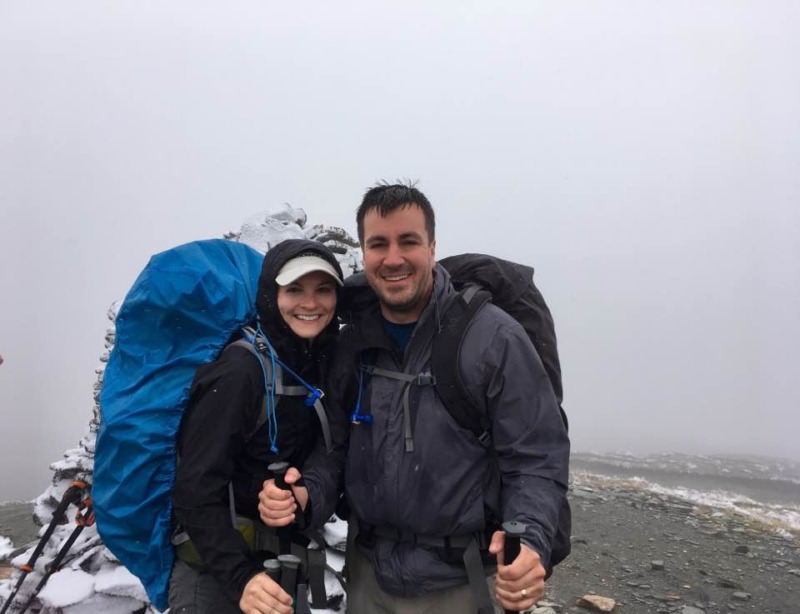
Even at the beginning of August, we experienced snow and cold, windy weather on the Col de la Seigne high pass. Photo by Christa Rolls
Cost of hiking the Tour du Mont Blanc
Plan for around 1000 Euro for the whole trek , including half-board accommodation (which includes a bed, breakfast, and dinner) and lunch options and snacks.
Upscale accommodation and luggage transfers cost more
You’ll pay about 500 Euro extra for more upscale accommodations, or private rooms, and luggage transfers.
Yes, LUGGAGE TRANSFERS. It might cost quite a bit extra to get, but you’ll save a TON on weight carried. Remember all those mountains I said you would have to climb up and down?
Luggage transfers are possible only to other towns that have a connecting road, so there may be a night that you wouldn’t have your bag with you. In this case, you’ll want a decent sized day pack (around 30L or so) to hold your lunches/snacks, water, toiletries, and an extra change of clothes along with your layers and sheet liner.
There are a number of options for luggage transfers along the trail – Mont Blanc Treks , Taxi Mont Blanc , and AlpenWild are just a few of the options.
Added costs at refuges
Contact your on-trail accommodations to see whether you are required to bring your own linens and towel. Some will provide these to you at extra cost, and others you must provide for yourself.
In the event that you need to provide them for yourself, purchase a travel sheet liner and a lightweight, packable travel towel .
We didn’t experience issues with bed bugs, but note that the blankets provided in refuges and gites aren’t washed between uses. This is why you would need the cover sheet.
Money on the trail
You will switch from Euro to Swiss Francs (CHF) along the trail. Swiss accommodations will usually accept Euro, but if you change out for CHF ahead of time you’ll be guaranteed a better rate.
When you contact the refuges for your reservation, ask them ahead of time if they accept credit card. Many locations outside of main cities do not accept them. People have also noted that the Swiss territory, in comparison to the French and Italian sides, are comparatively more expensive.
Banks and ATMs can be found in Chamonix, Les Houches, Les Contamines, Courmayeur, and La Fouly.
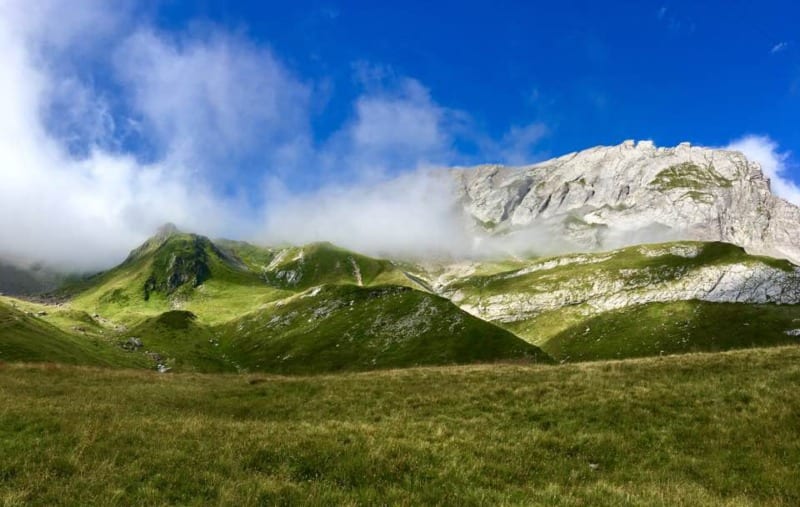
The mountains and surrounding scenery is stunning at every turn along the Tour du Mont Blanc. This is the view walking up the Bon Nant Torr. Photo by Christa Rolls
Getting to Chamonix
Again, Chamonix is the primary location where people stay to prepare for the Tour du Mont Blanc trek. The trailhead, however, starts in Les Houches, so select which town you prefer. Chamonix is busier, but also has more shopping and other sights.
We flew into Geneva (the closest, large airport) and took a FlixBus to Chamonix. FlixBus actually ended up being an easy and inexpensive way to get to the trail, for around 30 Euro round trip. OUIbus , SwissTours , and EuroLines buses will also make the trip from Geneva to Chamonix-Mont Blanc. The main bus station drops you off in the middle of Chamonix, about two blocks from the centralized, pedestrian walk of the town.
Use a Rideshare
If the timing lines up with your flight arrival, you can also look into using BlaBlaCar , a ride-share app where locals will charge a reasonable fare for a spot in their car to a pre-specified end-destination. BlaBlaCar is a good option if you arrive at an odd time in the day, especially later, when the bus tickets are substantially more expensive.
Take the Train
The regional TER and TGV trains connect from main cities to Saint Gervaid-le Fayet. From here, you can hop on a local SNCF train, specifically the Mont Blanc Express, that goes to multiple villages in the area, including Saint Gervais-le Fayet to Martigny, Les Houches, Chamonix, Argentiere, and Vallorcine. Keep in mind, however, that trains have the potential to be affected by any government shut-downs, as well as funding and personnel staffing issues.
Want more epic hiking destinations? Check out our post on other long distance hikes, such as the GR 20!
Staying near and Getting to the TMB Trailhead
Staying in chamonix.
Our favorite place to stay in Chamonix-Mont-Blanc is the Chalet Hotel le Prieure – Chamonix .
If you book ahead of time, you can get insanely good deals on their recently updated rooms. Inquire about getting a mountain view room, for STUNNING views of the mountains at sunset!!
The rooms are spacious, clean, comfortable, and have a balcony. The location is such that you won’t be right in the middle of the loud pedestrian walk.
They also offer luggage storage for a reasonable cost of 5 Euro per day if you want to leave one of your big pieces behind during your trek. This is what we did, as Nathan brought his camera gear for the second leg of our trip to Spain, but he didn’t want to hike with all of it.
The Carte d’Hote, or Guest Card
Your accommodation in Chamonix should provide you with a Carte d’Hote , or Guest Card, upon your arrival.
With this, you’ll have access to free services, including the buses that transport visitors around the Chamonix Valley (including to Les Houches!) and train travel between Servoz and Vallorcine.
You really won’t need this if you are just in town to hike the TMB. However, there are discounts to the Alpine and Mountain Museums, car parks in the Saint-Michel and Mont-Blanc region, and the Richard Bozon Sports Center.
If you are using an Airbnb or staying in another kind of private accommodation, you will have to visit the Town Hall or Tourist Office to acquire this card for 10 Euro per person for a weekly stay. Again, this isn’t worth it unless you plan to extend your stay in the Chamonix area to visit some of the other sites and museums. This is why staying in one of the hotels in Chamonix can be worth the cost!
Getting to the trailhead
The official trail of the Tour du Mont Blanc begins in Les Houches, at the Telepherique de Bellevue. Hike up the forest trails from town, or take the tram up. The hike starts heading uphill right away – It’s a long and arduous hike nearly every day, so prepare yourself.
It is up to you whether you would like to hike to Les Houches from Chamonix or start in Les Houches to end your trek in 12 days in the Chamonix-Les Houches region. Some people will opt to go straight to Les Houches to spend the night.
We took the free bus (with our Carte d’Hote) from Chamonix to Les Houches to get us started.
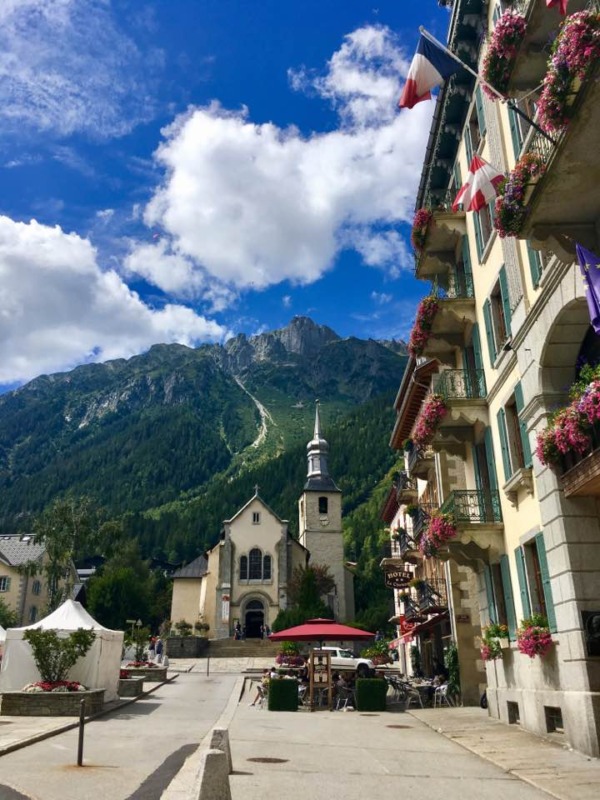
Chamonix is a beautiful and fun town to explore before or after your trek. Photo by Christa Rolls
Where to stay on the Trail
Planning out your accommodations for the trail is quite time-consuming, and likely why many people end up pre-purchasing a guided or self-guided tour.
In planning out our days, I mostly stuck to what the Cicerone guide recommended for us .
The challenge is ultimately contacting each refuge/hotel and keeping track of the following:
Deciding Which Refuge to Stay in
Consider the total distance you will need to travel between your starting and ending locations, and whether that distance is feasible for you.
A variety of room types may be available at various locations on the trail. Private rooms with shared or private bathrooms to ten person shared bunk rooms can be booked. If you have a preference, ask about availability during your correspondence.
Contact Each Refuge
To contact the refuges/hotels, some will have online forms available on the TMB website. Others may only respond via email or phone line.
If your French is minimal, emailing is a good option, as you both can use Google Translate if needed.
I contacted all refuges/hotels by email and created a separate “Tour du Mont Blanc” folder in my Gmail account to keep track of TMB-specific correspondence with refuge/hotel personnel.
How Much Money is Needed per Refuge
Determine whether the refuge/hotel accepts credit card or cash only. In addition, keep track of those you pay for ahead of time and those who want you to pay on arrival.
I kept an excel spreadsheet with the locations I still needed to pay cash for on the trail. This way, I made sure to take out the appropriate amount prior to starting our trek.
What you Need to Stay at Each Refuge
Certain refuges provide linens and towels and some don’t. Ask during your correspondence whether this is something you will have to bring along with you.
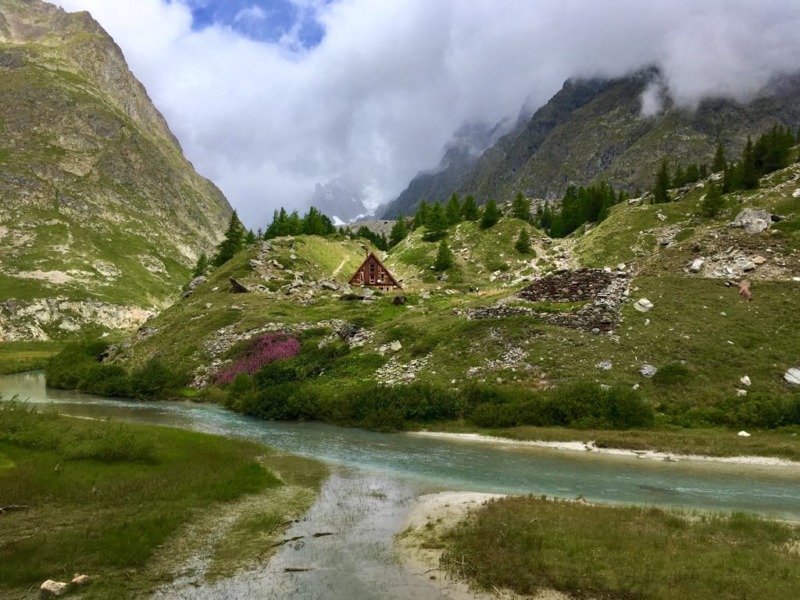
The Caban du Combal sits along the Val Veni next to Lac Combal, a stunning, clear blue, glacial lake. This was one of our favorite places to stay during our entire trek. Photo by Christa Rolls
The main reason why you would want to book accommodation ahead of time is to secure yourself a bed without the worry of having to beat everyone else to the refuge.
Some people do this – get up first thing in the morning and hoof it as quickly as possible to their next refuge site.
As I mentioned before, I’m a pretty slow hiker and would always tend to arrive at my destination by mid-afternoon even after getting up earlier in the day. It was for my peace of mind that we had spots secured. Even though it took time to coordinate, it was worth it.
If you don’t book anything, you have the freedom to continue on or stop short on your hike whenever you would like. Otherwise, you risk losing a deposit to the places you’ve booked ahead of time.
Check out the embedded map found at the top of this post for the primary recommended huts, hotels, and refuges along the Tour du Mont Blanc.
Food on the TMB
You won’t ever run out of food availability on the trail (unless you go in the off-season and huts are closed until the following summer). There are so many places that offer snacks and full meals along the way in summer.
Of course, some breakfasts and dinners are better than others along the way. Our most favorite dinner was at Les Chambres du Soleil in Les Chapieux. Even if you don’t end up staying the night here, consider taking them up on their fabulous dinner and dessert.
Breakfast typically comprises of a hot beverage, bread with butter and confiture (jam), and sometimes some yogurt, cheeses, and meats.
There largely aren’t kitchens that are open to visitors in these locations, so if you’re attempting to save money by just renting a bed and cooking your own food, keep in mind that you’ll need to bring your own equipment.
The dining areas of refuges at dinnertime will be for those dining in ONLY, so if you’re making your own food you’ll need to do that elsewhere. Some places are pickier about this than others. Dinner always consists of salad or soup, a main course, and a desert.
Water on the TMB
Because of all the grazing land around the trail, DO NOT drink the water in streams without filtering it first. Cow, horse, and sheep feces can be found all along the trails and streams on the Tour du Mont Blanc. Consuming tainted water can give you a nasty stomach bug.
You will frequently come across accommodations where there will be potable water to fill up your bottles or Camelback. Given this, you really only need to fill up for the day when you embark each morning.
If you’re planning any side excursions, however, and tend to drink a ton of water during your hikes (like me), it might be worth it to bring along a Sawyer Mini or Lifestraw , or water purification tablets . I always hike with a 3L Camelback on longer day hikes. Despite the added weight (every 16 oz. of water is about a pound of weight), this is worth it to me since I hydrate so much.
Some streams along the trail may stop flowing in late summer, but you really won’t have an issue with filling up along the way.
TIP: Consider doing some longer day hikes prior to your trip to gauge your water intake.
All potable water locations will be clearly marked as such with “ Eau Potable . ” Avoid water sources that say “ Eau Non Potable ,” as the “ non ” (meaning “ no “) indicates it should not be consumed.
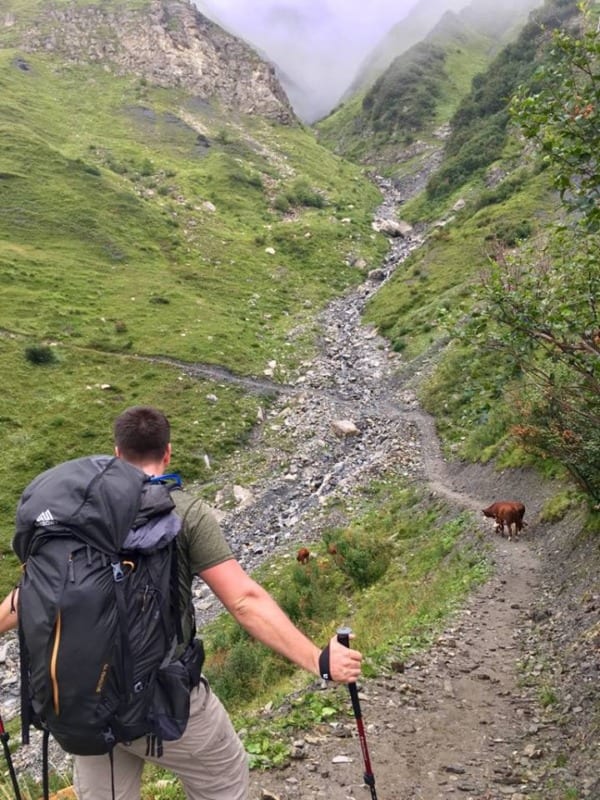
Livestock of all kinds can be found literally on the trail along the Tour du Mont Blanc. Exercise caution when passing animals with young. Photo by Christa Rolls
Miscellaneous Tips for Hiking the Tour du Mont Blanc
Be mindful about where you end up hiking.
And follow the TMB trail blazes (a yellow diamond or red-and-white blaze).
The extensive number of hikers and subsequent erosion has created some meandering trails that lead off of the main trail. Most eventually lead back to the main trail, but some don’t. These have the potential to create other unwanted trails from people hiking all over.
Learn some French
I know, I know, learning languages is hard. But learning a few phrases will make speaking to some of the locals a lot easier.
Many people will be speaking English on the trail, as people from countries all over the world will be hiking the trail. However, refuge personnel may speak less English.
Although you’ll pass through Italy, French is still widely understood in this bordering region next to France. In addition, the region you will be hiking through in Switzerland is the French-speaking side of the country.
At the very least, learn to say the basic phrases, such as: hello ( bonjour or bonsoir ), please ( s’il vous plait ), and thank you ( merci ).
Get good hiking poles
The consistent elevation gain and loss can be especially hard on your knees and legs. Hiking poles will alleviate the pain somewhat. These are my favorite .
Get good hiking shoes
You’ll be walking in your shoes A LOT over a two-week time frame. While good hiking shoes or boots can be expensive, it’s worth it to get a pair that fit your feet well and are comfortable.
I swear by my Vasques , and I never have to break them in.

Take time to explore some of the towns and villages along the way
You’ll come across some wonderful valleys and alpine prairies, as well as plenty of places to do a side hiking trip.
This is another reason I like to book my accommodation ahead of time. My mind is on exploring and taking my time along the trail instead of racing to the next hut!
Take time for a rest day
If you need it, there’s absolutely nothing wrong with giving your body a break.
This is a long trek, so listen to what your body needs and modify your hiking days accordingly.
For a halfway hike, Courmayeur is a good place to stop if you don’t have as much time to hike. Buses go through the mountain pass straight back to Chamonix, costing around 15 Euro per person.
By the time you get to Courmayeur, your body will likely be ready to keep on trekking!
Don’t take the hiking guide to heart 100% of the time
While guides are there to help you with some navigation, logistics, and accommodation information, everyone hikes differently.
The difficulty level and hiking times for each day may vary from person to person. I tend to hike an hour or two longer than the suggested hiking times, while some people I know hike about two hours faster than the suggested hiking times.
Be kind to yourself and recognize you can hike your own hike!
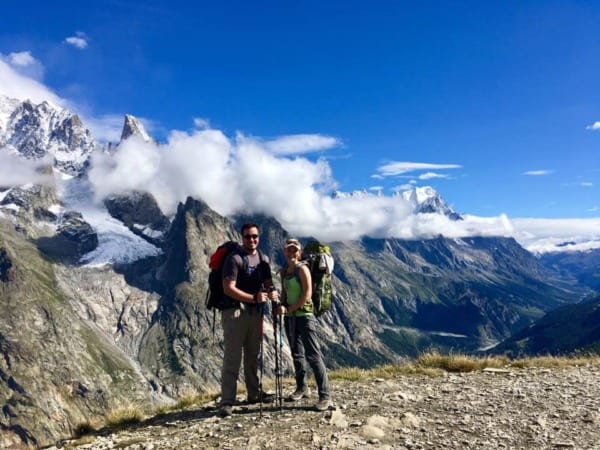
The sun is a welcome friend after getting snowed on in the high mountains! Note that layers are incredibly important for this trek, as the weather can change very quickly. Photo by Christa Rolls
Gear Recommendations for the Tour du Mont Blanc
My pack weighed about 10 kg without water – your pack should only be about 20% of your body weight . The full list of the gear I brought is as follows.
Backpacking Gear
- Deuter Lite 60+10 SL Hiking Pack with Rain Cover (her)
- Gregory Baltoro 85L Pack (him)
- Small, lightweight, collapsible day pack (for day hikes)
- Black Diamond hiking poles
- Petzel Headlamp
- Collapsible cup /mug
- T itanium spork other eating utensil
Food and Water
- Camelback 3 L bladder
- Lunch and/or snacks for day-time hiking on the trail
Clothing and Footwear
- Vasque hiking boots
- Three pair hiking socks ( SmartWool and Darn Tough )
- Reef flip flops (or other house shoes)
- Three pair Patagonia hiking underwear (originally purchased on discount at REI)
- Two hiking bras (originally purchased on discount at REI)
- One pair Columbia convertible pants
- Two moisture-wicking long sleeved shirts
- Two moisture-wicking short sleeved shirts
- Patagonia fleece (given to me by a mountain hut manager after someone left it for a month)
- Smartwool long john pants (originally purchased on discount at REI)
- REI puffy jacket
- North Face rain jacket
- Columbia Rain Pants
- Buff neck warmer
- North Face glove liners
- Prana ear warmer
Emergency and First Aid
- First Aid kit : alcohol wipes, antibacterial ointment, antidiarrheal, antihistamines, ibuprofen, Dramamine, antacid, epipen, gauze, medical tape, small round of duct tape, safety pin
- Hiking whistle (check the chest buckle on your hiking pack – some have a whistle built in)
- Travel Insurance – we recommend this for every trip you take!
Health and Hygiene
- Toiletries: wet wipes, face wipes, toilet paper, hand sanitizer, nail clippers, contacts and glasses, sunscreen, mini toothbrush, toothpaste, concealer wand (for after trip), sunscreen lip balm, collapsible hair brush, care plus clean bio soap (biodegradable; for skin, hair, dishes, and clothes)
- Lightweight camping towel
- Sac a la viande/sleeping bag liner , or travel sheet liner
- Sunglasses and baseball hat
- Cicerone guide to hiking the Tour du Mont Blanc – excellent guide for the surrounding area’s accommodations, food options, alternative routes, and natural features
- Waterproof trekking map of the Tour du Mont Blanc
Tools and Repair items
Backpacking extras.
- Eye mask and earplugs (if you are a light sleeper, definitely don’t forget ear plugs if you’re sleeping in dorm style rooms)
- Phone charger and battery charger pack
- Dry bag and large trash bag to line the inside of our our packs (in addition to rain cover)
- Stuff sacks for organizing gear (e.g., one sack for kitchen, one for food, one for clothes, etc.)
Personal Items
- Credit cards and ID/passport
There are a few other gear considerations to keep in mind for your trip
- We did not end up deviating from the regular route to alternative routes or climbs, so we didn’t end up using the detailed trail map. If you decide you want to go on some of the higher routes or add climbs to your trip, consider obtaining IGN 3531 ETR and IGN 3630 OTR waterproof maps to assist in your navigation.
- We monitored the online forums prior to our trek to ensure there was no snow left on the ground. By mid-to-late July most of the snow has begun melting away. If you anticipate there being snow on the trail, bring crampons or yak-traks along in the event that things get slick and icy.
- Accommodations will provide you at least with a pillow and wool blanket, but they may not wash them or put covers on them. This is what the travel sheet liner is for.
Tourist Office Locations and Information
For more information on activities in the surrounding area, contact the region’s corresponding tourist information office.
Chamonix Tourist Information Center
Address: 85 Place du Triangle de l’Amitié, 74400 Chamonix-Mont-Blanc, France
Phone: +33 4 50 53 00 24
Website: chamonix.com
Tourist Office Les Houches
Address: 9 Place de la Mairie, 74310 Les Houches, France
Phone: +33 4 50 55 50 62
Website: leshouches.com
Courmayeur Tourist Information Office
Address: CSC Centro Servizi, Viale Monte Bianco, 10, 11013 Courmayeur AO, Italy
Phone: +39 0165 842060
Website: lovevda.it
Champex-Lac Tourist Information Office
Address: Route du Lac 38, 1938 Orsières, Switzerland
Phone: +41 27 775 23 83
Website: champex.ch
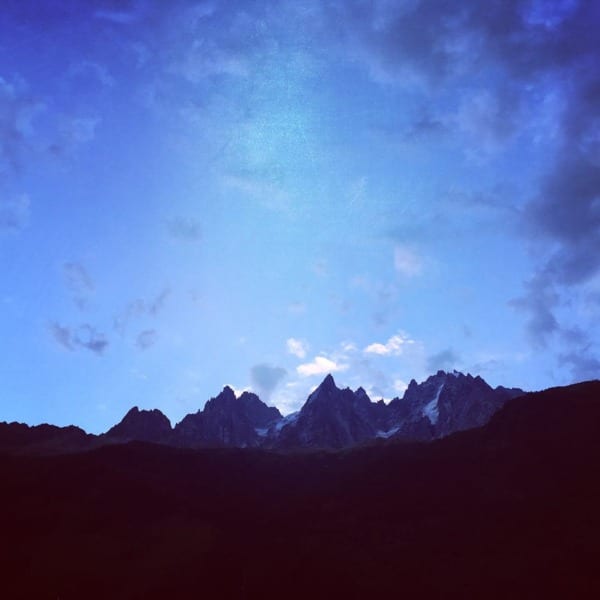
Get ready for an incredible display of stars at night if the sky remains clear. Photo by Christa Rolls
The Tour du Mont Blanc is one of the top treks in the world for good reason. It’s a stunning, fun, and unforgettable way to experience the Alps.
After your trip, consider visiting the Aiguille du Midi and Mer de Glace to see the Mont Blanc up close .
Tell us about your TMB experiences in the comments and feel free to message us with any questions or for more details!
Happy Hiking!
Christa and Nathan
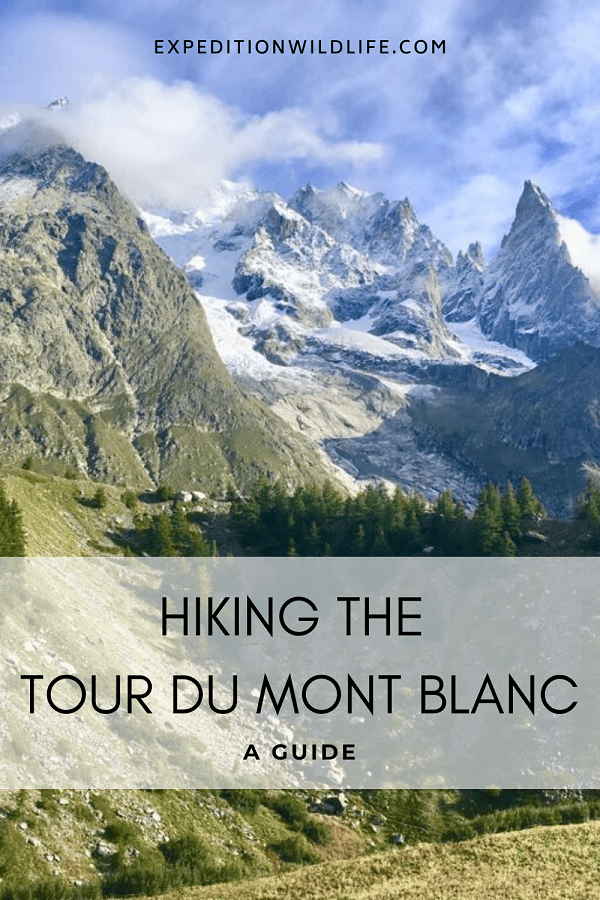
About the Author: Christa
Related Posts
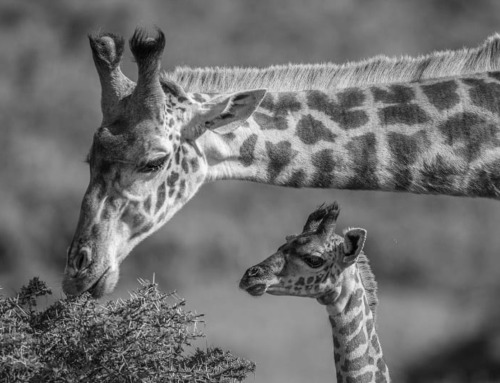
Ethical Safari Guiding Experience: The Wild Source
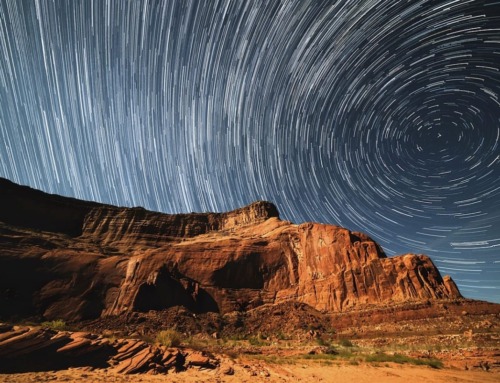
Must-Visit Dark Sky and Stargazing Destinations Worldwide
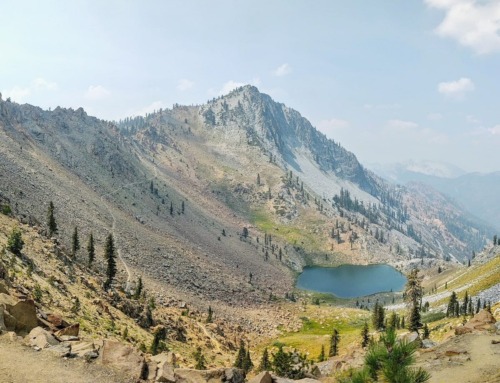
Trinity Alps Weekend Getaway: Northern California’s Four Lakes Loop
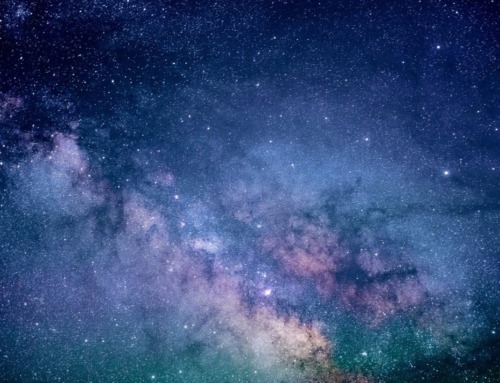
Must-visit Dark Sky Parks in the USA
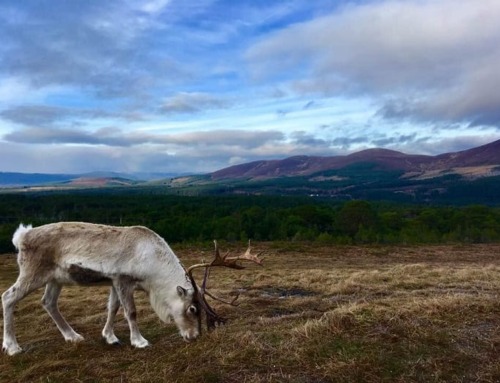
Cairngorm Mountains, Scotland Must-do Activities
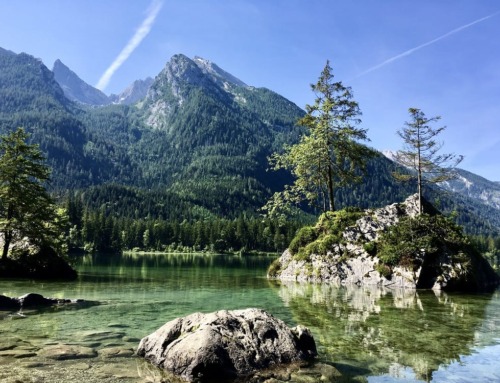
Must-visit Mountains in Europe
I’m off to hike the TMB at the start of August so I really appreciated your article. Whilst we are doing a 7 day itinerary there is some really useful information in here which i will be using for our trip, thanks for taking the time to write this piece. Cheers and happy hiking!
Ceri, so glad some of the information was useful for you! Have a safe and wonderful trip, and please let me know how it went when you get back!
Leave A Comment Cancel reply
This site uses Akismet to reduce spam. Learn how your comment data is processed .

Mont Blanc Guided Hiking Tour: A 10-Day Itinerary
Thinking of doing the Tour du Mont Blanc? Read my honest review of the 10-day Guided Hiking Tour I did around Mont Blanc!
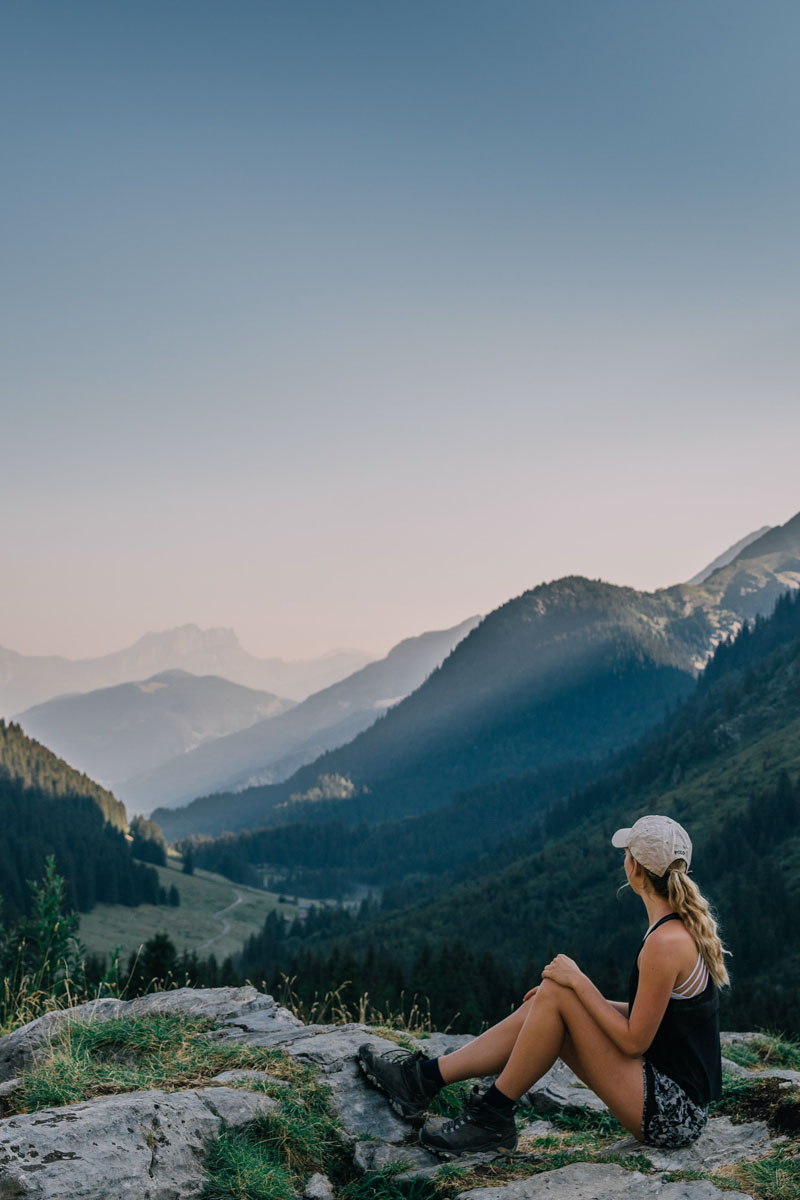
Disclosure: This post contains affiliate links, which means I make a small commission at no extra cost to you if you kindly choose to book via my links!
10 days. 3 countries. 120km of hiking. 10,000 meters of ascent and descent. Passing through France, Italy and Switzerland and circling around Europe’s highest Mastiff, the Tour Du Mont Blanc (or the TMB) is one of the world’s most iconic hikes.
Despite having very little hiking experience, one day I found myself signing up for a 10-Day Mont Blanc Hiking Tour with G Adventures. I am so glad I did. I can now confidently say it was one of the BEST trips I’ve ever done in my life.
If you’re considering going on a Mont Blanc guided tour, this article will take you through exactly what to expect. My hope is that by the end, you’ll be booking a Tour Mont Blanc hike… Trust me, it will be one of the best decisions you’ll ever make!
Tour Du Mont Blanc FAQ:
How fit do i need to be to be for tour de mont blanc.
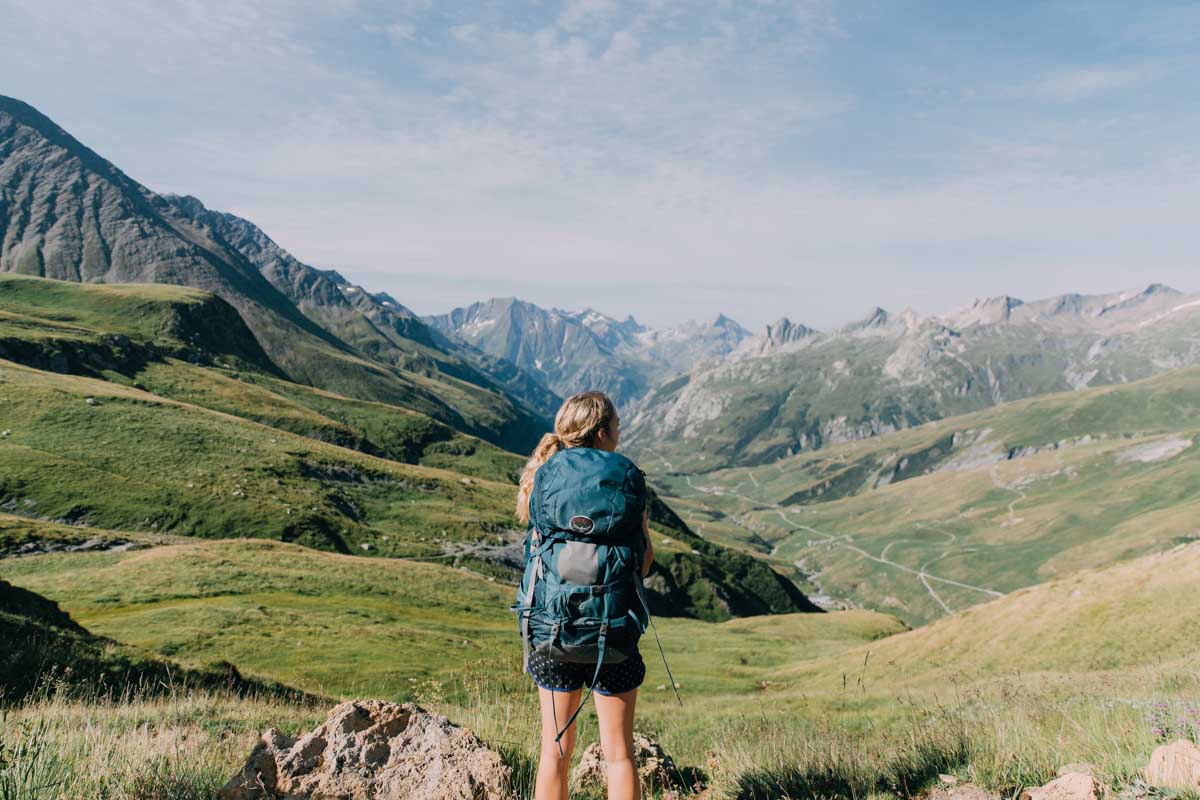
While the Tour De Mont Blanc is not exactly a walk in the park, anyone with a moderate level of fitness should be able to complete the hike. You just need to be comfortable walking up 24 kilometres/ 14 miles in a day, keeping in mind there are a lot of inclines and declines.
On the Mont Blanc tour that I went on, everyone had varying levels of fitness and hiked at very different paces. Some of us powered ahead and others took it at a leisurely pace. We would have specific meeting points along the way, which meant no one ever lost the group.
Tour Du Mont Blanc: Self-Guided or with a Guide?
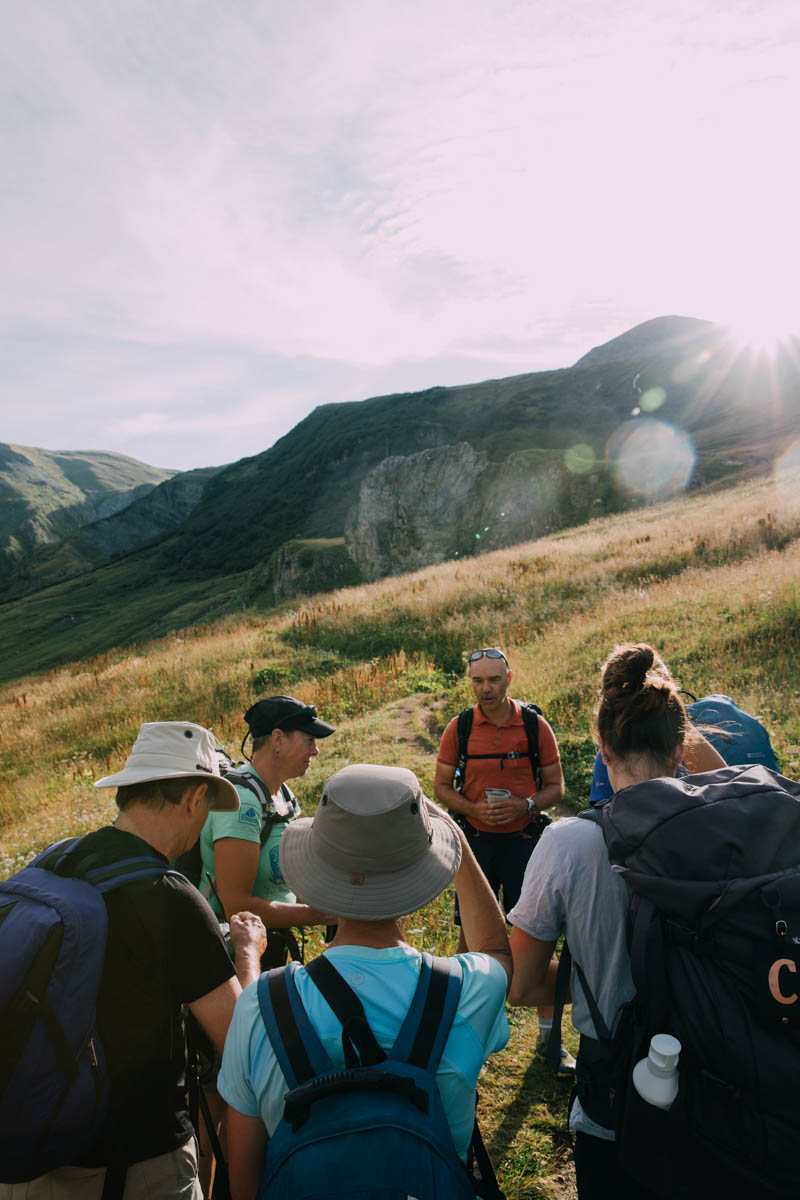
Although you can do the Tour De Mont Blanc hike on your own accord, I would personally recommend going with a tour group. Doing a Mont Blanc guided tour means all you have to worry about is making it from point A to point B each day.
Every morning, our tour leader would set the expectations for the day. He’d let us know how long we’d be hiking for, how hard the hiking would be and where we could stop for the bathroom and for snacks/ lunch.
On the tour I went on, all of our accommodations, breakfast and dinners were sorted for us. All we had to buy was lunch which would be at a designated lunch stop. This logistically made the hike so much easier.
You can find out all the specific details on the Mont Blanc tour I went on here .
Where to Stay during the Tour de Mont Blanc?
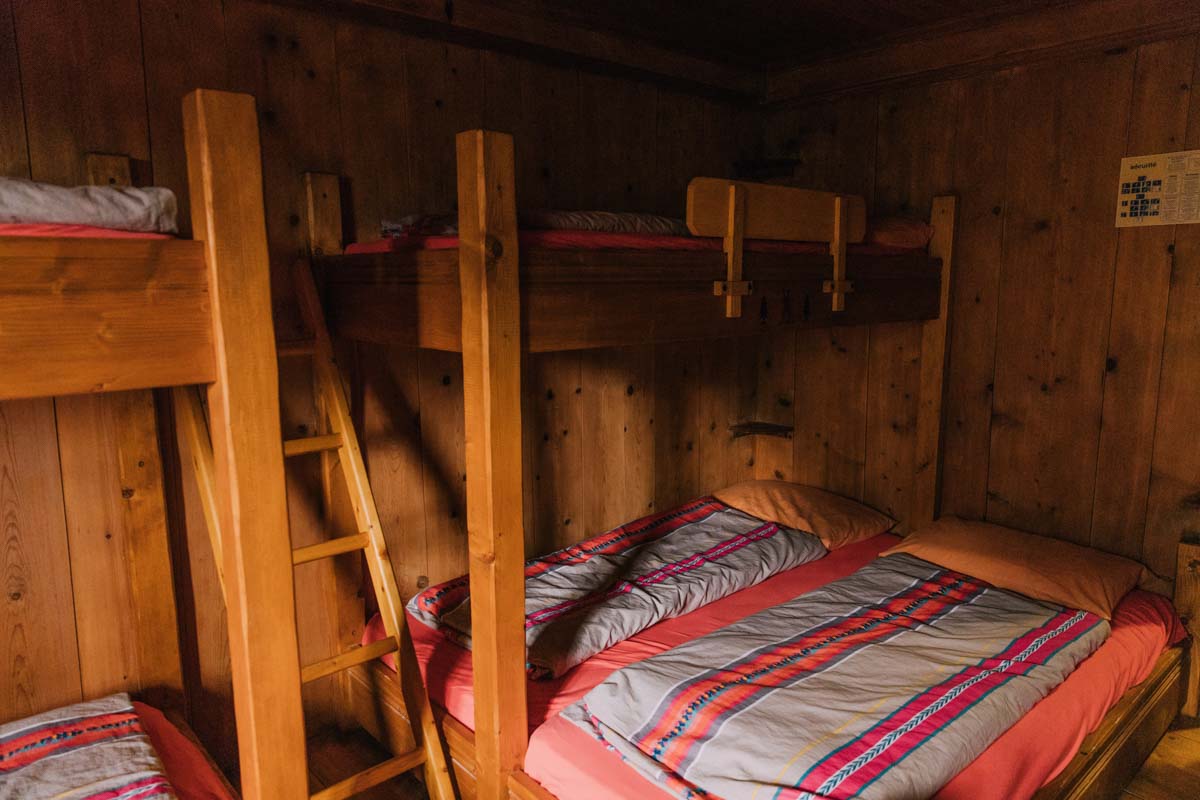
When hiking the Tour de Mont Blanc, most people stay in mountain refuges along the way. Most of these refuges feature dorm-style rooms, toilets, showers, and an onsite restaurant.
I was honestly pleasantly surprised by how nice the refuges were. They were all quaint, clean and well-equipped. It was also amazing having an onsite restaurant to go to for post-hike drinks, a homecooked dinner and breakfast in the morning.
These refuges do book up well in advance, so keep this in mind if you choose to do a self-guided Mont Blanc tour. As I mentioned above, the guided tour I went on included our accommodation and meals onsite.
What do you eat when you climb Mont Blanc?
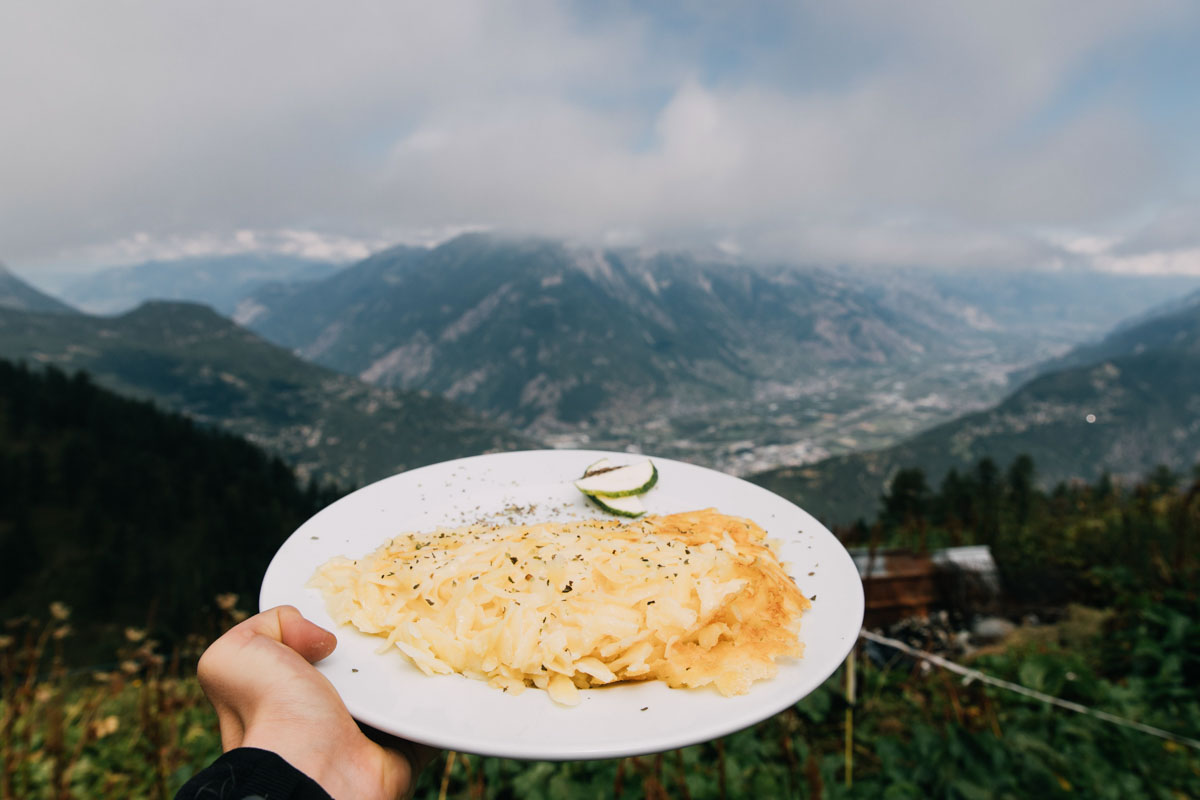
Forget dehydrated pasta and protein bars. When hiking Mont Blanc, you’ll be eating an abundance of rich, hearty and delectable Mountain food across France, Italy and Switzerland.
Breakfast at refuges tends to be basic, but is more than enough to fuel you up for a day of hiking. It generally includes a range of bread and spreads, cereal, yoghurt, coffee and occasionally some fruit or pastries.
There are a few options for lunch when hiking Mont Blanc. You can purchase a packed lunch from your refuge, stop for a meal at a refuge along the way or grab supplies from a grocery store. Our tour leader always let us know informed on which refuges were worth buying meals from and which weren’t.
Dinner at the refuges is almost always a phenomenal 3-course meal including a light soup, plenty of bread, a hearty main and a decadent dessert. After a long day of hiking, there really is nothing better than getting served a substantial meal like this!
Although there are places to buy snacks along the way of the Mont Blanc hike, they do tend to be expensive. I would advise bringing some snacks like protein bars and nuts with you on the hike.
What do I pack for the Tour du Mont Blanc hike?
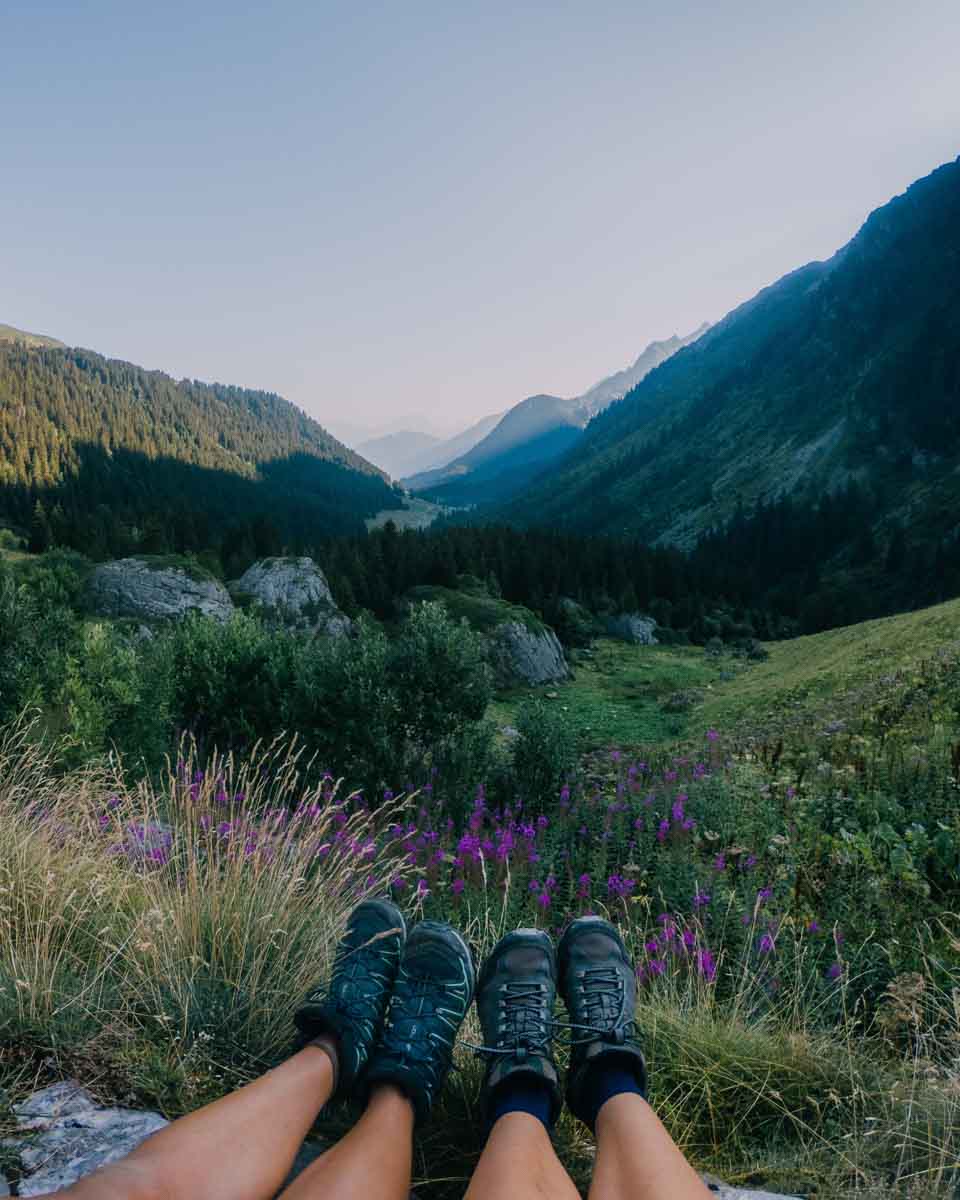
The key to packing for the Mont Blanc hike is to bring as little as possible. After all, the more you pack, the harder your hike is going to be! Staying in refuges means you don’t have to carry bedding or meals which really helps to keep the weight down.
Check out my guide on what to pack for a hiking trip to see a detailed list of my recommendations!
How many days does it take to hike the Tour de Mont Blanc?
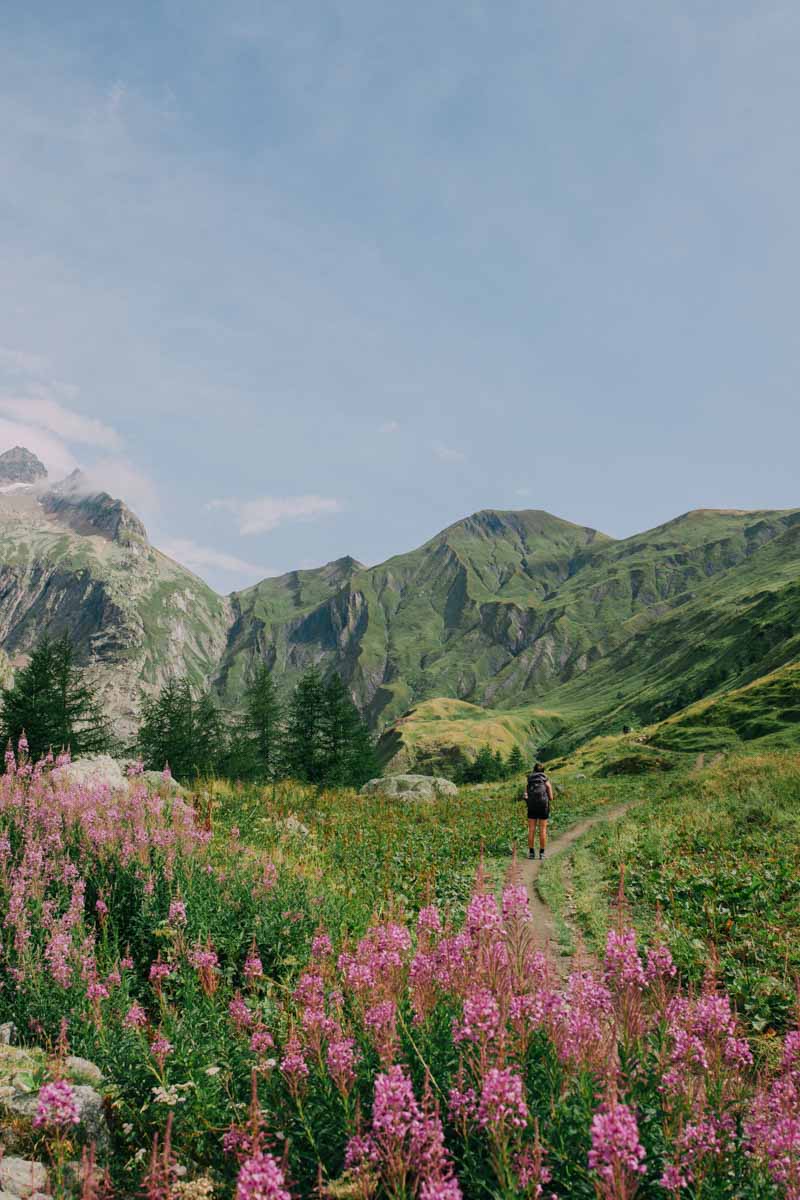
The Tour de Mont Blanc trail is 170km in length, and most people take between 6-12 days to complete it. It really depends if you want to power through the hike or take it at a leisurely pace!
The Mont Blanc Guided Tour I signed up for with G Adventures was a total of 10 days in length. However, we only hiked for 7 of these days. Halfway through we had a free day in Courmayeur, which broke up the journey nicely and gave our legs a much-needed rest.
Tour De Mont Blanc Hike 10-day Itinerary

Day 1: Chamonix
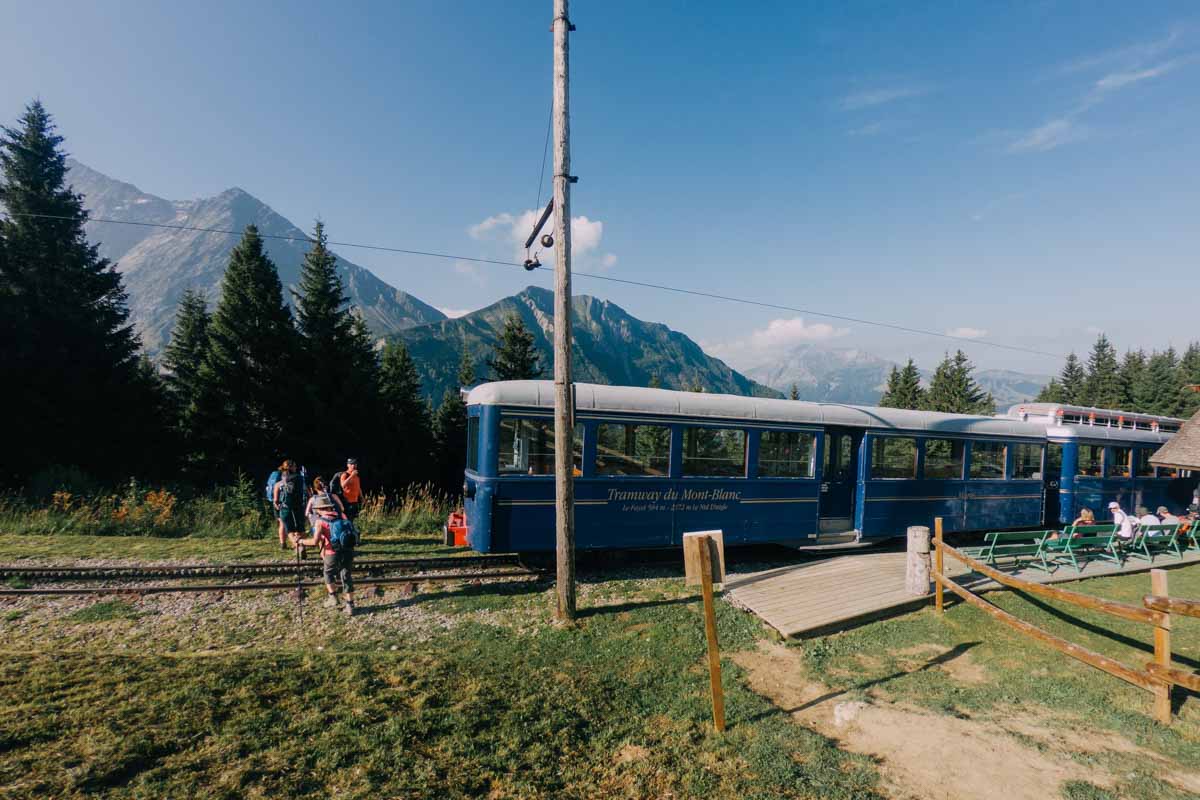
Our journey began in France’s heart of adventure, the quaint town of Chamonix. The town is filled with outdoor shops, so it was a great opportunity to grab last-minute gear and stock up on snacks.
On our first evening, we took the opportunity to dine at a local restaurant to indulge in some regional specialties like raclette and fondue. We also met up with our friendly tour leader and group and got an overview of what we were in for over the next 10 days!
Day 2: Les Contamines-Montjoies
Hiking Distance: 24km (15 miles)
Approximate Hiking Time : 8.5hrs
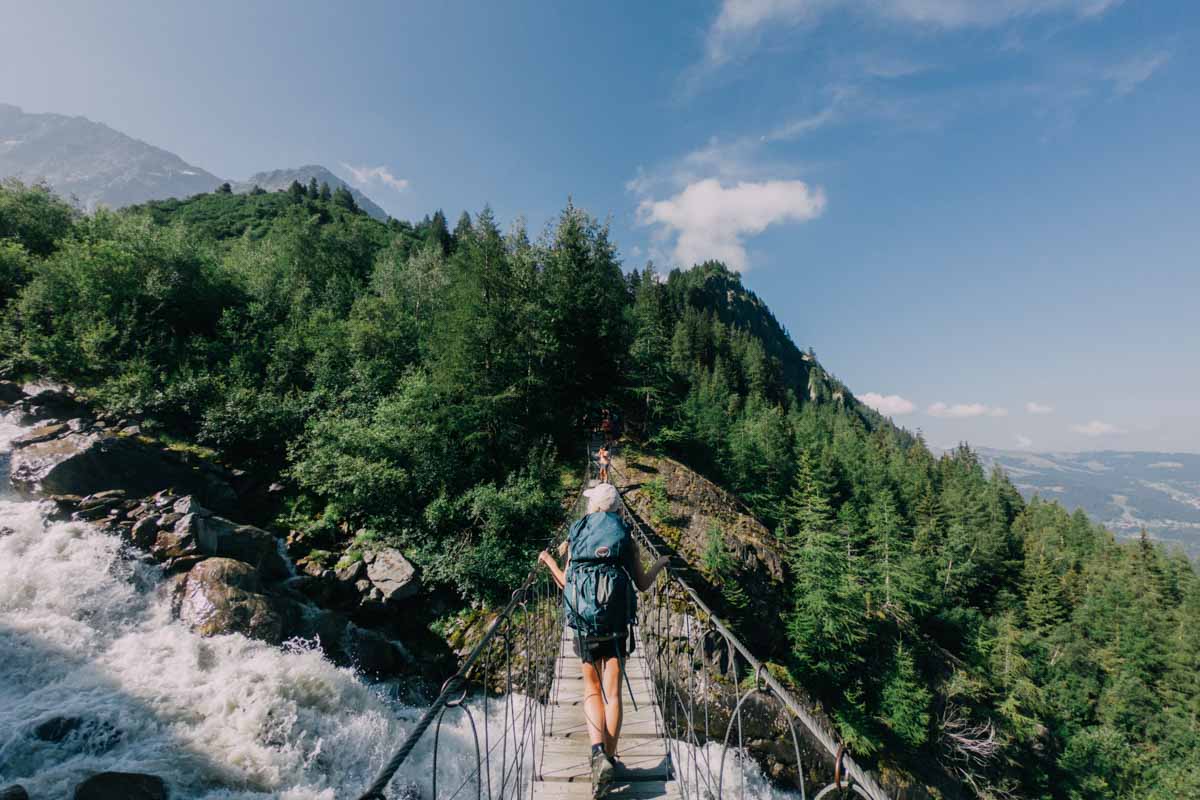
After fuelling up on the expansive breakfast buffet at Hotel Gustavo’s, we hopped on a local bus to Les Houches. We then caught the cable car to the beginning point of our hike.
Our first day of hiking was full of ascents and descents. It was fairly strenuous, but swapping between the inclines and declines made it bearable. As did the INSANELY picturesque views.
The ever-changing scenery took my breath away. When panoramic mountain views didn’t surround us, we were trailing through enchanting forests and the quaintest little towns.
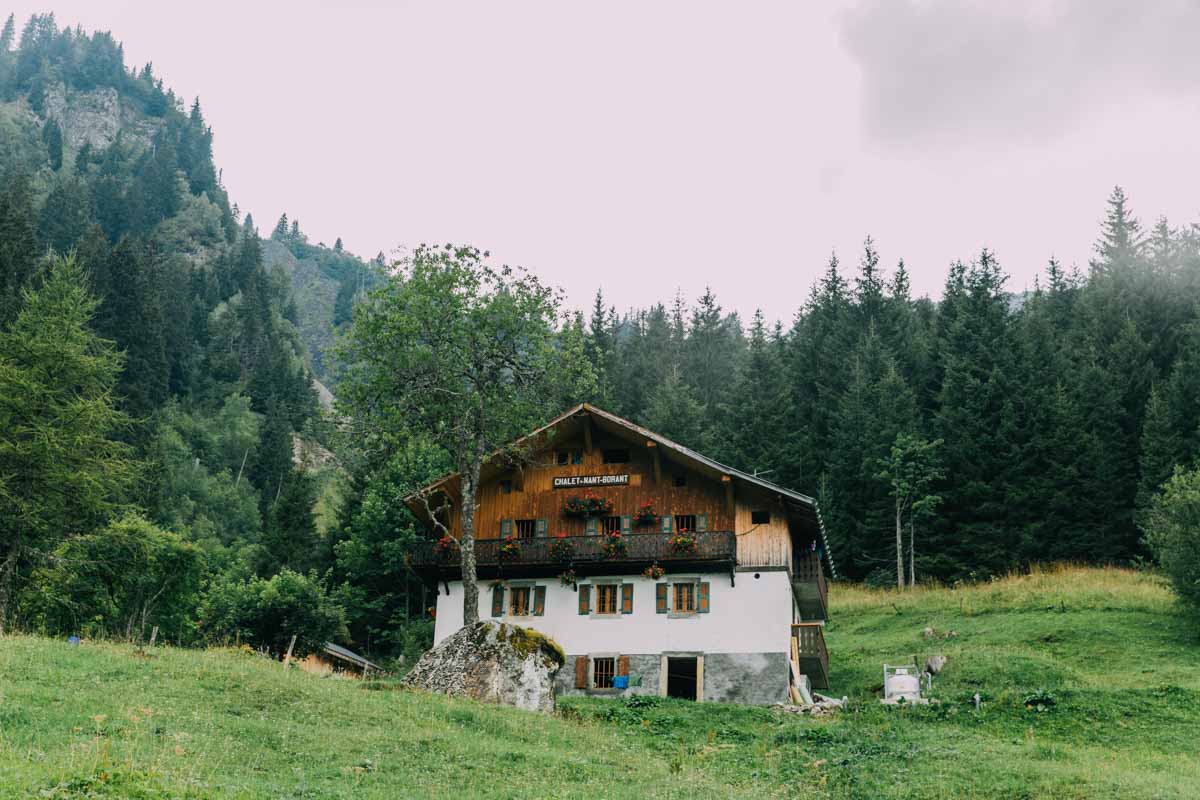
After 8 hours of hiking, we finally made it to our first refuge. It was a gorgeous wooden chalet peering out over the mountains. The day of hiking felt beyond worth it as we kicked off our hiking boots, sipped on cold cider and watched the sunset on the horizon.
Dinner was a hearty soup, crusty baguette slathered with butter, a delectable slice of vegetable quiche, multiple servings of creamy potato bake and apple tartin for dessert. After all that food and exercise, I practically rolled into my bunk bed and fell asleep instantly.
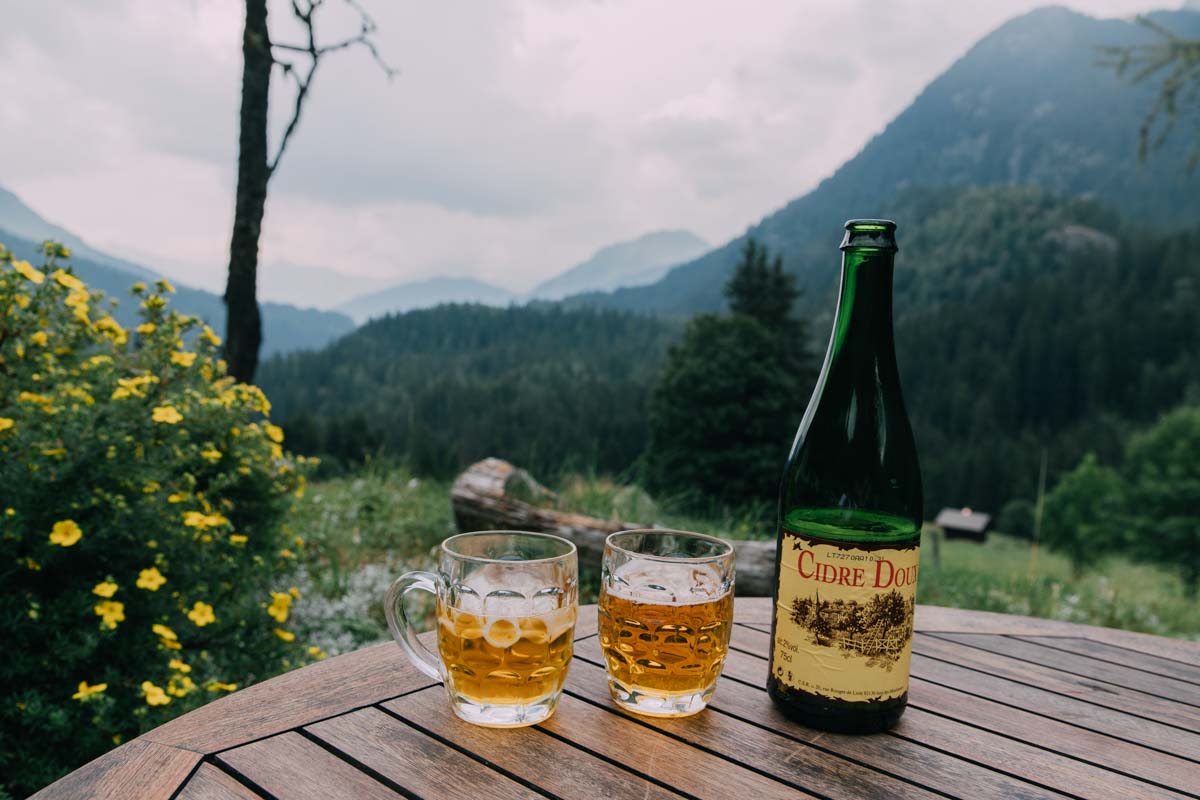
Day 3: Les Chapieux
Hiking Distance: 18km (11 miles)
Approximate Hiking Time : 7hrs
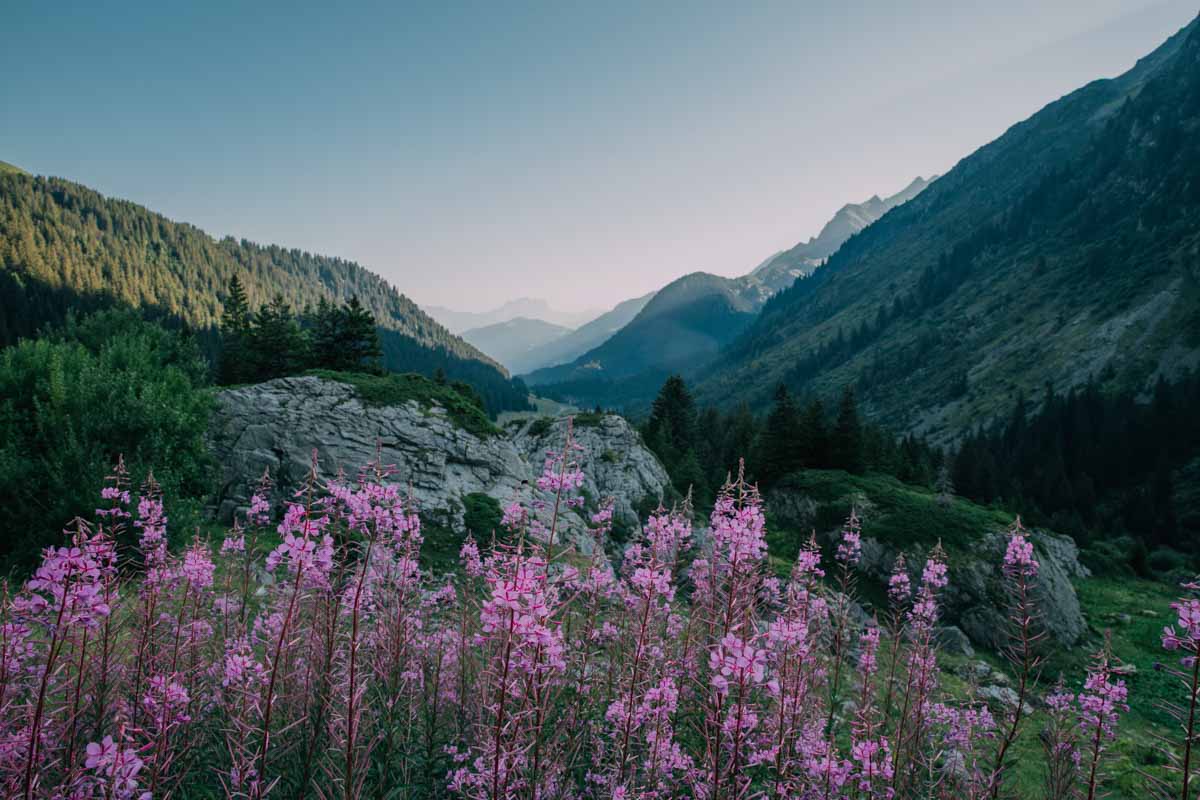
Today, we woke up to the sight of the sun peeking out over the mountains, the smell of strong coffee and fresh croissants wafting through the air. We thoroughly fuelled up on breakfast as this was our most challenging day of hiking, tackling the Col Du Bonhomme.
Our first four hours were spent climbing the steep incline of the mountain. It was definitely one of the hardest sections of the hike. However, with regular photo and snack stops, the time passed quickly.
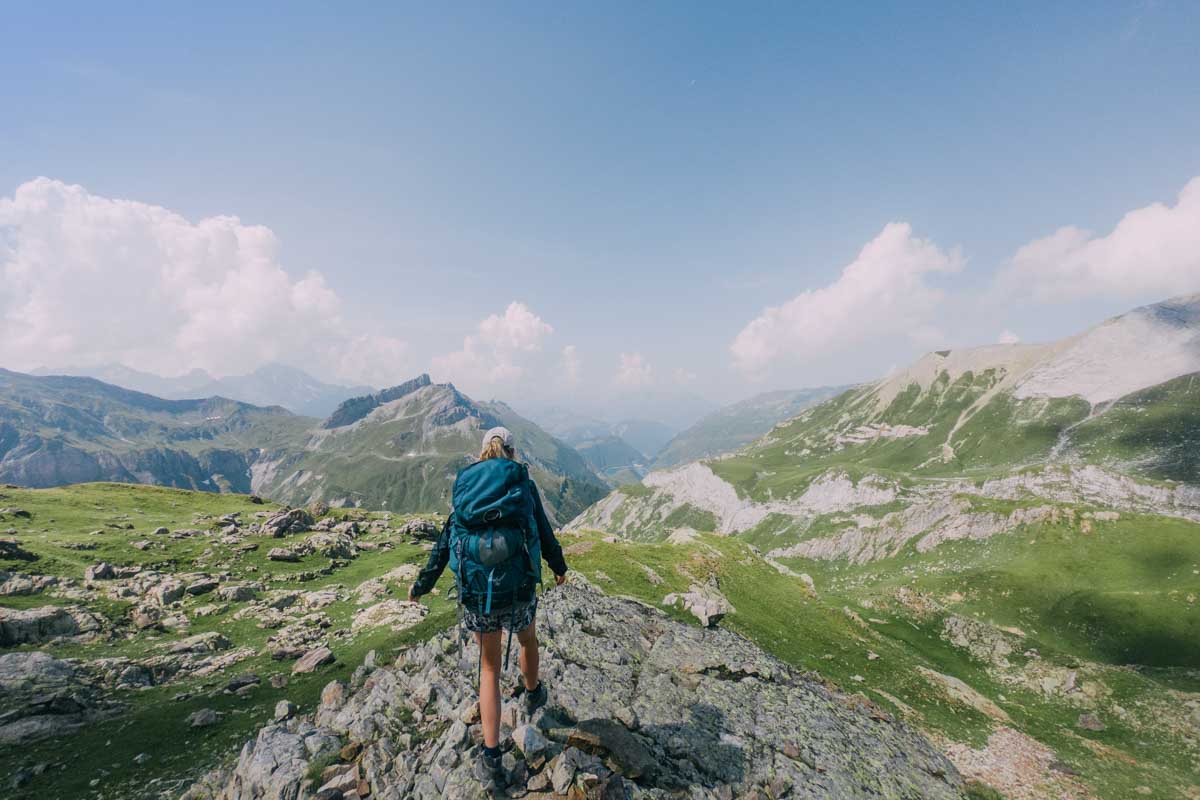
Once we made it to the top of the summit, we feasted on a packed lunch whilst staring in awe at the valley in front of us. The next two and a half hours was a steep descent, which took so much more concentration than the uphill section!
Before we knew it, we had made it to the tiny town of Les Chapieux. We celebrate with a lovely glass of local wine from the local bar, before being treated to another lavish 3-course meal and turning in for an early night.
Day 4: Courmayeur
Hiking Distance: 23km (14 miles)
Approximate Hiking Time : 5hrs
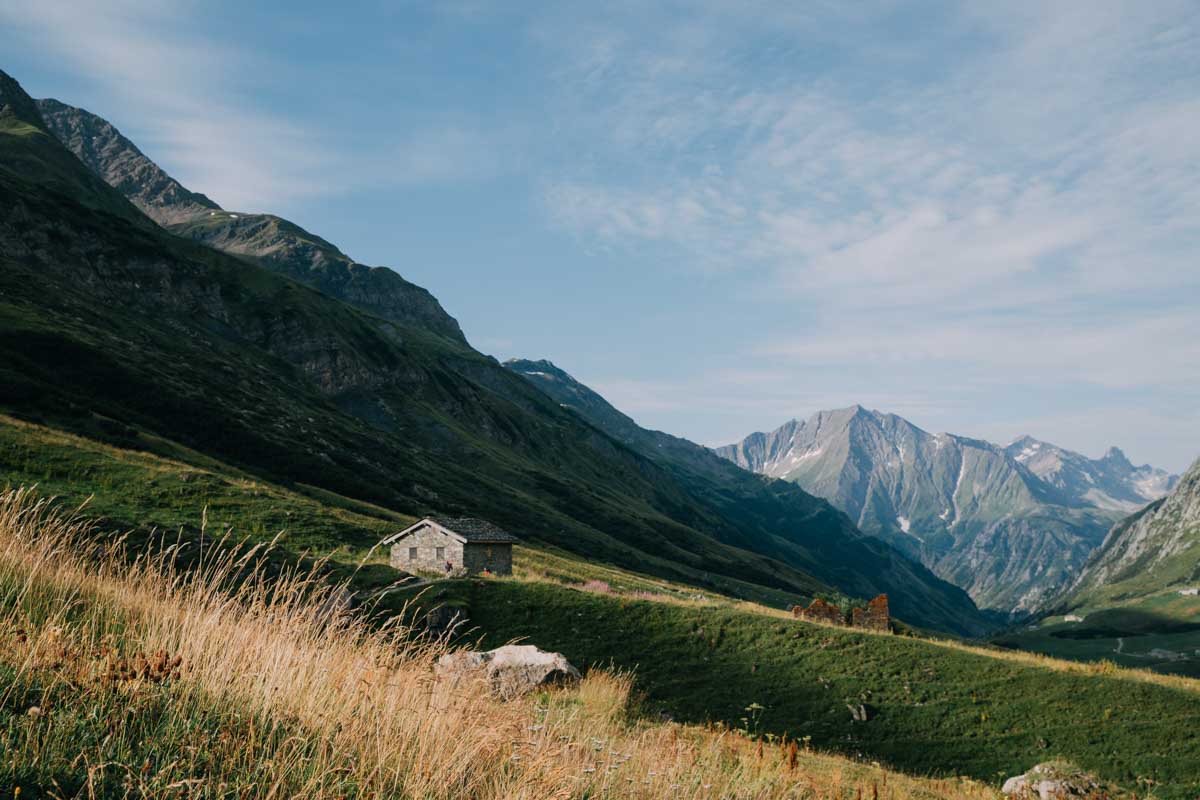
Today, we set off bright and early on our hike to Col de la Seigne, where we would be crossing the border from France into Italy. The hike began with a 2-hour upward sojourn through sweeping mountain vistas.
Once we had crossed into Italy, we began hiking down to stunning open pastures filled with wildflowers, gushing waterfalls and smiling cows. We stopped at Refugio Elisabetta, where we ate a decadent lunch of spinach and ricotta ravioli as we looked out at the mountains.
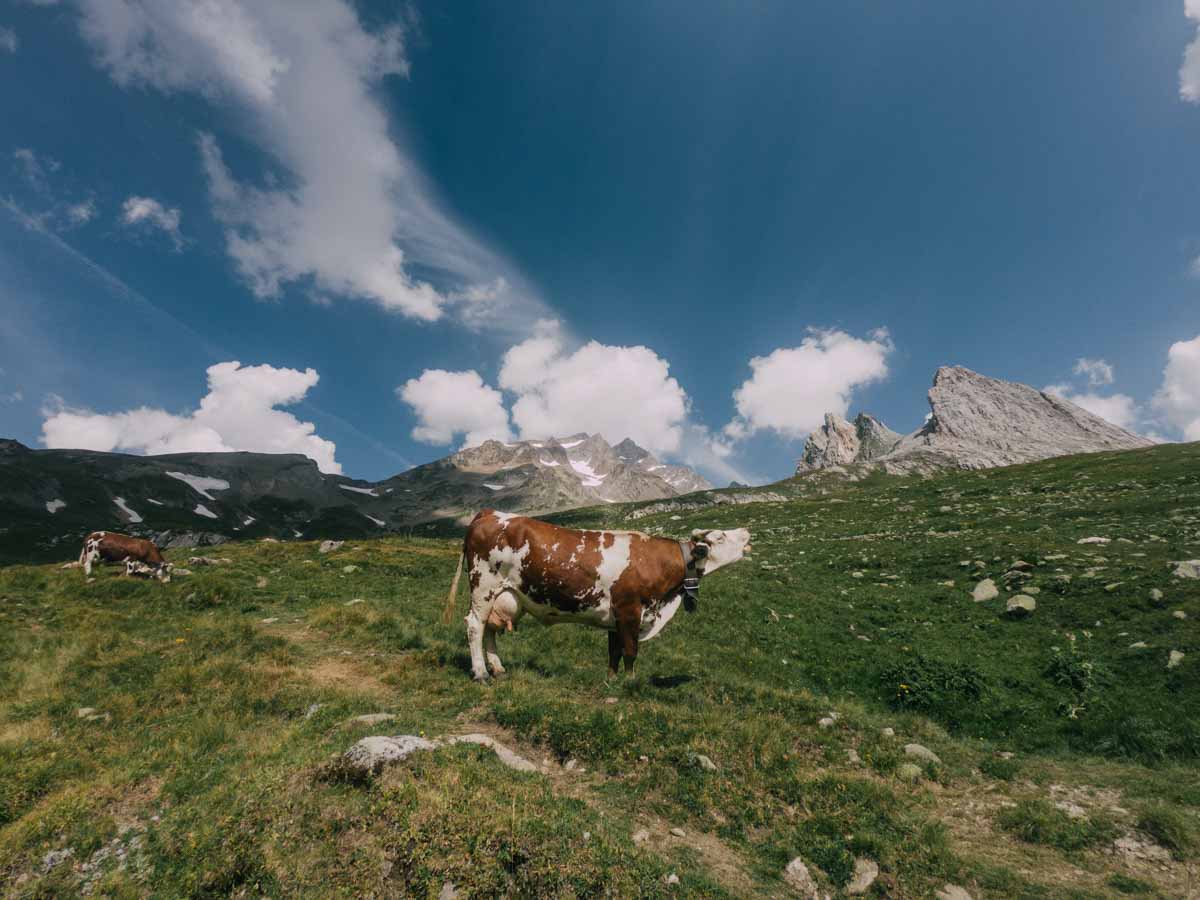
After lunch, we had a short hike to a bus that took us to the buzzing alpine town of Courmayeur. Within seconds of getting off the bus, we all raced to the nearest gelato shop and ordered three well-deserved scoops of creamy goodness.
We checked into a kitschy little place called Hotel Cristallo. After sharing dorms the nights before, I was happy to discover we would have our own hotel rooms for the next two nights as tomorrow was our official “rest” day.
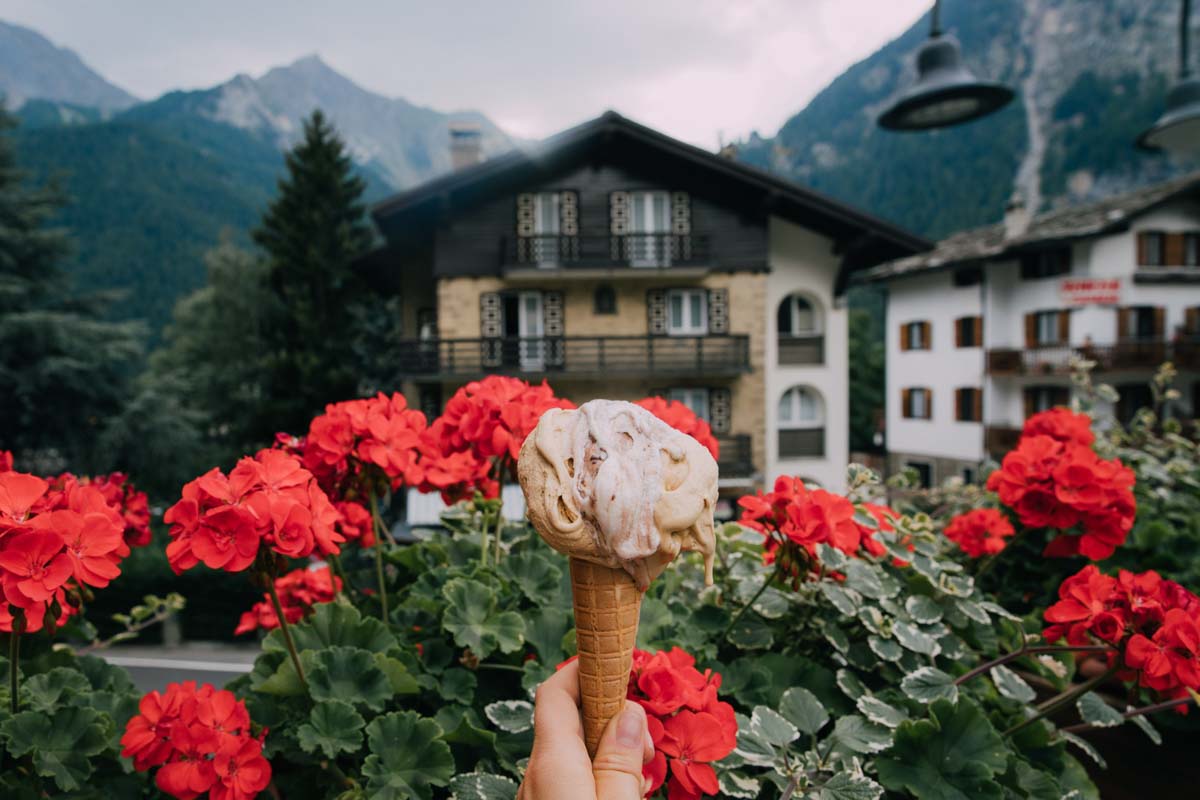
Day 5: Courmayeur
Hiking Distance : 0km (rest day!)
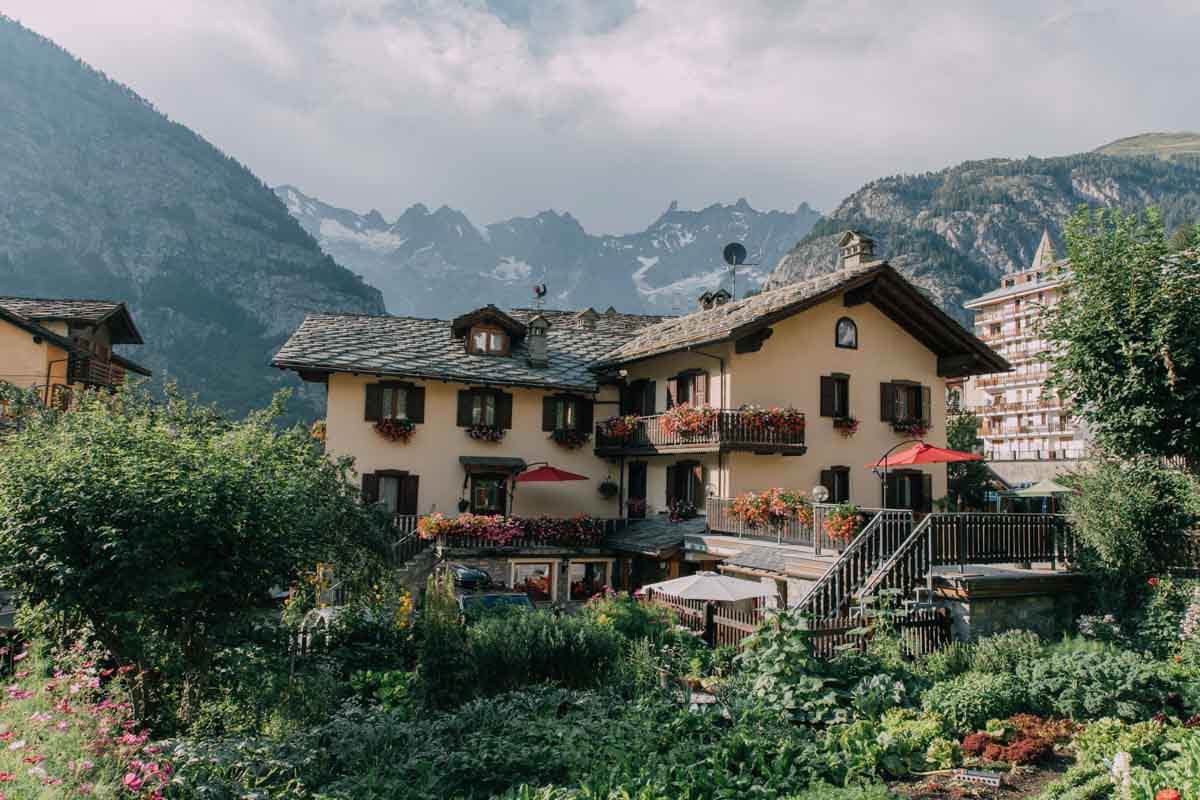
After a blissful sleep-in, we spent our morning off slowly meandering around the beautiful town of Courmayeur. The main street of the town was filled with an interesting mix of adventure and outdoor stores juxtaposed with very high-end, designer stores.
Once we had explored the stores, the rest of the day was spent doing nothing but eating and drinking. It started with a visit to Caffe Del Posta to indulge in Italian Hot Chocolate, which is the thickest, richest hot chocolate you could ever imagine.
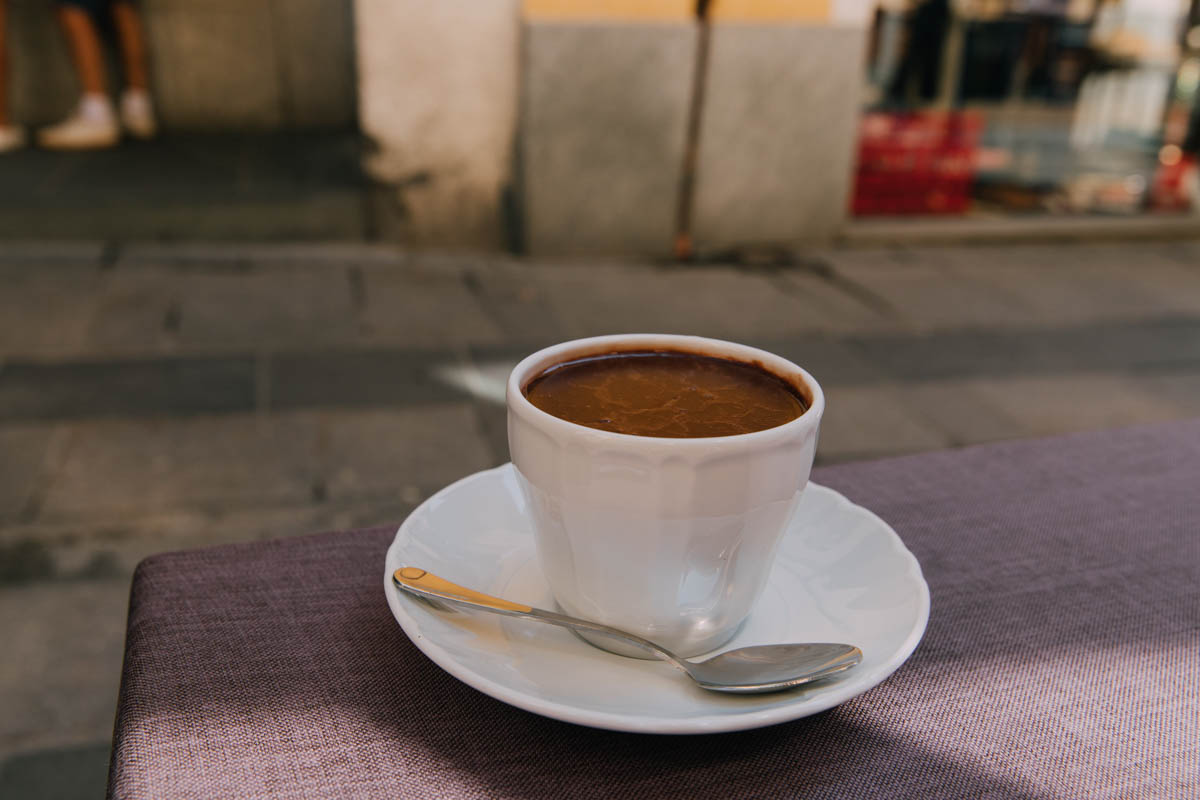
Originally, our plan was to head to Grand Hotel Courmayeur to use their spa, but when we found out the spa was closed we ended up on their balcony, sipping cocktails and staring out in awe of the surrounding mountains.
The rest of the day was spent indulging in all the Italian food we could get our hands on- focaccia, gelato, Aperol spritzes and of course, loads of delicious pasta. After all, we had four more days of hiking to burn off the calories!
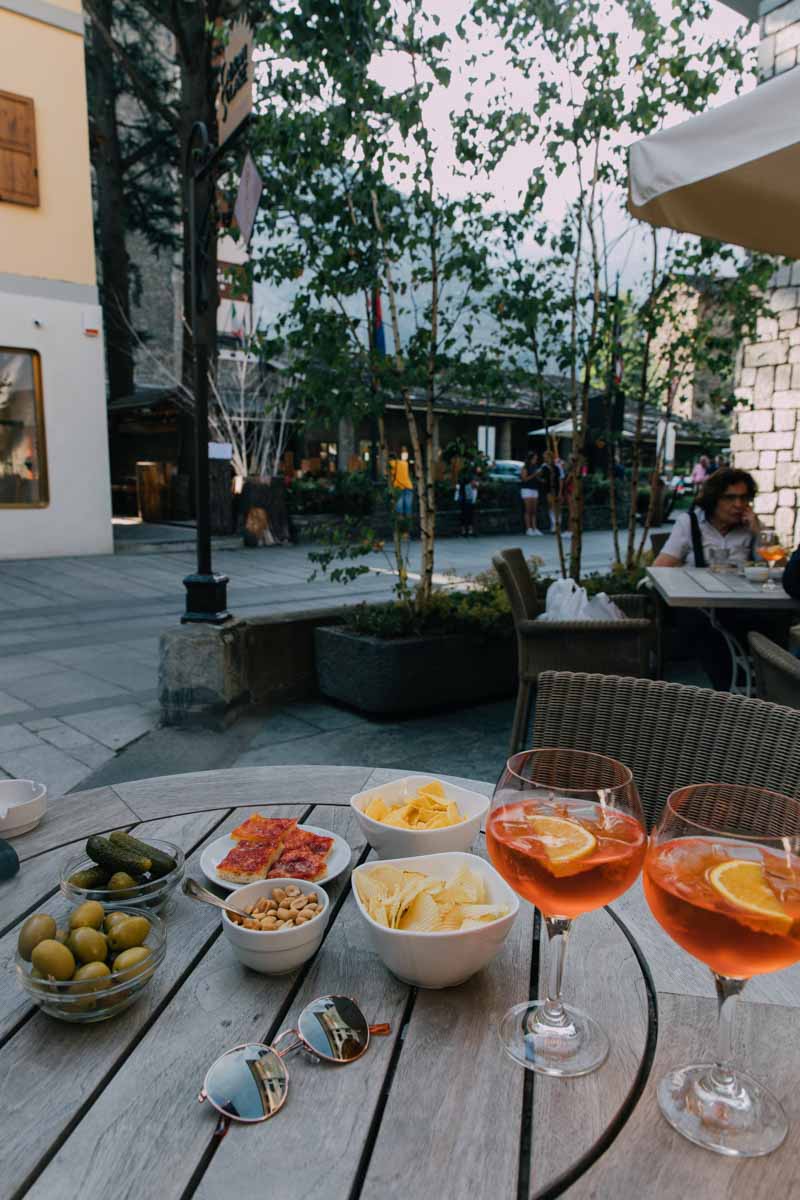
Day 6: Val Ferret
Hiking Distance: 14km (8.6 miles)
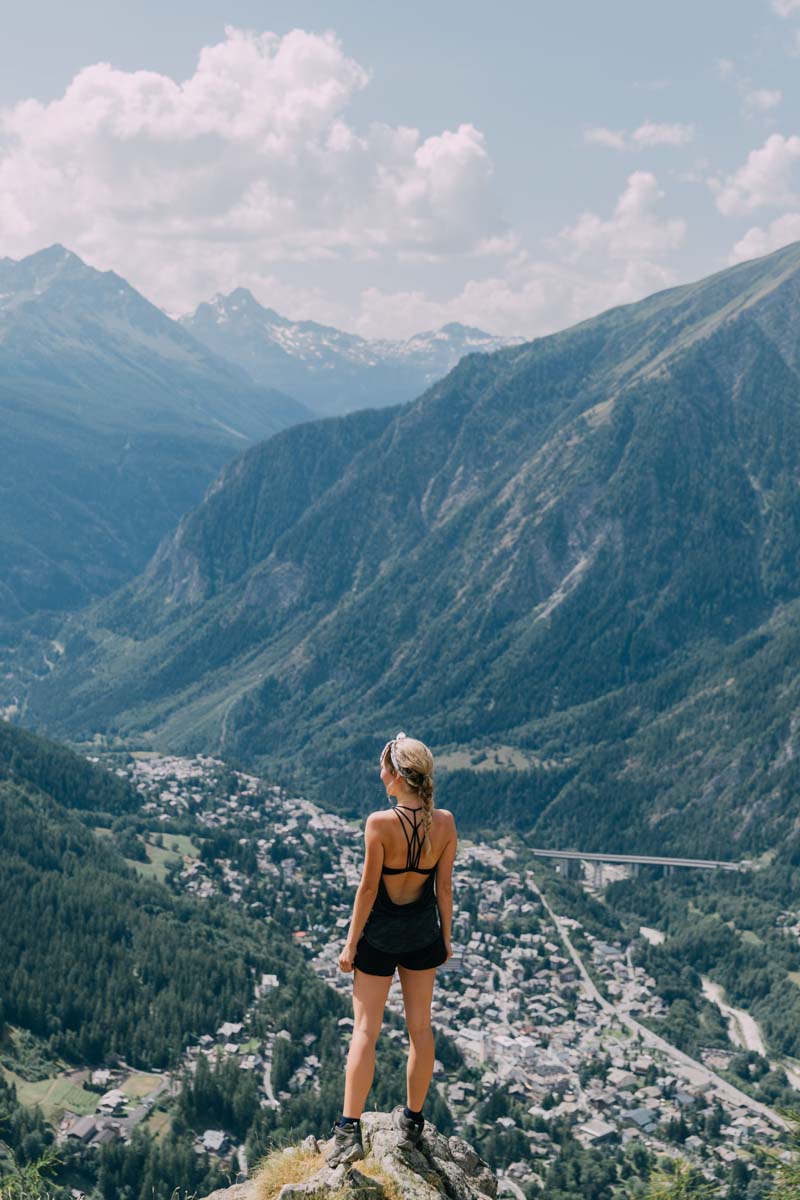
Our next day of hiking started off with a gentle meander through town and quickly turned into a solid uphill hike through the shady forest. Although I loved hiking through open valleys on the preceding days, the shade was much appreciated.
Once the trees did clear, we were greeted with some seriously spectacular views. We finally got to lay eyes on the mighty Mont Blanc mastiff! After a lunch stop on the top of the mountain, we followed along a balcony path and through the forest before making it to Refugio Bonatti.
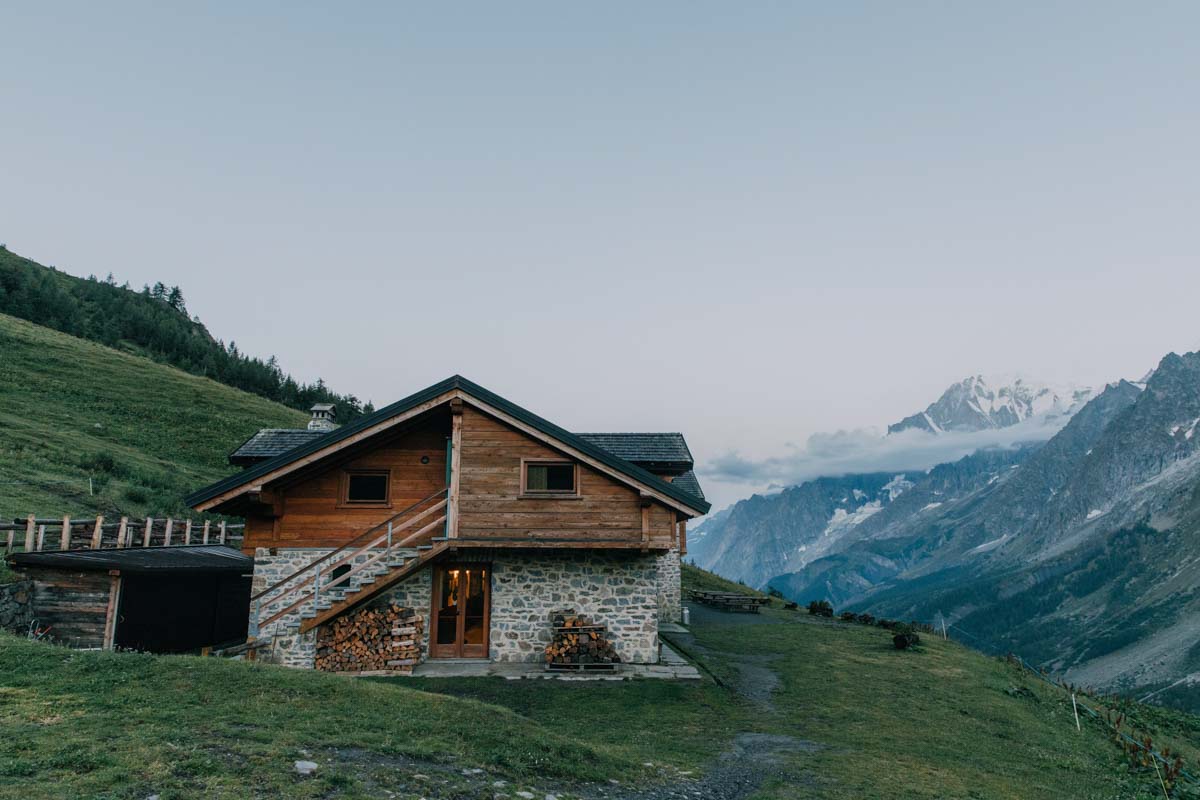
The accommodation had a jaw-dropping view over the Italian Val Ferret… When I walked outside it felt like the mountains were literally on our doorstep. That evening, we played cards until the sun dropped below the horizon, before retreating inside to feast on the best refuge food of the trip.
Day 7: La Fouly
Hiking Distance: 20km (12.5 miles)
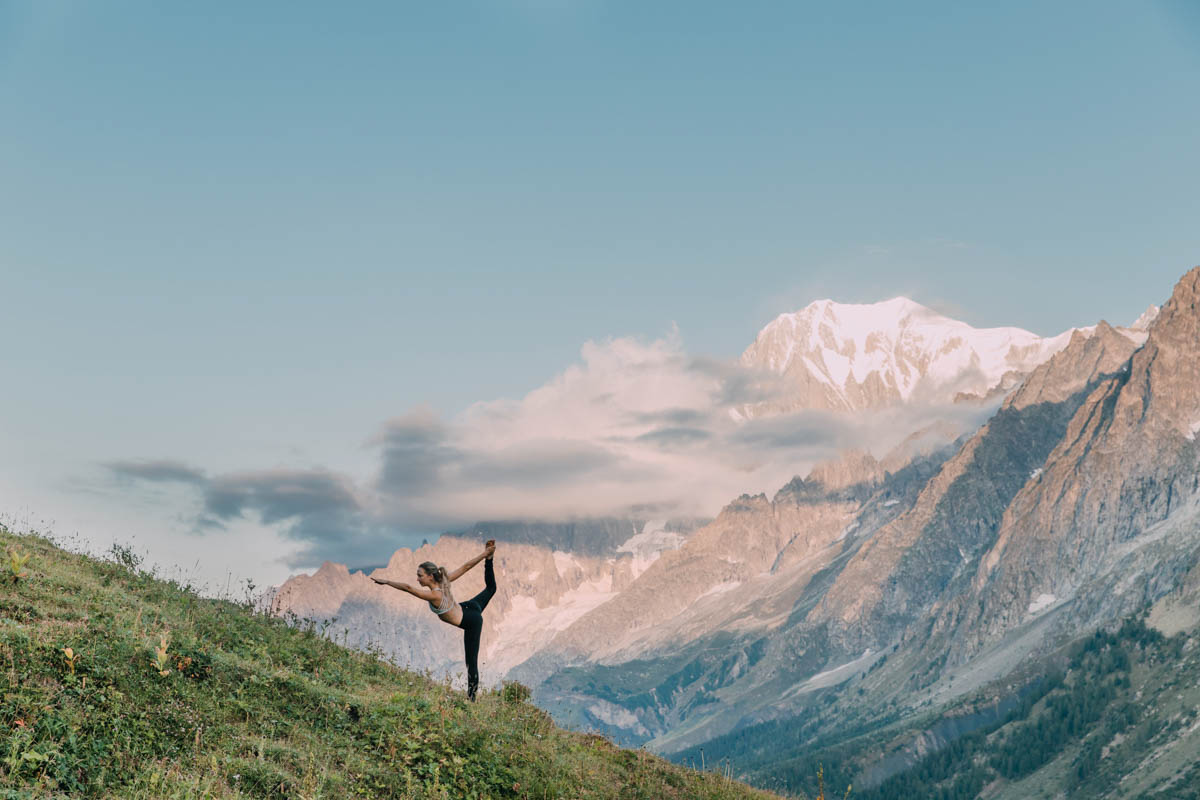
I woke up bright and early in order to soak in the sun rising over the Val Ferrett and do some yoga with a view. Our first two hours of hiking were fairly lax- we meandered down a fairly flat path before stopping at a cafe that served incredible espresso.
It was all uphill after this. We had a very steep hour-and-a-half climb up to Grand Col Ferrett. This was one of the most challenging sections of the hike- both because of the steepness and the fatigue that was setting in from previous days.
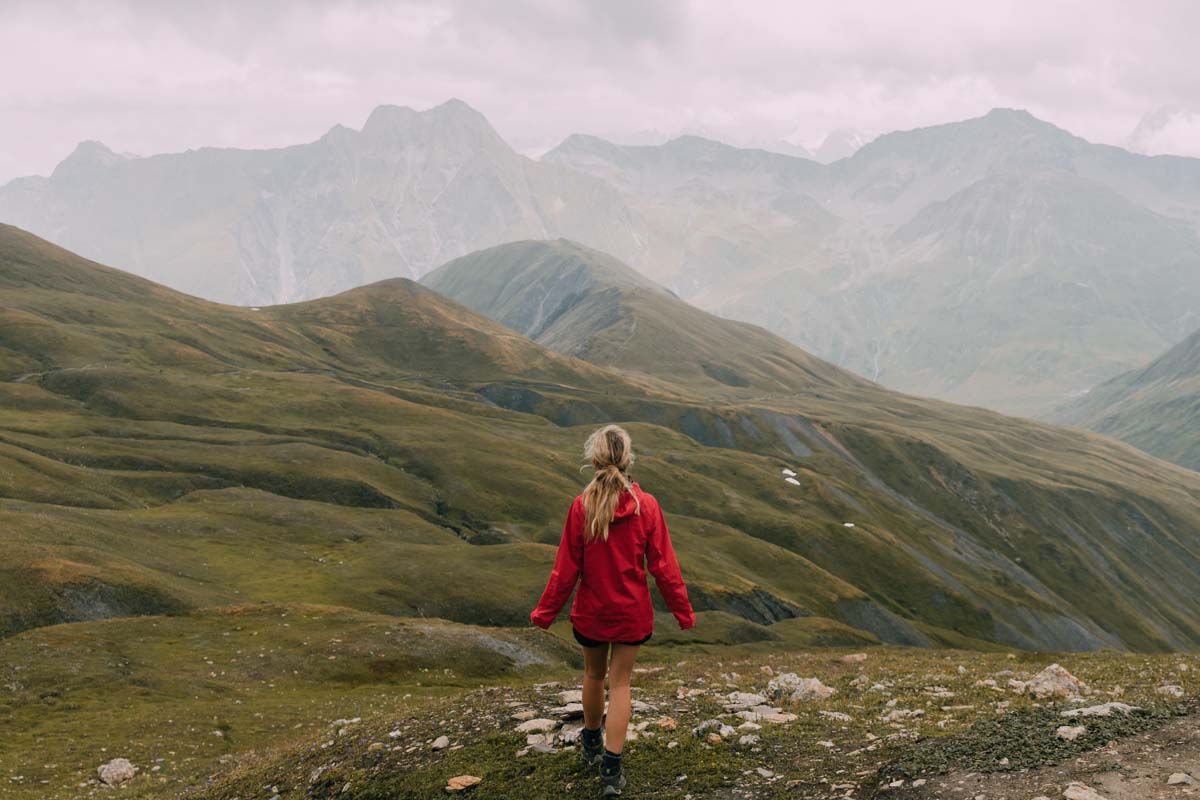
As we ascended to the top and crossed into Switzerland, we had planned for a picnic lunch. However, a storm was rolling in so we pushed on for another few hours of hiking. Walking in the rain was more punishing than I expected.
It suddenly got very cold and I was eternally grateful for my waterproof jacket! After hiding out in a refuge and finally getting to eat lunch, the rain began to ease and we walked down another hour and a half town to the little Swiss town of La Fouly.
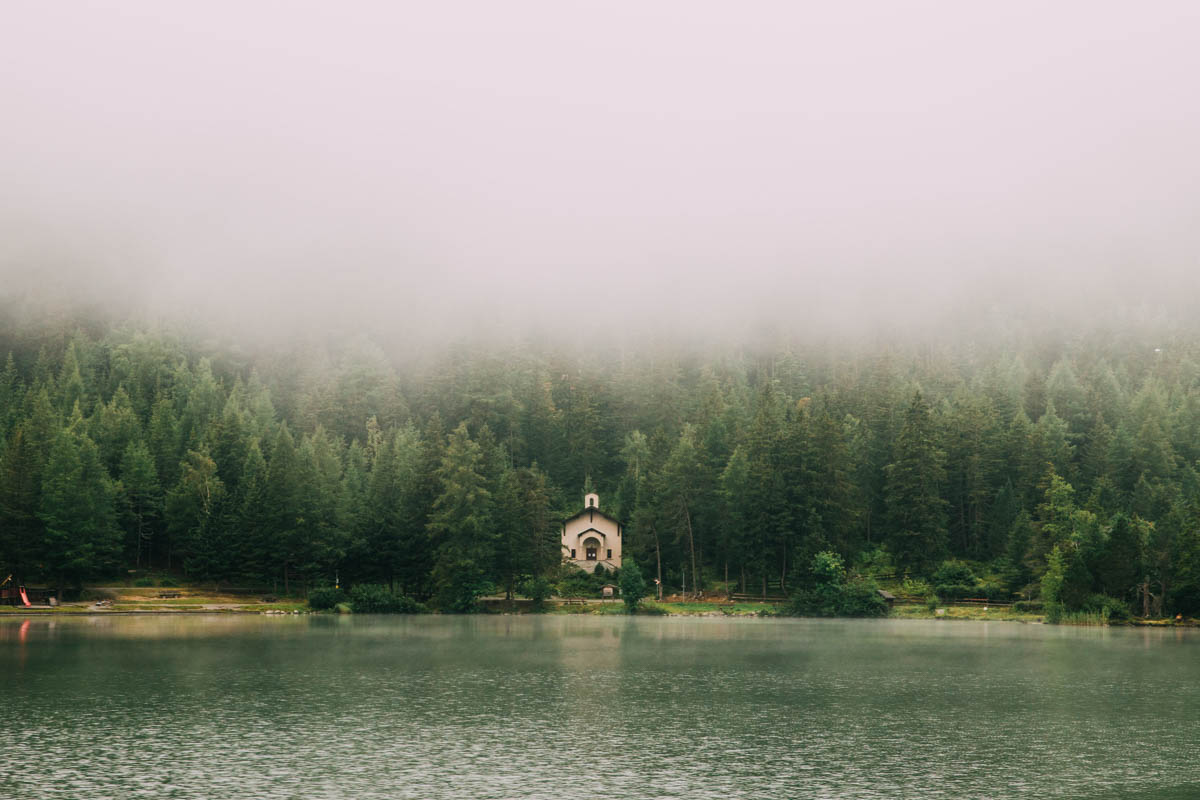
Day 8: Trient
Hiking Distance: 16km (10 miles)
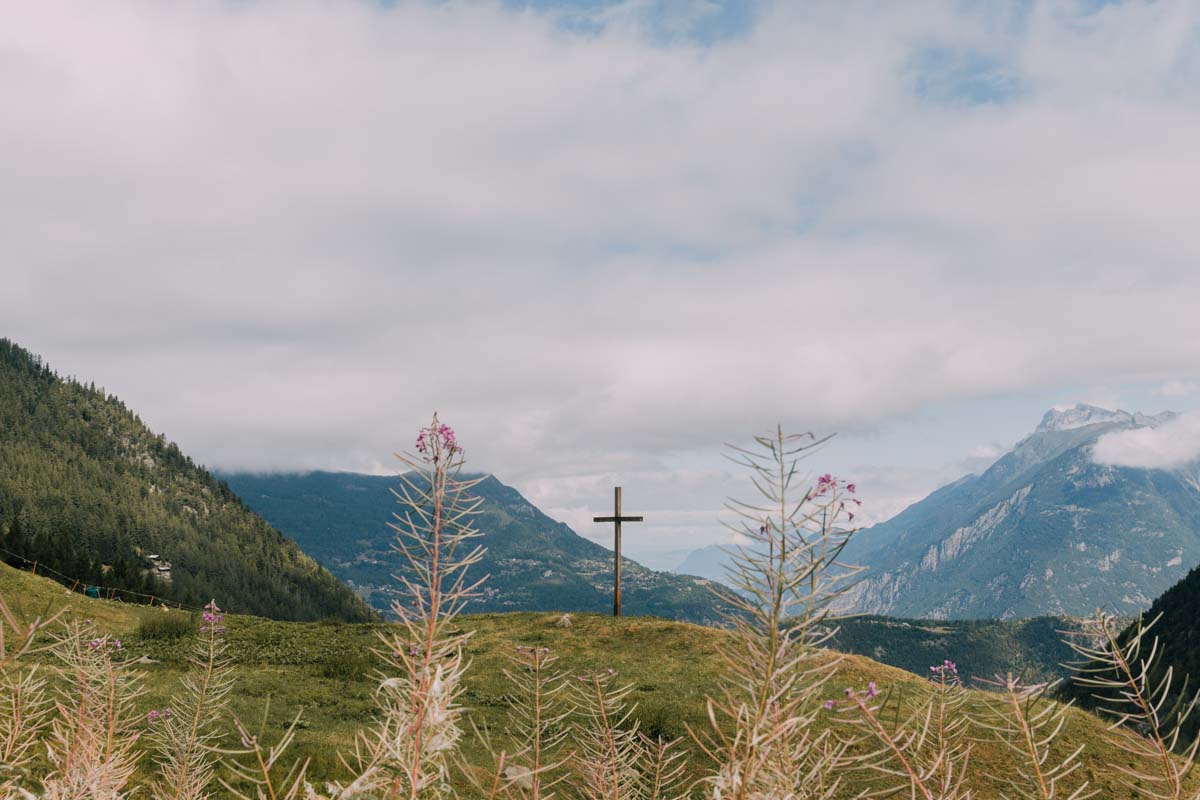
Today began with an hour-long bus ride to the picturesque valley of Champex. The first part of our hike was an easy meander through open fields filled with wildflowers, cows and quintessential Swiss chalets.
We started our steep ascent for the day through dense forest. Once we came out from the forest, we traversed around an open path before finally making it to a lovely little refuge with a phenomenal view over the valley.
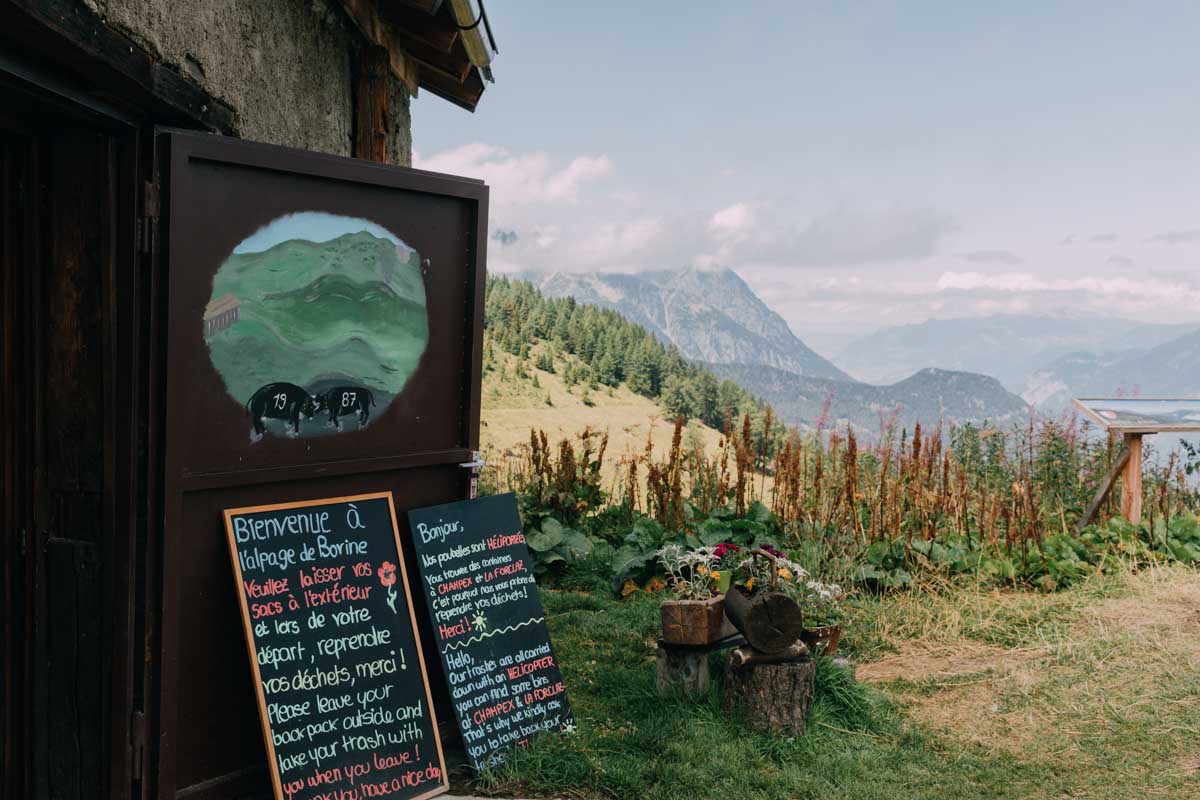
Here, I grabbed a Rosti au Fromage for lunch, which is fried shredded potato with Gruyere cheese. It was possibly the most delicious thing I have consumed on a hike, period.
We spent the next few hours climbing down to the town of Trieste and arrived in the late afternoon at our accommodation. It was the first evening that my muscles were REALLY starting to feel tired on the hike.
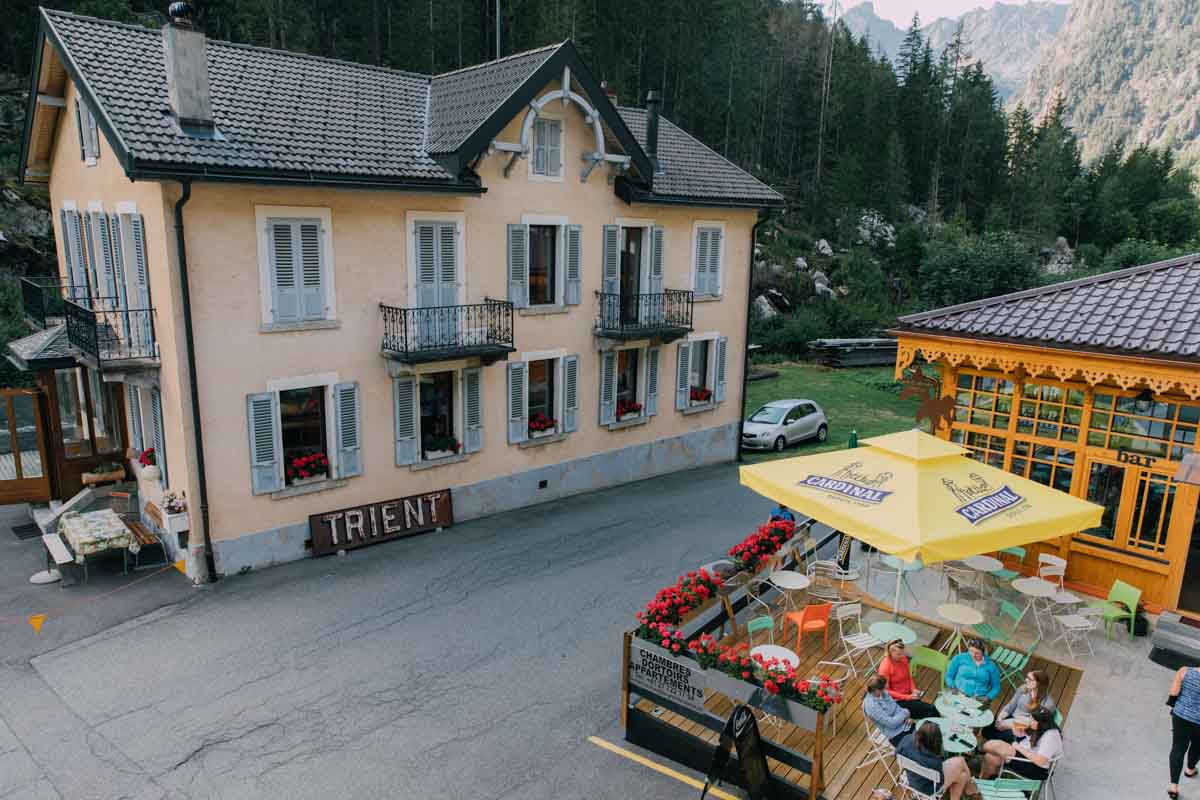
Day 9: Chamonix
Hiking Distance: 14km (8.7 miles)
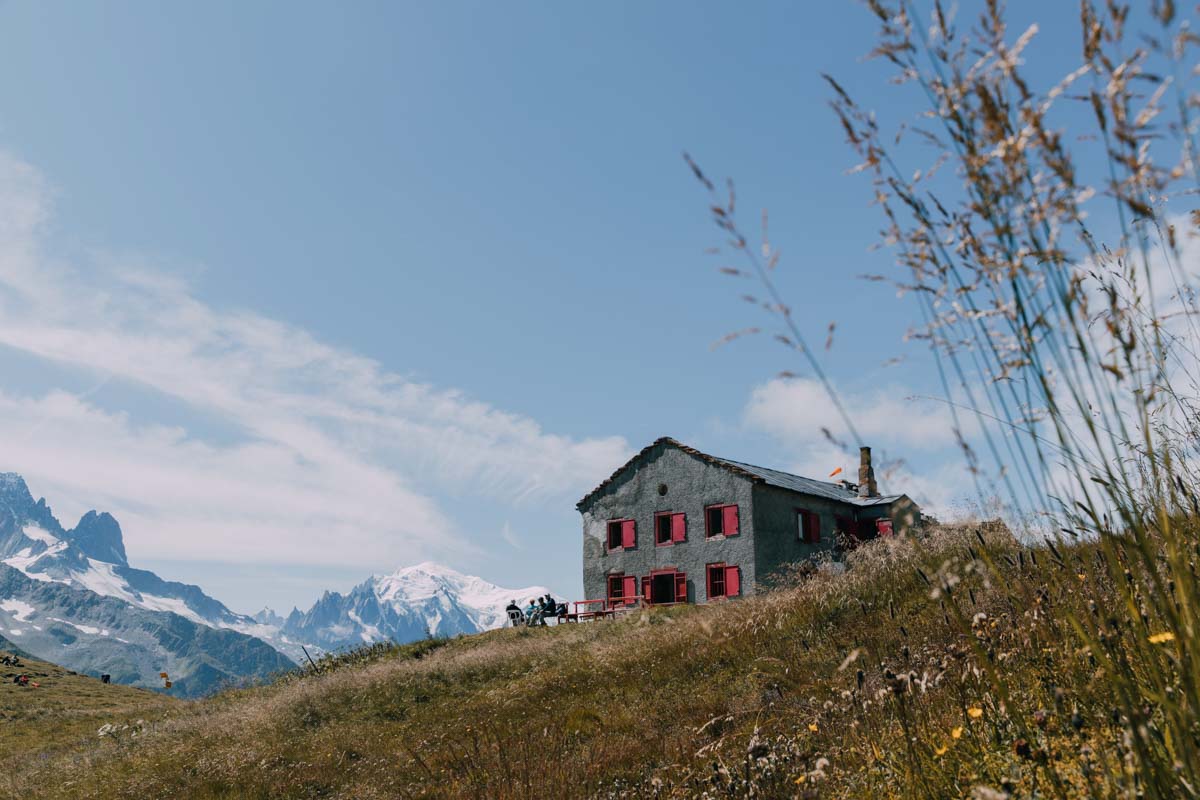
Our final morning began with an uphill battle, both physically and mentally. Although my calves were burning more than they had ever burned before, I powered up the Col de Balme with all the energy I had left within me.
Reaching the peak was a rather surreal moment. I sat and ate my picnic lunch, looking out over the magnificent Mont Blanc Mastiff and thinking how far we had all come. Not only with the distance we had covered but with the little family our group had formed in the past 8 days.
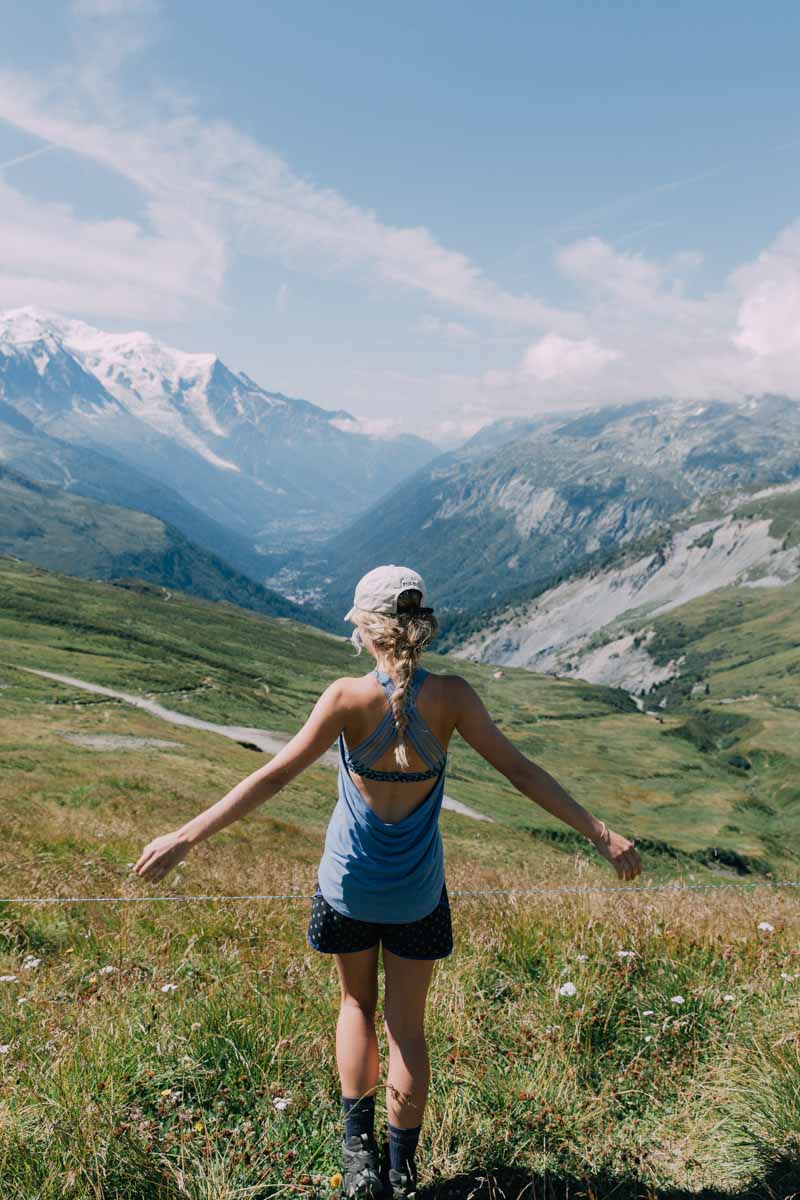
Our final descent down the mountain towards Chamonix was bittersweet. Part of me was excited to be back on flat, paved ground, and the other part was devastated that we had reached the end of such an epic hike.
Day 10: Chamonix
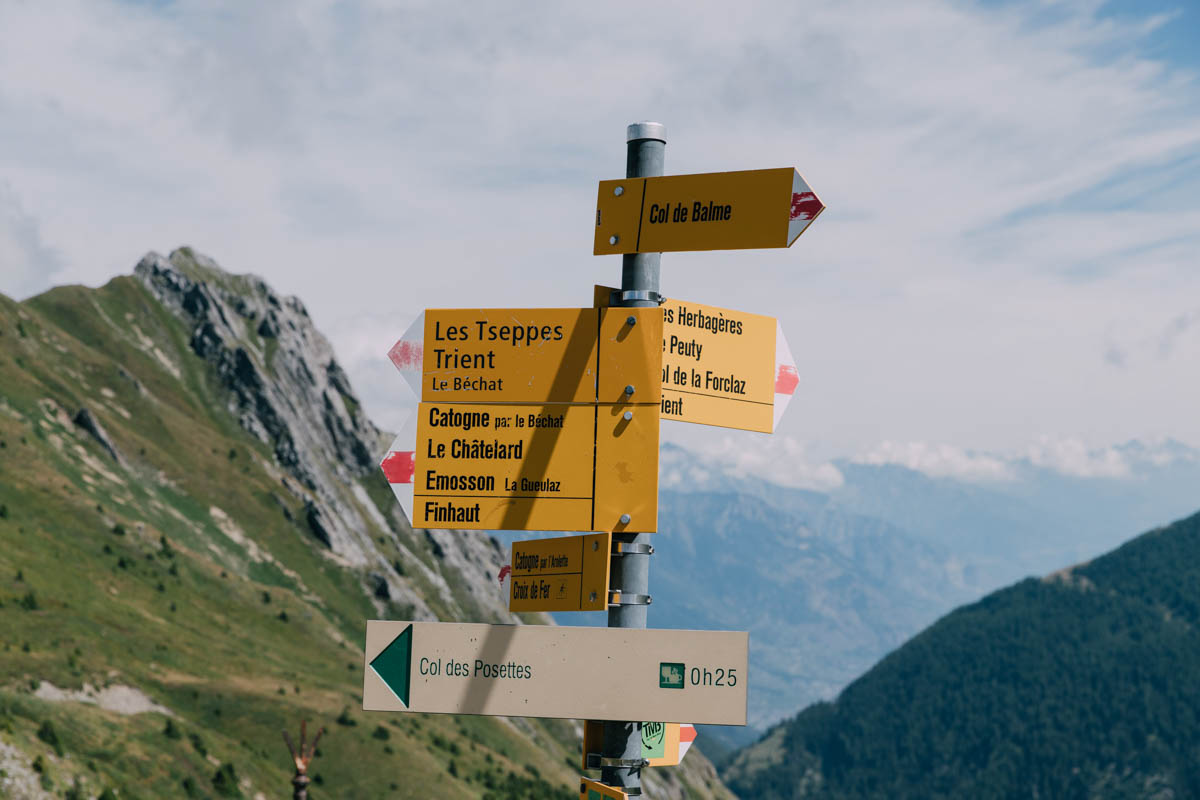
We finally made it back to the hotel in Chamonix we had slept on the first night of our trip. As I threw the pack off my back, took off my well-worn hiking boots and washed every last bit of dirt off my body, I flopped onto the hotel with the strangest feeling.
Normally, at the end of a trip, I feel completely drained, both physically and mentally. Although I had been exerting myself for the past eight days, a strange sense of exhilaration coursed through my veins. I felt more ALIVE than I had for weeks.
My Final Thoughts on Tour du Mont Blanc
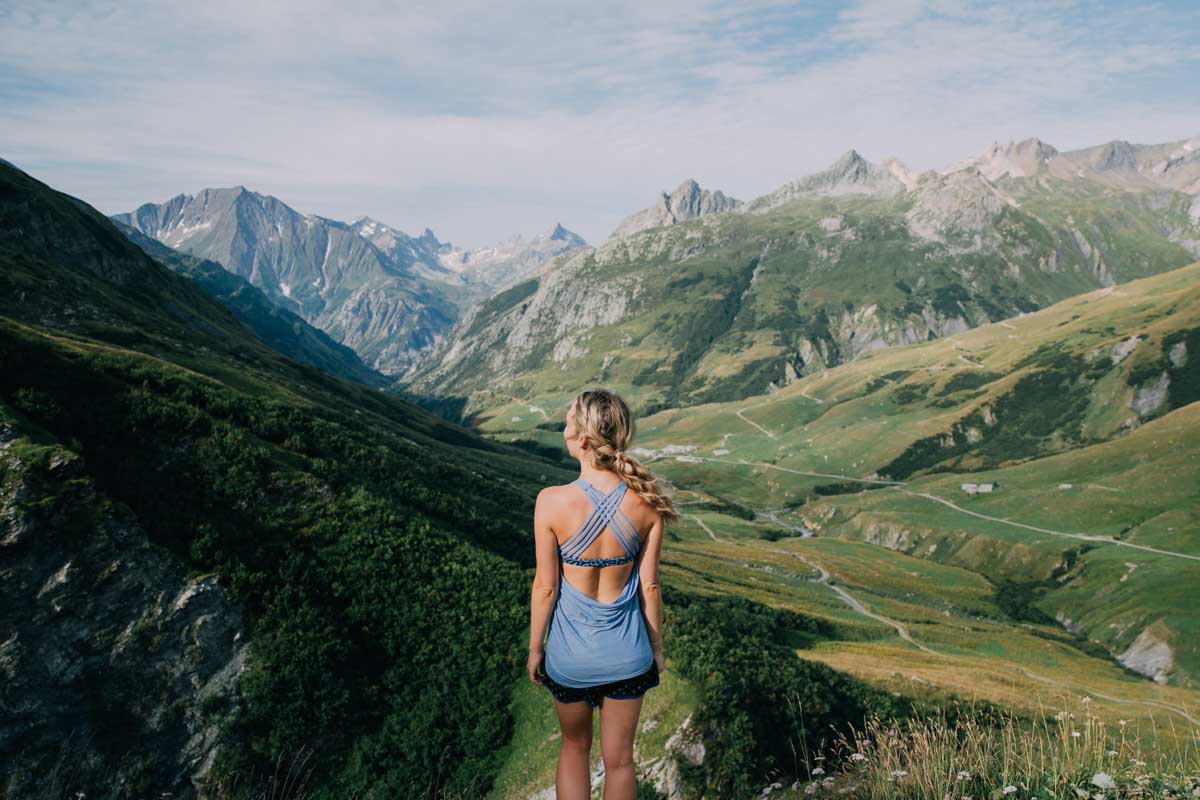
It is incredible what 8 days spent in nature and disconnecting from the world can do for the soul. This hike has inspired me to make more of my travels centred around getting active in the outdoors. It really has been one of the most enjoyable trips I’ve taken to date.
How to Book this 10-Day Mont Blanc Guided Hike

If this post has inspired you to want to take on the epic adventure of Tour de Mont Blanc yourself, I couldn’t recommend G Adventure’s Trekking Mont Blanc tour highly enough. Our tour guide was incredible, everything was very organized and it is very fairly priced.
Liked this post on hiking Tour du Mont Blanc? Pin it for later!

Hey, I'm Nicola!
I am a travel + food blogger on a mission to discover the best destinations & dishes in the world. Thanks for joining the adventure!
WANT TO GROW on SOCIAL MEDIA?
Download my FREE pdf guide with 5 simple steps guaranteed to grow your online presence!
Go check your inbox!
sign me up!
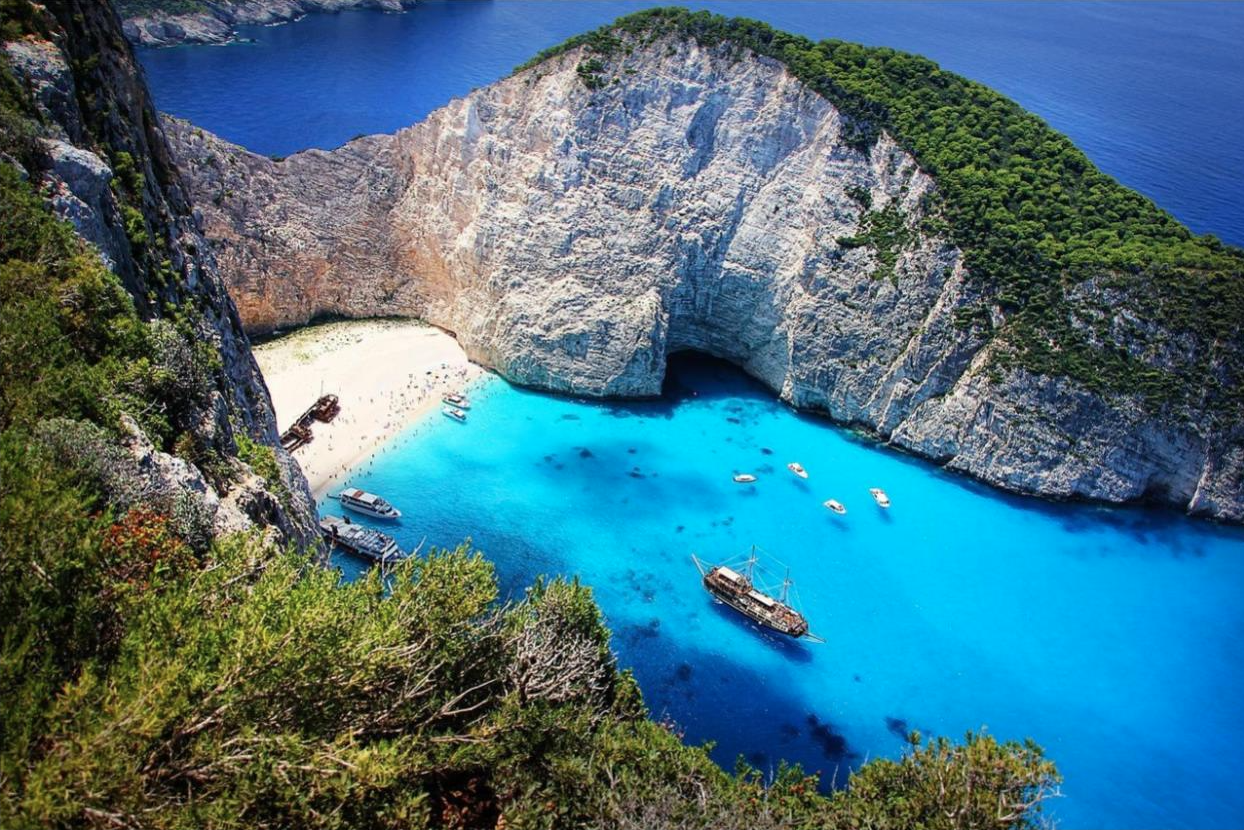
A Guide to Sailing in the Ionian Sea
Find out why the Ionian Sea in Greece is one of the most spectacular places in the world to go sailing! Image source Imagine traveling in a blue sea of calm waters and cool winds on the Western Coast of Greece. The waters lead to a paradise of islands with white sandy...
Turkish Airlines Food: Economy Class Review
Ever wondered what Turkish Airlines food is like in Economy Class? I reviewed everything I ate flying from London to Tbilisi. Normally when I travel short-haul in Europe, I'm flying on a budget airline that basically charge you money for breathing. So it was a real...
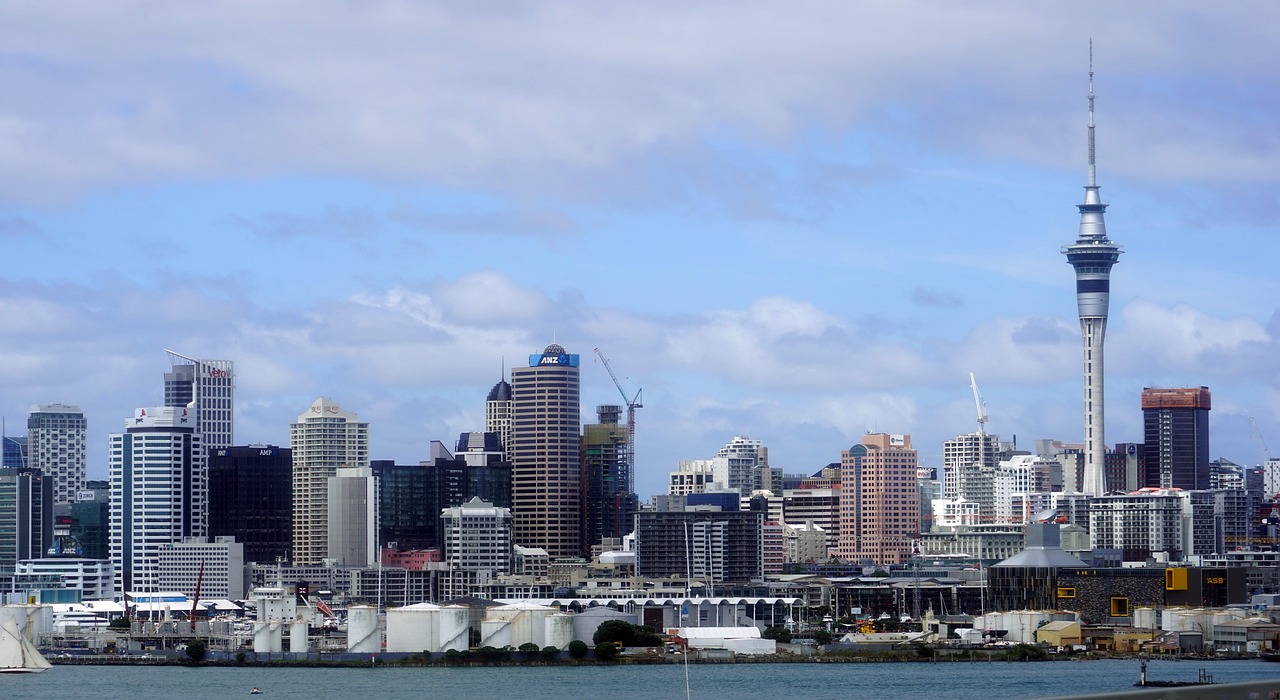
Fun Things to Do in Auckland at Night
Image source Auckland is the most populous city in New Zealand and, as such, offers a great deal of activities. No matter what a traveller looks for, they’ll find it here. Auckland is a stunning harbourside city during the day, yet it really turns on its charm when...
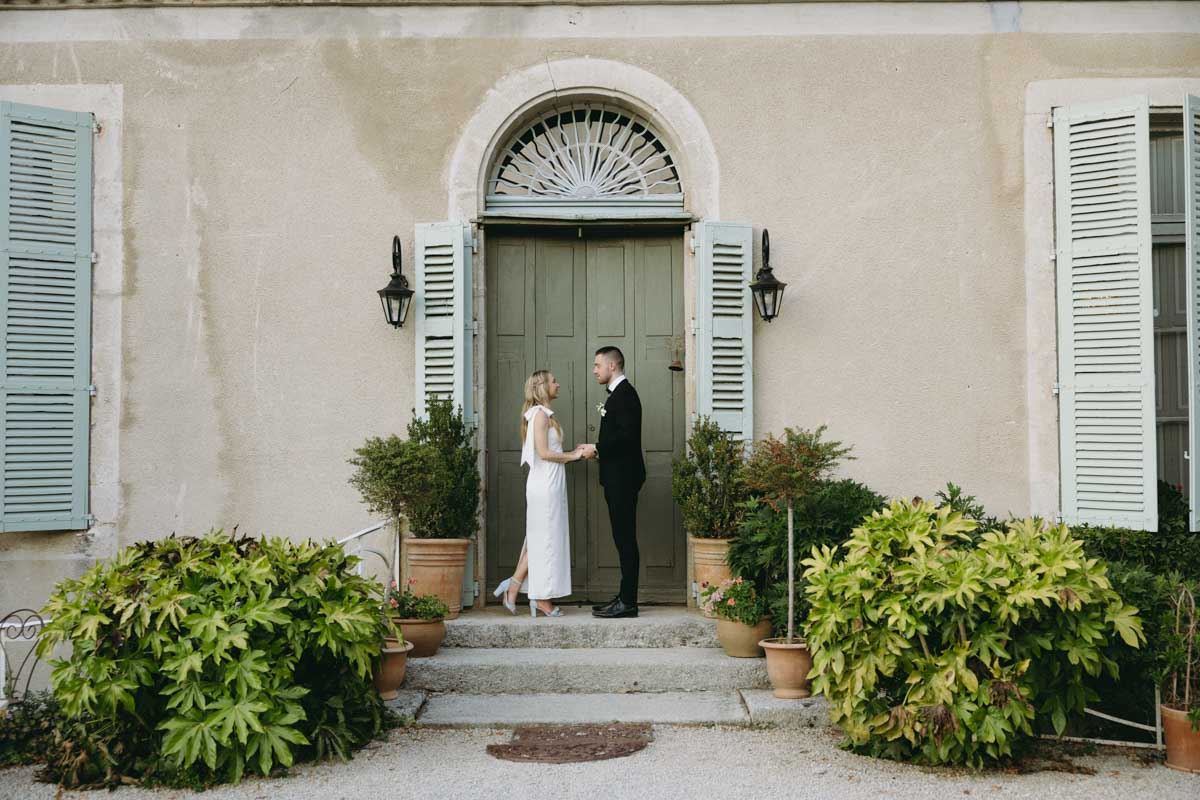
Our Dream South of France Wedding
This is what it looks like to have a 3-day wedding in the South of France! On the 23rd of August 2023, James and I finally got to have the wedding celebration of our dreams. We had sixty of our nearest and dearest flying from all over the world to join us for three...

Tour du Mont Blanc Cost: 9 Things to Consider
We use affiliate links and may receive a small commission on purchases. Read more about us.
If you’re looking for an honest guide on the Tour Du Mont Blanc cost, you’ve come to the right place!
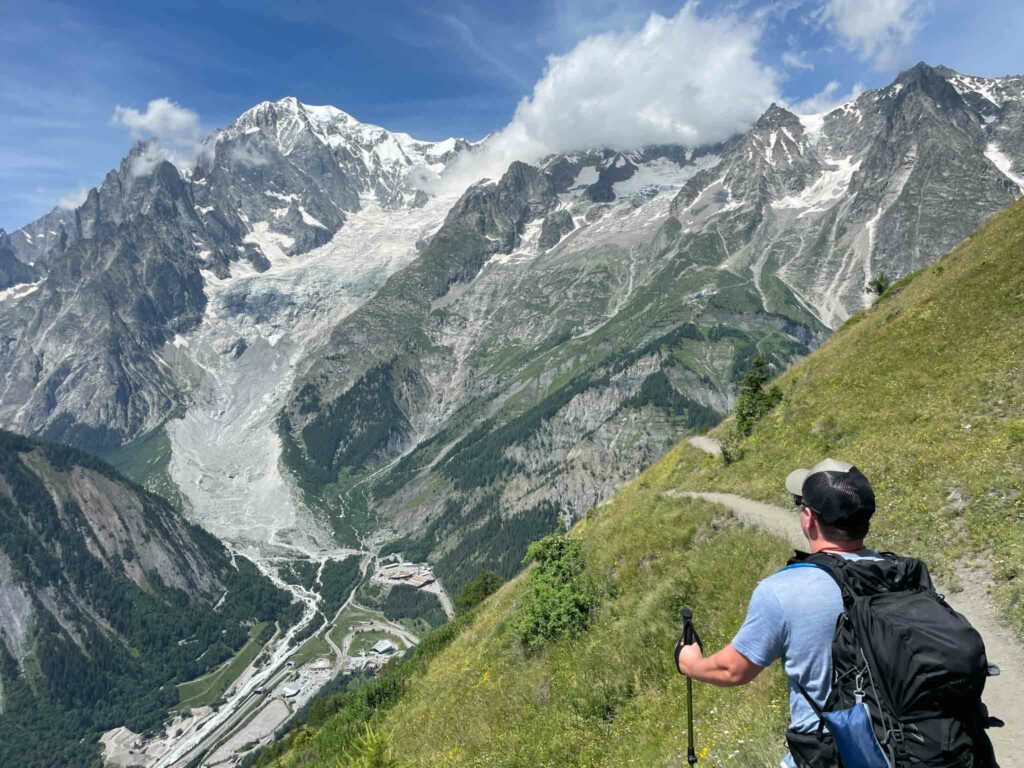
And yes, hiking the TMB is definitely worth it! This is a dream trek (hike) that should be on your bucket list, but there’s only a short window of time to hike the TMB .
The cost will depend on a variety of factors but mainly whether you want to go self-guided, guided, camping or DIY . It can get complicated quickly and there are some very good TMB planners that can help you every step of the way.
Read until the end where I share the very best deals for each way of hiking the TMB.
What You Will Learn
What is the Tour Du Mont Blanc Cost?
Tour du mont blanc cost summary, tour du mont blanc costs guided vs self-guided best deals, morgan’s tmb video : see what it’s like, 9 main costs of tour du mont blanc, final verdict: ways to book a hut to hut hiking trip, frequently asked questions.
Authors TL;DR: ➡️ For a 10-day TMB hike, which can be completed faster or slower depending on your schedule, a couple from the US can expect to spend anywhere from $2500 to $8500, with the biggest expenses being flights and accommodations.
However, there are plenty of ways to make this experience more cost-effective without sacrificing too much comfort.
In this post, we’ll provide suggestions on how to lower your expenses while still enjoying the majestic views and diverse terrain of TMB.
Your Mileage May Vary, This is my Estimate
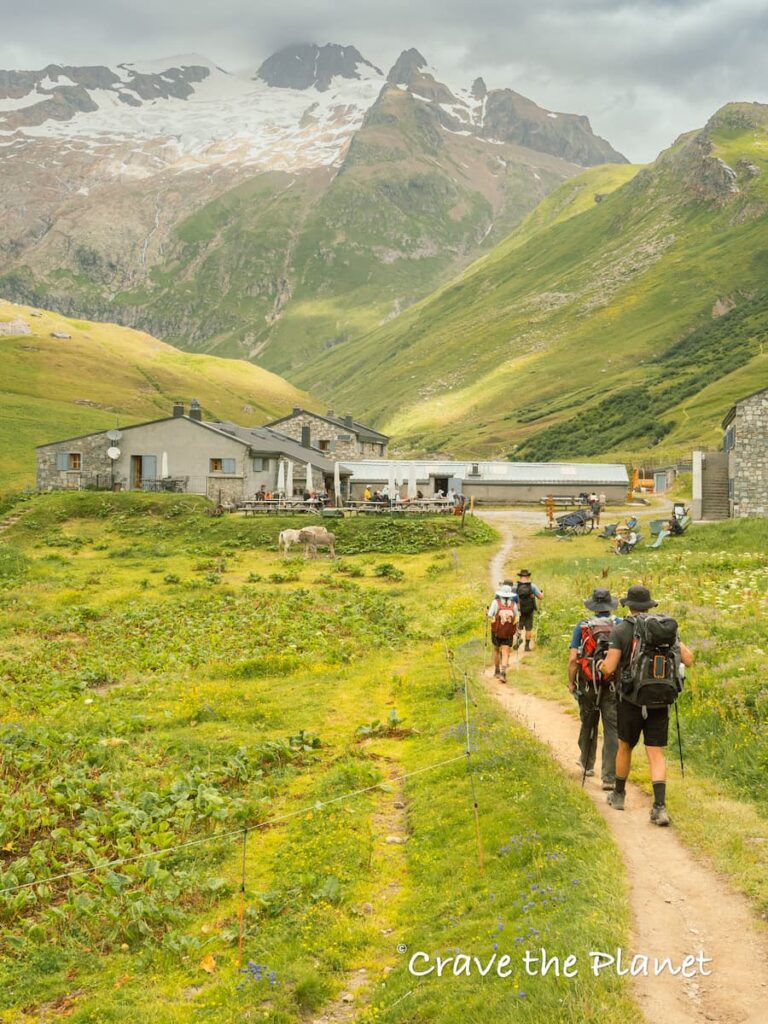
- Flights : Go to Geneva $1,000-$1,500
- Airport Transfer : $20-100
- Luggage Transfer : $75-300
- Gondolas : $0-100
- Accommodations : $10 (camping) – 250 (nice hotel)/night
- Food Varies: Supermarkets to fine dining. Half board included in huts.
- Wine : Reasonable $15-30/bottle
- Trekking Insurance: depends
I have made an effort to keep track of our expenses during our summer hike 5 day hike on the TMB in 2023. We splurged on paragliding in Chamonix and you probably should to!
Although it is not the most expensive hiking destination , it is certainly not cheap , especially with the 10 euro beers at Refuge de La Balme!
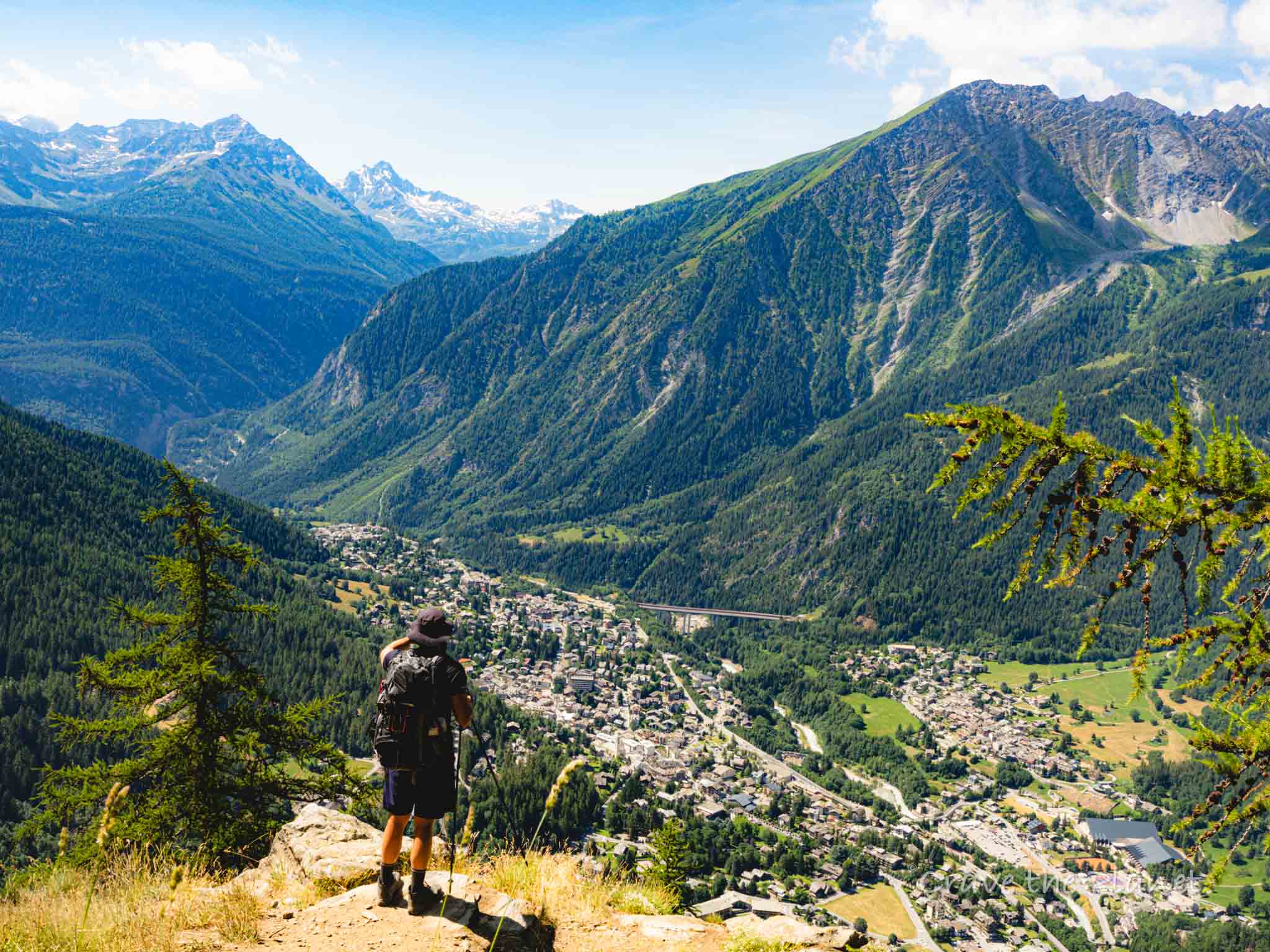
- Highlight: Freedom to go your own pace
- Price: Moderate
- Logistical Effort: You'll need to understand maps, trail guides, hut check-in
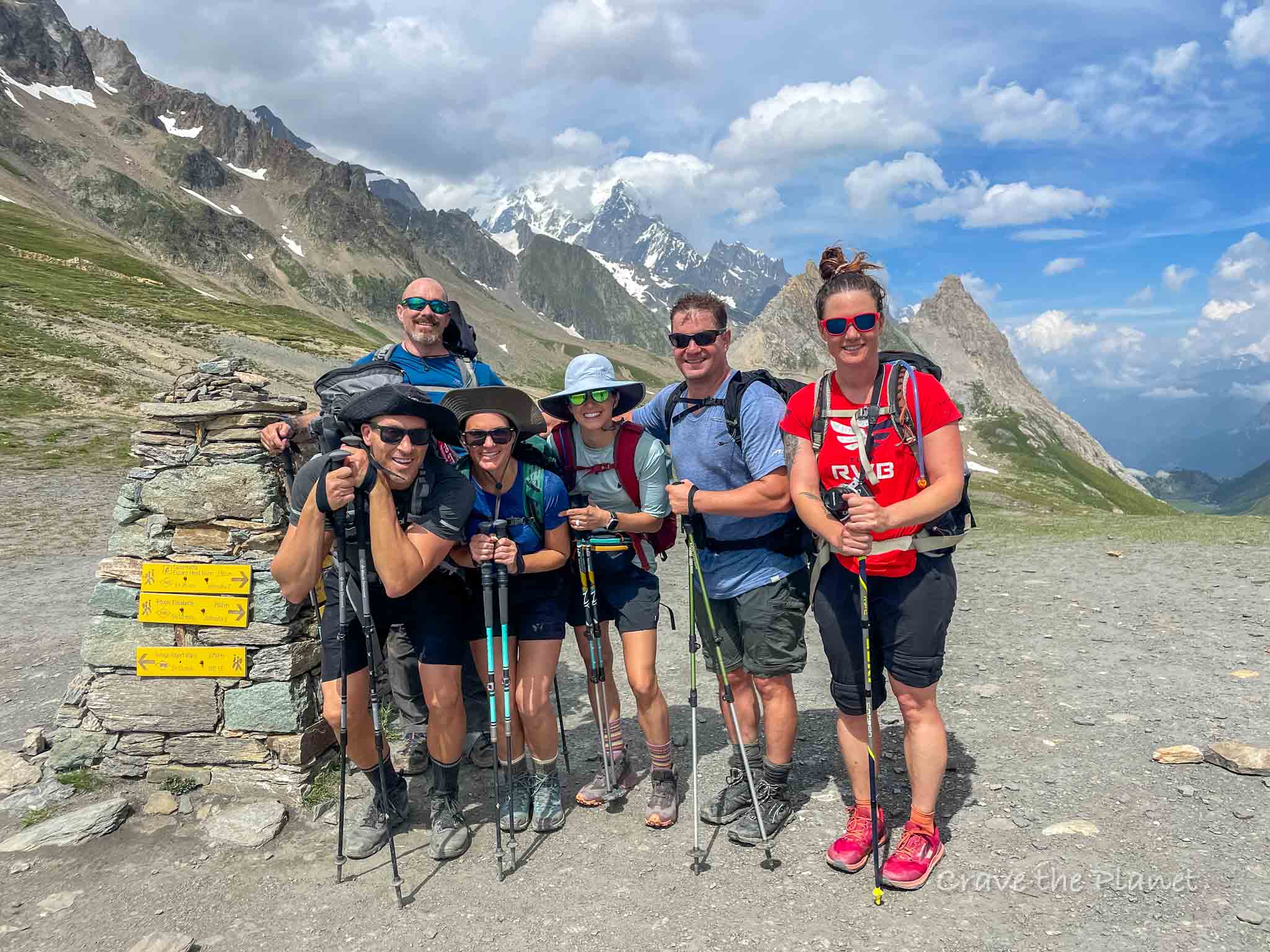
- Highlight: Enjoy the journey with no stress
- Logistical Effort: Just show up, they will get you at airport
1. Air Travel from the USA
When planning your TMB hike, it is important to consider the most convenient location to fly into. Geneva, Switzerland is a popular starting point for TMB, and a shuttle transfer can take you to Chamonix, France where the hike begins. Les Houches is the official starting point of the hike.
Flight prices can vary greatly depending on the time of the year and where you are flying from. To get the best deal, consider flying during a weekday, not on holiday, and during shoulder months. From Atlanta to Geneva, leaving the first week of September and returning the last week of September, we paid $1250/person.
Here are some important points to keep in mind when booking your air travel from the USA:
- Geneva, Switzerland is a popular starting point for TMB
- Consider taking a shuttle transfer to Chamonix, France where the hike begins
- Les Houches is the official starting point of the hike
- Flight prices can vary greatly depending on the time of the year and where you are flying from
- To get the best deal, consider flying during a weekday, not on holiday, and during shoulder months
Remember to do your research and book your flights in advance to get the best deal.
2. Airport Transfer
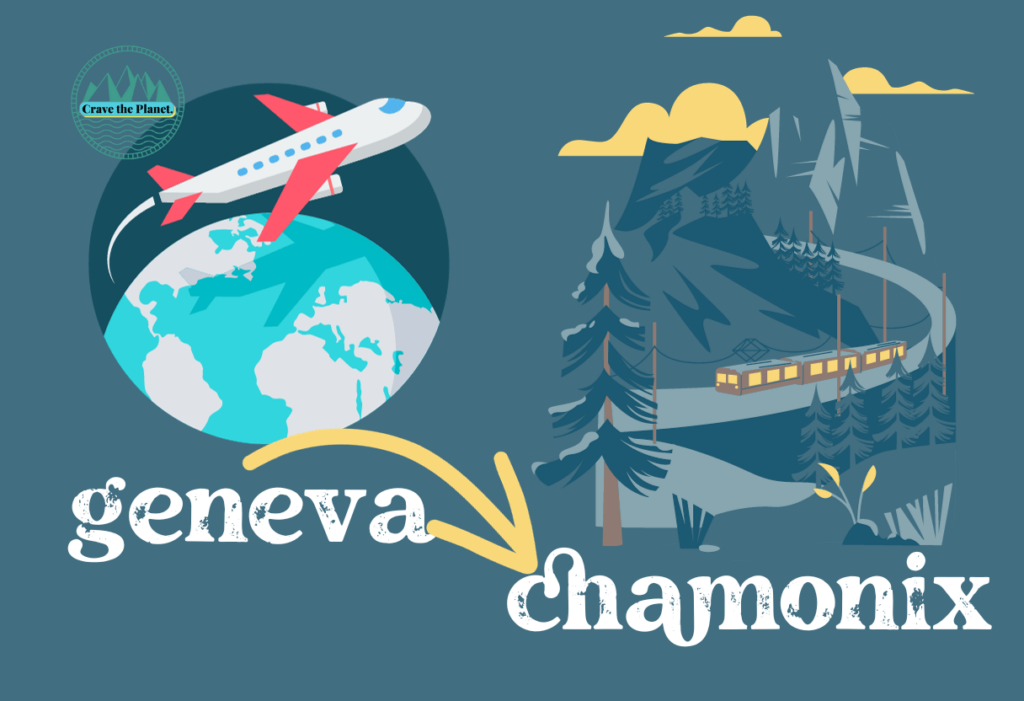
When traveling from Geneva to Chamonix, there are several transportation options available to you. Your choice of transportation will depend on your budget. Here are the most common ways to transfer from Geneva to Chamonix:
- Shuttle Bus: The shuttle transfer is the most popular way to travel to Chamonix. It is convenient, reasonably priced, and takes approximately 75 minutes. You can book online or in-person. During peak season, it is recommended to book ahead of time. Private shuttles are available for larger parties. Chamonix Valley Transfers is a popular shuttle company that charges $53 per person.
- Bus: Buses are another convenient option to get from Geneva Airport to Chamonix. There is a bus station at the airport, and the journey takes between 1.5 to 2 hours. The cost depends on the number of stops, but it usually ranges from $12 to $30. BlaBla Car Bus, EasyBus, and FlixBus are some of the popular bus companies.
- Train: Although it is the least convenient option, a train journey from Geneva to Chamonix takes approximately 3 to 4 hours and requires multiple train changes. The cost ranges from $25 to $56 per person.
- Car Rental and Taxi: Car rentals and taxis are more expensive options. Renting a car is not necessary unless you plan to explore other parts of the country before starting the hike. Renting a car or hiring a taxi can cost at least a couple of hundred dollars.
The shuttle transfer is the most popular and convenient way to travel from Geneva to Chamonix. Buses are another affordable option, while trains are the least convenient and most time-consuming.
Car rentals and taxis are expensive and not necessary unless you plan to explore other parts of the country.
Read ➡️ Exactly How to Go from Geneva to Chamonix
3. luggage transfer.
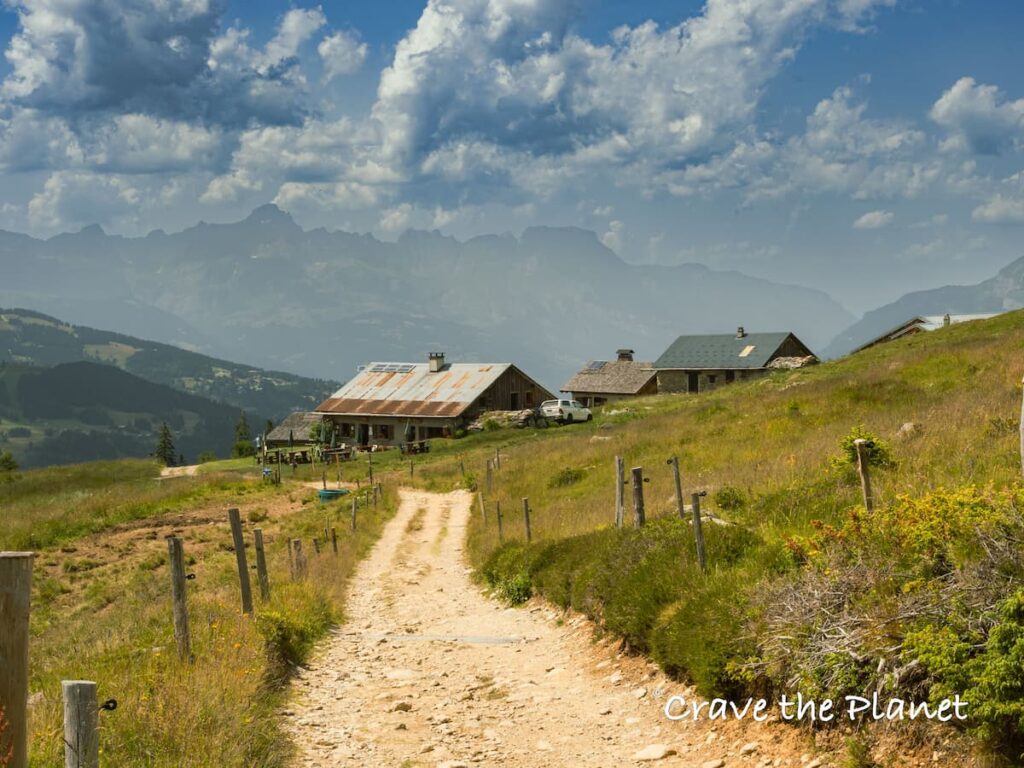
To make your hike more comfortable, you can use a luggage transfer service to transport your bags from one accommodation to another. However, keep in mind that this service is only available for mountain huts (refuges), hotels, and staffed camping grounds.
We have always chosen to carry our things and leave “normal” clothing in a parked car or with a previous hotel. Everyone smells on the TMB anyways. But you do you if you need luggage transportation it’s available.
BnB accommodations, private accommodations, accommodations without reception service, and some mountain huts like Rifugio Bonatti are not included in this service.
You can easily find this information on the website of each transfer service company.
There are three main companies that offer luggage transfer services.
Chamonix Valley Transfers offers a flat rate of $705 (€600) for up to 14 bags, which is a great deal for large groups. The weight limit for each bag is 15 kg (33 lb.).
Besson Transports Taxi Mont Blanc provides a customized quote depending on the number of bags you have and all the places you would like the luggage transferred to. They have a very user-friendly website that allows you to enter all the necessary information and provides you with an immediate quote.
For a friend’s hike, they had one luggage piece delivered to every accommodation except Rifugio Bonatti, and the cost was $297 (€250) per bag. The weight limit for each bag is also 15 kg (33 lb.).
Tip: If you want to save money, you can carry everything yourself or split the cost with someone else.
Keep in mind that if you have extra luggage that you are not taking on the trail, your hotel may have a storage room where you can leave it. Some luggage transfer companies also offer free storage for your extra luggage. This can reduce your Tour. du Mont Blanc cost significantly.
Here are some important tips to keep in mind when using a luggage transfer service:
- Make sure that the name on your accommodations reservation matches the name on your luggage transfer service reservation. This is the only way for them to verify that they are delivering to the correct place.
- The weight limit for each bag is 15 kg (33 lb.).
- BnB accommodations, private accommodations, accommodations without reception service, and some mountain huts like Rifugio Bonatti are not included in the luggage transfer service.
Using a luggage transfer service can make your hike more comfortable, but make sure to plan ahead and choose the service that best fits your needs.
Read ➡️ Detailed Guide to Luggage Transfer on the TMB
4. gondolas and chairlifts.
During the Tour du Mont Blanc, you may utilize cable cars, trains, and buses to move around the valley. Chamonix Valley Bus and Train Transfers are reliable and affordable ways to move around the valley.
If you are staying in one of the hotels in the valley, you will receive a free ticket to ride the bus or train during your stay with the Carte d’Hôte (Guest Card). Otherwise, it is €1.5 per ticket.
Cable cars are a great way to avoid some of the ascends or descends to preserve your knees, but they can be pricy starting at $17 one way. Most of them close at the end of the season in August and may not be available if you are hiking in September.
Important points:
- Use Chamonix Valley Bus and Train Transfers to move around the valley.
- You will receive a free ticket with the Carte d’Hôte (Guest Card) if you are staying in one of the hotels in the valley.
- Cable cars are a great way to avoid some of the ascends or descends to preserve your knees.
- Cable cars can be pricy starting at $17 one way.
- Most cable cars close at the end of the season in August and may not be available if you are hiking in September.
Read ➡️ My Guide to the TMB Shortcuts and Gondolas
5. accommodations.
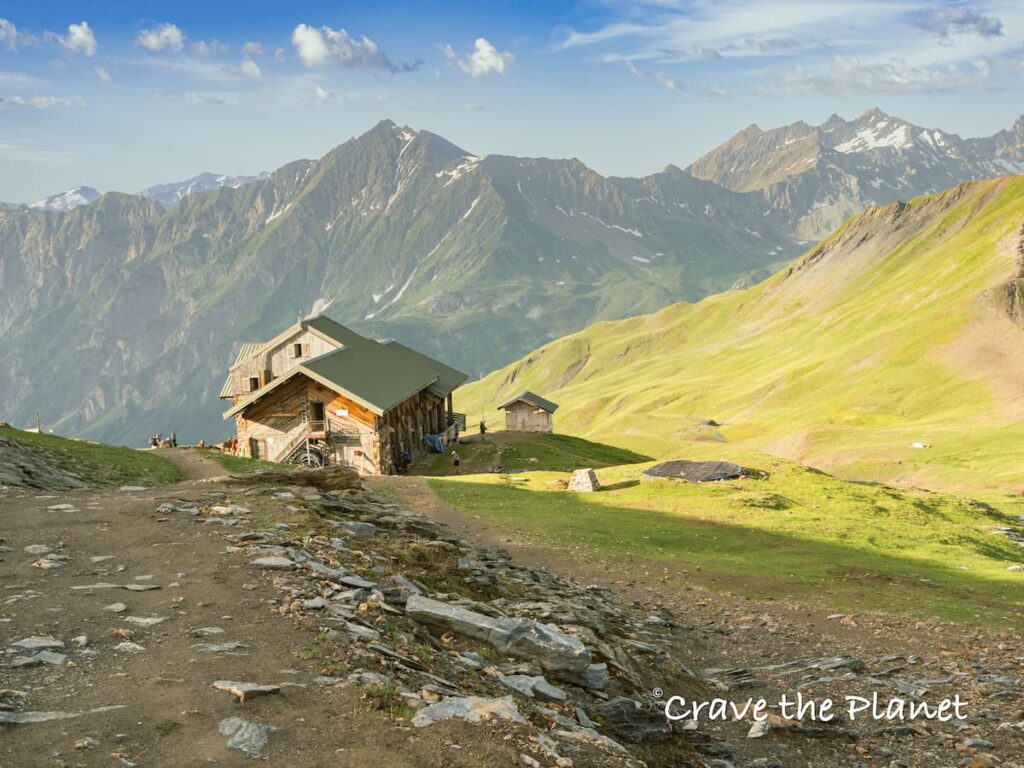
When it comes to accommodations, there are several options available to you on the Tour du Mont Blanc.
- The cheapest option is camping, with campsites costing anywhere between $10-$30 per night. However, wild camping is not allowed and campsites must be reserved in advance.
- Mountain huts, or refuges, are a more expensive option but still popular among hikers. With half-board, which includes overnight stay, dinner, and breakfast, they cost anywhere between $50-$95 per night. Showers, towels, and packed lunches may come at an additional cost.
- Hotels are the most expensive option, with prices ranging from $75-$350 per night. However, some hotels are fairly reasonable in price. Most hotels include breakfast in the price.
- Private rooms with showers in refuges are also available, but they are more expensive than dorm-style accommodations.
Most hikers use a combination of camping, refuges, and hotels for their accommodations.
For 10 days of hiking, the cost for both camping and hotel accommodations can be approximately $2000.
It is important to note that private rooms with showers in refuges and hotels with better views and balconies will cost more.
For more detailed information on accommodations ➡️ TMB List of Accommodations
6. food and snacks.
One of the benefits of the Tour du Mont Blanc hike is that you don’t need to carry much food with you as you will be passing through villages and towns every day where you can restock.
You can either stop at a refuge on the trail for lunch or have your accommodations pack a lunch for you. The cost for a refuge/hotel to prepare lunch for you is between $9-$12 per person, and about the same if you stop somewhere for lunch.
If dinner is not included in your accommodations, it usually costs $25-$50 per person.
The cost of food and snacks can vary significantly depending on your taste, the restaurants you visit, and if you like to cap the night off with a nice bottle of wine.
Some food options you may encounter on your hike include:
- Breakfast: Depending on your accommodations, breakfast may be included in the price or available for an additional fee. You may be able to find breakfast options at local cafes and bakeries as well.
- Packed Lunch: Many accommodations can prepare a packed lunch for you to take on the trail.
- Dinner: If dinner is not included in your accommodations, you can find a variety of restaurants and cafes along the way.
- Snacks: You can find a variety of snacks at local grocery stores and supermarkets along the route. Cheeses, bread, and dried meats are popular options.
- Drinks: You can find a variety of drinks at local cafes and restaurants along the route. Wine, beer, coffee, and tea are popular options.
The cost of food and snacks can add up quickly, so it’s important to budget accordingly. The Tour du Mont Blanc Cost Breakdown Table shows that food and snacks can cost around $300 for a 10-day hike for two people on a budget travel option, and up to $1000 for luxury travel options.
Remember to pack some snacks and water for the trail, but don’t worry too much about food as you will have plenty of options along the way.
Okay okay, this one is actually pretty good. Unless you’re going to camp, you won’t need a whole lot for hiking on the TMB as the huts provide most of what you need.
Certainly the most important thing to have are sturdy legs so you’ll need a gym membership – just kidding!
While the trek is strenuous with a lot of elevation gain each day, it’s more of a hike than a “trek”.
If you are starting from absolute scratch, I wouldn’t recommend the TMB.
So most of you will have what you need: good footwear, rain gear, trekking poles , hiking clothes, a comfortable backpack and sun protection.
The only special thing you’ll need for the huts are a sleep sac , earplugs and cash to buy wine. And btw: it’s hit or miss if you can bring trekking poles on a plane .
Check out my list of the minimalist gear needed.
8. Trekking Insurance
In case of emergency 👉 rescue insurance.
Crave the Planet partners with Global Rescue to offer the world’s leading travel protection services. Medical and security emergencies happen. When they do, we rely on Global Rescue to provide our clients with medical, security, travel risk and crisis response services.
Without a membership, an emergency evacuation could cost over $100,000. More than one million members trust Global Rescue to get them home safely when the unexpected happens. Learn more about trekking insurance , but we highly recommend our audience enroll with Global Rescue .
Pros and Cons
- Comprehensive Emergency Services : Members have access to a wide array of emergency services, including medical and security evacuations, field rescues, and telemedicine consultations.
- Global Coverage : Global Rescue operates around the world, offering support and evacuation services in both remote and urban settings, which is particularly beneficial for travelers and adventurers.
- Expertise and Resources : The company is well-regarded for its team of medical and security experts and has a partnership with Johns Hopkins Medicine, ensuring high-quality advice and care.
- Cost Factor : The membership can be expensive, especially for those who travel infrequently or are on a limited budget.
- Membership vs. Per-Trip Insurance : Since the services are membership-based, they may not be as cost-effective for those seeking coverage for a single trip as opposed to regular travelers.
- Limited Traditional Travel Insurance Benefits : The membership focuses on emergency evacuation and rescue, which means it may lack comprehensive trip insurance features like trip cancellation, baggage loss, or delay coverage.
Related 👉 Review of Global Rescue Travel Insurance
9. guided or self-guided tour.
When deciding whether to choose a guided or self-guided tour for Tour du Mont Blanc, there are a few factors to consider.
While the trail is well-marked and guides are not necessary, some people may feel more comfortable with a guide or hiring a tour company to manage all accommodations and provide all the materials for a self-guided tour.
Guided tours come with the added benefit of a guide, who can provide insight into the history and culture of the area.
🥾 Ready to book your 2024 TMB hut to hut hike??
Hike your own hike. If you want to spend less time, then my personal recommendation is to choose Alpenventures Unguided Self-Guided Hut to Hut Hiking Tours , with a self-guided tour, you’ll have all the information and resources you need at your fingertips, so you can spend less time planning and more time enjoying the stunning beauty of the Alps.
Additionally, all accommodations, dinners, and breakfasts are covered, but lunches, snacks, airport transfers, and luggage transfers may come at an additional cost.
Some guided tours can be as expensive as $6255 per person, which may not be feasible for everyone.
Self-guided tours, on the other hand, offer more flexibility and can be more cost-effective. Self-guided tours start at approximately $1800 per person, but this price may not include dinners for all accommodations, lunches, private rooms, luggage, or airport transfers.
However, by booking your own accommodations and arranging transfers, you can save quite a bit of money.
If you decide to go with a self-guided tour, it is important to note that the ability to complete the hike in less than ten days can save costs, as well as opting for lower-cost accommodations.
Switzerland is the most expensive country of the three, so arranging to spend the least amount of time there can help with the budget too.
Here are some important points to consider when deciding between a guided or self-guided tour:
- Guided tours offer the benefit of a guide, but can be more expensive.
- Self-guided tours offer more flexibility and can be more cost-effective, but may require more planning and research.
- When booking a self-guided tour, make sure to factor in additional costs such as meals, transfers, and accommodations.
- Completing the hike in less than ten days and opting for lower-cost accommodations can help save costs.
- Switzerland is the most expensive country of the three, so spending less time there can help with the budget.
Ultimately, the decision between a guided or self-guided tour depends on your personal preferences and budget.
With proper planning and research, a self-guided tour can be a great option for those looking to save costs and enjoy the flexibility of the trail.

Self-Guided Tour Planning Service
- [Self-Guided] - You're on your own once you start
- Must book in Oct to Jan of year prior to hike
- Fully done for you route
- Service finds and books your huts
- Maps provided on app
What we liked: The logistics of the TMB and other hut to hut hikes can be very daunting, especially if you don't speak Italian and French.
Note: Lesser known trails are often easier to book.
- Ease of route
- No finding or dealing with huts
- Tapping into expertise
- No waiting for slow hikers
- No feeling rushed if you're slower
- Less control of dates
- No guide on the trail
- Unknown - you didn't "plan"

Guided Group Tour : 4 Days
- small groups (<10 typically)
- local Chamonix guides
- all transfers/breakfast/dinner/accommodations included
- airport transfer included
- stay in the insanely beautiful Rifugio Bonatti and other huts at high elevation
What we liked: Designed for busy people that want to experience the highlights of the Tour du Mont Blanc without having to take 2 weeks of their precious vacation time. Everything is done-for-you and you can show up and relax in the most stunning mountains.
Note: The standard price includes shared rooms in the huts.
- All transfers included
- Best price for a guided trip
- Local Chamonix Guides
- At the mercy of group pace
- Not the full circuit
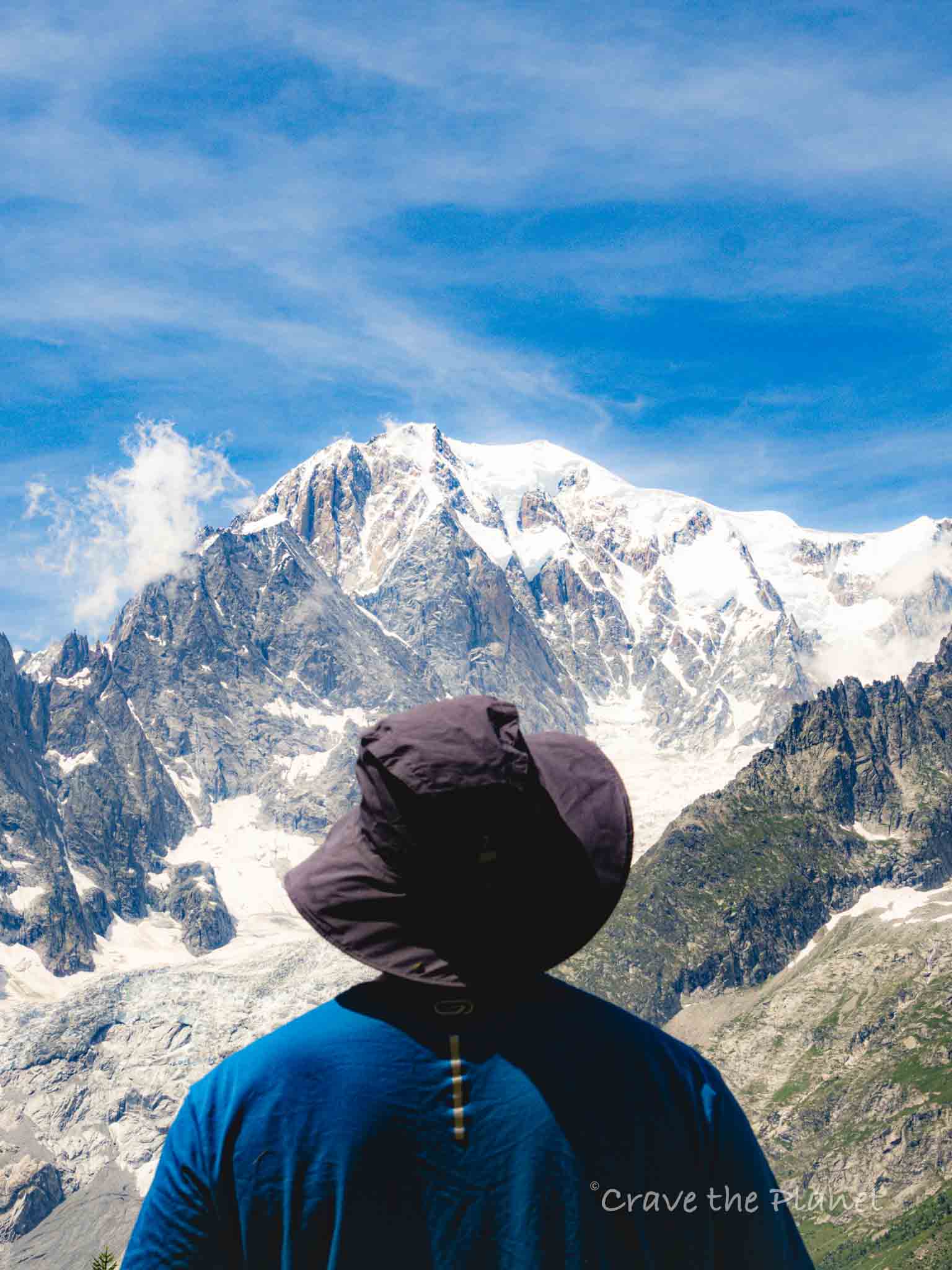
DIY: Book Your Own Huts
- Cheapest Option
- Most Freedom
- Take side excursions as you like
What we liked: The challenge of it. It's so fun to route plan, find trails and the huts you want. Often it's not the expense saved, but the learning of the trail while planning that is satisfying.
Note: Be prepared to spend some time with spreadsheets and wait weeks for replies from hut owners. BONUS: Click on the link to watch my 10 part video series on HOW to book a hut to hut trip. It's a Dolomites hut trip but it's basically the same process for TMB.
- Cheapest option
- Most freedom
- Learn the Trail by planning
- You must be organized
- Map skills are essential
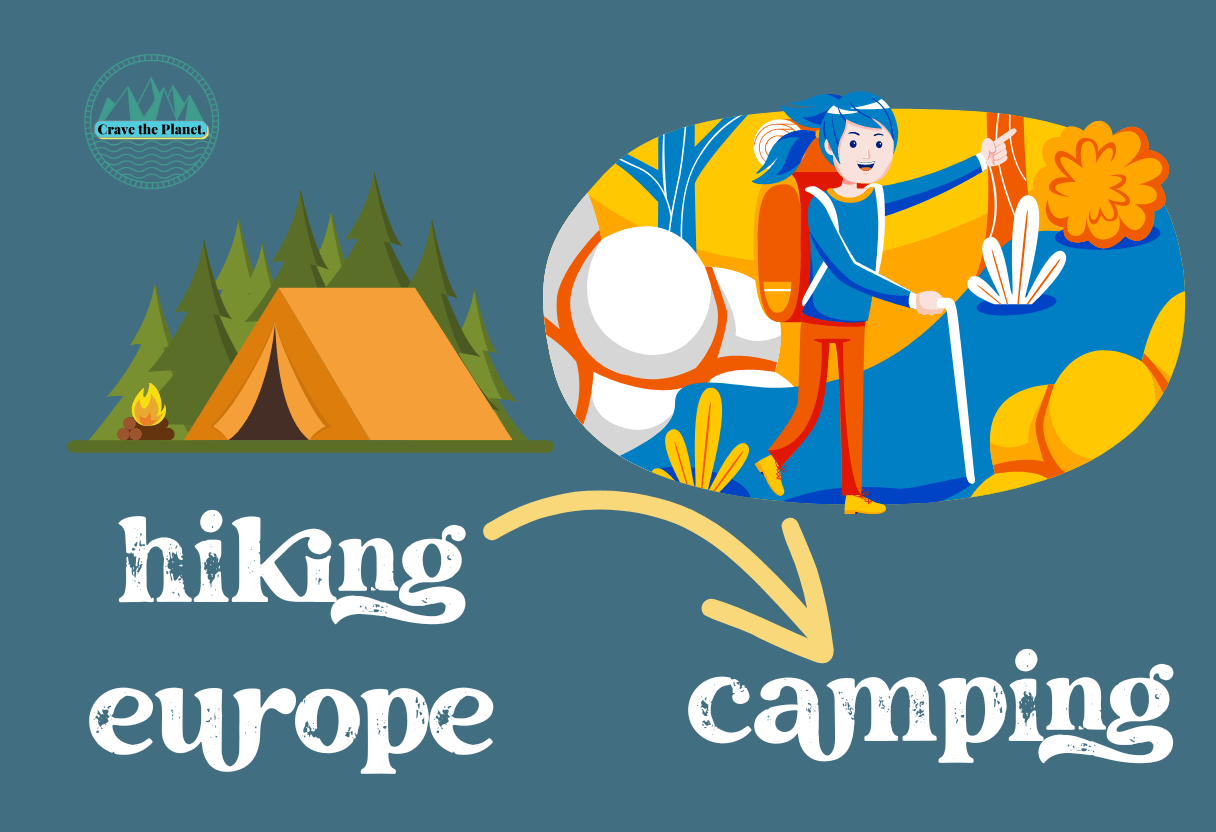
- campgrounds can be crowded
- reservations often needed in advance
- Wild camping is prohibited or limited by elevation
Not really my favorite thing for hut to hut trails in Europe. The huts are quite often the best part of the hiking trip and the rules are so complicated about wild camping.
- Price is good
- More Flexibilty
- Wild camping is tricky
- Rules change
- harder and heavier pack
Average Cost of a Guided Tour du Mont Blanc
If you’re planning to take a guided Tour du Mont Blanc, the average cost can vary depending on the length of the tour and the services included. On average, a 10-day guided tour can cost around €2000-€3000 per person. However, this cost can increase if you opt for additional services such as luggage transfer, accommodations, and meals.
Differences in Cost between a Guided and Self-Guided Tour du Mont Blanc
Self-guided tours are generally less expensive than guided tours, but you’ll have to plan your itinerary and arrange accommodations and meals yourself. The cost of a self-guided tour can vary depending on the services you choose, but on average, a 10-day self-guided tour can cost around €1000-€2000 per person. Keep in mind that the cost can vary depending on whether you choose to camp or stay in accommodations along the route.
Typical Itinerary for a 5-day Tour du Mont Blanc
A 5-day Tour du Mont Blanc itinerary is a shorter version of the classic 10-day route. The itinerary can vary depending on your starting point, but generally, it includes hiking through France, Italy, and Switzerland. A typical 5-day itinerary includes hiking for 4-6 hours per day and staying in accommodations along the route.
Best Mont Blanc Hiking Tours and Their Costs
There are many Mont Blanc hiking tours available, each with its own unique itinerary and cost. While I wouldn’t recommend hikers actually climb Mont Blanc , hiking around it is pretty amazing. Some popular options include the Mont Blanc Highlights Tour, the Mont Blanc Family Tour, and the Mont Blanc Circuit. The cost of these tours can vary depending on the length of the tour and the services included, but on average, they can range from €1000-€3000 per person.
⭐️⭐️⭐️Recommended Guided TMB Tour

⭐️⭐️⭐️Best Guided Tour for Beginners - 4 Days Tour du Mont Blanc Hike
Based on my personal experience, Skyhook Adventures offers the best 4 day TMB hiking experience that's do-able for most people.
Perfect option for busy people that just want to show up, feel safe with a guide and hike without doing any logistics.
The tour features small groups (<10 typically) and
Note: Skyhook hires only local Chamonix guides.
Difficulty Level of the Tour du Mont Blanc and How It Affects Cost
The Tour du Mont Blanc is a challenging hike, with steep ascents and descents, high altitude, and unpredictable weather conditions. The difficulty level of the hike can affect the cost, as guided tours with experienced guides and additional services such as luggage transfer and accommodations can be more expensive. However, opting for a self-guided tour can be less expensive, but you’ll need to be prepared for the physical demands of the hike.
Resources for Booking a Tour du Mont Blanc and Comparing Costs
There are many resources available for booking a Tour du Mont Blanc, including tour operators, travel agencies, and online booking platforms. It’s important to compare costs and services offered by different providers to find the best option for your budget and preferences. Some popular resources for booking a Tour du Mont Blanc include Alpenventures Unguided for self-guided, Skyhook Adventures for a guided hike, and my TMB post for DIY.
Planning your trip?
- 🏨 Book your perfect stay on Booking.com
- 🎢 Make your trip more exciting with GetYourGuide
- 🚗 Hire a car with Discover Cars
- ✈️ Find cheap flight tickets with WayAway
- 📲 Buy eSIMs with Airalo
- 🥾 Get off the beaten tourist path with Fully Planned and Booked Self-Guided Hut to Hut Hiking Trip
- 🥾⭐️ Step into social adventure with Guided Group Hut to Hut Hiking Tours in Europe.
We hope this guide to the Tour du Mont Blanc costs has given you the proper information to plan your adventure.

Author profile : Morgan Fielder is a Doctor of Physical Therapy and passionate hiker who believes in exploring the world on foot with good food. Follow her journey as she shares science-based hiking tips and advocates for sustainable tourism.

Guided Best of the Tour du Mont Blanc
For a quick trip to the Mont Blanc region, our Best of TMB tour is a fantastic week hiking from Courmayeur through Switzerland to Chamonix.
- Guided Group ,
- Inn-To-Inn ,
- Relaxed to Moderate ,
The Tour du Mont Blanc is one of the best hiking tours in the world. If you don’t have time for the full circuit, you at least have time for this.
Hike from Courmayeur to Chamonix across the northern half of the tour. This has always been our favorite stretch of the TMB. You hike through all three countries, visit both Courmayeur and Chamonix, eat great food, meet wonderful people, start with unbelievable views from day one and finish with more great views of Mont Blanc on your last day. What can be better?
Yes, you can express your way through the whole circuit in a week, but that requires prioritizing passes over highlights. This isn’t that. You won’t see the southern half of the TMB on this tour, and you won’t miss it. This trip moves at the right pace and leaves time for the most important sights and best hikes. You will love it.
Our guided tours are all guaranteed… if you sign up, the trip is going. Our guides know the trails, they know the inns, and they have their favorite lunch spots to show you. Turn off your mind for a week, relax, and don’t worry about a thing. We’ve got it covered on the guided Best of the Tour of Mont Blanc.
See our Self-guided version
- 7 days, 6 nights
- Jun 28 – Jul 4, 2024 Sold Out!
- Jul 5 – Jul 11, 2024 Sold Out!
- Jul 26 – Aug 1, 2024 Sold Out!
- Aug 2 – Aug 8, 2024 Sold Out!
- Aug 9 – Aug 15, 2024 Sold Out!
- Sep 6 – Sep 12, 2024 Sold Out!
- Sep 13 – Sep 19, 2024 Sold Out!
- $4795 Per Person
- $1150 Single Room
Itinerary At a Glance
Italy, courmayeur.
Fly to Geneva and transfer to Courmayeur, the sunny Italian side of Mont Blanc. Take some time to explore this beautiful village. After a peaceful first night, we’ll stretch our legs on a fabulous day hike to Bonatti hut.
Switzerland, la Fouly to Trient
Now we hike across the Ferret pass and into Switzerland. Our three days here are filled with great walks, tidy Swiss villages, postcard-perfect lakes and beautiful mountains.
France, Chamonix
Hiking over the Balme pass, we arrive in France to jaw-dropping views of Mont Blanc, Aiguille Verte and the entire Mont Blanc range. Descend to charming Chamonix for a final night.
Your tour will be led by an experienced Alpinehikers guide, with guided hikes daily. All transfers to and from trailheads are included. You’ll stay 5 nights in village hotels and 1 night in a hiker’s inn, with all breakfasts, picnic lunches, and 5 dinners included. Luggage transfers to all stops are also part of your tour.
This tour does not include arrival and departure transfers. Please ask if you would like help with these.
Full Itinerary
We’re going to start in beautiful, medieval Courmayeur. Fly to Geneva, and make your way to the sunny village of Courmayeur in Italy. Our home here is a very pleasant and friendly hotel near the center of town.
If you arrive early, there is plenty to do in the village, cable cars take you up to high vantage points, or just wander through town. Courmayeur is a beautiful village, with cobblestoned pedestrian-only alleyways filled with comfortable cafes and stylish shops. Later in the afternoon, you’ll meet your guide and group for dinner as your Mont Blanc tour begins.
Arrival: Geneva. Plan to arrive by the day your tour starts. You will need to book a private taxi from GVA to Courmayeur. The trip takes 2½ hrs, but can be much longer during the day when there are long wait times at the Mont Blanc Tunnel. We recommend booking taxis with Mountain Dropoffs or Chamonix Valley Transfers.
You might consider coming a day early and adding a night in Chamonix before your tour so you can travel through the tunnel to Courmayeur before 8:30 am. Ask if you would like help with these plans.
After one of our favorite breakfasts at the Bouton d’Or, you’ll head out on a dayhike high above town. One of our favorite hikes leads up to a high ridge above town. You’ll reach incredible views of Mont Blanc and the Grandes Jorasses on a pleasant balcony walk to Bonatti hut. Stop for a drink at the hut and descend to the valley to transfer back to Courmayeur for a 2nd night. This is a grand panoramic hike and is a stunning introduction to the Mont Blanc region.
If you’d rather take it slow and easy today, Courmayeur is great for people-watching and relaxing, perhaps even taking a short trip on your own down to the Pre St. Didier Spa with its renowned natural mineral baths. You’ll be on your own for dinner in Courmayeur tonight.
HIKE: 5-7 hours, 9 miles; Elevation: 3920 ft. up, 3150 ft. down
The Italian side of Mont Blanc is steep and rocky, and the Grand Jorasses rivals Mont Blanc as the focal point of our views on one of the highlight hikes of the tour.
On this stage of the TMB, we’ll cross the Grand Col Ferret and into Switzerland, with rolling green meadows filled with happy cows. We’ll descend to la Fouly, and tiny village at the end of a quiet valley in Switzerland. It’s quaint, quiet and beautiful here. Our luggage will be transferred here from Courmayeur.
HIKE: 6-8 hours, 9 miles; Elevation: 2840 ft up, 3390 ft down
An easier day today takes us through the Swiss Ferret Valley. This is one of the more relaxing days on the tour. Waterfalls cascade down mountains as we hike down-valley and then up to the pretty lakeside village of Champex.
Champex is postcard-perfect, a painfully cute town next to a beautiful surrounded by mountains. It’s a great place to spend an afternoon on a terrace overlooking the lake. Our luggage will be waiting at our 3-star village hotel and we’ll have a hearty meal at our hotel tonight.
HIKE: 6-8 hours, 9.5 miles; Elevation: 1560 ft up, 2000 ft down
The next stage on the TMB presents us with a choice – the high rugged Arpette route, or the wooded Bovine route. Your choice will depend on weather, conditions and general mood. If we stay low, the Bovine route takes us through woods and past waterfalls to a rustic farm with sweeping views of the Rhone Valley.
Weather permitting, a more rigorous possibility leads up and over the steep Fenetre d’Arpette pass with dazzling views to the Trient Glacier, a popular variant on the traditional TMB route. We’ll stay in the Grand Ourse, a hiker’s inn in nearby Trient. Private room with shared bathroom down the hall.
HIKE: 6-8 hours, 10 miles; Elevation: 2500 ft. up, 3050 ft. down (Bovine) or 7-9 hours, 10 miles; Elevation: 3940 ft. up, 4480 ft. down (Fenetre d’Arpette)
The final hike on our Mont Blanc tour is another great one. A steady uphill trail leads us through woods and meadows to the Balme Pass on the border with France.
Enjoy gorgeous views of Mont Blanc and the entire Chamonix Valley as we cross the pass and descend to la Tour. After a short bus ride back to Chamonix, we’ll have a bit of time for the pool at our Chamonix hotel, and then enjoy a special celebratory dinner at a favorite local restaurant.
HIKE: 5-7 hours, 8 miles; Elevation: 3160 ft up, 2580 ft down
Today we say au revoir , and depart for our post-Mont Blanc destinations.
Departure: Geneva. Plan departure for the day your tour finishes. You’ll need to book a private or shared shuttle from Chamonix to GVA, and the trip takes 1½ hrs.
Tour Options
Guided group.
- All departures guaranteed. No minimum group size.
- A moderate inn-to-inn with 5 stops in 6 nights
- Luggage transfers included every night
- The highest peaks in the Alps – Mont Blanc, Grandes Jorasses and more
- Hike through 3 countries – Italy, Switzerland, France
- The northern half of the classic Tour du Mont Blanc circuit
Guided Classic Tour du Mont Blanc
- Big passes almost every day. Not too hard, but not easy either
- A fairly strenuous inn-to-inn with 8 stops in 10 nights
- Luggage transfers included every night on the tour.
- Hike through France, Italy and Switzerland
- A great tour for meeting other hikers from around the world
- $5995 Per Person
- $1450 Single Room
Guided Deluxe Tour du Mont Blanc
- A fairly strenuous inn-to-inn with 7 stops in 10 nights
- 6 nights in deluxe hotels, private transfers, luggage every night
- The most luxurious version of the Alps’ most renowned tour
- The highest peaks in the Alps, Mont Blanc, Grandes Jorasses and more
- Extra days in Chamonix and Courmayeur to relax and unwind
- $7995 Per Person
- $1550 Single Room
You Might Also Like
Guided best of the bernese oberland.
This guided tour covers our favorite hikes across the Bernese Oberland... postcard-perfect Switzerland at its best.
Guided Best of the Dolomites
Our Best of the Dolomites tour circles the famous Gardena Valley, with 4 great nights in village hotels and 2...
Guided Great Hikes of Mont Blanc
Spend 6 luxurious days hiking varied Mont Blanc trails on this guided tour based in Chamonix and Courmayeur

Sign up for our newsletter!
Add your contact info below so we can stay in touch with you!
- Name * First
- Email This field is for validation purposes and should be left unchanged.

- Privacy Overview
- Strictly Necessary Cookies
This website uses cookies so that we can provide you with the best user experience possible. Cookie information is stored in your browser and performs functions such as recognising you when you return to our website and helping our team to understand which sections of the website you find most interesting and useful.
Strictly Necessary Cookie should be enabled at all times so that we can save your preferences for cookie settings.
If you disable this cookie, we will not be able to save your preferences. This means that every time you visit this website you will need to enable or disable cookies again.
Sending email...
Email sent!
You are using an out of date browser and this website will not function properly.
Please upgrade to Edge or Chrome browsers.

+33 (0)781586903
montblanctreks
- Dates & Prices
Celebrate Earth Day this April. MBT will be donating a portion of each booking, to our conservation partner, EOCA. Book now for 2025!
Tour du Mont Blanc 'Best of' Self Guided Trek
Independent hiking on the tmb.

Trek in Brief
Suitability & grading:
GRADE 3 DIFFICULT See trek grading for further information.
Accommodation:
5 x 3* Hotels, 1 x Auberge & 1 x Mountain Refuge
3 x B&B in Chamonix & Courmayeur, 4 x half board (B&B + 3 course evening meal) whilst on the tour
Bag transfer:
Price depending on group size
Single rooms:
Available on certain nights
Not possible
Dates 2024:
To suit you / No availability
Dates 2025:
To suit you / Available
Arguably one of the most spectacular multi day treks in the world the Tour du Mont Blanc gives you the opportunity to get up close to the towering peaks and pristine glaciers of the Mont Blanc mountain range. This 'Best Of' Tour du Mont Blanc trek allows you to see the highlights of the trek in a shorter period of time by combining trekking and the use public transport to get you around the circuit.
suggested intinerary
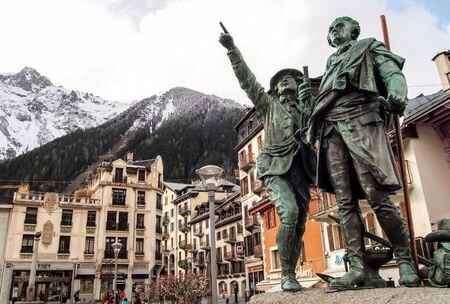
Day 1 ARRIVAL IN CHAMONIX
As we are based in Chamonix please ask if you wish to have a self guided trek briefing to go through any aspect of your trek before you start on your adventure.
If you require a briefing on your day of arrival please specify at the time of booking so we can make sure someone will be available.
3* Hotel, private en-suite rooms, breakfast
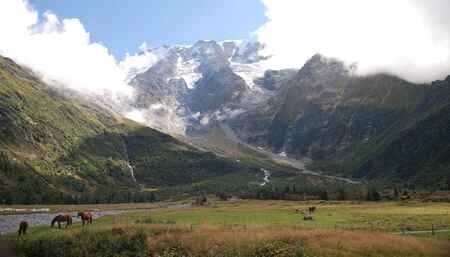
Day 2 LES HOUCHES TO CONTAMINES
Your day starts with a 20 minute bus ride from Chamonix to Les Houches. The bus will drop you off opposite the cable car, from here you take a ride to the Bellevue 1802m with stunning views of the Mont Blanc range from high above the westerly end of the Chamonix valley. You then have a choice of routes to Les Contamines via Bionnassay & Chapel or the Col du Tricot & Chalets des Miage.
Using the cable car Via Bionnassay: Distance: 15k | Height gain: +100m | Descent: -700m Via Col du Tricot: Distance: 13k | Height gain: +800m| Descent: -1300m
3* Hotel, private en-suite rooms, breakfast included
If you are trekking via the Col du Tricot check out the Blueberry pie at the Chalets des Miage, very memorable and delicious!
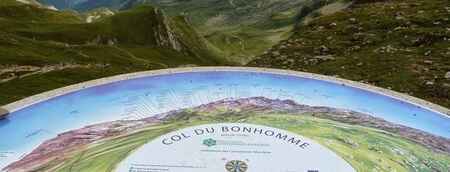
Day 3 LES CONTAMINES TO REFUGE NOVA or MOTTETS:
A great day ahead awaits you, make your ascent through three cols, Col du Bonhomme, Col de la Croix du Bonhomme & the Col des Fours 2665m. Descending steeply through the wild and remote landscape to Chapieux and the Refuge Nova or Ville des Glaciers and on to the Refuge Mottets.
Distance: 20k | Height gain: +1500m | Descent: -900m
Dormitory (upgrade possible), evening meal & breakfast
On paper this looks like one of the longest and toughest days on the trek but don’t worry its very doable. There is a fair amount of height gain but it is integrated with sections of gentle terrain, which make the day more manageable. The key is to start early and allow plenty of time.
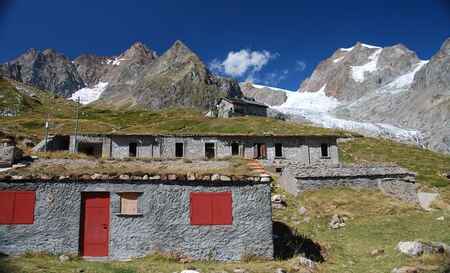
Day 4 REFUGE NOVA or MOTTETS TO COURMAYEUR:
If staying at the Refuge Nova you take the bus to Ville des Glaciers and continue on the trail to the Refuge Mottets. The Refuge Mottets is situated in a great position below the Col du Seigne 2516m, although you climb steeply at times you soon find ourselves over the col & across French/Italian border into Italy. You then make a descent into the stunning Val Veny with easy walking through the hanging valleys to Lac Combal. From here you descend La Visaille and take the shuttle bus to Courmayeur.
Distance: 14k | Height gain: +700m | Descent: -700m (with shuttle bus)
Distance: 24k | Height gain: +1100m | Descent: -1700m (full route)
Accommodation: 3* Hotel, private en-suite rooms, B & B
One of my favourite days on the Tour du Mont Blanc, the views from the Col du Seigne is second to none! Once you are at the col & if the weather is right rest for a while and take in the far-reaching views in to Italy & Switzerland, just wonderful!

Day 5 COURMAYEUR TO CHAMPEX
You will start the day by taking a bus or taxi from Courmayeur to Arnurva and then make your way past the Refugio Elena and on to the Col du Ferret on the Italian/Swiss border and descend to Ferret and La Fouly. You will then take a bus to Champex Lac via Orsieres. All transport details are given in the self-guided pack.
Distance: 14k | Height gain: +800m | Descent: -800m
3* Hotel, private en-suite rooms, evening meal & breakfast
Again this day looks tough but the hard bits are nicely spaced with less challenging terrain and once at the Col stare in wonder at the view looking back at your last 3 days of trekking towards the Col du Seigne and over the boarder into Switzerland. The descent is long but at an easy angle and the path is good. Plenty of opportunity to stop for refreshments at Arnurva, Refuge Elena and La Peule.
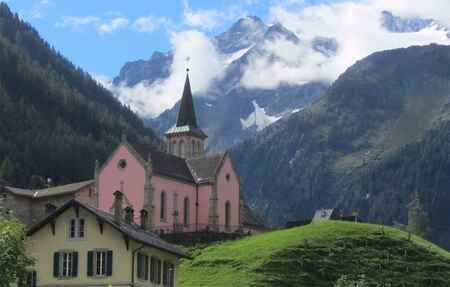
Day 6 CHAMPEX-LAC TO TRIENT:
An initial easy start to the day is to be had as you wind our way on easy paths to Plan de l'Au. You then climb up steadily to the Alpage Bovine 1987m and enjoy fabulous views over Martigny and the Swiss Valais. You spend the rest of the day making your descent to the Col du Forclaz 1526m with a final descent to Trient.
Distance: 18k | Height gain: +750m | Descent: -950m
Auberge with private rooms & shared facilities, evening meal & breakfast
The Bovine route is a fabulous day not too tricky over lovely terrain. Lunch stop at the high alpine farm at Bovine is a must, you can purchase local food or even eat your own picnic on the terrace as long as you buy a drink. Amazing views across to Lac Leman and down the Rhone valley.
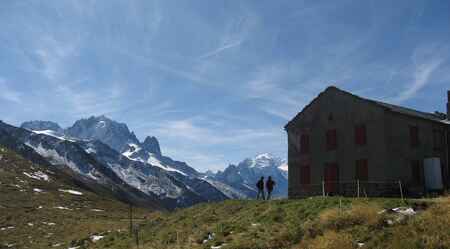
Day 7 TRIENT TO ARGENTIERE:
Again today you have two options as you can take the route directly to the Col du Balme from Trient or by following the variant up through alpine woodland to the Alpage of Tseppes, Catogne and on to the Col du Balme 2191m and the Swiss/French border. From the col you then make our descent to the hamlet of Le Tour where you will take the bus back to Chamonix. A fabuous end to this Mont Blanc trail.
Direct via the Col du Balme: Distance: 13k | Height gain: +900m | Descent: -900m or Via Catogne & the Col du Balme: Distance: 15k | Height gain: +1000m | Descent: -1000m
3* Hotel private en-suite rooms, evening meal & breakfast
Personally unless the weather is bag take the route via Catogne, the views are far superior as one up high you take a lofty traverse with excellent views over towards Emossom dam and the Aiguille Rouges nature reserve Stop if you dare at the refuge at the Col du Balme. Service with a grimace rather than a smile!
Day 8 DEPART CHAMONIX
Breakfast is included however on the departure day you are free to leave at any time you wish.
Once you have completed the trek I hope you will agree that the Tour du Mont Blanc is truly an exceptional trek & has a worthy place as of one of the worlds top 10 long distance walks.
Sign up to Our Newsletter
Marketing permissions.
Mont Blanc Treks will use the information you provide on this form to be in touch with you and to provide updates and marketing. Please let us know if you are happy to receive emails from us by checking the box below.
You can change your mind at any time by clicking the unsubscribe link in the footer of any email you receive from us, or by contacting us at [email protected]. We will treat your information with respect. For more information about our privacy practices please visit our website. By clicking below, you agree that we may process your information in accordance with these terms.
We use Mailchimp as our marketing platform. By clicking below to subscribe, you acknowledge that your information will be transferred to Mailchimp for processing. Learn more about Mailchimp's privacy practices here.
Classic Tour du Mont Blanc Trek
June through September
Geneva. Switzerland is 1.5 hours from Chamonix, France—your starting point
Intermediate
Things to know
Nothing beats the world-famous Tour du Mont Blanc trek! In just 12 days we’ll get to do it all: enjoy views of impressive glaciers, reach some +8,200ft mountain passes, and hike through some screensaver-worthy Alpine meadows, all around the highest peak of Western Europe. Between that morning espresso shot and the evening glass of French wine, we’ll give our feet plenty of work, roaming some legendary 2000-year-old Roman roads. Not to mention the suspension bridges above wild glacial streams, or the cable car rides over crystal-clear lakes and the greenest pine forests! Tour du Mont Blanc has many routes, but our guides will make sure we take the best & crowd-free ones. Find out more about hiking the iconic Tour du Mont Blanc from Natalie Mirzoeff, a former round-the-world hiking guide.
Plus 5 major mountain passes, 7 valleys, and 105 miles
Avoid the popular routes and take the road less traveled
Hike and enjoy local gastronomical and cultural delights


Get to know the heart of the Alps and hit the high-altitude hiking trails around Mont Blanc. Starting and ending in Chamonix, you will learn why finishing the iconic Tour du Mont Blanc is more than 10 days of top-notch hiking with a backdrop of magnificent Alpine scenery. Enjoy the cultural, historical, and gastronomical aspects of the area located at the juncture of 3 countries and avoid the crowds (your guide knows the paths walked by few). Find out for yourself what makes this one of the world’s best treks!
Your trip begins in the mountain town of Chamonix, famous for being the adventure capital of the Alps. Located at the foot of Mont Blanc, its cobblestone streets breathe adventure while also exhibiting Alpine small-town charm combined with French sophistication. You will meet the rest of the group at 6pm at your hotel for a short trip briefing and gear check, followed by dinner.
Meals : Dinner Accommodation : Hotel in Chamonix

After a hearty breakfast you will take a cable car connecting Les Houches with the Bellevue Plateau, during which you get to enjoy the panoramic views of the Mont Blanc Massif. After crossing the suspension bridge at the foot of the Bionnassay glacier, your guide will choose the best route taking your group to Les Contamines. This usually includes passing the Col de Tricot (6,955 ft / 2,120m), with a coffee stop at the Chalet de Miages at the foot of the mighty peak Dome de Miages (3,675m / 12,055 ft), but a lower level route may be utilized. Spend the night in a charming local 3* hotel in the French village of Les Contamines.
Distance : 15km / 9.3 miles Ascent : 837m / 2,746 ft Descent : 1,520m / 4,985 ft Walking time : 6-7 hours Meals : Breakfast and dinner Accommodation : 3* hotel in Les Contamines
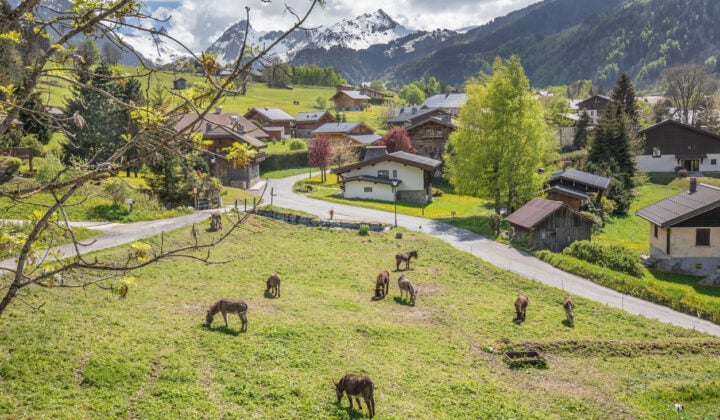
Day 3 begins with trekking up the old Roman road to the picture-perfect 17th-century church of Notre Dame de la Gorge. From here your path goes uphill, past the Chalet de Barme (a perfect coffee stop!) and all the way to the Col de Bonhomme (2328m / 7,635 ft), where you will take a lunch break. Another climb—this time gentler—will take you to Col de la Croix de Bonhomme (2478m / 8,130ft), offering a great view towards the Vanoise National Park. After an additional 2 hours, you will have reached Les Chapieux, the location of your lovely chambre d’hôte (bed and breakfast).
Distance: 19km / 11.9 miles Ascent: 1,348m / 4,450 ft Descent: 960m / 3,150 ft Walking time: 8 hours Meals: Breakfast and dinner Accommodation: Bed and breakfast in Les Chapieux

A minibus ride will take you to the Ville des Glaciers. After crossing a river, head to the Refuge des Mottets, followed by a climb to the Col de la Seigne (2516m / 8,255ft). You are now stepping into Italy! Relish in the great views of Val Veny and Val Ferret, and see the Italian side of Mont Blanc and the other Chamonix giants. A descent past the Elisabetta hut takes you to La Visaille, where your group will take a transfer down to the traditional Italian town of Courmayeur, where you will stay in a family-run hotel.
Distance: 21km / 13 miles Ascent: 1,004m / 3,300 ft Descent: 850m / 2,800 ft Walking time: 6 hours Meals: Breakfast and dinner Accommodation: Hotel in Courmayeur
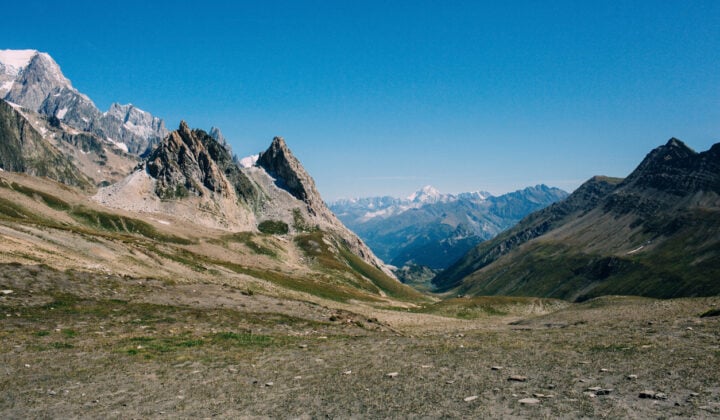
Start the day of hiking with a steep walk up to the Bertone hut and the Mont de la Saxe ridge. If weather permits, your guide can opt for the lesser-traveled variant to the Mont de la Saxe ridge (2,555m / 8,380 ft), up the Tête de la Tronche (2,584m / 8,475 ft), followed by a steep descent to the Col Sapin (2,435m / 8,000 ft). After another descent, you will also climb to the Col Entre Deux Sauts (2,055m / 6,740 ft). It’s a long day of hiking, but you will be rewarded with stunning scenery, crowdless hiking paths, and great Italian-style dinner at the Rifugio Bonatti. You can also watch the sunset behind Mont Blanc before a good night’s sleep.
Distance : 10km / 6.5 miles Ascent : 1,584m / 5,200 ft + 860m / 2,820 ft Descent : 940m / 3,08 0ft + 700m / 2,296 ft Walking time : 10-12 hours Meals: Breakfast and dinner Accommodation : Rifugio Bonatti*
*There is a chance that you will not be staying at Rifugio Bonatti and in this case, you will have an extra night at a 4* hotel in Courmayeur. Shuttles back and forth will be provided and no hiking will be missed. Starting from 2025, overnights in the Refugio Bonatti will no longer be possible during this adventure.

Trekking over the Grand Col Ferret (2537m / 8,320 ft), you will be rewarded with breathtaking views of the Grandes Jorasses, the Grand Combin and Mont Dolent (the summit which stands at the juncture of France, Switzerland, and Italy). At the top of the col, your group will enter Switzerland. After a coffee stop at La Peule (time permitting) you will head to La Fouly, an Alpine village distinguished by traditional Swiss “chocolate box” chalets where you will stay overnight in a simple hotel.
Distance 20km / 12.5 miles Ascent: 1,128m / 3,700ft Descent: 1,580m / 5,180 ft Walking time: 6-7 hours Meals: Breakfast and dinner Accommodation: Simple hotel or bed and breakfast in La Fouly

A shorter day of hiking awaits. Winding through picturesque Swiss Alpine meadows and tiny villages, you will finally reach the resort of Champex, nestled alongside the eponymous glacial lake. Lodging in a traditional hotel offering great local delicacies.
Distance: 16 km / 10 miles Ascent: 711m / 2,330 ft Descent: 855m / 2,805 ft Walking time: 5 hours Meals: Breakfast and dinner Accommodation: 3* hotel in Champex
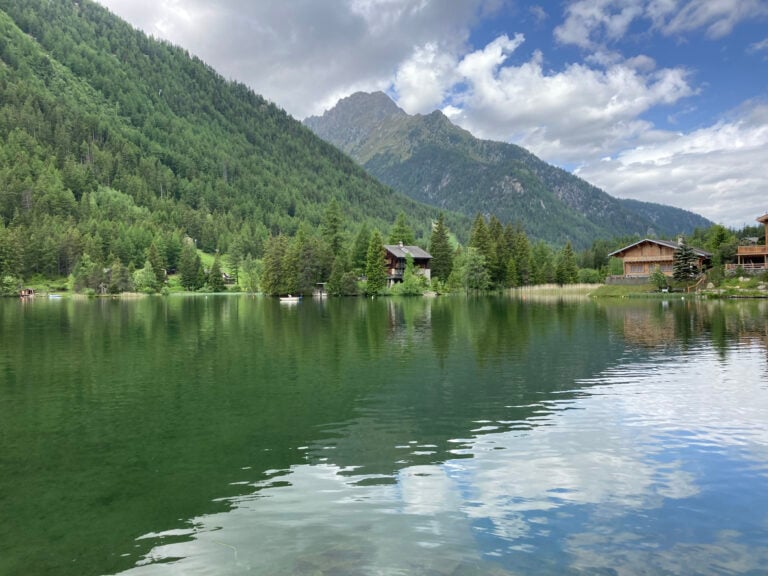
If the group feels fit on Day 8, the path will take you to Fenêtre d’Arpette, the highest col on the Tour du Mont Blanc standing at 2665m (8,710 ft)—a fantastic route famous for stunning views of the Trient glacier. Alternatively, your guide will decide to take you along the more laidback route via Bovine to the Col de la Forclaz (1,527m / 5,010 ft)—depending on the weather conditions and fitness of the group. You will stay overnight either at Col de la Forclaz or at Trient, depending on availability.
Distance: 15 km / 9.3 miles Ascent: 1,480m / 4,790 ft (or 570m / 1,870 ft via Bovine) Descent: 1,760m / 5,775 ft (or 600m / 1,980 ft via Bovine) Walking time: 8 hours (or 6 hours via Bovine) Meals: Breakfast and dinner Accommodation: Simple hotel, usually with shared bathrooms

Today’s plan is to take another lesser-traveled variant which diverges from the official Tour du Mont Blanc—either via Les Grands or Les Tseppes, depending on where you stayed the night before. The alternative routes are worth the extra time and effort not only because few other hikers take them but also because of the truly spectacular views of the surrounding landscapes. Either route takes your group to the Col de Balme (2,195m / 7,200 ft) at the head of the Chamonix valley (welcome back to France!). Going either via the Aiguillette de Posettes down to Tré-le-Champ, or straight down to Le Tour, followed by the Petit Balcon Nord, you will have reached Argentière—the location of your accommodation—in the afternoon.
Distance: 18km / 11 miles Ascent: 1200m / 3940 ft Descent: 1450m / 4760 ft Walking time: 7-8 hours Meals: Breakfast and dinner Accommodation: 3* hotel in Argentière
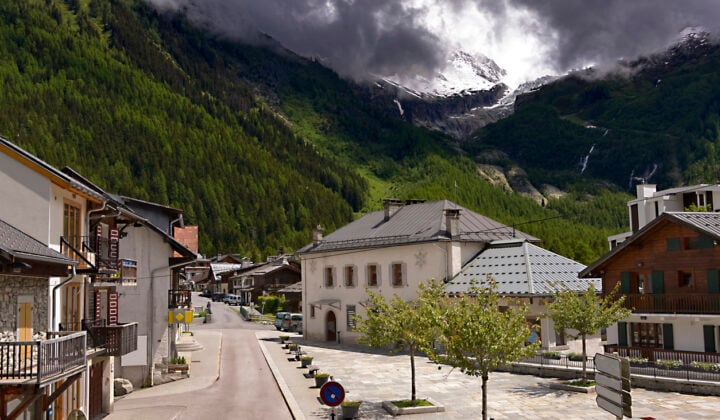
Taking a short stroll back to Tré-le-Champ, you will hike up to the Lac Blanc passing the beautiful Lacs des Chéserys (2,130m / 6,990 ft), providing the best views of Mont Blanc found anywhere. While enjoying one of the best walks in the Chamonix valley, you will make use of a series of ladders and chains to skirt the cliffs—this is nothing to worry about and is not difficult at all! From the Lac Blanc, you will take the Flégère cable car down to Les Praz, followed by a walk along the river or a train ride to Chamonix.
Distance: 9km / 5.6 miles Ascent: 1,000m / 3,280 ft Descent: 550m / 1,800 ft Walking time: 6 hours Meals: Breakfast and dinner Accommodation: Hotel in Chamonix
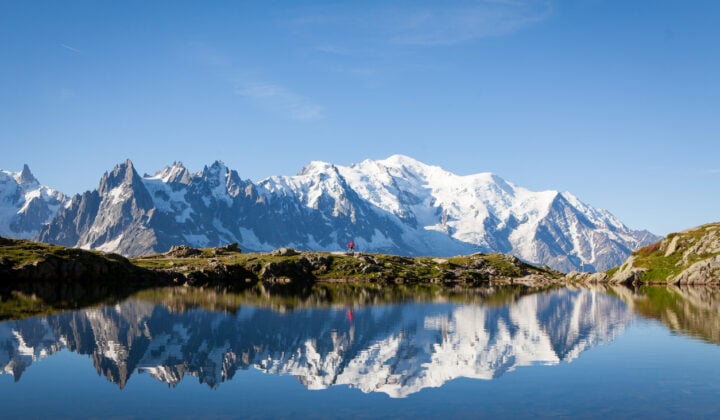
Taking the cable car back to the Flégère, your hiking resumes at the same point your group finished at the day before. Start the famous Grand Balcon Sud linking the Flégère with Planpraz. From here, you will climb up to the Col du Brévent and then up to the Brévent summit (2,525m/ 8,285 ft), where you get to enjoy excellent views of Mont Blanc one more time. To complete the Tour du Mont Blanc, descend via Bel Lachat and Merlet in ogre to reach Les Houches, followed by a transfer back to your hotel in Chamonix. After 10 days of hiking, you can finally call yourself a TMB hiker! You can celebrate your great achievements with your guide and the rest of the group over dinner or by going for drinks somewhere in town.
Distance: 17km / 10.5 miles Ascent: 772m / 2,530 ft Descent: 1,546m / 5,070 ft Walking time: 8 hours Meals: Breakfast and dinner Accommodation: Hotel in Chamonix
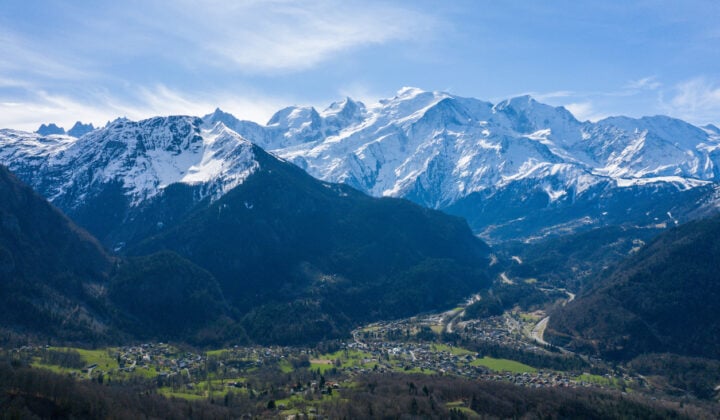
Your alpine adventure finishes after breakfast. Take a last chance to say goodbye to your guide and fellow trekkers. Leave Chamonix or continue touring on your own.
Meals: Breakfast
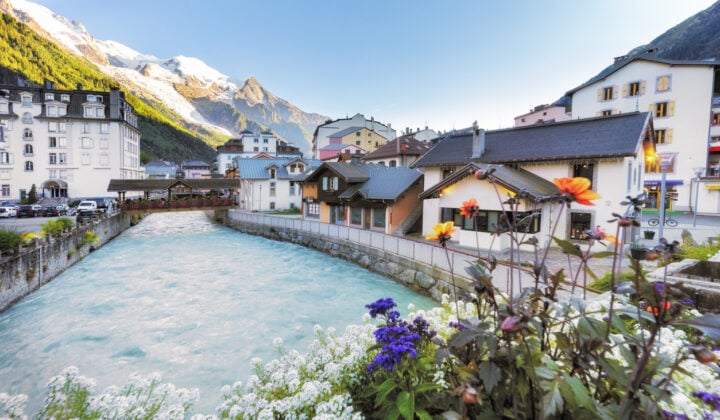
Meet your guides
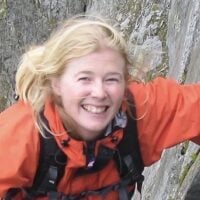
Watch our webinar

We just finished a 12 day Mont Blanc tour and with the help of Cloud 9 it was an incredible experience. Our original trip was booked in 2019 and postponed due to Covid. Cloud 9 offered a full refund or the opportunity to continue with no additional cost both years we postponed. Once we finally hit the trail, the accommodations, trip notes and attention to the smallest of details made the tour an outstanding experience for us. I will certainly consider using Cloud 9 again and highly recommend it to anyone wishing to tour Mont Blanc.
If your dream it to experience the beauty and magnificence of the Tour de Mont Blanc, contacting Emma Jack would be in our opinion be essential. With her extensive knowledge of the mountains and surrounding regions, you will be assured an amazing time. As a family with two children 15 and 8 we were keen for our kids to have a positive experience. Emma’s guidance with regards to day length and distance, flora, fauna, geology and accommodation, transport links and most crucially health and safety advice made our dream better than we could have hoped for. Her sensitivity to our particular needs was greatly appreciated. We were able to relax into the moment with the knowledge she had covered all bases. Go on, do it, you won’t regret it.
What you get on this adventure:
- An experienced, local hiking guide with extensive knowledge of the area (International Mountain Leader)
- 12-day TMB Classic Trek (10 days of hiking)
- Accommodation as indicated in the itinerary
- All breakfasts and all evening meals (detailed in the itinerary)
- Cable cars and transport as indicated in the itinerary
- Daily luggage delivery (apart from any hut nights where vehicle access is not possible)
What’s not included:
- Transportation to and from Chamonix
- Airport transfers — we recommend Mountain Drop-Offs
- Personal drinks and snacks
- Packed lunches
- Any transport or accommodation due to a participant being unable to complete the itinerary
- Mountain rescue / travel insurance
- Guide gratuities — optional
Even though Tour du Mont Blanc is not technically difficult, it is generally recommended for those with at least an extensive experience of longer day hikes on mountain trails and great fitness . You can expect up to 3,000ft of daily ascent and descent and hiking 10 miles on average for 10 consecutive days. Keep in mind that hiking can be made difficult because of changing weather. However, you will be able to take many breaks and your guide will adjust the route if it gets too strenuous for your group. Due to some more exposed sections, the tour is not recommended for those with severe fear of heights.
If you think you may not be ready for this trek at the moment, we suggest you adopt a training regiment in the weeks leading up to the trip, with long daily hikes in hilly terrain, as well as activities like jogging, swimming, playing squash, or circuit training. By adequately preparing both physically and mentally for this adventure, the vast majority of the hikers can fully enjoy the challenges and rewards that this remarkable trek has to offer.
If you’re looking for guided TMB adventures suitable for advanced hikers, check out this high-level Tour du Mont Blanc adventure and this more rugged version of the Tour du Mont Blanc .
Here’s a list of the equipment and clothes you need to bring:
- Good, comfortable, waterproofed mountain hiking shoes with good tread
- Comfortable rucksack (30 to 40L)
- Kit bag or suitcase (for your main luggage)
- Hiking poles
- Waterproof jacket and waterproof hiking pants
- Moisture-wicking T-shirts
- Warm sweater or a fleece
- Lightweight warm jacket and hat (in case of unexpected weather conditions)
- 2 Pairs of lightweight hiking pants and shorts
- Swimwear (some hotels feature pools)
- Cap and a sunhat
- 2-3 Pairs of gloves (liner gloves, waterproof gloves, and warm gloves)
- Hiking socks and underwear
- Pair of outdoor shoes
- Sheet or a sleeping bag liner
- 2L water bottle
- Swiss knife, compass, whistle, head torch
- Plastic bags / dry sacks to keep essentials dry
- Good sunglasses, sunscreen, and lip protection
- Your toiletry bag and a mini first-aid kit
- Other clothes and personal change
- Small towel (for the mountain hut)
- Travel bag or a small suitcase for the luggage transport
- Camera — optional (but recommended)
Typically, the weather along the route is warm and fairly stable, requiring minimal extra gear. However, it’s crucial to bring all the items from the list due to unseasonal conditions that can occasionally occur. At least once every summer hikers witness unseasonal snow and heavy rainfall, with temperatures plummeting from mid-30s°C (86°F) to below zero (0°C/32°F). For rain, waterproof jackets and trousers are essential, along with multiple pairs of gloves. In the event of snow, quality hiking boots, walking poles, warm clothing, and gloves are necessary. Sometimes hikers experience heatwaves, meaning that they need to be equipped with rehydration salts, 3-4L of water, and a sun hat.
Don’t underestimate the importance of proper gear; be well-prepared for any situation . You’ll be able to discuss your packing list with your guide prior to your trip.
During your guided Tour du Mont Blanc Highlights hiking tour, all breakfasts and evening meals are included . Most nights, you’ll dine in the accommodation you’ll be staying at, enjoying a fixed 3-course menu that showcases excellent local food from France, Italy, and Switzerland. Hotel breakfasts are continental-style, featuring tea, coffee, hot chocolate, juice, croissants, bread, jams, cereals, yogurts, and often eggs, cheese, and local meats. Breakfasts in mountain huts and simpler auberges are more basic, typically offering tea, coffee, bread, jam, and cereal.
Vegetarians are accommodated with an improving range of options, although some places may offer simpler choices like omelets or pasta. Vegans can also be catered for, but occasional breakfasts may consist mainly of fruit, so having a few snacks on hand is advisable. Your guides are vigilant and work to improve options for vegan diets with local hoteliers. Special diets due to allergies or intolerances, such as gluten-free, nut-free, or lactose-free, are accommodated to the best extent possible. However, given the set meal service in many accommodations, a wide range of options might not be available. We appreciate sticking to the specified diet, as last-minute changes are often challenging for hoteliers serving large groups.
Lunches are not included to provide flexibility. Your guide will advise on ordering lunch via the hotel, stopping at a shop or bakery for snacks, or enjoying a sit-down lunch in the refuges. While drinks are not included, you can order beer, wine, and soft drinks at all hotels, including mountain refuges. Tap water is drinkable throughout the trip.
During your guided Tour du Mont Blanc Highlights hiking trip, you can expect a range of accommodations. In larger towns like Chamonix, Les Contamines, Courmayeur, Champex, and Argentière, minimum 3* hotels are chosen, providing twin-share rooms with en-suite facilities. In smaller hamlets like Les Chapieux, La Fouly, and Trient/Forclaz, where simpler accommodations prevail, the best available lodging options—mostly auberges —will be selected, although en-suite facilities may be limited.
We have one night in a mountain hut *: the Rifugio Bonatti, one of our favorite huts in the Alps. We try to book small private rooms of two, three, or four people here rather than dorms, but they are always fully booked. Dorm-style rooms are mixed-gender and can have between 10 and 20 people. There are no en-suite facilities at the hut, but you can expect hot showers, which are limited to a few minutes.
If you opt for a single supplement , please note that this excludes Les Chapieux and Bonatti, where there are no single rooms. Single rooms may also not be available in Trient/Forclaz — it depends at which point you booked.
* There is a chance that you will not be staying at Rifugio Bonatti and in this case, you will have an extra night at a 4* hotel in Courmayeur. Shuttles back and forth will be provided and no hiking will be missed .
Group sizes and prices:
- For this group adventure, the maximum client-to-guide ratio is around 10:1.
- It takes a minimum of 4 people for this tour to operate.
- The cost is per person and does not decrease as the group grows.
Hiking the Tour du Mont Blanc can be arranged for larger and for private groups. Contact us to make arrangements.
Min. age requirements:
- If you are older than 18, you’re good to go.
- Minors younger than 18 may be permitted to join the hike on a case-by-case basis, but must be in the presence of a parent or legal guardian.
If your group has hikers under the age of 18, contact us prior to booking to make arrangements.
To get to the Chamonix, France—your starting point—most people fly into Geneva Airport in Switzerland 1.5 hours away. Once you arrive, there are several ways to reach your destination, including public transport. Looking to make the airport transfers hassle-free? Check out Mountain Drop Offs —they provide door-to-door service in their comfy and spacious shuttles. Use the code 57HCHX to get a 5% discount!
Once you and your guide agree on the details of your itinerary, your guide will suggest the best place to meet, usually at your hotel in Chamonix at 6 p.m. The guide will choose the appropriate terrain dependent on conditions and the ability of the group to start off the tour the following morning.
It is obligatory for this adventure that you cover all your bases with both emergency medical and travel insurance. With medical insurance, if you have an accident or medical emergency on or off the mountain, you’ll avoid paying out of pocket for costly expenses. This covers everything from hospital treatments to emergency air transportation and more.
Travel insurance covers canceled flights, natural disasters and other scenarios that may interrupt your travel plans.
We also expect you to respect local regulations and take measures to protect yourselves, your guides, and the communities you’re traveling to. For more information on travel recommendations and restrictions in France, Switzerland, and Italy please refer to the U.S. Bureau of Consular Affair travel information on France , Switzerland , and Italy .
If you need assistance selecting the right insurance for your group, let us know and we will be happy to help!
Secure your spot for 2024 with a 30% deposit due upon booking. The remaining amount is paid 10 weeks (70 days) prior to departure.
Secure your spot for 2025 with a 10% deposit! This tour gets sold out very quickly, but with early-bird booking, you can rest assured you’ve booked your dream adventure in time.
- Only 10% of the total amount should be paid as a deposit upon booking. This deposit is non-refundable, but can be transferred to another 57hours adventure anytime in case the dates don’t suit you. This can be done by the end of the year.
- Another 20% needs to be paid by the end of this year.
- The remaining balance is due 10 weeks (70 days) prior to departure.
Upon checkout, you can choose one of our 57hours flexibility options :
Basic : Fully refundable in the first 48 hours after the booking has been made. Deposit non-refundable afterwards. If Client cancels the Booking anytime prior to ninety (90) calendar days in advance of the trip contemplated by the booking, Client is entitled to a second payment refund. After that deadline, Client is not entitled to any refund. Date change is available 3 months (or earlier) before the trip for additional 10% fee.
Flexible : If Client cancels the Booking anytime prior to sixty (60) calendar days in advance of the trip contemplated by the booking, Client is entitled to a full refund. For cancellations thirty (30) to fifty nine (59) calendar days in advance, Client is entitled to a refund in the amount of fifty percent (50%) of the total amount paid when Booking. For cancellations one (0) to twenty nine (29) days in advance, the Client is not entitled to any refund.
Super Flexible : If Client cancels the Booking anytime prior to fourteen (14) calendar days in advance of the trip contemplated by the booking, Client is entitled to a full refund. For cancellations one to thirteen (13) calendar days in advance, Client is entitled to a refund in the amount of fifty percent (50%) of the total amount paid when Booking.
All cancellations must be made by e-mail. You can read more about our Terms of service here .
Other things to do in Mont Blanc

Women’s Hiking Tour of Chamonix & Mont Blanc

Hidden Gems of the Tour du Mont Blanc Trek

All-Women Snowshoeing at the Foot of Mont Blanc

Self-Guided Week-Long Tour du Mont Blanc

Self-Guided Tour du Mont Blanc

Haute Route Tour du Mont Blanc Trek

Classic Hiking or Fastpacking of Tour du Mont Blanc

Tour du Mont Blanc Highlights Trek

Hidden Mont Blanc: The 5-Star Hiking Tour

Luxury Self-Guided Tour du Mont Blanc
View all (37) adventures in France
Choose a currency
- USD - $ US Dollar
- EUR - € Euro
- AUD - AU$ Australian Dollar
- CAD - CA$ Canadian Dollar
- GBP - £ British Pound Sterling
- CHF - CHF Swiss Franc
- JPY - ¥ Japanese Yen
- SGD - S$ Singapore Dollar
- HKD - HK$ Hong Kong Dollar
- DKK - Dkr Danish Krone
- NOK - Nkr Norwegian Krone
- SEK - Skr Swedish Krona
- CBSSports.com
- Fanatics Sportsbook
- CBS Sports Home
- Champions League
- Motor Sports
- High School
- Horse Racing
Men's Brackets
Women's Brackets
Fantasy Baseball
Fantasy football, football pick'em, college pick'em, fantasy basketball, fantasy hockey, franchise games, 24/7 sports news network.
- CBS Sports Golazo Network
- PGA Tour on CBS
- UEFA Champions League
- UEFA Europa League
- Italian Serie A
- Watch CBS Sports Network
- TV Shows & Listings
The Early Edge
A Daily SportsLine Betting Podcast
With the First Pick
NFL Draft is coming up!
- Podcasts Home
- The First Cut Golf
- Beyond the Arc
- Eye On College Basketball
- NFL Pick Six
- Cover 3 College Football
- Fantasy Football Today
- My Teams Organize / See All Teams Help Account Settings Log Out
2024 RBC Heritage leaderboard: Scottie Scheffler nears fourth win in five starts with event to finish Monday
Weather prevented the final round from completing, but scheffler is well on his way to continuing his hot streak.
Scottie Scheffler's fourth victory in his last five tournaments will have to wait one more day. With the 2024 RBC Heritage experiencing more than a 2.5-hour weather delay Sunday, tournament action was unable to be completed before nightfall; it will instead leak into the work week. The final round at Harbour Town Golf Links will resume Monday at 8 a.m. ET with Scheffler holding a five-stroke lead at 20 under.
The world No. 1 is well clear of his nearest pursuer, Wyndham Clark, with three holes left in his tournament. Clark, meanwhile, is in the clubhouse at 15 under hoping for another runner-up check behind Scheffler. Others on the golf course like J.T. Poston, Patrick Cantlay and Sahith Theegala stand at that same number with holes to play.
Monday morning may only be a formality as Scheffler looks to be in control of just about everything -- like he has been the last two months.
Scheffler began Sunday in Hilton Head Island with one arm already slipped in the tartan jacket. Possessing a one-stroke lead, the Texan was crowned by many late Saturday evening despite the bevy of stars who had plans to upend him.
After knocking in a 6-foot par save on the 1st, Scheffler more or less turned those predictions into a reality. Chipping in for eagle on the par-5 2nd from long of the green (his 11th hole-out from off the green this season), Scheffler opened a three-stroke lead on the field and never looked back.
Charges were made by many, including a familiar foe in Clark, but none were that threatening. The reigning U.S. Open champion turned in 7-under 29 and tacked on another birdie on the 11th to get within one of Scheffler, but the pressure of perfection proved too much.
Hitting a tree with his second shot on No. 12, Clark's ball ricocheted out of bounds and led to a double bogey. Another dropped shot came on the following hole and all but secured another near miss from the U.S. Open champion.
Collin Morikawa, Ludvig Åberg, Cantlay and Theegala all hovered on the first page of the leaderboard but never truly threatened. Instead, it was Patrick Rodgers who emerged as Scheffler's greatest threat thanks to an eagle-2 at the turn. A bogey a few holes later put an end to his Cinderella story.
Remaining in the wake of mistakes was a spotless Scheffler at 19 under, four ahead of the field. Turning in 3 under, the steadiest man in the game marched forward with a heavy diet of fairways and greens before a spell of thunderstorms halted his momentum on the par-4 12th.
Inclement weather was all that could stop Scheffler as the 27-year-old returned to the golf course more than two hours later and resumed his round without a hitch. While temperatures cooled and winds freshened, Scheffler was unaffected.
He picked off a birdie on the 13th to push his lead to five before a mud ball on the 15th led to his second finding the water on the par 5. It didn't matter as Scheffler launched a pitching wedge onto the surface, spinning it left and utilizing the slope to access the tucked pin. He avoided what would have been his first dropped shot since the 3rd hole on Thursday with an emphatic par save, and he will sleep easy Sunday night knowing five strokes separate him from the field and three holes separate him from victory.
Rick Gehman, Kyle Porter, Patrick McDonald and Greg DuCharme discuss Scottie Scheffler's hold on the RBC Heritage, Nelly Korda's fifth straight victory and Miles Russell finishing top 25 as a 15 year old. Follow & listen to The First Cut on Apple Podcasts and Spotify .
Play called for evening
The final group is on the green on the par-5 15th meaning they will have three holes to play on Monday. Scottie Scheffler faces a par putt from 10 feet to maintain his five-stroke lead as he stands at 20 under.
Five clear with five to go!
The only thing that can stop him is the sunlight at this rate. Scottie Scheffler adds a birdie on 13 to get to 20 under and five clear of the crew at 15 under. Without the world No. 1 this tournament would be very, very good, but alas they are all fighting for first flight honors it appears.
Conditions are considerably harder for these guys. The wind has switched, it's about 10 degrees cooler and they are racing against the clock. Scottie Scheffler and Sepp Straka make par on No. 12 and head to the par-4 13th. Wyndham Clark posts the clubhouse lead at 15 under, four behind Scheffler.
Let's play ball!
Players are on the golf course and play is set to resume. Scottie Scheffler in the final pairing has about 7.5 holes remaining and one hour until sunset meaning this thing is probably going to leak into Monday unfortunately.
Play to resume at 7 p.m.
Coverage information, play to resume at 6 p.m. et.
The expectation is this thing will be finished today as the range is open and play is set to resume in 40 minutes at 6 p.m. ET. This will leave Scottie Scheffler a couple hours to complete just about seven holes as he left off in the middle of the 12th fairway with a four-stroke lead at 19 under.
Play suspended due to weather
The horn has sounded at 4:28 p.m. ET as a large weather system (with lightning) has engulfed Harbour Town. This comes as Scottie Scheffler stands in the 12th fairway with a four-stroke lead at 19 under over a number of pursuers up ahead of him on the golf course. Players are being brought back into the clubhouse as rules officials make an assessment on when play will return.
Rain comin' down hard
Scheffler turns in 33 with three-stroke lead.
Scheffler lets a chance slide by on the short ninth and will instead settle for a 3-under 33 on his front nine. It was highlighted by his eagle-3 on the par-5 2nd and Scheffler will head to the back side with a three-stroke edge.
Theegala thriving
Theegala cards four 3s in a row to end his front nine and get within four of Scottie Scheffler. Sahith spoke yesterday about how cool it is what Scheffler is currently doing and how it is a motivating factor for someone like him to get better. It's a great perspective and Theegala continues to get better and better, but it may not be enough this week as he is four behind with nine to go.
CBS Sports HQ Newsletter
We bring sports news that matters to your inbox, to help you stay informed and get a winning edge., thanks for signing up, keep an eye on your inbox., there was an error processing your subscription., share video.

Zurich Classic Round 1 Highlights

Rory McIlroy Making Tournament Debut

Xander Schauffele, Patrick Cantlay Looking For 2nd Zurich Win

Sleeper Team To Watch At The Zurich

Pick To Win The Zurich Classic Of New Orleans

Miles Russell Making Another Korn Ferry Tour Start This Week

Scottie Scheffler Wins RBC Heritage

Scottie Scheffler Leads RBC Heritage Tournament

CBS Booth Recap: Scottie Scheffler Wins The Masters

On-Site Reaction: Scheffler Lives Up To Expectations At Augusta

On-Site Reaction: How Scottie Scheffler Got So Good So Fast

Highlights: Scottie Scheffler Wins The 2024 Masters

Top 10 Moments In Masters History

Masters Preview: Breaking Down The Field Ahead Of Masters

Masters Preview: Scottie Scheffler Heavily Favored To Win Masters

Masters Preview: Jon Rahm Looks To Repeat As Masters Champion

Masters Preview: Rory McIlroy Searching For First Major Since 2014

Masters Preview: Pick To Win The Masters

Road To The Masters, Presented by Mercedes Benz: Akshay Bhatia Gets Last Masters Invite
Rio’s Olympic Golf Course is the main attraction this week

Change Text Size
RIO DE JANEIRO, Brazil – Known as Brazil’s wonderful city – ‘ Cidade Maravilhosa’ – Rio de Janeiro provides a one-of-a-kind setting for the 69 th playing of the ECP Brazil Open, the first PGA TOUR Americas event in South America. Starting this afternoon, the tournament is being hosted by the Gil Hanse-designed Olympic Golf Course, the venue where Justin Rose became golf’s first gold medal winner in 112 years during the 2016 Rio Games.
With the Brazilian Golf Confederation and the Rio Olympic Course partnering with PGA TOUR Americas, the ECP Brazil Open is coming here for the third time. The tournament was played at this venue in back-to-back PGA TOUR Latinoamérica seasons in 2016 and 2017.
“I have great memories from this place, and I was very pumped to get back here this week and play it,” said Joseph Winslow, who tied for ninth the one time he played here in 2017.
“When you get to play a place that was designed specifically for the Olympics, you know it's always going to be a pretty special course to go out there and play. I’m very excited to be a part of PGA TOUR Americas’ playing at this place this week”, added the 31-year-old from Overland Park, Kansas.

At 7,163 yards long and playing at a par 71, the Olympic Golf Course was created to challenge the world’s best golfers at the Rio Games, but it was also meant to serve the development of golf in the region. The course has welcomed the Brazilian Amateur Championships for the past few years, and it remains in championship shape.
“It’s my first time here and the course surprised me for the better. Some holes play pretty tough, but others provide scoring opportunities depending on the way the wind is blowing. It’s a course that demands some good strategic plan,” said Jesús Montenegro of Argentina, who holds the third spot in the Fortinet Cup standings after back-to-back top-10 finishes to start the season.
Built on a former sand quarry along saltwater marshes and lagoons near the Atlantic Ocean, this golf course is pretty unique within the region. Although it resembles the typical links courses, Hanse’s inspiration was drawn from the classic Sandbelt courses outside Melbourne, Australia. Greens are slanted, with several hole locations demanding precise tee shots to set up an unobstructed approach. There is no rough, but there are several other challenges as the wind.
Born and raised in Te Puke, New Zealand, Harry Hillier feels right at home playing down here. “I played a lot of junior golf in Melbourne and a lot of the shots, you kind of nailed on the head with it, it's very familiar for me. It's the lies, the way the ball is bouncing, the way the ball reacts, it's very familiar to me. I am looking forward to competing out here. It's one of the better golf courses we get to play and exciting to see how the game will hold up throughout the week,” said the 24-year-old.

With his older brother moving up to the Korn Ferry Tour after winning this event last year at Fazenda Boa Vista, outside the city of Sao Paulo, Harry is a sort of designated defending champion. “We were sitting in our apartment last week and he said, ‘You better bring home the silverware.’ So, there's no pressure on his part, he's just putting it all on me. So, I'm looking forward to seeing if the Hillier name can hold up two years in a row,” added the University of Kansas alum.
In all, 22 players in this week’s field have made at least one ECP Brazil Open start at the Rio Olympic Course. Mexico’s José de Jesús Rodríguez, who is coming off a win at the Totalplay Championship at Atlas Country Club and holds the Fortinet Cup standings lead, has the best record among them. He tied for eighth in 2016 and then shared runner-up honors in 2017.
“We played here a few years ago and although I kind of forgot some holes, it brings back great memories,” said the 43-year-old veteran. “It is a tough course, one that will require a lot of patience because the wind plays a fundamental factor.”
The 69th ECP Brazil Open is the third event of the PGA TOUR Americas inaugural season. Originally scheduled to begin at 6:40 a.m. Thursday, its opening round start was pushed to 1 p.m. due to inclement weather early in the day.
Off the Unbeaten Track Edward Adrian-Vallance's travel site
- About Edward
- Country guides
- Overland Travel
View when driving from Yelisovo airport to Petropavlovsk-Kamchatsky
The first myth I want to disprove is that getting to Kamchatka is extremely costly. It’s not. Going between February and April, a return flight from Moscow can be had for 11,000 roubles (US$380 / £220). Not bad for 18 hours total flying time. In summer the flights are more expensive but still, if you book them a few months in advance, can be got for 16,000 roubles return.
It’s true, many people will tell you that March and April are the worst months to visit because the snow is starting to melt and everything’s a bit sloshy and dirty in settlements. On the other hand, these are great months for the independent traveller! During winter zimniki (temporary winter roads made of compacted snow or simply frozen river surfaces) open up all over Kamchatka, granting access to communities that in summer are totally isolated. Hitch hiking is possible right from Petropavlovsk-Kamchatsky to the very north of the peninsula. Alternatively, vehicles can be hired in Petropavlovsk-Kamchatsky from tour firms. Also in the winter or early spring months places can be reached that are away even from the zimniki, either by snowmobile or by the use of cross country skis. For example, Klyuchevskaya Sopka, Eurasia’s largest active volcano, can be accessed from the village of Klyuchi without the need even for a guide by a traveller with a pair of cross country skis. Bears do not wake up until mid-April so this is not a danger, but bears almost never attack anyone anyway.
The main disadvantages of winter travel in Kamchatka are that it is cold, there is no greenery and there are no bears, which some people come here especially to see.
The second myth I’d like to dispel is that travel around the peninsula requires hiring a helicopter. As mentioned above, in winter you can get almost anywhere by hitch hiking. I even hitched a lift with bear hunters on snowmobiles from their village to a reindeer herder encampment 100km away. In summer snowmobiles are replaced by horses, and transport is reduced from long distance ice-road journeys to irregular inter-settlement all-terrain vehicle trips. Hitch hiking is possible on these all-terrain vehicles though.
Throughout the year there are fairly expensive public helicopter flights to all settlements which are nevertheless much cheaper than hiring your own helicopter. There is also one permanent, year-round dirt road leading halfway up the peninsula. Some distance after the town of Milkovo, about 350km north of Petropavlovsk-Kamchatsky , it forks. The right fork leads to Klyuchi , site of Eurasia’s largest active volcano, and further to the port town of Ust-Kamchatsk. The left fork leads to the indigenous Even villages of Anavgay and Esso. Daily buses go from Petropavlovsk-Kamchatsky to Klyuchi , Anavgay and Esso, costing about 1000 roubles each way. In winter a zimnik passable by lorries heads north from Anavgay 36 hours to the otherwise isolated town of Palana. From Palana more zimniki head further north to yet more isolated settlements. From the peninsula’s very northernmost settlements there are even EXTREMELY irregular snowmobile and all-terrain vehicle connections with Magadan Oblast and Chukotka. Another zimnik, only passable by all-terrain vehicle, heads from Anavgay to the village of Ust-Khayryuzovo on Kamchatka’s west coast.
- Kamchatka’s Indigenous
- Petropavlovsk-Kamchatsky
Leave a Reply Cancel reply
Your email address will not be published.
2018 Primetime Emmy & James Beard Award Winner
R&K Insider
Join our newsletter to get exclusives on where our correspondents travel, what they eat, where they stay. Free to sign up.
A History of Moscow in 13 Dishes
Featured city guides.
2-FOR-1 GA TICKETS WITH OUTSIDE+
Don’t miss Thundercat, Fleet Foxes, and more at the Outside Festival.
GET TICKETS
BEST WEEK EVER
Try out unlimited access with 7 days of Outside+ for free.
Start Your Free Trial
Powered by Outside
Tour de France
Tour de france stage 1: the hilliest-ever opening stage of the tour, a dramatic opener to this year's tour with an elevation gain of 3,800 meters. will the bunch fragment like last year.
Heading out the door? Read this article on the new Outside+ app available now on iOS devices for members! >","name":"in-content-cta","type":"link"}}'>Download the app .
Stage 1 — Saturday, June 29 Florence-Rimini Distance: 206km (128 miles) Profile: Medium mountain stage
Stage 1: A daunting opener
Last year’s first stage was said by some to be amongst the hardest Tour openers ever; one year later, the organizers have decided to follow the same template.
Indeed they have ramped up the difficulty, with an elevation gain of 3,800 meters, some 500 meters more than last time around. The stage will not so much shake off the cobwebs as evaporate them. Starting in Florence as part of the first-ever Italian Grand Depart in history, the riders will have 30 mainly flat kilometers before the first of seven categorized climbs rear up.
The Col de Valico Tre Faggi is the highest on the stage, peaking at 930 meters altitude after 12.5km of climbing. A breakaway is almost certain to form here and, passing over the subsequent climbs of the Côte des Forche, the Côte de Carnaio and the Colle de Barbotto, should be able to further pad their advantage.
The pendulum may well swing the other way over the three climbs located in the final 50 kms. The last of these, the Côte de Saint-Marino, is followed by 25 downhill and flat roads to the finish in Rimini. Much will depend on how the favorites ride the stage but if the big names and their teams go all in, a very difficult first day is in store.
The stage finish is a poignant location for Italian cycling. The 1998 Tour de France winner Marco Pantani died in Rimini in 2004, with this year’s Tour taking place 20 years after that tragic event.
The view of Tour de France race director Christian Prudhomme: “It’s rare for the Tour de France to start with more than 3,600 meters of climbing — in fact it’s never happened before! — and it’s also the first time that the race has visited the home city of Gino Bartali.
“The succession of hills in Tuscany and Emilia-Romagna are likely to be the setting for an immediate and testing confrontation between the contenders for the title, particularly the climb into San Marino (7.1km at 4.8 percent), where the race will add a 13th name to its catalogue of foreign visits.”
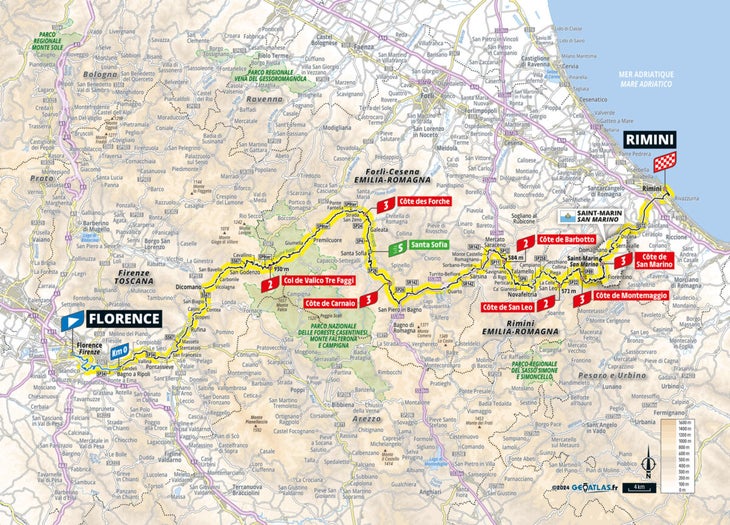
Tour de Romandie 2024 : à quelle heure et sur quelle chaîne voir la course ?
L'édition 2024 du tour de romandie se tiendra du mardi 23 au dimanche 28 avril et sera à suivre en direct et en intégralité sur la chaine l'équipe. retrouvez ici toutes les informations sur la diffusion..
Le Tour de Romandie 2024 est la grande étape de préparation avant le Tour d'Italie qui aura lieu du 4 au 26 mai.
L'épreuve débute ce mardi 23 avril par un prologue extrêmement court autour de Payerne (2,28 km), suivi de trois étapes en ligne, un contre-la-montre individuel et se conclut avec une étape en circuit à Vernier pour la cinquième et dernière étape.
Electrostal History and Art Museum

Most Recent: Reviews ordered by most recent publish date in descending order.
Detailed Reviews: Reviews ordered by recency and descriptiveness of user-identified themes such as wait time, length of visit, general tips, and location information.
Electrostal History and Art Museum - All You Need to Know BEFORE You Go (2024)
- (0.19 mi) Elektrostal Hotel
- (1.21 mi) Yakor Hotel
- (1.27 mi) Mini Hotel Banifatsiy
- (1.18 mi) Elemash
- (1.36 mi) Hotel Djaz
- (0.07 mi) Prima Bolshogo
- (0.13 mi) Makecoffee
- (0.25 mi) Amsterdam Moments
- (0.25 mi) Pechka
- (0.26 mi) Mazhor
Zurich Classic of New Orleans
Watch on espn+, mcilroy & morikawa teams, featured holes 3, 9, 14 & 17, taylor & fitzpatrick groups, featured hole #17, featured hole #9, theegala & schauffele teams, hardy & straka teams, latest golf videos, eric cole sinks hole-in-one on hole 5 at the zurich classic.
- Terms of Use
- Privacy Policy
- Your US State Privacy Rights
- Children's Online Privacy Policy
- Interest-Based Ads
- About Nielsen Measurement
- Do Not Sell or Share My Personal Information
- Disney Ad Sales Site
- Work for ESPN
- Corrections

IMAGES
VIDEO
COMMENTS
The Tour du Mont Blanc is a 168 km (104 mile) trail that goes around the Mont Blanc Massif and has a total height gain and loss of 32,000 feet (10,000m) depending on the variants you choose…that's the equivalent of climbing Mount Everest (without the high altitude of course). Mont Blanc isn't solitary. It's surrounded by a breathtaking ...
The full circuit takes you on a 170 km journey around the Mont Blanc mountain range accumulating 10,000m of height gain and descent. You will trek through three alpine regions within France, Italy and Switzerland, circumnavigating the mighty Mont Blanc which stands at 4810m. The route is generally done in an anticlockwise direction starting and ...
1. Les Houches to Les Contamines. 14km / 850m gain / 6-7 hrs. We started the Tour du Mont Blanc trail by opting for the more scenic and more difficult Miage variant, but then took the cable car out of Les Houches up to the Col de Voza - the first of two cable cars we took on the trek.
Circling the largest peak in the Alps, Mont Blanc, the trail covers 170km (105 miles), climbs more than 10,000m (32,800ft) in cumulative altitude, and weaves through three Alpine countries: France, Italy and Switzerland. Typically, the route begins and ends in Les Houches, France, and follows a counterclockwise loop around the mountain range.
The Tour du Mont Blanc is a 170 km trekking trail through France, Italy and Switzerland. Circumnavigating Western Europe's highest mountain, Mont Blanc, it is one of the world's classic multi day treks and is on every serious hiker's bucket list. Tour du Mont Blanc Hike is a blog dedicated to all aspects of the famous Tour du Mont Blanc ...
The Tour du Mont Blanc (TMB) is a captivating multi-day hike that circuits the Mont Blanc massif in usually 10-11 days, passing through France, Italy and Switzerland. The main Tour du Mont Blanc route is 170 km (105 miles) long and involves 10,080 meters (33,071 feet) of elevation gain and loss. The Mont Blanc mountain range takes its name from ...
Tour du Mont Blanc Hiking - Routes, Maps and Itineraries. The Tour du Mont Blanc is a 170 km trek that encompasses the whole of the Mont Blanc Massif; with nearly 10 000m of cumulative descent and ascent it is usually completed in a number of days. The TMB has a variety of accommodations along its way (hotels and mountain huts with possibility ...
Overall Tips for Day 1. To fastback-like we did, take the cable car from Chamonix to Brévent, hike down to Les Houches, hop on the train from Les Houches to Saint Gervais, and then a bus from Saint Gervais to Les Contamines. Total public transport costs per person are about 33 euros per person.
The Tour du Mont Blanc or TMB is one of the most popular long-distance walks in Europe. It circles the Mont Blanc massif, covering a distance of roughly 165 kilometres (103 mi) with 10 kilometres (6.2 mi) of ascent/descent and passing through parts of Switzerland, Italy and France. It is considered one of the classic long-distance hiking trails ...
This 112 mile / 180 km loop of Mont Blanc, Europe's highest mountain, involves nearly 6.2 miles / 10 km of ascent and descent, runs through three countries (France, Italy and Switzerland), and crosses six major cols along the way. It is also the trip of a lifetime, as Charlie Boscoe explains. There are higher peaks out there, and every other ...
Tip #12: Carry enough water every day. During the summers it can be quite warm in the Alps so it is important to carry enough water. It's recommended to take between 1.5 to 3 liters of water on each daily trek. You can take at least two lightweight 1-liter bottles or a hydration reservoir to carry your water.
Expect to be on the trail between 7-9 hours a day if you're hiking one stage per day which means you'll be setting off 7.30-8.00h and arriving between 16-17h. Don't just look at the kilometres involved in each stage. More seriously you need to take into account the elevation gain (and loss) each day.
The history of the Tour du Mont Blanc. There is a long and rich history behind the Tour du Mont Blanc hike. First attempted by "Horace Benedict de Saussure" in 1767, the trail was walked by Roman soldiers and Celtic tribes who used the "Col Du Bonhomme" as a trade route, as well as shepherds who would move their herds between the valleys.
Tour du Mont Blanc Statistics. Distance Total: 105 miles (170 kilometers). Total Elevation Gain : 8,900 meters (29,200 feet). Total Elevation Loss : 9,100 meters (29,855 feet). Duration : 11 days. Physical Difficulty Level : High - the consistent elevation gain and loss requires hikers to be in good physical shape prior to the trek.
The Tour de Mont Blanc trail is 170km in length, and most people take between 6-12 days to complete it. It really depends if you want to power through the hike or take it at a leisurely pace! The Mont Blanc Guided Tour I signed up for with G Adventures was a total of 10 days in length. However, we only hiked for 7 of these days.
A quick bus ride or an easy valley walk brings us to our trailhead at Notre Dame de la Gorge, a small chapel at the very end of the valley rebuilt in 1699. Hiking up along an old Roman road, we continue the TMB tour with a long, steady ascent across two lofty passes, Col de la Croix du Bonhomme and Col du Bonhomme.
Wine, beer, coffee, and tea are popular options. The cost of food and snacks can add up quickly, so it's important to budget accordingly. The Tour du Mont Blanc Cost Breakdown Table shows that food and snacks can cost around $300 for a 10-day hike for two people on a budget travel option, and up to $1000 for luxury travel options.
For a quick trip to the Mont Blanc region, our Best of TMB tour is a fantastic week hiking from Courmayeur through Switzerland to Chamonix. Site Design Rebecca Pollock. Site Development Alchemy + Aim. The Tour du Mont Blanc is one of the best hiking tours in the world. This has always been our favorite stretch of the TMB.
Tour du Mont Blanc trail conditions 25th June 2023. Tour du Mont Blanc trail conditions 12 June 2023 ... 3 x B&B in Chamonix & Courmayeur, 4 x half board (B&B + 3 course evening meal) whilst on the tour. Bag transfer: Price depending on group size ... Col du Bonhomme, Col de la Croix du Bonhomme & the Col des Fours 2665m. Descending steeply ...
Nothing beats the world-famous Tour du Mont Blanc trek! In just 12 days we'll get to do it all: enjoy views of impressive glaciers, reach some +8,200ft mountain passes, and hike through some screensaver-worthy Alpine meadows, all around the highest peak of Western Europe. Between that morning espresso shot and the evening glass of French wine ...
Scottie Scheffler's fourth victory in his last five tournaments will have to wait one more day. With the 2024 RBC Heritage experiencing more than a 2.5-hour weather delay Sunday, tournament action ...
RIO DE JANEIRO, Brazil - Known as Brazil's wonderful city - ' Cidade Maravilhosa' - Rio de Janeiro provides a one-of-a-kind setting for the 69 th playing of the ECP Brazil Open, the ...
Hitch hiking is possible right from Petropavlovsk-Kamchatsky to the very north of the peninsula. Alternatively, vehicles can be hired in Petropavlovsk-Kamchatsky from tour firms. Also in the winter or early spring months places can be reached that are away even from the zimniki, either by snowmobile or by the use of cross country skis.
The leaders will usually have scouted the hike ahead of time and can generally answer questions regarding the particular hike. Every Leader has its own "style" of leading. The average number of hikers is around 5 to 50 hikers. Some hikes include special activities, such as swimming or sightseeing. The usual pickup time is half past 9.
And, of course, more history in one street corner than in many entire towns. This tour of Moscow's center takes you from one of Moscow's oldest streets to its newest park through both real and fictional history, hitting the Kremlin, some illustrious shopping centers, architectural curiosities, and some of the city's finest snacks. Start ...
The 1998 Tour de France winner Marco Pantani died in Rimini in 2004, with this year's Tour taking place 20 years after that tragic event. The view of Tour de France race director Christian Prudhomme: "It's rare for the Tour de France to start with more than 3,600 meters of climbing — in fact it's never happened before! — and it's ...
L'édition 2024 du Tour de Romandie se tiendra du mardi 23 au dimanche 28 avril et sera à suivre en direct et en intégralité sur la chaine L'Équipe. Retrouvez ici toutes les informations sur ...
Price per person. 641,69. View details. About the tour Reviews 10. 8 days / 7 nights. St. Petersburg Moscow. We offer you a unique opportunity to visit Russia's two largest cities, Moscow and St. Petersburg. This fascinating, week-long tour will take you to the historic Russian capitals that have always played the most important part in the ...
Art MuseumsHistory Museums. Write a review. Full view. All photos (22) Suggest edits to improve what we show. Improve this listing. The area. Nikolaeva ul., d. 30A, Elektrostal 144003 Russia. Reach out directly.
Visit ESPN to view the Zurich Classic of New Orleans golf leaderboard with real-time scoring, player scorecards, course statistics and more